

EXCLUSIVE HINO 700 IS JUST SO RIGHT GOING FOR IT DRIVING RENASCENCE TRUCKERS REUNITE Long Haul Publications $10.90 Includes gst 9413000047578

do big things. technicians & APPRENTICES WANTED.
IT’S NOT ROCKET SCIENCE. BUT IT’S CLOSE.
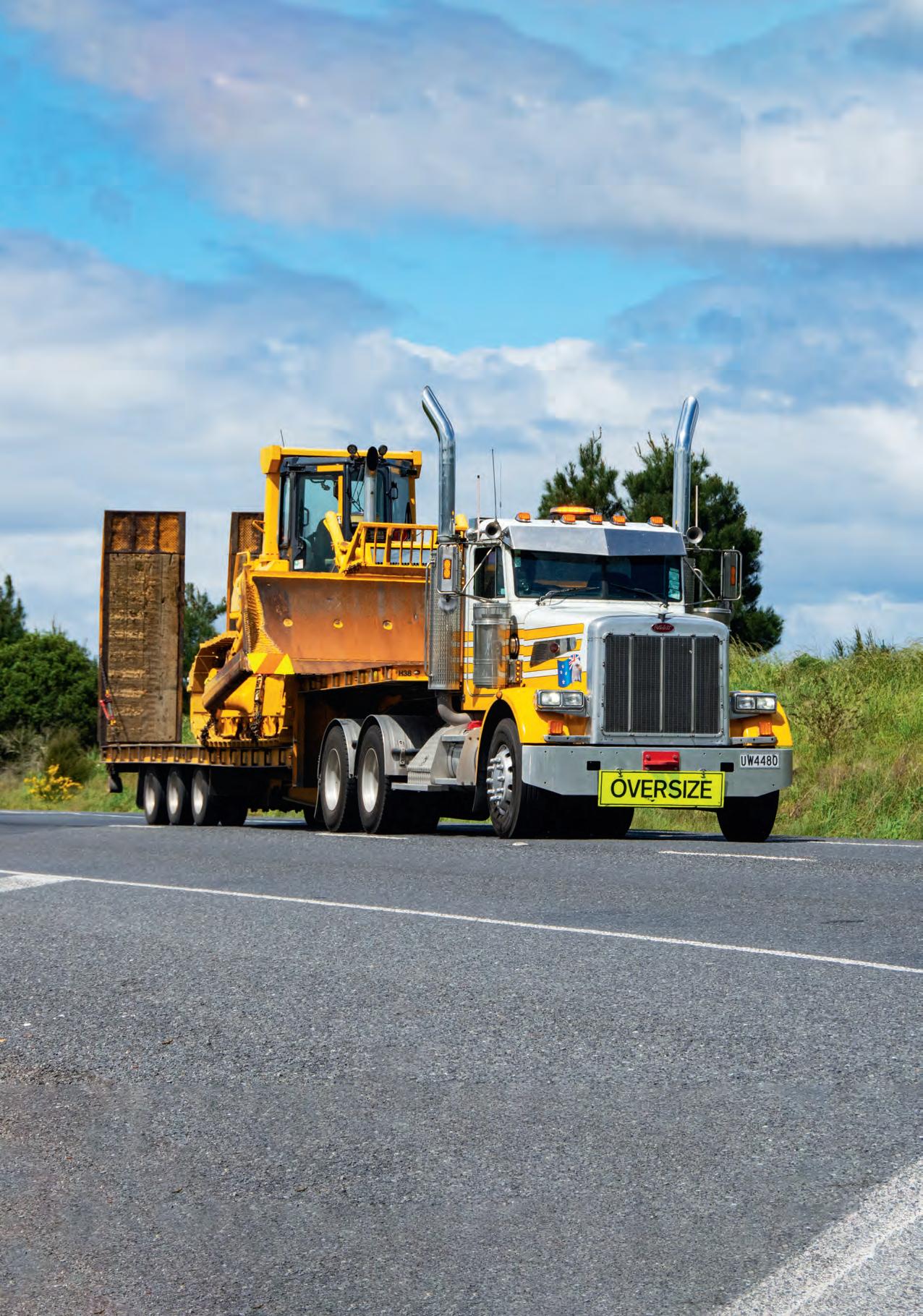 One of Porter Heavy Haulage’s Peterbilts, a 357, on the Taupo bypass.
Photo: Craig McCauley.
One of Porter Heavy Haulage’s Peterbilts, a 357, on the Taupo bypass.
Photo: Craig McCauley.
EDITORIAL DIRECTOR
Dave McCoid
Ph: 027 492 5601
Email: dave@nztrucking.com
EDITOR
Gavin Myers
Ph: 027 660 6608
Email: gavin@nztrucking.com
FIELD EDITOR
Carl Kirkbeck
Ph: 021 760 766
Email: carl@nztrucking.co.nz
For all advertising enquiries:
Matt Smith
Ph: 021 510 701
Email: matt@nztrucking.co.nz
Pav Warren
Ph: 027 201 4001

Email: pav@nztrucking.co.nz
SUB EDITOR
Tracey Strange
CONTRIBUTORS
Craig Andrews
Marty Crooks
Faye Lougher
Craig McCauley
Jacqui Madelin
Alison Verran
Mike Verran
Shannon Williams
Niels Jansen (Europe)
Paul O’Callaghan (Europe)
Howard Shanks (Australia)
Will Shiers (UK)
VIDEO PRODUCTION
Jonathan Locke
Izaak Kirkbeck
Milly McCauley
Howard Shanks
PRODUCTION MANAGER Ricky Harris
ART DIRECTOR
John Berkley
DIGITAL IMAGING
Willie Coyle
DIGITAL MANAGER Louise Stowell
OFFICE ADMINISTRATION
Georgi George
PUBLISHER
Long Haul Publications Ltd 511 Queen Street, Thames 3500 PO Box 35, Thames 3500
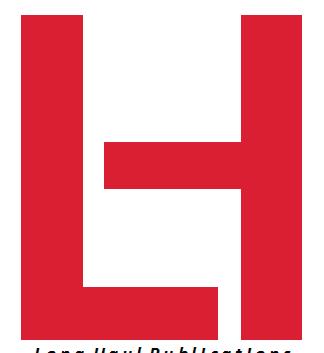
New Zealand Trucking magazine is published by Long Haul Publishing Ltd. The contents are copyright and may not be reproduced without the consent of the editor. Unsolicited editorial material may be submitted, but should include a stamped, self-addressed envelope. While every care is taken, no responsibility is accepted for material submitted. Opinions expressed by contributors are not necessarily those of New Zealand Trucking or Long Haul Publishing Ltd. All rights reserved. This magazine is subject to the New Zealand Press Council. Complaints are to be first directed to: editor@ nztrucking.co.nz with “Press Council Complaint” in the subject line. If unsatisfied, the complaint may be referred to the Press Council, PO Box 10 879, The Terrace, Wellington 6143 or by email at info@ presscouncil.org.nz
Further details and online complaints at www.presscouncil.org.nz
SUBSCRIPTIONS / RATES:
6 months (6 issues) $52
One year (11 issues) $99
Two years (22 issues) $175
1 Year Australia (11 issues) $198
ABC Audited circulation 7092 as at September 2017
Nielsen audited readership 74,000 average per issue, Q4 2021 – Q3 2022

www.nztrucking.co.nz/shop/
Post: NZ Trucking Subscriptions PO Box 12028, Hamilton 3248
Ph: 0800 truckmag (878256)
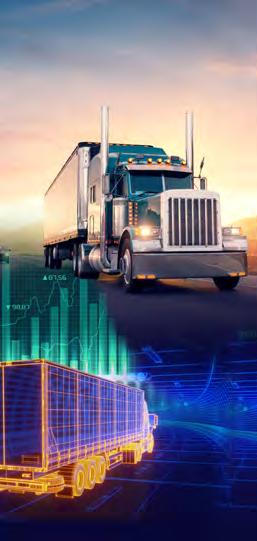
38 42 48 68
YESTERYEAR YARNS
Those Were the Days
LIKE YOU’VE NEVER DRIVEN BEFORE Driving the eActros

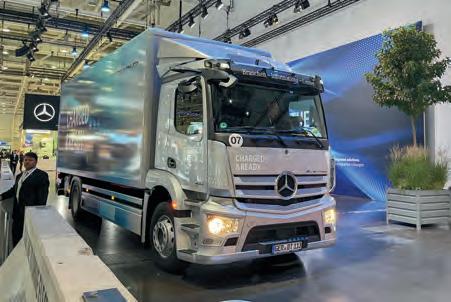
CELEBRATING IN STYLE New 700 Done Right
CLARENDON KENWORTH KLASSIC Kenworth Celebration Returns


100 Moving Metrics 104 Incoming Cargo –Balancing batteries 106 Better Business –Eyes Up NZ launch 108 Product Profile –NAPA 110 Road Ahead Conference 112 IRTENZ Conference 116 Carriers’ Corner 118 Truckers’ Health –Stroke and truckies 120 Health & Safety 122 Legal Lines 124 Business, Together 126 NZ Trucking Association 128 Transporting New Zealand 130 The Last Mile BROUGHT TO YOU BY CONTENTS 6 Editorial 8 Road Noise – Industry news 46 Up Close and Almost Personal – eCanter gen 2 52 Just Trucking Around 56 Afterlifer – UD’s little battler 60 Light Commercial Test –Big, bad Silverado 64 Trucking Arts – Lights by night 66 Rust in Peace 74 International Truck Stop –Designing a DAF 76 New Rigs 82 New Bodies and Trailers 84 Million Mile Club 86 Wanaka Memory 88 Mini Big Rigs – Conroy Removals 92 Craig’s Trucking Snapshot 94 Little Truckers’ Club 96 What’s On/Cartoon REST THE


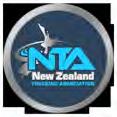
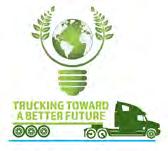



Official Sponsor Associate Member INTERNATIONAL TRUCK OF THE YEAR FFICIALMAGAZINEOFTHE WATCH THE VIDEO ON YOUTUBE EXCLUSIVE HINO 700 IS JUST SO RIGHT GOING FOR IT DRIVING RENASCENCE TRUCKERS REUNITE 20 SWITCH: ON! Moving to the Future
NEW YEAR, NEW…
POTHOLES
And just like that, we’re back, and our first issue for 2023 is on the shelves. Hopefully, this year will be a smoother ride – if only slightly. I’m sure I’m not the only person left feeling as though 2022 was two years in one. A lot was quickly crammed into only half a year or so of ‘normalcy’ after the government lifted the last Covid-19-related restrictions.

Over the break, I read an article quoting psychologist Naomi Holdt. She insightfully described how the heightened exhaustion felt at the end of the year could be attributed to not having started it “on a full tank” in the first place. She described 2022 as “fighting a hurricane”. Given that it took all of 19 days before New Zealand’s first big story of 2023 resigned itself to the nation’s news feeds, I suspect December did little to weaken our own local cyclone.
Whatever comes, though, 2023 will be the first full year ‘back to normal’ postpandemic, so I wish everyone the energy to make the most of it.
Through it all – as ever –trucks and trucking didn’t stop. So, to business –potholes… What a month of mudslinging January was for potholes.

It began on 28 December with a string of tweets by Transport Minister Michael Wood explaining away potholes in response to news reports, with examples of extreme weather, the National government’s double act of freezing maintenance spending and introducing HPMV permits, and the incumbent’s increased maintenance spend and simultaneous focus on reducing emissions.
Ia Ara Aotearoa
Transporting New Zealand responded on 15 January, calling for urgent action and funding by the government as potholes and road-quality issues reach record levels, saying that Waka Kotahi “has confirmed that the agency received a record number of complaints about vehicle damage caused by potholes in the first 10 months of 2022 (555 complaints compared with 421 in 2021).”

CEO Nick Leggett said: “It’s not just about road maintenance. We also need the government to recommit to new roading capacity to ease the strain on our existing network.
“We acknowledge that there are a number of factors beyond the current government’s control impacting our road network,
but the blame game isn’t going to fix the potholes and stop people’s vehicles being damaged.”
Indeed.
By 20 January, Waka Kotahi jumped on its soapbox to “correct the record” and revise Transporting New Zealand’s figures to 351 (2022) and 348 (2021) complaints about potholes and road surfaces, adding the figure of 555 “relates to compensation claims made for damage across a wide number of categories”.
“We accept the number of these complaints has increased. However, it is wrong to describe all of them as pothole complaints,” said Deborah Hume, acting general manager of transport services at Waka Kotahi.
But the association quoted complaints about vehicle damage?
Just three days later and with a new PM now on the cards, National Road Carriers CEO Justin Tighe-Umbers called for the newcomer, Chris Hipkins, to “prioritise fixing our roads by committing annual spend to cover all the road repairs needed”.

He also called for a 50-year roading infrastructure plan to be locked in out of political reach. “This will give road contractors a pipeline of work
and the confidence to invest in tooling up, delivering more roading for the dollar over the long-term.”
If only.
On a trip to Auckland in January, I decided to do a rough count of road issues on SH1 from the intersection with SH29 at Piarere to Manakau. I spotted 52 individual sections of damaged road – not just potholes – on the 140km northbount route. Accounting for the pristine 22km Hamilton bypass and roughly 4km of roadworks at Drury, that’s a damaged section of road every 2.2km.
In my mind, that’s a revealing illustration of the state of the nation’s major routes – especially in the North Island.
Yes, the associations are correct with their calls and suggestions. Yes, this government has increased maintenance spending, and yes, we know Waka Kotahi has to tackle the problem with one hand tied behind its back. Yes, we’ve heard it all before and are going around in circles. Maybe next year will start with the news of some actual actionable solutions.
If we survive the hurricane...
Gavin Myers Editor
6 New Zealand Trucking February 2023
TRUCK & LIGHT TRADE R COMMERCIAL EDITORIAL

Ph 0800 FORIVECO www.iveco.co.nz Straun Syme 027 434 0846 Sales – South Island David Didsbury 027 403 2035 National Fleet Manager Elliot Barnard 021 347 869 Sales-Lower North Island Pieter Theron 021 347 992 Truck Sales –Auckland Robbie Greenhalgh 022 1234 626 Sales - Waikato and Bay of Plenty
FIRST MILE DRIVEN
Always keen to add to the ‘BEV trucks
I’ve driven’ list, I attended the Volvo FL Elelctric launch event late last year at ‘The Shed’, Fonterra’s DC on Timberly Road, Mangere, in Auckland.
VOLVO FL ELECTRIC ARRIVES

Fonterra has snapped up the first electric Volvo truck on New Zealand soil. The Volvo FL Electric truck will undergo a sixmonth trial at the Fonterra Brands distribution centre in Mangere.
Fonterra Brands New Zealand managing director Brett Henshaw says that the new truck is an important step for the co-op as it looks to reduce emissions across its entire supply chain.
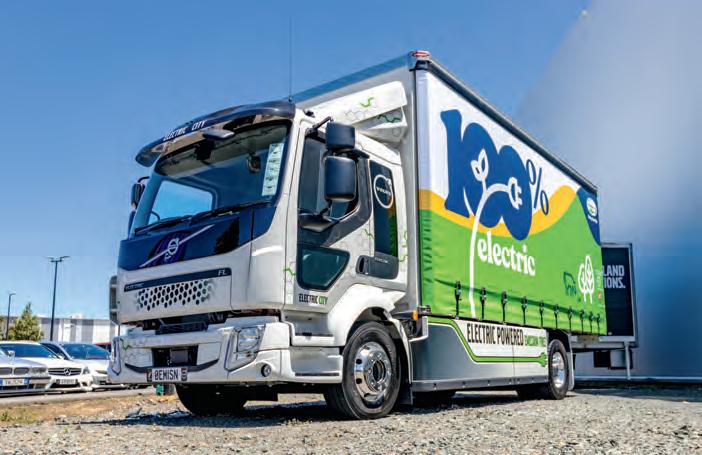

“Our objective is to fulfil our co-op’s long-term commitment to being a leader in sustainability while also upholding our customer commitments,” he says.
Paul Illmer, vice president of emerging technology business development at Volvo Group Australia, says Volvo has a battery-electric or fuel-cell electric alternative for every internal combustion engine model on the market, either currently in
production or at the trial stage.
He says the actual truck is only part of the solution regarding New Zealand’s transition to sustainable transport. “Selecting the right model and specification for application and route is critical, as is driver training, specialist aftersales support, and charging infrastructure,” he says.
The new truck is one part of Fonterra’s wider fleet decarbonisation journey. Last year, it implemented a new policy stating all light vehicles that can be electric should be transitioned when they are next replaced. Fonterra plans for more than 300 light vehicles to be electric by the end of 2023.
The co-op has also invested in its tanker fleet, adopting the latest technology in terms of efficiency and lower emissions. Early in 2022, Fonterra began trials of the first fully electric milk tanker in New Zealand.
Utilising Sime Darby’s mobile events centre, it short, sharp and to the point, with well-informed speakers, including Paul Illmer, the vice president of emerging technology business development at Volvo Group Australia. After ‘class’ time, there was a lengthy gallop around the local traps in the 16-tonne GVM Viking.
A low, easy-entry metro gig, the FL Electric is certainly a purposeful wee Volvo with the closest you’d get to a utilitarian interior flavour from the premier Swedish brand. That said, it’s utilitarian done well, with easy-clean quality materials in slightly sombre tones, still able to deliver a classy-if-colourless ambience (you know what I’m like on colourless cab interiors).
As you’d expect, everything you need to operate the good chariot – which isn’t much – falls easily to hand in the cockpit.
With Volvo’s driver trainer for New Zealand, Sean Webb, as chaperone, we powered her up and charged ahead.
The cooperative dairy giant intends to use the FL Electric on metro deliveries and inter-branch transfer work in the City of Sails. Having said that, the model is capable of up to 300km, so Hamilton-and-back with a quick zap for inhibiting your own Cortisol production at about Pokeno on the way home is well on the radar screen.
Typical of the breed, the FL Electric was whisper-quiet and super responsive, easily darting through the Mangere industrial hinterland. There’s no question our cities will become a lot quieter in the years ahead, and generally speaking, it must be a good thing.
The FL Electric will have no issue keeping pace on a motorway burst. In fact, like its brethren, it’ll likely set it.
The underlying BEV weight is always apparent when behind the wheel; in time, its seat-of-the-pants presence will become the new normal.
Driving past the ‘in’ gate, I executed a three-pointer in the street, getting a firsthand insight into the FLE’s nimble nature.
A BEV of European descent for chunky last- and first-mile tasks in the 21st century, it really is a no-brainer. (And it will be an issue for the hearing aid companies a few years down the track.) –
Dave McCoid
8 New Zealand Trucking February 2023 NEW MODELS ROAD NOISE NEWS
NEW WEIGH STATION TO BE BUILT AT RAKAIA
Asplit-site Commercial Vehicle Safety Centre, otherwise known as a weigh station, is being constructed on SH1 just north of the Rakaia River in mid-Canterbury. It is one of a dozen being rolled out nationally.
The centre is being built with facilities on both sides of SH1, so truck drivers need only to turn left in and left out. The southbound site works will start first, with the northbound site later in 2023. It is anticipated that both will be operational by the end of 2024. The northbound site is between Weavers Road and North Rakaia Road and the southbound site is on the opposite side of SH1 near

North Rakaia Road.
“All of these [new] sites are located on state highways where there are more than 1200 heavy motor vehicles per day,” says Waka Kotahi director of regional relationships, James Caygill.
The objectives of the Commercial Vehicle Safety Programme are to:
• Improve road safety by reducing the number of overweight vehicles travelling on our roads
• Increase heavy vehicle weight compliance without impacting upon productivity or imposing unnecessary cost on compliant vehicles
• Ensure that operators pay their fair share of road maintenance by targeting,
INNOVATIVE BUILT TO LAST MAXIMISE Your BOTTOM LINE
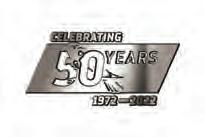
Mills-Tui steel tippers are innovative and built to last, manufactured tough from high-wear resistant steel. We’re ready to help build New Zealand’s infrastructure so gives us a call now on 0800 MILLS-TUI

and screening for, overweight vehicles.
“Enforcing weight restrictions and other forms of non-compliance, safe driving practices and road-ready
vehicles is an integral part of keeping all road users safe and protecting the road network from damage,” Caygill says.
Mills-Tui Limited | 0800 MILLS -TUI (645 578) mills-tui.co.nz
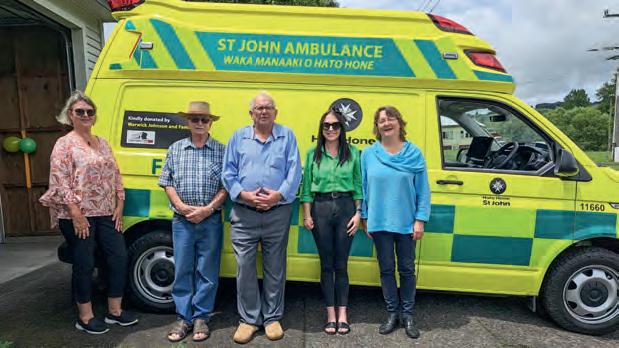

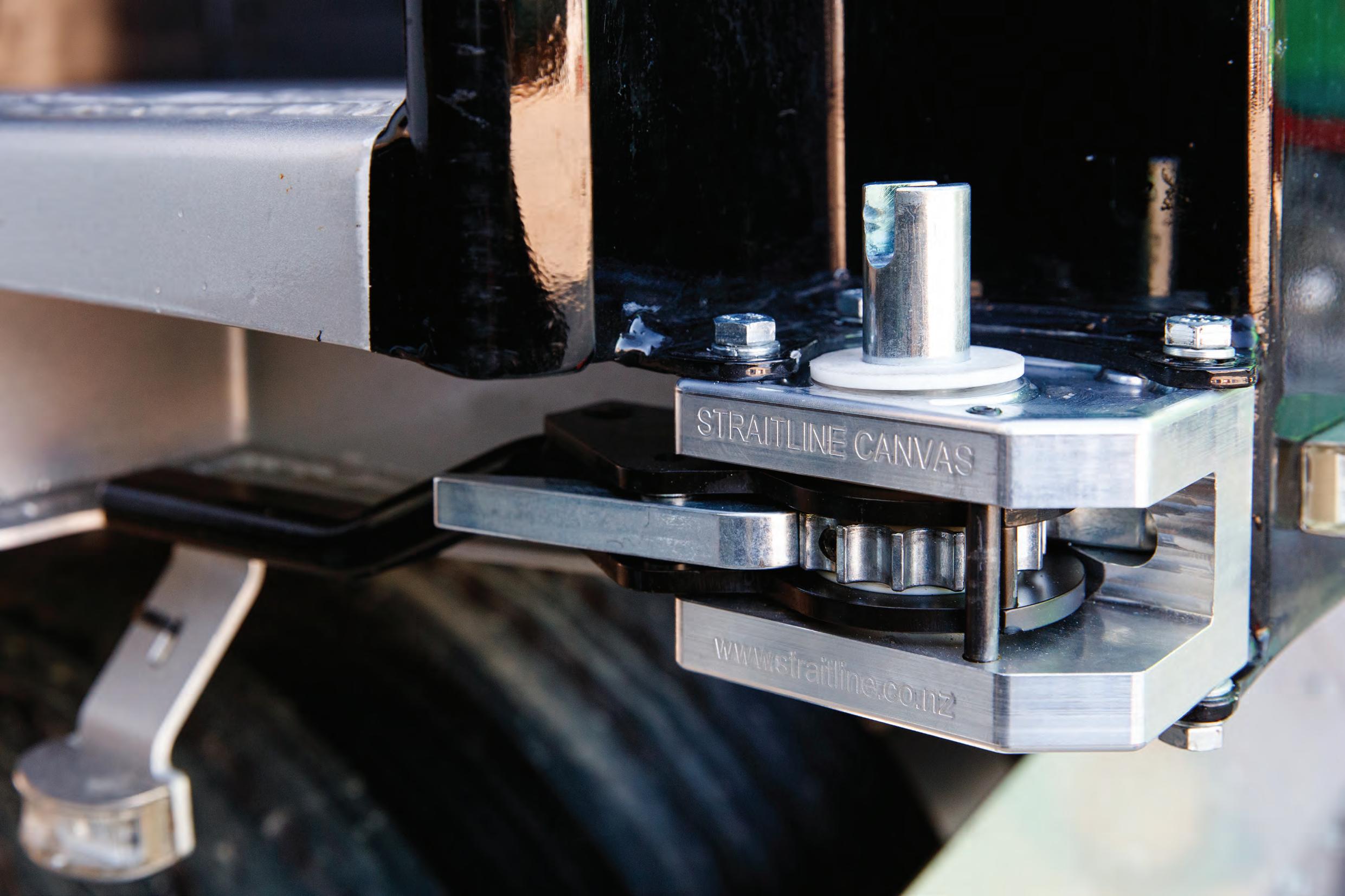



Buy online @ www.straitline.co.nz/tensioner Straitline Canvas. Buy online @ www.straitline.co.nz/tensioner Have you tried the Straitline® Tensioner? 0800 244 266 Buy online @ www.straitline.co.nz/tensioner Easy open handle, locks in release position. Tough milled aluminium body and steel handle. 3 bolt or 4 bolt. NZ registered design by Straitline ® Canvas. Have you tried the Straitline® Tensioner?
Will PROVE to be the HIGHEST TURNOVER truck in your Fleet

• The ‘RH’ is NZ’s LIGHTEST TARE CHASSIS, resulting in the HIGHEST PAYLOAD and PROFITS AVAILABLE.




• EXCLUSIVE ECAS 2nd STEER-AIR: Benefits in WEIGHT distribution, SOFT RIDE & drive axle TRACTION.


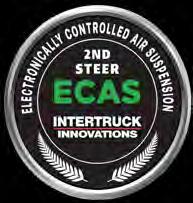
• RATED by DRIVERS AS THE BEST CONVENTIONAL for VISABILITY, TURNING CIRCLE and COMFORT.
LOWEST TRUCK TARE in NZ |
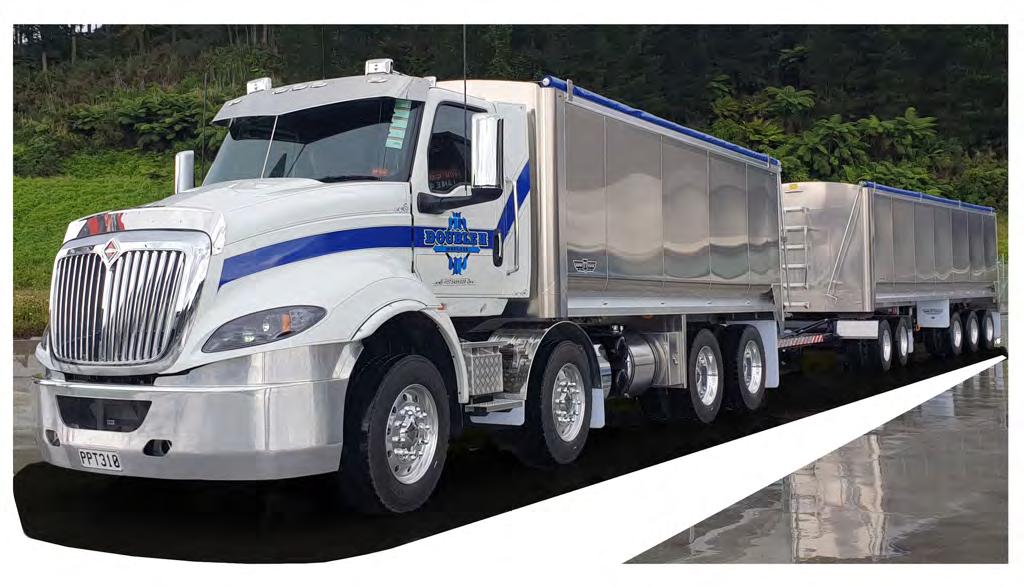
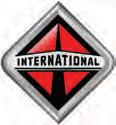
More PRODUCTIVITY | BIGGER PROFITS

121-0223 B UILTIN NE W ZEALAN D
MORE WAYS TO ENJOY TRUCKING RADIO 24/7
It’s now easier than ever to listen to Trucking Radio 24/7. The station, on air for six months, is now available via three new outlets in addition to the existing Trucking Radio 24/7 mobile app and website player.
The first of these is iHeart Radio. Users of this platform can search for Trucking Radio 24/7 to listen anywhere, anytime.
“Being accepted onto iHeart Radio is a great step for our young radio station,” says New Zealand Trucking Media’s Matt Smith. “We know many Kiwis already listen to radio stations and podcasts via iHeart Radio, whether on the road, at the office or at home. Now, they
can easily listen to Trucking Radio 24/7 via the iHeart Radio platform too.”

Trucking Radio 24/7 is also now linked to Amazon Alexa – another popular platform in homes and businesses around the country.
Alexa users can call up Trucking Radio 24/7 with phrases such as:
• ‘Alexa, play Trucking Radio’
• ‘Alexa, wake me up to Trucking Radio’ [which sets an alarm]
• ‘Alexa, play Trucking Radio everywhere’ [use with caution, as all speakers will start playing it]. Say, ‘Alexa, stop Trucking Radio everywhere’ to stop.
Last but not least, New Zealand Trucking Media

is proud to announce a partnership with CleanCo Truckwash Group. CleanCo will play Trucking Radio 24/7 at all six of its CleanCo Truckwash sites around New Zealand – Auckland, Highbrook, Tauranga, Palmerston North, Hamilton and Christchurch.
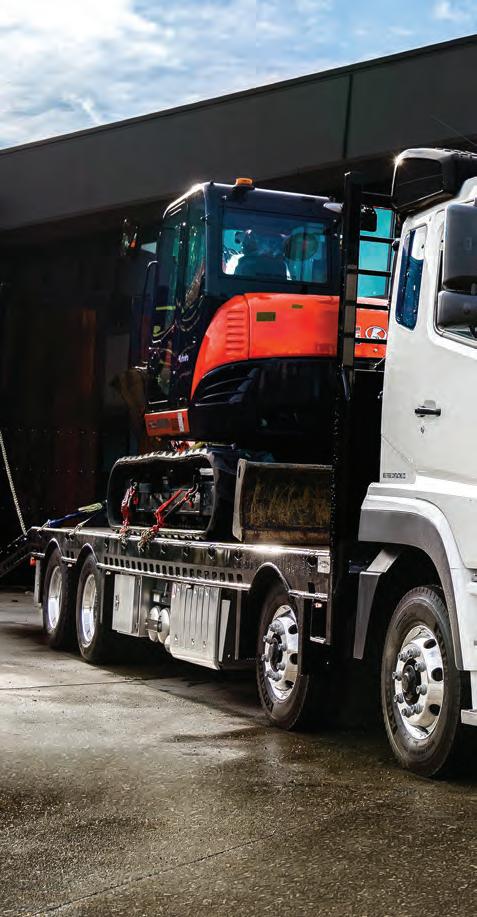
“We are glad to be able to play a radio station dedicated to the industry we are so much a part of. We think our customers will really engage with it,” says Richard Vincent, CleanCo Truckwash director.
Smith says having CleanCo play Trucking Radio 24/7 to the estimated 70,000 trucks the company washes annually gives the station and its advertisers further access
GET THE SUPER LOW DOWN!
The
to its core audience and is a testament to the station’s quality.
“We know how much our listeners enjoy the station, and it will be great that they’ll have some quality content to tune into while they’re getting their trucks cleaned up at CleanCo,” he says.
Scan below to download Trucking Radio 24/7 from the Google Play store and the Apple App Store, or listen on truckingradio.co.nz

ROAD NOISE NEWS
MITSUBISHI FUSO Authorised Distributor Fuso New Zealand Ltd www.fuso.co.nz SCAN HERE TO LEARN MORE!
Super Low 8x4 is specifically designed to maximise freight capacity and the ease and safety of loading of heavy equipment. It hauls low and steady with 8-litre 360hp or 11-litre 400hp engine options, full air suspension for a smooth ride, and FUSO’s most comprehensive suite of advanced safety features.
Shogun Super Low has the lowest factory-built 8x4 chassis on the market
FUSO AND SCANIA LEAD THE MARKET


Fuso has retained its standing as the top-selling truck brand in New Zealand, with 1250 sales and 20.7% market share in 2022.

The Fuso Shogun experienced a 70% increase in sales in the heavy-duty truck category, while the Fuso Canter continued its market leadership in the light-duty truck category.

“We are extremely grateful to our customers and humbled by the ongoing trust placed in our brand and our people,” says Fuso NZ managing director Kurtis Andrews.
Meanwhile, Scania New Zealand retained the No.1 position in

market share for heavy trucks for the third consecutive year.

Scania’s market share of 17.5% represented 512 heavy trucks registered last year – 72 more than in 2021.
Director of sales Deon Stephens says he is incredibly proud to achieve this only four years after establishing Scania’s official team presence in New Zealand.
Even though Scania only sells and supplies trucks over 16,000kg, the company also still ranks among the top five brands in New Zealand for volume of all new trucks and buses sold over 3500kg last year, securing 514 registrations.
MACK. THE LIFE.
IMMEASURABLE WORTH
There was more than a little frustration for the three authors of Mack. The Life. when global supply chain mayhem meant the eagerly awaited tomes just missed the Motor Truck Distributors’ (MTD) 50th birthday bash in Palmerston North last October. However, in the days following, the first precious copies arrived in the hands of their owners.
From big-fleet owner to
passionate enthusiast, Mack. The Life. has been a topic of discussion whenever likeminds have been gathered over the course of its five-year build-up. Without question, it more than honours the level of anticipation it garnered.

A 1041-page chronology in two volumes, Mack. The Life. depicts of the first 1040 Macks assembled at MTD in Palmerston North, with each truck’s ownership journey
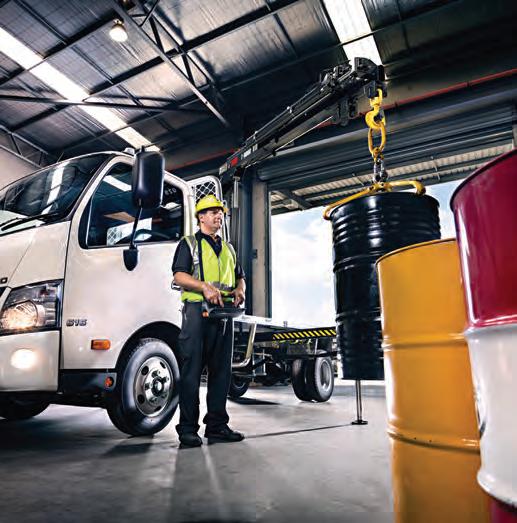

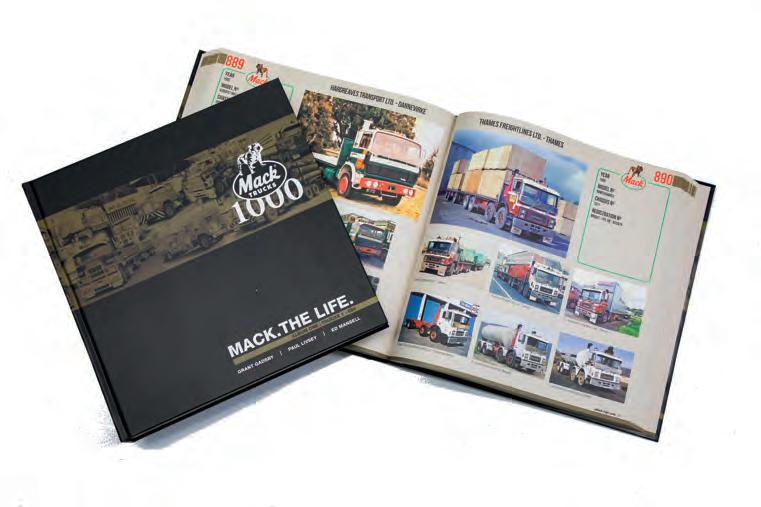
shown in images and/or words. What authors Grant Gadsby, Paul Livsey, and Ed Mansell have achieved cannot be overstated.
As staggered as I was by the magnitude of the task they set, I’m equally impressed by the result. To coin a famous phrase from one of the nation’s beloved first sons, they have indeed “knocked the bastard off”.
The worth of the volumes to
the recorded history of road transport in New Zealand is immeasurable.

Interestingly, the books provide another realisation. There’s nothing sadder than seeing the final photo of what was an iconic truck, now a pile of rusted steel, or a cab shell with the ghost of its once-invincible livery barely visable. On the other hand, there’s nothing better than finding one of the lucky
BUILT TO PERFORM
Hiab, the World’s


BOOK REVIEW ROAD NOISE NEWS
ones, a truck rescued and restored by a member of our genius restoration community. Mack. The Life. clarifies in the starkest possible way the debt of gratitude we all owe the restorers and the need to help them in any way we all can, regardless of marque.
To Ed, Paul and Grant, congratulations and thank you. And the same must also go to the restorers.
The industry owes you all an immense debt of gratitude.
When I last talked to Ed there were copies still available. I implore anyone passionate about New Zealand road transport to ensure Mack. The Life. finds a home on their bookshelf. No New Zealand collection will be complete without it.
Price $230.00
Contact: mansell@orcon.net.nz paul.livsey@trgroup.co.nz
USED TRUCKS NZ LAUNCHES
Motor Truck Distributors, Hino Distributors and UD Truck Distributors have joined forces to launch a new player in the New Zealand used-truck market – Used Trucks NZ.

The entity has been set up to provide a single, straightforward and reliable nationwide used truck and trailer sales service.
Led by newly appointed national sales manager Zane Ryan, Used Trucks NZ sees its mission as “taking the hassle out of buying and selling used trucks and trailers”.
Ryan has spent more
than 30 years associated with trucks and transport. His career includes nine years as regional manager for Truckstops, New Zealand’s parts and service franchise holder for Hino, Mack, and Volvo trucks.
“By leveraging the combined Volvo, Mack, Hino and UD Trucks sales teams, we aim to connect buyers with trade-in vehicles and to support sellers to find homes for mechanically sound second-tier units across New Zealand,” he says.
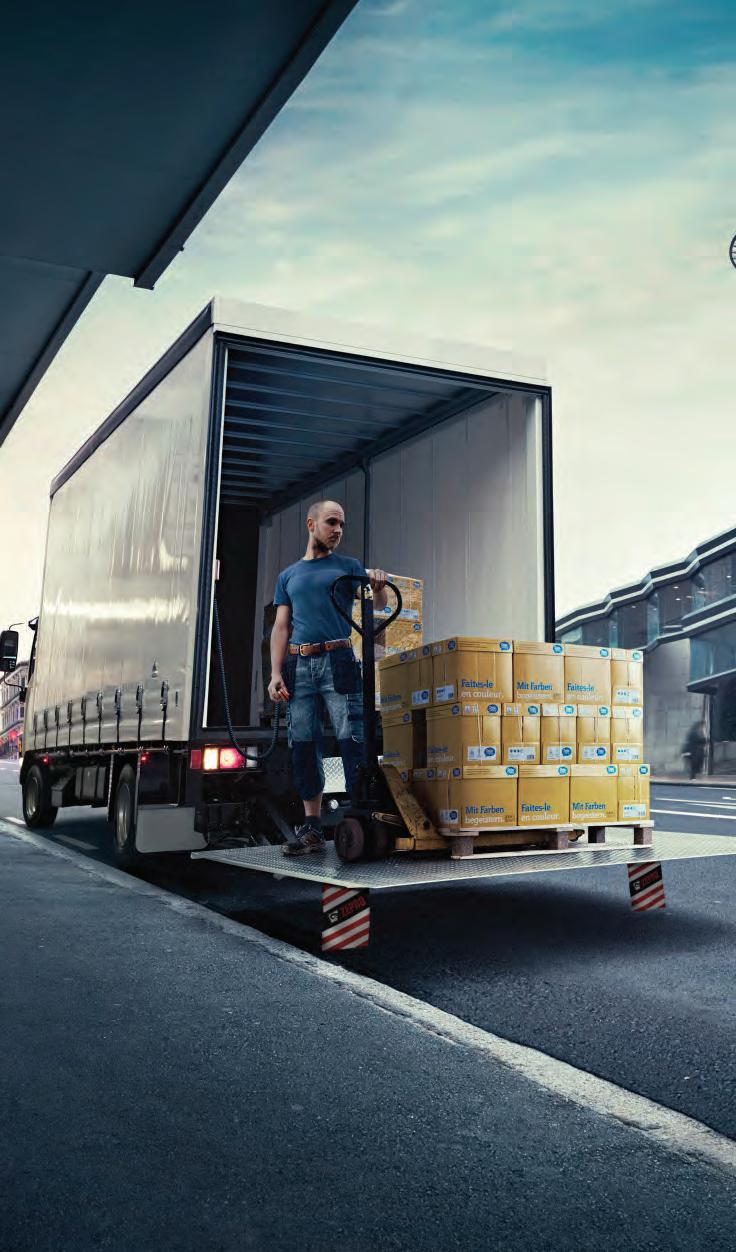

“Our national network of salespeople has access to a wide network of


contacts across every segment of the industry. We can take a lot of the time and hassle out of selling and buying a second-tier vehicle.”
A new website –usedtrucks.nz – is now live.
“We take care of the whole process if you’re looking to sell, and that makes us a great option,” says Ryan.
“Our sales teams are also more than happy to help customers find units that are not currently on the market. They are on the road, talking to customers across New Zealand every day.”
0800 518 006 www.trt.co.nz hiab@trt.co.nz
World’s Leading Provider of On-Road Load Handling Equipment
DB SCHENKER FIRST MAN ETRUCK CUSTOMER
International logistics company DB Schenker will add 100 new MAN eTrucks to its fleet by 2026, making it the eTrucks’ inaugural pilot customer.
The first eTrucks for DB Schenker will be handed over in 2024. The 10 MAN eTrucks
received will be ultra-tractor units. The other electric trucks to be delivered in 2025 and 2026 are planned as ultra-tractor units and swapbody trucks.

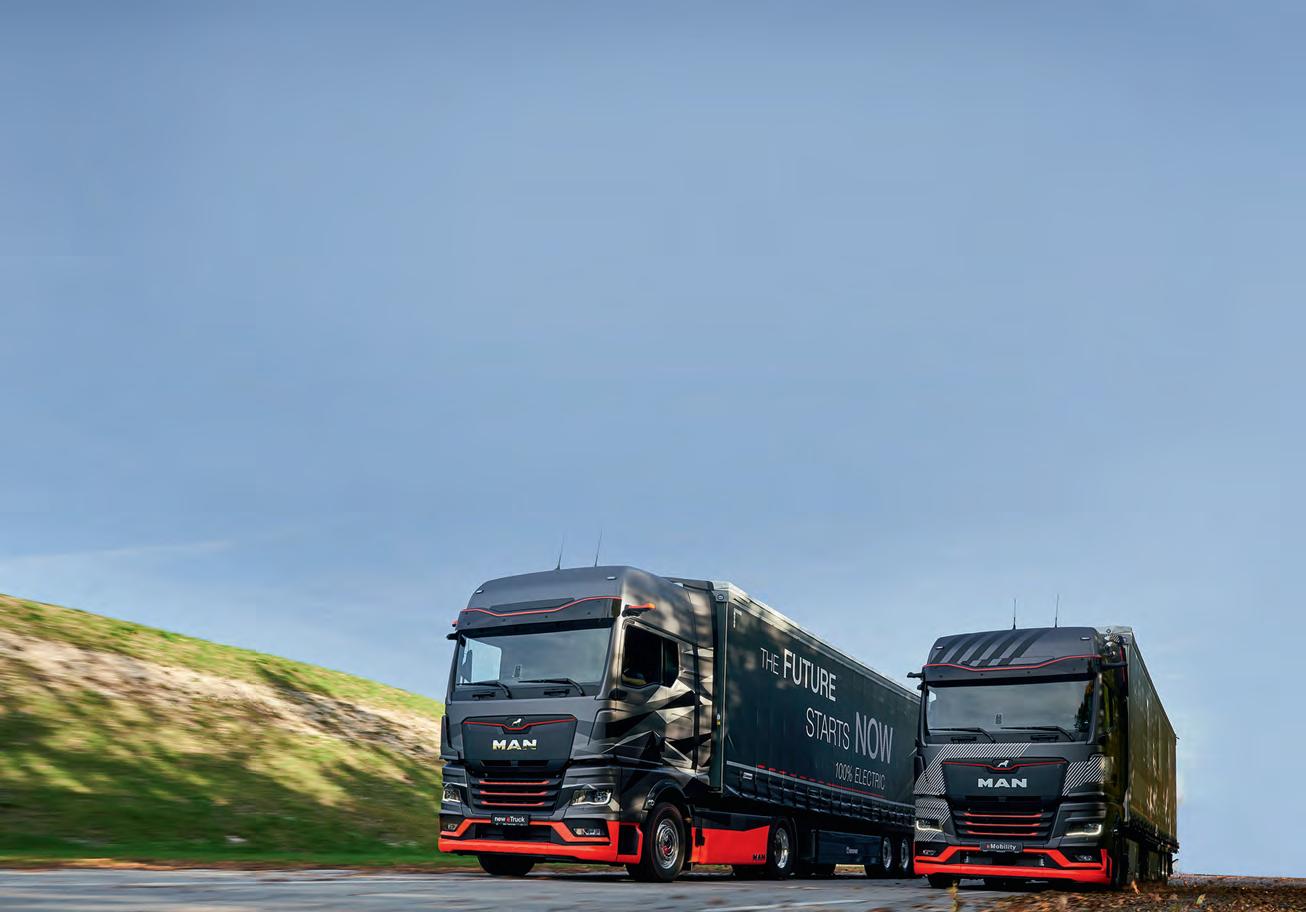
“We are very pleased to have our first customer for the new eTruck. The demand
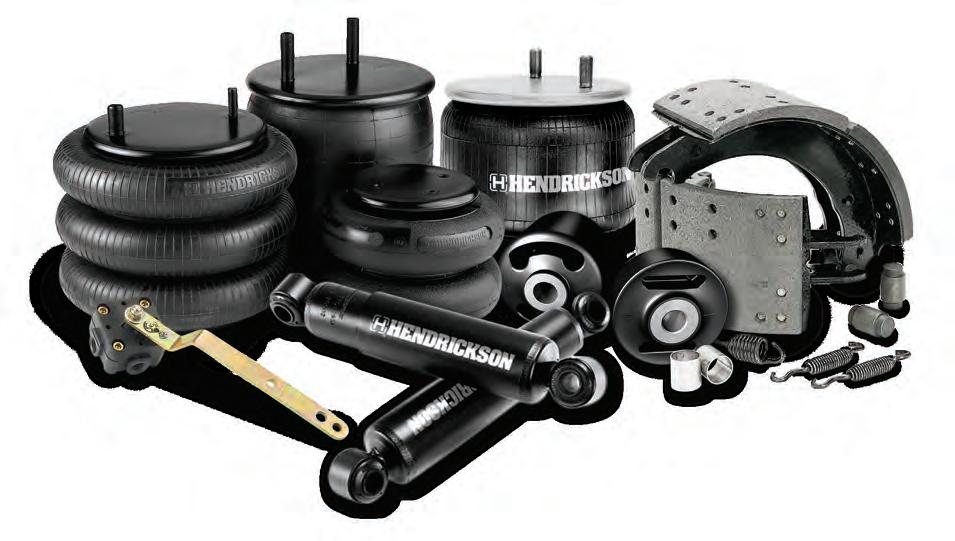
in the market for this fully electric vehicle is already enormous. The topic is now really picking up speed –also because more and more of our customers are setting themselves extremely ambitious decarbonisation targets. This has a direct
impact on the logistics chains,” says Alexander Vlaskamp, CEO of MAN Truck & Bus.

Cyrille Bonjean, head of land transport at DB Schenker Europe, says: “We want to build up practical experience with e-trucks as
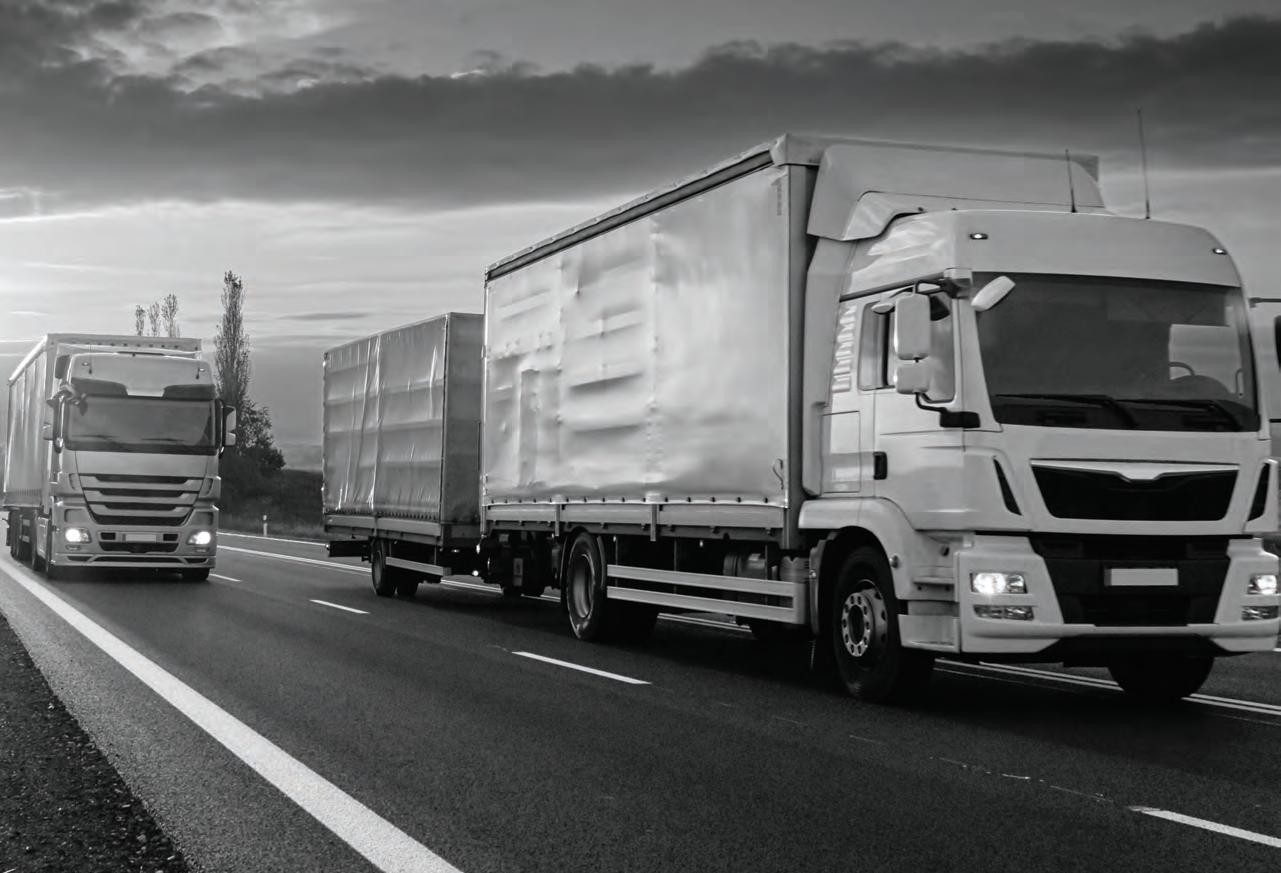
ROAD NOISE NEWS
Tel: +64 9 570 4721 www.hendrickson.com.au Actual product performance may vary depending upon vehicle configuration, operation, service and other factors. ©2022 Hendrickson USA, L.L.C. All Rights Reserved. All trademarks shown are owned by Hendrickson USA, L.L.C., or one of its affiliates, in one or more countries. Hendrickson Genuine Parts provide the same quality components installed in Hendrickson original equipment systems - designed, tested and validated as a system for greater component life, optimum performance and support to fleets working to maximize equipment uptime. ORIGINAL Parts Fit Performance Tel: +64 9 570 4721 www.hendrickson.com.au Actual product performance may vary depending upon vehicle configuration, operation, service and other factors. ©2022 Hendrickson USA, L.L.C. All Rights Reserved. All trademarks shown are owned by Hendrickson USA, L.L.C., or one of its affiliates, in one or more countries. Hendrickson Genuine Parts provide the same quality components installed in Hendrickson original equipment systems - designed, tested and validated as a system for greater component life, optimum performance and support to fleets working to maximize equipment uptime. ORIGINAL Parts Fit Performance
early as possible. This brings us another step closer to our goal of being net zero on the road in land transport by 2040.”
DB Schenker will set up its own charging infrastructure. It will utilise intelligent route planning and other digital services from MAN Digital Solutions, such as eManager, ServiceCare and MAN Driver App, and will have full support from MAN Transport Solutions, including route analysis, charging strategy, charging infrastructure planning and energy demand optimisation.


CLEANCO OPENS NEW TRUCKWASHING FACILITY
CleanCo Truckwash will open its latest site at Palmerston North in March. The new site is located next to the airport at Setters Line Milson.

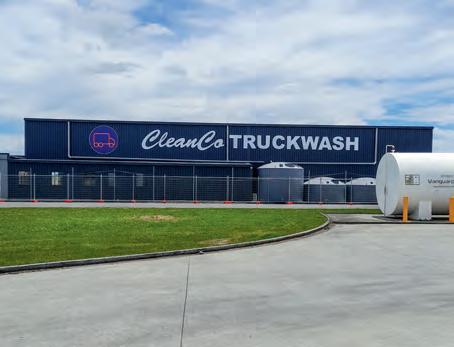
The site features three wash lanes and offers both hand and Karcher automated truck washing, tyre shine, sanitiser, and steam cleaning.
CleanCo operates nationwide, with facilities in Onehunga Auckland, East Tamaki Auckland, Hamilton, Tauranga, Highbrook, Christchurch, and now Palmerston North.


Jim Prendergast and his specialist crew will run the Palmerston North site. “We are currently running out of the TR site at Rangitikei Line, and the team is really looking forward to the shift to a new, bigger site next month,” Prendergast says.
“This new three-lane wash will serve our fantastic trucking customers in this highgrowth area hub of Palmerston North.”
LIGHTS CAMERA ACTION
In conjunction with the team at CDL Autoparts, New Zealand Trucking Media announces the start of the ‘Night Moves’ annual nightshot photo competition. Entry into the competition is easy and open to all New Zealand truckies. Simply take the best photo you can of your rig illuminated during the hours of darkness. The object is to show to to best of your ability just how cool the night bling on your rig looks. Remember, it is not always about the number of lights you have on your rig, it is also very much about placement as sometimes less is more.
“There has been a lot of effort in recent years amongst the ranks on the road at
night to take night bling to the max. It has become extremely competitive, so we put our heads together and mooted the idea of an official competition via our Facebook community and the response was colossal, a resounding yes was the clear answer,” said New Zealand Trucking Media field editor Carl Kirkbeck.
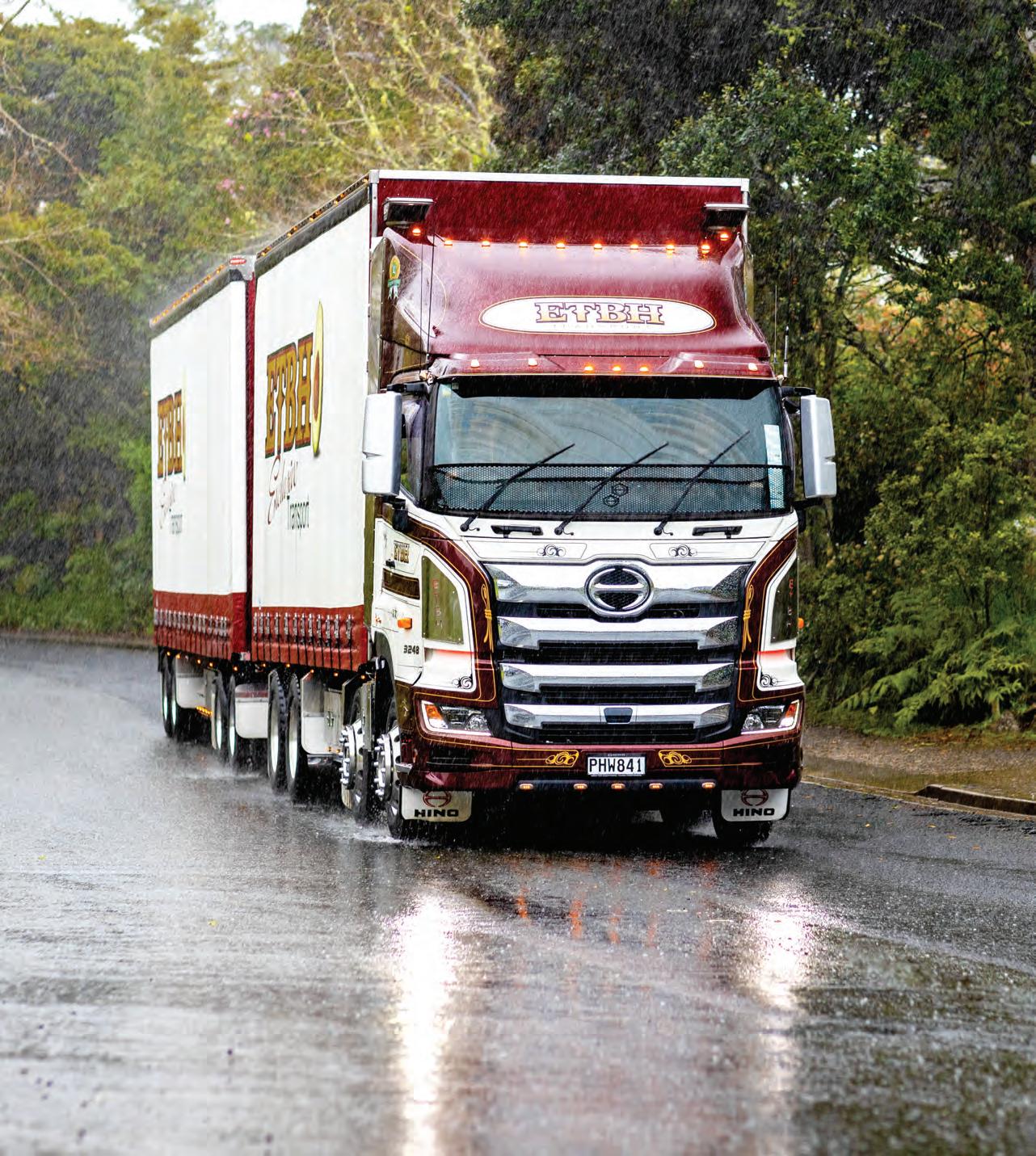

“Partnering with our friends at CDL Autoparts, New Zealand’s importerdistributor of Peterson Lighting, was the perfect match. The Peterson product has long been recognised as one of America’s leading manufacturers of quality LED heavy transport lighting solutions, and to add the
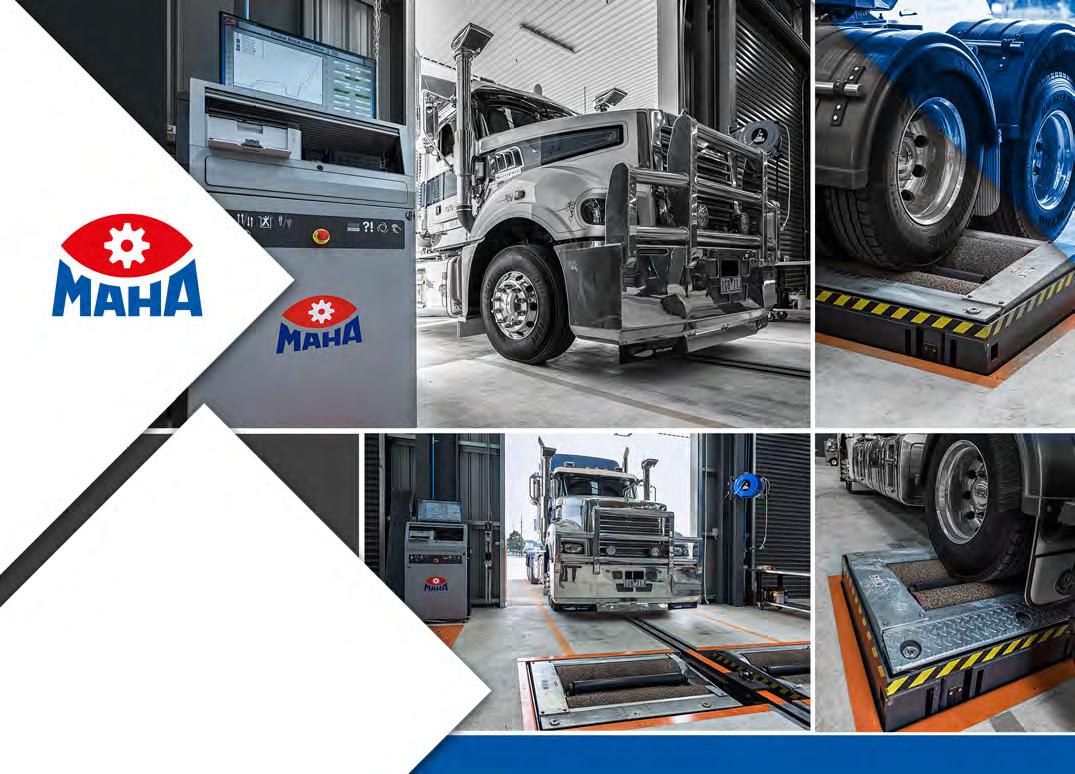
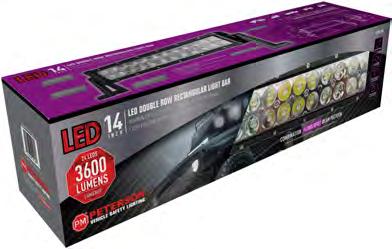
icing to the cake, CDL Autoparts director Robert Wood is generously supplying the prizes for our monthly winners.”
Email your photographs and contact details into carl@ nztrucking.co.nz. The judging panel’s decision will be final, and remember, if you do not win one month, keep entering as you might just win the
next. The first monthly winner will be printed in the March 2023 magazine and every month thereafter. Then at the end of the year we will put all the monthly winners to public vote, with a grand prize up for grabs as well as the prestigious title of Night Bling King or Queen. Don’t hold back, get into it, and best of luck!
ROAD NOISE NEWS
MAHA New Zealand Toll Free: 0800 624 269 Email - Admin@Maha.co.nz BDM: Bruce Hundley Mob: 021 344 351 MD: Mick Lauster Mob: +61 419 587 210 PREMIUM WORKSHOP EQUIPMENT www.maha.co.nz NZT172-1 WIN!
PETERSON NIGHT MOVES PHOTO COMPETITION



THE NEW HINO 700 SERIES STRENGTH WHERE IT COUNTS TALK TO OUR TEAM TO SECURE YOURS 0800 367 446 | HINO.CO.NZ/HEAVY-DUTY Leading edge truck design meets world-class quality and reliability. Underwritten by Toyota, the world’s most successful car manufacturer, the new Hino 700 Series is strong across the board with advanced features that actively support safety, driveability, and performance.
SWITCH : ON!
Story
In November 2022, Auckland-based Reliance Transport took delivery of two Scania 25P electric trucks. The first two electric Scanias on New Zealand’s roads, their operation with Reliance is noteworthy as they are part of the company’s usual replacement schedule – meaning they’re expected to go to work and keep working like any other truck before. Significantly, they’re also part of a much bigger company initiative to manage energy usage and leave a legacy future generations can be proud of.
 photos and videos by Gavin Myers, Dave McCoid and Carl Kirkbeck
photos and videos by Gavin Myers, Dave McCoid and Carl Kirkbeck
20 New Zealand Trucking February 2023 COVER FEATURE
Split between its two yards on Ash Road in Wiri and the Onehunga Wharf, Reliance Transport is a hive of activity. The Auckland-based company’s primary activity – comprising 70% of its revenue – is container cartage, and you don’t have to go far in Auckland to come across one of its distinctive yellow and black trucks. The other 30% of the business is flat-deck cartage.
Despite all the comings and goings and constant flow of containers, the company comes across as rather unassuming… just a mainstay of the Auckland transport scene – as it’s been for six decades – with straightforward facilities and a pragmatic pair of brothers making sure things happen. However, that pragmatism means there’s much more going on behind the scenes than first meets the eye.
Pay closer attention to the trucks as they rumble past the yards’ boom gates, and you’ll notice they’re all
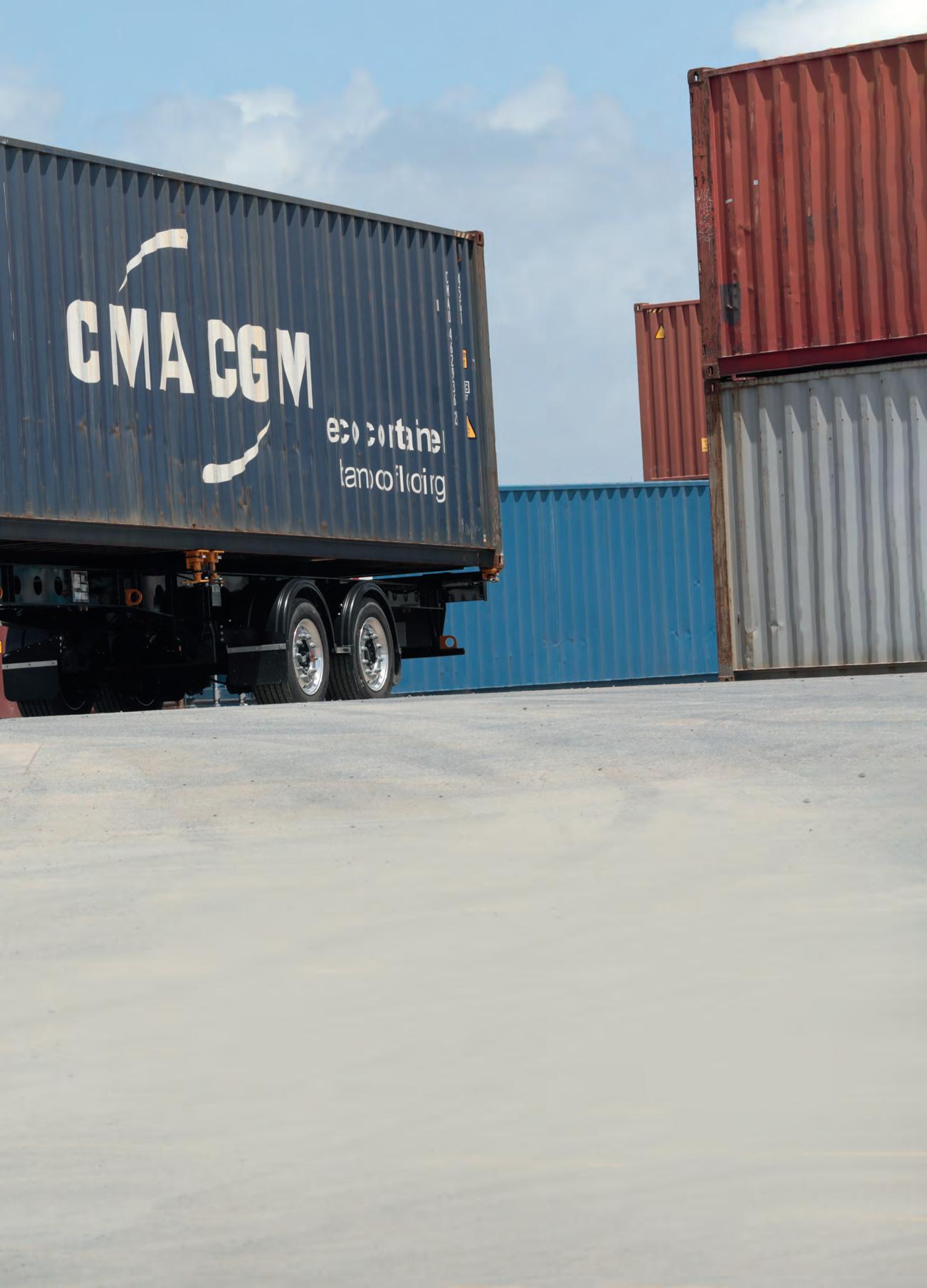
Euro-6 models from within the Daimler stable. A four-year replacement cycle to keep the fleet as up-to-date as possible has long been company policy to maintain ultimate uptime and efficiency, and in November last year, the last two Euro-5s were replaced. With that came the introduction of Scania to the Reliance Transport fleet. And as you’d have realised by now, the first two to don the yellow and black are not just any Scanias…
By the time the 25P had been introduced to the New Zealand market in mid-2022 (New Zealand Trucking, July 2022), Scania New Zealand had found a suitable fleet in Reliance to demonstrate the capabilities of its new electric trucks. Reliance had already explored some of the options in the market, but the company really wanted the choice of factory-backed units before taking the plunge.
“We thought, ‘Let’s just relax and wait,’” explains director Mark Darrah.
“It’s not just the vehicle you need to think about. You must be able to trust the back-up and service. Scania owns their distribution, so partnering with them was a no-brainer.”
Mark and brother Grant (operations manager) dealt with Alfons Reitsma, senior product engineer of pre-sales at Scania New Zealand. With his offer, they approached EECA for co-funding. The target date to have the trucks on the road was February 2023, so achieving that three months ahead of schedule – including the stinger setup and twin-axle skele trailer by Fruehauf – created smiles all around. The whole process took 15 months.
“The thing with the Scanias is they’re OEM trucks. We wanted a real truck doing real work,” says Mark.
The energy frontier
As we were to find out, the 25P certainly is a ‘real’ truck. In fact, by the time we left the Ash Road yard bound
New Zealand Trucking Februar y 2023 21
for home, we were bowled over – not only by the truck but also by what we’d learnt about the Reliance Transport operation. Understanding what brought the company to this point and the inspiring vision behind its journey puts the 25P into clearer perspective – so let’s explore ‘Project Switch’ before getting into what the 25P is all about.
“It’s a step change,” Mark says of Project Switch, the company’s five-stage programme for achieving carbon neutrality and ultimate
efficiency. The biggest challenge for an operation such as Reliance is energy consumption, and as Mark adds, that dictates the choices made when it comes to fleet replacement.
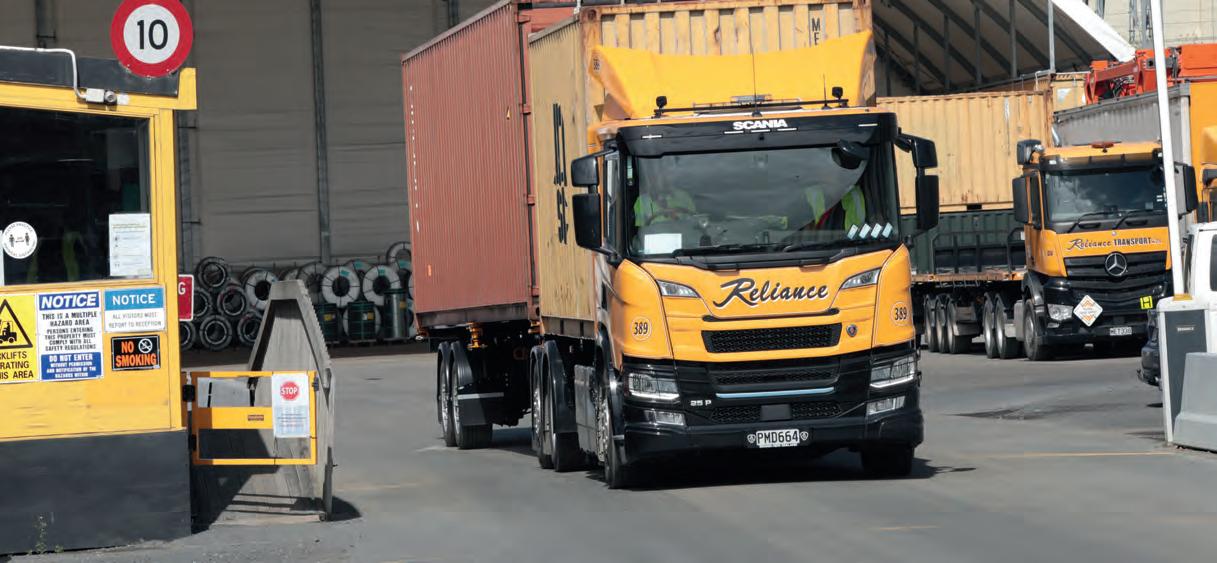
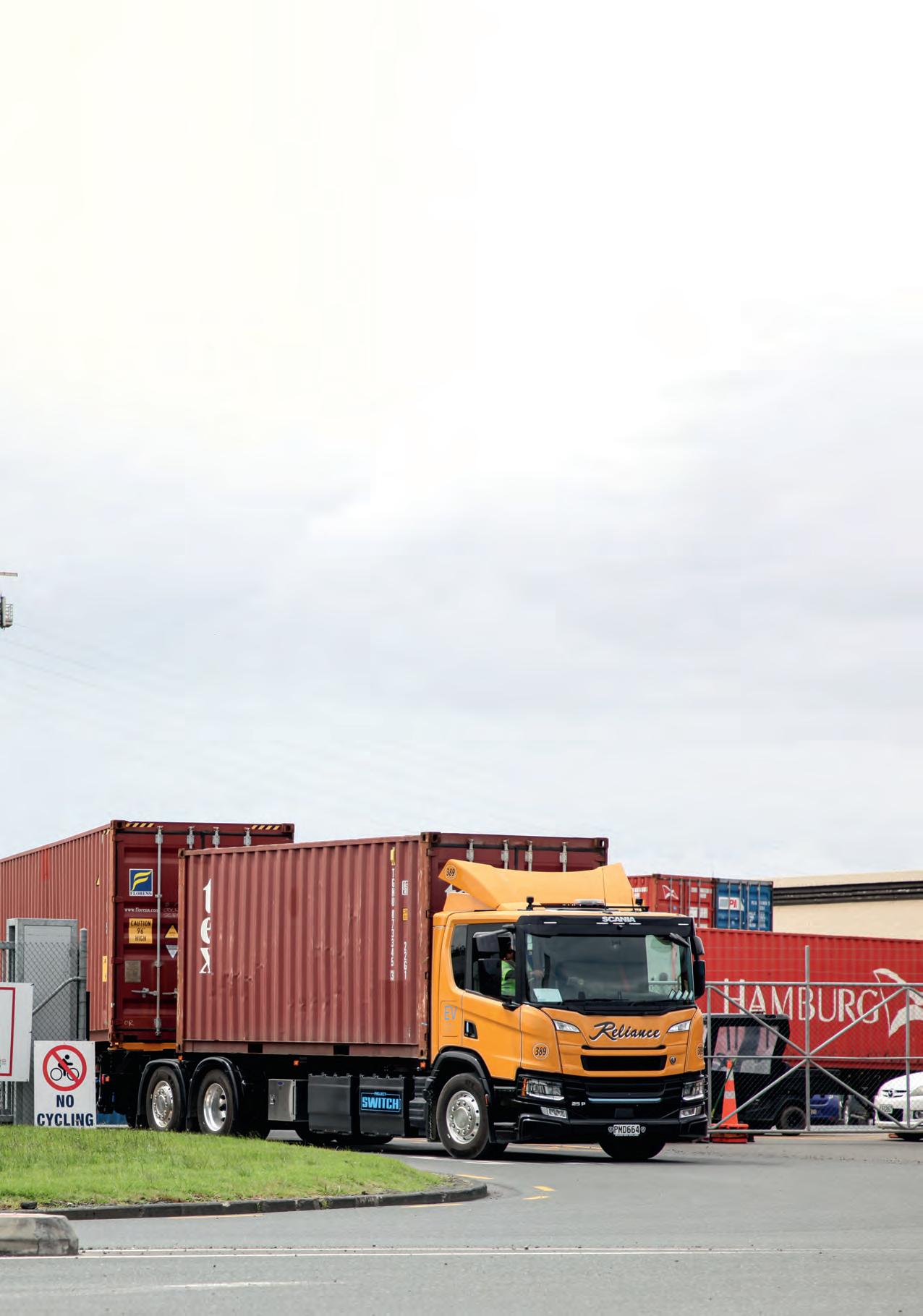
The four-year cycle might seem bafflingly short, but as Grant explains, it’s the sweet spot for Reliance. “That’s 15,000 hours on double shift, and that’s when they start having problems from all the stop-start and heavy traffic of a metro operation. Drivetrains, brakes, suspension, door
handles, seats… Even though the engines are still okay, it’s the magic number for our operation.”
With such a regular replacement cycle, all the trucks in the fleet are on an operating lease. “Lease prices haven’t really changed in the past few years. If an asset’s working life is less than five years, lease it. That also allows us to keep on top of the next generation of trucks,” Grant continues.
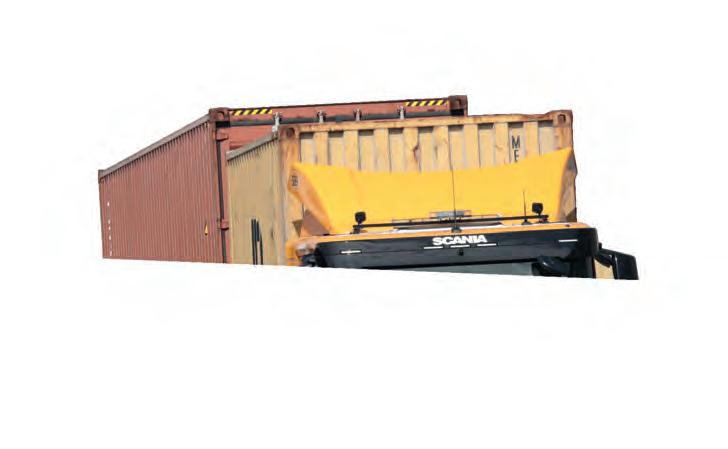
“The good thing about off-balance-sheet stuff is it
leaves on time and on budget, and you can organise your replacement trucks,” Mark adds, pulling up a slide illustrating the company’s replacement plan to 2029.
“With Euro-5, the service interval doubled and fuel was better. In Euro-6, service tripled and fuel was better still. The less diesel you burn, the cheaper it is… It’s dollars and cents – it’s efficiency. Our whole focus – as it’s been for the past 15 years – is to have the most energy-efficient trucks.
Passing through the gates at the Ash Road and Onehunga Wharf (below) yards.
“As our Euro-6 trucks are replaced, we’ll introduce cleaner technology. Our first Scania 560 Supers are coming mid-2023, which can run on biodiesel – but that’s to be worked out. By the end of 2023, we’ll replace our 4x2 tractors. The question is, ‘What do we replace them with?’
“That’s the challenge. We set to replace the lighter trucks first because those are the BEVs available. How we’ll replace an 8x4 tractor with a quad swing lift, I don’t know.
Big units like the 60-tonne B-trains… we’ll be stuck using [diesel] for a while,” Mark continues.
The company has two hydrogen trucks on order with TR Group, so there may be an answer in those. “But we’ll just transition every year. I envision about five units a year.”
In fact, introduction of battery-electric trucks is the third stage of Project Switch. Stage one was the introduction of four electric Nissan vans three years ago, followed by the first electric
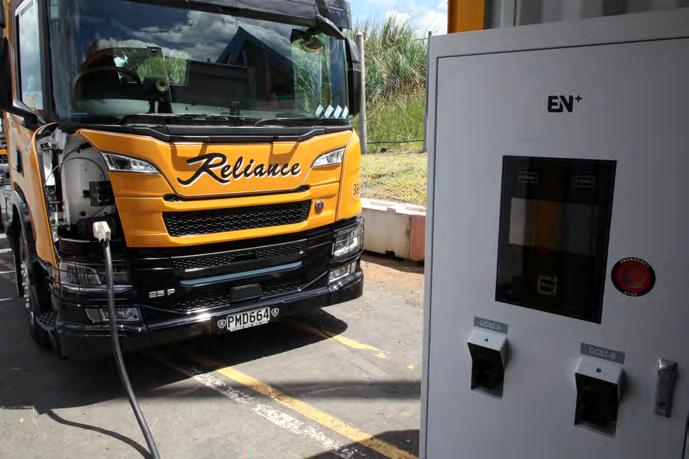
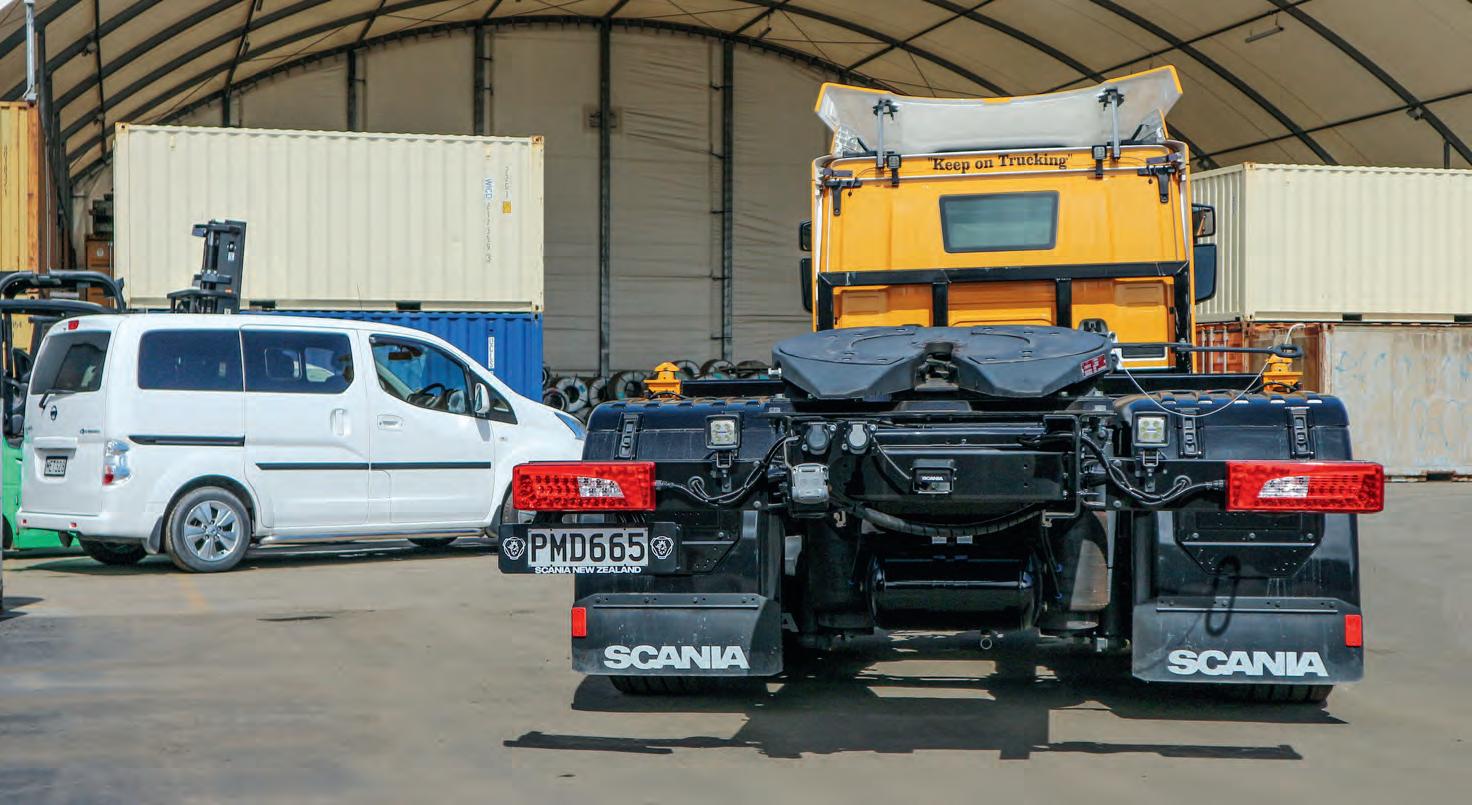
cars and four electric fork hoists. Stage two was getting the whole fleet of trucks to Euro-6. Stage three, as mentioned, is the introduction of electric trucks and the company’s first Sany electric reach stacker, which arrived for duty at the Onehunga Wharf last year and is already paying dividends for the company’s bottom line and social licence.
“The accommodation and residences across the road would complain about the diesel reach stacker operating

at all hours of the night, but we haven’t had any complaints since the electric one went into operation,” Mark says.
“I think it’s awesome – and I know what it cost!” he adds with a laugh.
Stage four of Project Switch is commissioning an on-site microgrid to power the chargers. “In reality, this is part of stage three because we can’t run the trucks without the infrastructure. You can’t run big chargers off the national grid – you need big transformers, and it costs too
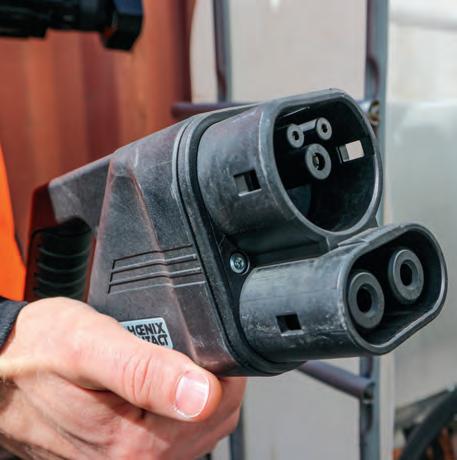 Left: CCS type 2 charger currently the standard fare for EVs. Right: 120kW charger adds about 40% battery charge in half an hour.
Electric vans, forkhoists and trucks make up the first three stages of Project Switch.
Left: CCS type 2 charger currently the standard fare for EVs. Right: 120kW charger adds about 40% battery charge in half an hour.
Electric vans, forkhoists and trucks make up the first three stages of Project Switch.
much money,” Mark explains.
“By 2028, we’re aiming for a greenfield site, the depot of the future for us. We need 4gWh (gigawatt hours) of energy to run our business, and that site will give it to us. It’s achievable. That’s the development in the States now. Solar in the day and low-current grid connection to trickle-charge batteries at night.”
The fifth stage will be a carbon sink of native reforestation. In the meantime, the company has a carbon-zero offset in place, whereby it is audited on its and its suppliers’ CO2 production and energy use.

Carbon credits are bought to offset it. As such, Reliance
Transport has achieved net carbon-zero certification by Toitu Environmental.

“And that’s what our customers want to know now, too. We report to one of our biggest customers on our CO2. All the biggest companies in New Zealand are part of the emissions trading scheme, and they want to know about their supply chains. Besides, it’s the right thing to do. I’ve studied all sides of the climate change debate, and it’s not bad insurance to be doing something,” Mark comments.
“I care about the customers, the staff and the owners. The best we can do for those three stakeholders is to be efficient.”
Nuance and numbers
“It’s not a science experiment or a greenwashing thing. The trucks are going to do the job the old ones did,” Mark says as we take a walk around the Wiri depot. “The trucks spend a lot of time stationary loading and unloading – we don’t need a big range.”
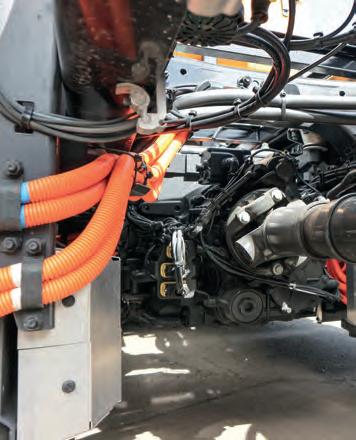
Grant opens the Daimler telematics app on his phone to illustrate the fleet benchmarks. “The 26 Euro-6 vehicles we can access data on are averaging 2.3km/l this week (between Sunday and Friday), over 31,000km, at an average speed of 22kph. The extremes are 1.8 and 3.3km/l.”
Mark explains the potential
When trucks average less than 200km a day, the argument about ‘range’ almost becomes moot.
Not your usual drivetrain... Left: Batteries mounted either side of chassis rails. The electric motor is under that little back cover in the midddle.
Thin blue strip in the lower grille a giveaway this Scania is electric.
savings. “For diesel, we may look at 2kpl at $1.20. Fuelling an EV is four to 15 times cheaper, depending on how you source or produce your energy.”
He points to the array of solar panels on the roof of one of the buildings. On average, they produce 500kWh daily, enough to run three of the Scanias.
However, the setup is yet to be complete so, for now, the Scanias charge off a portable 40kW charger connected to the grid at Wiri and a 120kW charger (the maximum the trucks can handle) at Onehunga.
“There are all these little nuances,” Mark says. The megawatt charging standard coming in 2024 will revolutionise it, so we have to design our charging infrastructure for that. We can connect to the grid to trickle charge at night when the cost is low and have a 300kW solar setup and a 2mWh battery storage system to charge at a megawatt offgrid. That’s a couple of million dollars...
“But we’ve burnt a million litres of diesel a year for the past 15 years… so investing in the long term, we can drop energy to a fraction and fix
that cost for decades with a microgrid.”
Meet the 25P
Named slightly differently from Scania’s convention for its diesel-powered trucks, 25P indicates these EVs offer a range of up to 250km and have a P-series cab. Of course, the range of an electric vehicle is more susceptible to variables, such as its operational environment, laden weight, bodywork, final drive and driver behaviour, than one would be used to with a diesel. But even then, when trucks like those in the Reliance fleet average less
than 200km a day, depending on what they do, the argument about ‘range’ almost becomes moot.
The battery sets on these units are comprised of nine 33kWh units – two sets of four on either side of the chassis rails and one set under the cab – for a total output of 297kWh. A five-battery option of 165kWh is available, but that obviously won’t offer the full 250km potential. The vehicle is charged using the typical CCS type-2 switch that has become the standard for EVs.


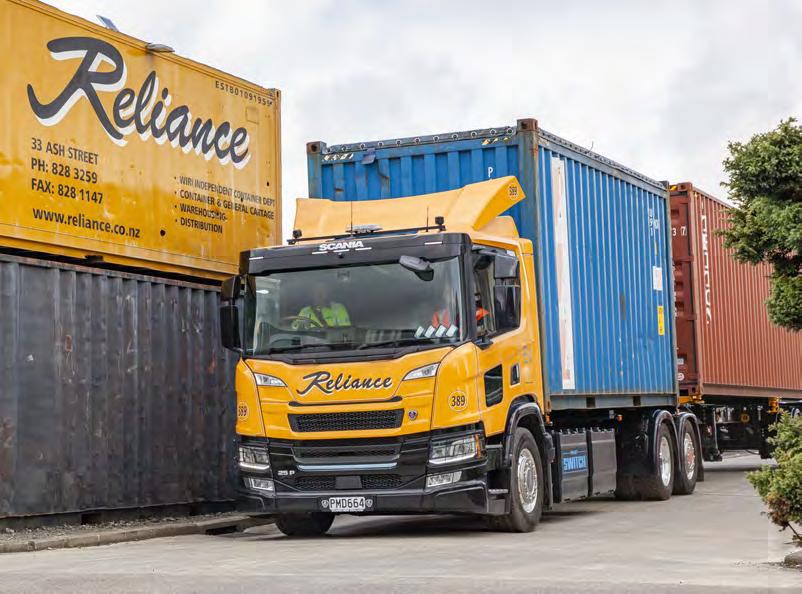
The electric motor delivers a continuous output of 230kW (310hp), with a peak output of 295kW (395hp) and peak torque of 2200Nm. For those unfamiliar, continuous power is the maximum power the powertrain (electric motor and batteries) can deliver continuously over a long period. The peak power can be utilised in periods at full throttle. The motor unit is mounted roughly where one would expect to find a gearbox and drives through a conventional prop shaft. At about half, maybe twothirds, the size of a gearbox, it’s surprisingly small –impressively so, especially considering its output and the fact it incorporates a twospeed transmission.
According to Alfons Reitsma, the rear axle has “quite a deep reduction” to provide the gradeability and
Centre: Conventional driveshaft about the only thing recognisable to the uninitiated. Right: More batteries and control units found under the cab.
An old name with a policy of running the latest gear.
lift-off at gross combination weights. The rate of acceleration has been limited to protect the cargo and the truck’s capability – drivers would burn through electrons quite rapidly blasting away from the lights…
Should the operator wish, a 60kW electric PTO can be fitted. A separate 24V system is fitted to run the usual electronic systems.
An urban/distribution type vehicle, 25P is available as a rigid or tractor unit in 4x2, 6x2 and 6x2*4 configurations. It offers a GVW of up to 29 tonnes, and wheelbases are flexible. The Reliance units are the 6x2 with steering tag
axle. They weigh in at about 11 tonnes tare, plus 3.5 tonnes for the trailer, and measure 20m.
“Comparing EV and diesel metrics is like comparing apples and pears,” Alfons comments.
“At the moment, no welldefined metrics have been settled on. It relies on the total driveline configuration, application, route conditions and energy analysis. It’s all shared and configured with the client. We were able to give Reliance an energy consumption, and that’s how they modelled their business case for this application. The calculation changes with
1) Interior is familiar to anyone who’s been in a contemporary Scania. 2) Liftable bunk, cubbies and enough space to comfortably do a day’s work. 3) Mac Moradi glides around Auckland in silence. Right: Electric services electric... Sany electric reach stacker doing duty at Onehunga Wharf – and it’s been a hit.
every application. If you’re carting over the Kaimais, the cost and energy consumption will change.”
It’s a whole new world, but one we need to get to grips with. So, let’s…
Doing the container shuffle

Our chaperone for the day is a familiar face. We first met assistant transport manager Mac Moradi when we jumped aboard one of Reliance Transport’s mirrorless Arocs models for the April 2022 issue. We couldn’t have asked for a nicer and more enthusiastic person to show us what the 25P could do. And just as well, as although he’s not the main driver on either 25P, Mac is responsible for approximately half the mileage under their wheels.
“I don’t really sit in the office looking at spreadsheets all day. I get out there and drive the trucks myself and see what the boys are actually doing,” he says as we climb aboard a familiar office space. There’s little going on in this cab to give the EV game away
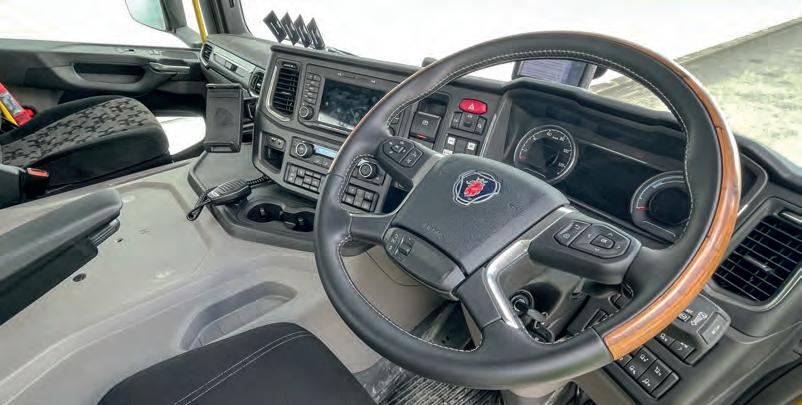
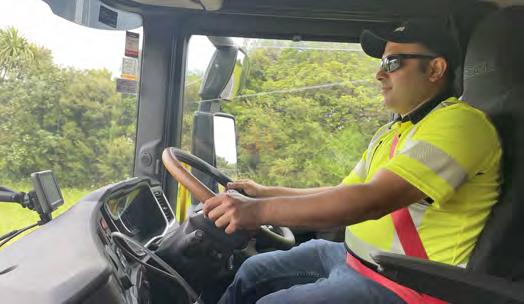
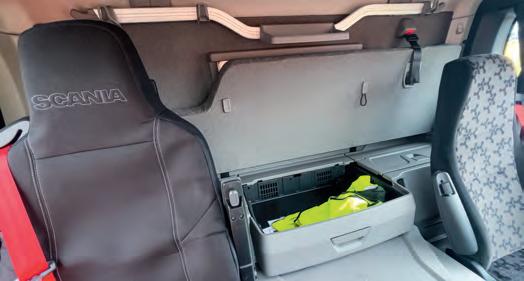
– in here, it’s everything you’d expect from a contemporary Scania.
Ordinarily, we’d wait for a new truck to have a fair bit of time on the road to allow both truck and driver to settle in and gel. However, the pressures of deadlines meant the 25P we’re aboard today has had only a month of operation, with much of that ‘experimentation’ – different drivers, different runs, when to charge, that sort of thing.
Nonetheless, it’s all go! Our first stop for the day is to drop off a 20-footer and a 40-footer at Container Repairs and Sales (CRS), then deliver a single 40-footer to the Onehunga depot, swapping it out for another and then back to Ash Road to collect a 20-footer so that we can deliver both to Container Co just around the corner… You get the picture – it’s a constant container shuffle, sometimes moving one, two, or three; some full, some not; from port to park to depot; and on and on it goes.
As Mac quipped during our Arocs meeting, “containers are chaotic”.
1 2 3
But how easy the 25P makes it becomes apparent the moment we glide out of the yard. That’s what it feels like – gliding in silence. “You still hear noise from the air compressor, especially when you first start the truck. It kicks on and off with a whirr,” says Mac.
“Really? Oh yeah! I wouldn’t have noticed it if you didn’t say anything!”
By the time we’re sitting at the lights to turn onto Wiri Station Road, it cuts out – and things get even quieter. As we make our way through the urban jungle, other trucks sound objectionably loud as they drive past. Sure, as speed rises, so do wind and tyre noise. But even at a full 90kph, the sound meter registered a 68db average. Normally, we’d expect mid-70s. Driving through town, you’re looking at 59db.
Mac interjects: “Hang on, I’ll shut off the aircon!”
Never mind, make that 56!
“The first time I drove it, I was like, ‘This is damn quiet’. You hear every single noise, the stuff you don’t normally
hear with an engine running. It’s different, yeah,” Mac says approvingly and as though we’re having a normal conversation in a quiet room.
Arriving at CRS, Mac explains he’d ordinarily have to shut off the engine to speak to the person at the window. “With this, it’s quite easy to sneak up on people, as they don’t hear you arriving!”
Trucks can spend a lot of time waiting around at container yards in queues to get to the gate, drop off containers and receive containers. Most often, their engines are running all the while. It’s a particular bugbear of Mark’s, but the nature of the beast.
“Mark asked me the other day what I think, and I said, ‘The beauty of these is I can leave the truck running, and it’s not idling away, not using any fuel while waiting for a hoist.’ Diesel trucks are idling all the time,” Mac says as we join the queue to offload. Waiting allows us to discuss a nifty feature that Fruehauf built into its skele design –the pneumatic twist locks.
Mark would later explain: “I approached Fruehauf with the idea of building them into our new container gear. We originally built a trailer in 2019 with Clark Engineering in Tauranga that featured automated twist locks, but together with Fruehauf, we have developed a Mk2 version, which is working well.”
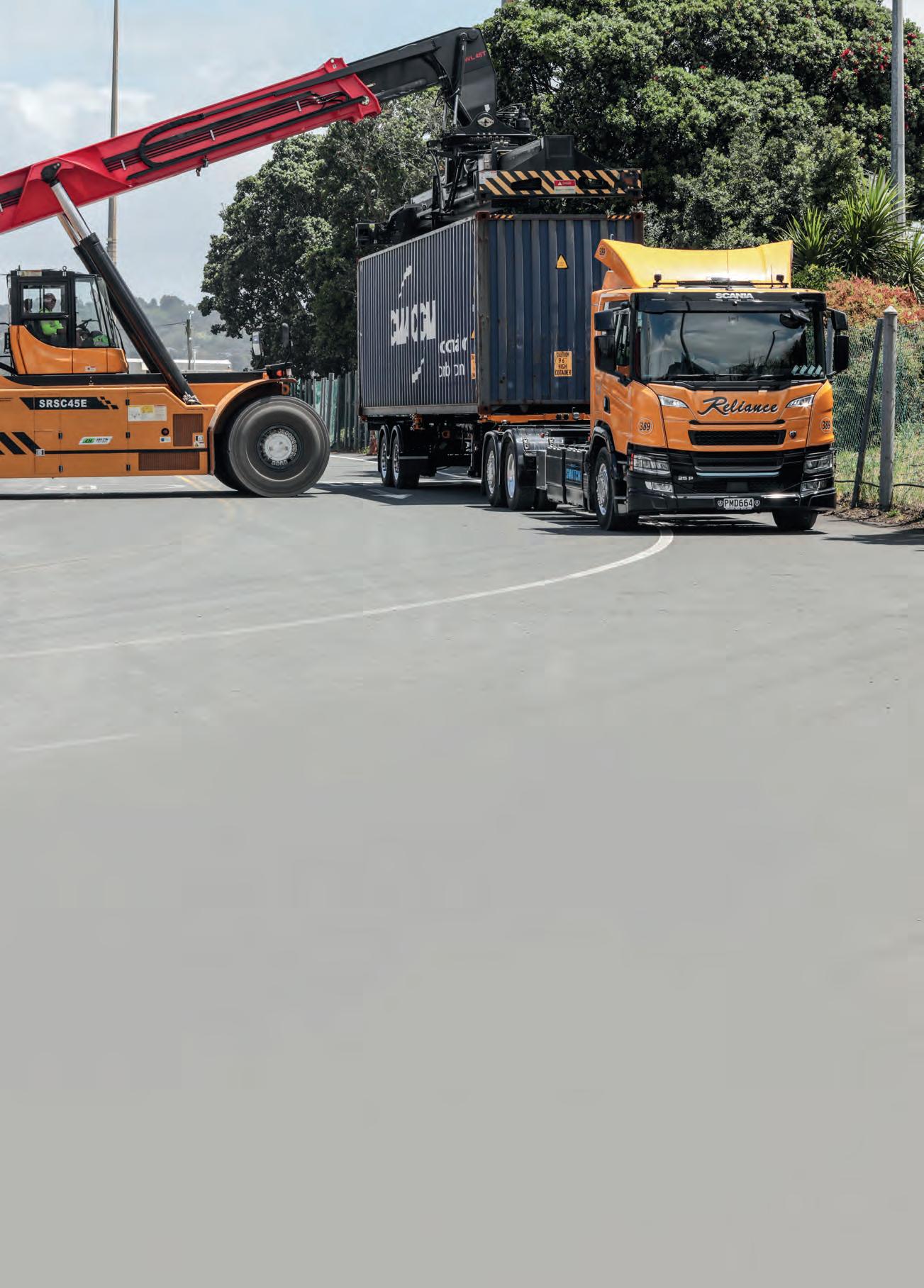
Their design and operation are simple, elegant and easy, with the whole process conducted by three simple switches – two wired into the Scania’s accessory switches and the other the electronic park brake. The driver simply selects ‘unlock’ on the lock/ unlock rocker switch, and when applying the park brake, the twist locks all unlock. They automatically lock as soon as the park brake is released and the vehicle starts moving. The driver can select ‘lock’ or switch off the system to keep the locks permanently locked. The third button is a 20/40 button, which activates the respective trailer lock sets.
“Normally, I’d be jumping out to unlock the twist locks.
This makes you lazy!” Mac says with a laugh. Indeed, the one physical aspect of container transport has successfully been eliminated.
“At times, the loader drivers look at the twist locks and think they’re still locked. I’ve had some get upset with me for not having them unlocked!”
Go, stop, charge, repeat
Saying there’s no better place in New Zealand than Auckland to prove the merits of a vehicle in a metro operation might be stating the obvious, but that’s precisely where you want to do it – in the most intense environment available. And so far, the 25P hasn’t put a foot wrong.
The ride and handling are like any other Scania on full air suspension – sublime. The unit manoeuvres around the city streets and tight confines of container parks and depots like any other in the Reliance fleet. By all accounts, it took a bit of doing to get the configuration right within the confines of VDAM (see, The proof is in the pudding, page
New Zealand Trucking Februar y 2023 27
33), something that will need to be done on a case-by-case basis until legislation catches up.
It’s handy too that it features Scania’s Blind Spot Warning that indicates, via lights in the A-pillars, passing vehicles when changing lanes or vehicles in the blind spot when turning corners. The feature is part of Scania’s Advanced Driver Assistance System (ADAS), which also includes the likes of lane-keep assist and automatic emergency braking.
With Mac behind the wheel, the 25P zips around the city streets. It’s quick off the line despite the restricted acceleration, accelerating up to 50kph in one fell swoop with the set gear change – barely perceptible – at 30kph. Even building speed to merge onto the motorway requires only a three-quarter application of the throttle pedal… The energy metre in the instrument binnacle – in place of a conventional tacho – is barely fussed. It’s truly impressive and belies the quoted output figures. Apples and pears, remember – you can’t base it

off what you know with diesel.
If the driver needs to get going in a tricky situation or without weight on the drive axles, they can engage the diff lock and load transfer (tag-axle lift).
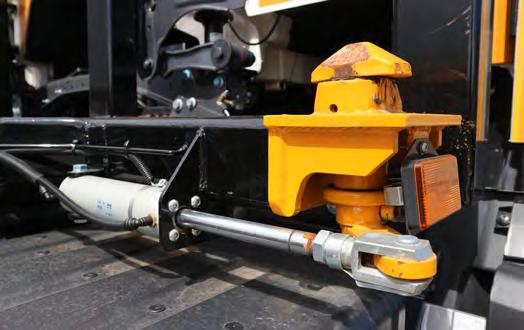
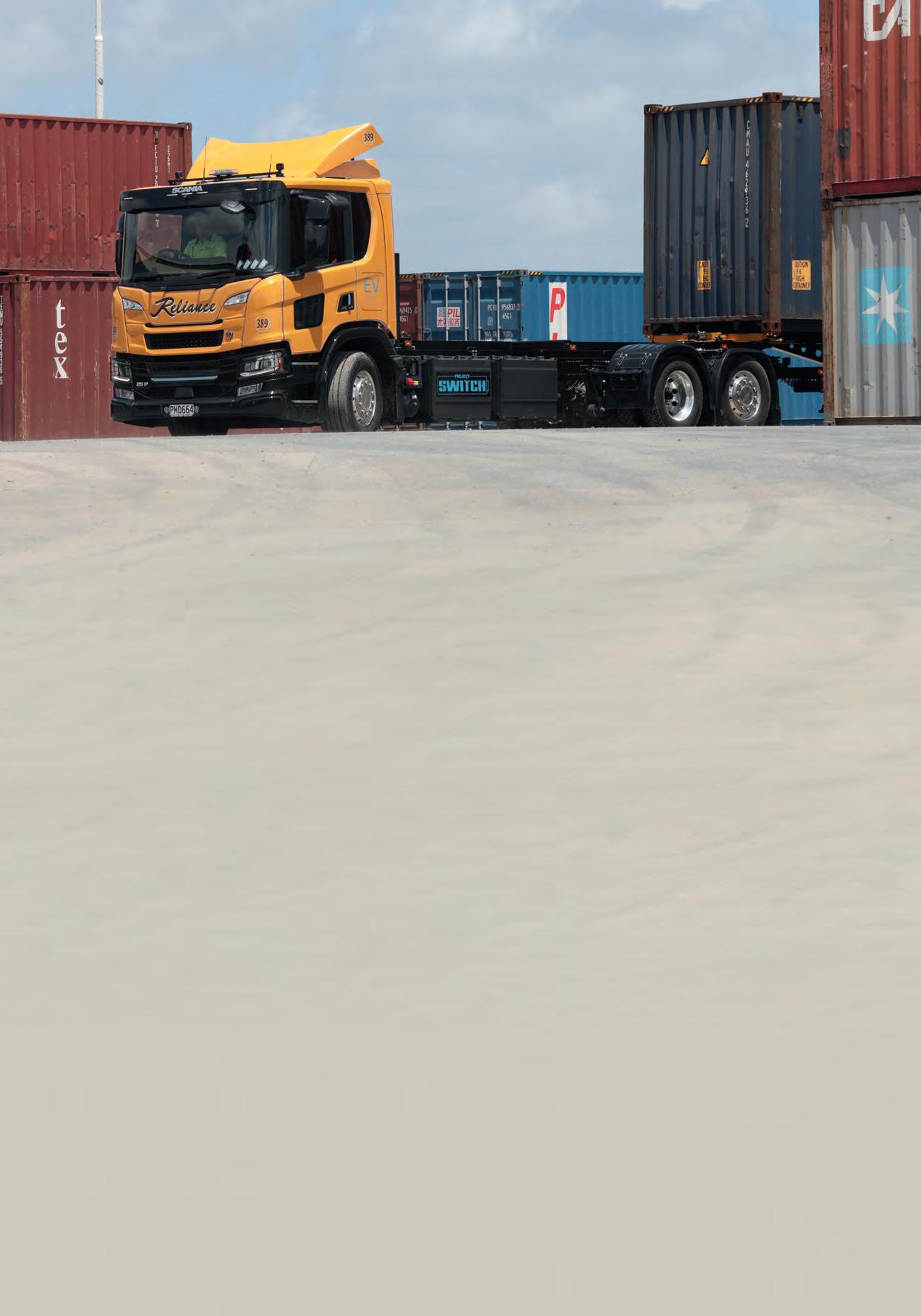
Slowing down is aided by five-stage regeneration, which works just like a conventional retarder via the lefthand wand on the steering column. Stage one applies the regeneration with a light press of the brake pedal before the service brakes start to bite. Mac suggests stages two and three are strong enough for most slowing situations and briefly demonstrates stage five, which strongly retards the 25P’s progress. As for the effectiveness of regeneration, with sensible anticipation of traffic flow you can see the battery charge percentage ticking up.
But he’s quick to point out that driving the 25P requires a different approach to a conventional diesel. “It’s not like a diesel truck that you can just gun around. But you learn quickly, and once you have some time behind the wheel,
your mindset changes and you start to get the best out of it.” To ensure that, the drivers get their own information via the Scania Connected Vehicles Portal Fleet Management System so that Scania and Grant can monitor how they’re getting on and build data on the new trucks’ performance. Drivers can also check the trucks’ vitals, such as range and charge status, via the Scania app on their phones.
Speaking of which, let’s address the elephant in the room – charging. Grant explains that the drivers are required to head to the Onehunga depot and plug into the 120kW charger during their halfhour break. “On the 40kW charger, we can add about 15% in half an hour [it takes three to 3.5 hours to charge from empty to full]. The 120kW charger adds 40%.
“A 120kW charger at both depots means we can start double-shifting it. Perhaps the day driver finishes at 5pm, plugs in and the next driver starts at 6.30pm with a fully charged truck.
Left: Pneumatic twist locks make the job of container moving as easy as it could be. Right: Three simple switches control them.
He’d knock off at 4am, and it’ll be fully charged by 6am. Perhaps it might only be two nine-hour shifts. We won’t know until we get up and running and do it,” he says.
By the end of day two (in all the excitement, we forgot to reset the trip computer on day one), we return to Ash Road with 33% battery capacity, or 90km, remaining.
“When we first drove the truck, I wasn’t sure, watching the range drop and drop. But when you’re out and working, it does okay,” Grant says.
Setting the example
The biggest privilege we get from producing this magazine each month is being granted access to the offices, yards and cabs of the companies that keep New Zealand moving. We never fail to learn something new, meet some brilliant people, and admire what it is that really makes the road transport industry of New Zealand. It is the same with Reliance Transport – it’s a company putting its money where its mouth is and diving into the most sustainable, efficient future it can create for itself.
“There’s risk, but that’s where you need your customers to buy in for the ride. And now that the trucks are here, those conversations are starting,” says Mark.
“Up-time and maintenance are great. CPK in operation is better. Yes, there’s a capital cost – but there’s co-funding from EECA, specific finance from some of the banks, and RUC exemption. We’re not driving to Wellington – we’re a ‘last-mile’ metro company just like the
IN THE NAME
majority of the trucks in Auckland. A big part of the market can access that and get these trucks on the road. It’s not a hard process – the opportunity is there. The cup is half full,” Mark says.

“I expect we’d get more than the four years out of these trucks, maybe eight. That changes the economics again, too,” Grant adds.
“Competing against another metro container business with electric trucks would keep me awake at night,” says Mark. “I think there are others in the industry going, ‘Ooh, shit. What are those f@&kers up to?’”

Mark and Grant have put absolute faith in Scania. “By now, all these firstgeneration electric trucks have had a long and intensive development since they first appeared half a decade ago. It’s the same as the cars. We bought Nissans because we know they made a ‘million’ of them. We know Scania will have mitigated any issues.” So far, the 25P is living up to that expectation, and we’re excited to see more of these find a place in the market and begin to do ‘real work’, as Mark put it.
With OEMs suggesting cost parity with diesel in the second half of this decade – just a couple of years away – investigating how these alternatives could fit into one’s business is undoubtedly good due diligence. What Mark and Grant have decided to do with Project Switch goes beyond; it is a commitment, pure dedication.
Good on you, men. We can’t wait to see what returns come from Project Switch and can only look on with admiration.
With 110 staff members, roughly 120 plant items, including 30 trucks, about twice as many trailers, a dozen fork hoists and three reach stackers split across two Auckland depots, Reliance Transport today is a very different operation to the company formed by dad Ken Darrah and his friend Ivan Sokolich in 1955. “They did their time together as mechanics and fitters in the post office workshop in Newmarket. They originally wanted to buy a service station but couldn’t afford it, so they bought trucks,” Mark says.
The company was originally D&S Transport, primarily operating from West Auckland and taking fresh produce into town. The motto on which D&S was built was, ‘Any load, anywhere, anytime,’ Mark explains. “They’d do midnight runs to get produce to the Chinese greengrocers. Our mother had a few date nights in the trucks…”
The company was tracking along nicely, and in 1959, Bob Martin joined as a third partner. With that, the name was changed to ‘Reliance’ and the company’s signature ‘Reliance Yellow’ livery first appeared.
“The colour is actually New Caterpillar Yellow, but there are about half a dozen variations of it. So, it’s in the PPG system as Reliance Yellow,” Grant points out.
Ivan left not long after Bob joined, and the two men fell into their respective roles, with Ken taking care of operations and Bob focusing on the business side of things – very much as Grant and Mark do today.
“Reliance has never not been around – we were both born into it,” Mark says, adding that third brother Paul also has an ownership stake.
Fifty-seven-year-old Mark is an engineer by trade and started working in the company in 1996. “I’ve only had two jobs. I worked at a steel manufacturer in Otahuhu for a bit, went overseas for a year, and
The 25P is just as manoeuvrable in container yards or the city as any other truck in the fleet.
then the old man said, ‘get home’.”
Sixty-year-old Grant’s background is a diesel mechanic. “I did a couple of years overseas, then I came back in Christmas 1987 for a ‘temporary’ job!” he says with a laugh.
That temporary job was to tend to fleet maintenance. “It was only 10 or 12 trucks plus trailers and bits and pieces, but it was all rundown. After that, I had nothing to do in the workshop, so I went driving. That was when cell phones came in and the old man kept ringing me up, and I was basically dispatching from the truck, so I moved to dispatching from the office to where I am now,” Grant continues.
Shortly thereafter, the whole fleet was replaced with N-series Fords. “Dad said that’s what got him through those tough years – the fleet
was paid for, and they didn’t have to fix it,” Grant says. That relates to one of the lessons the brother learnt in those early years. As Mark explains: “Dad would tell us things, but when you’re in your 30s, you don’t appreciate that wisdom… but everything he said was pretty much right –like don’t f@&k around with second-hand gear.”
While the fleet has comprised most brands available over the years, when Mark joined in 1996, a move to Euro trucks was made in the name of efficiency. “In 1999, we leased our first truck and haven’t stopped since. We spend our depreciation every year – that’s our capital budget. If you stop that, you end up with the fleet Grant had in 1987,” he explains. With the introduction of Euro-5, the company introduced DAFs to the fleet. “They were good and showed us the positives of

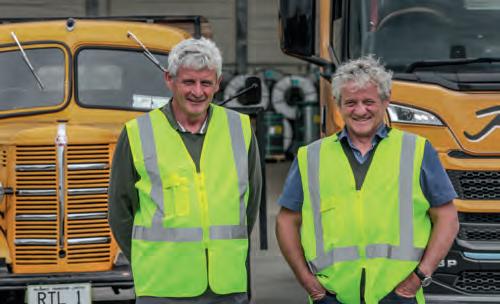


1 2 3 4 30 New Zealand Trucking February 2023
1) A 25P with RTL 1 – the 1953 Bedford owned and restored by founder Ken Darrah. 2) Grant (left) and Mark Darrah epitomise pragmatism and forward thinking. 3) The Volvo FL10 Intercooler – the first truck bought by Mark and Grant when they took over the company. 4) Solar panels, electric fork hoists, vans and trucks will soon be common at transport yards everywhere. Highlights from a 60-year history. 5) Easter 1959, a new name arrives. 6) Ken Darrah (left) and Ivan Sokolich starting out in 1955. 7) 1961, Canal Road.
standardising a fleet. It’s taken us to now to get a one-brand fleet with the Mercs… and now we’re changing again.”
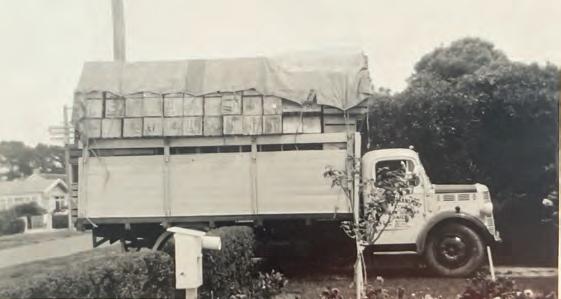

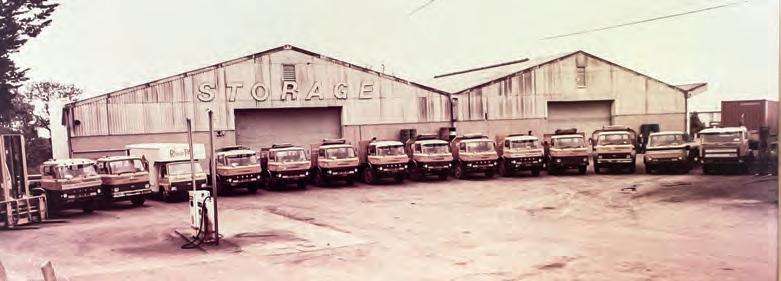
The commitment to wharf cartage was made in the early 2000s, and night shifts added in 2004. “Our current transport manager, Davin ‘Barney’ Miller, started that. He’s done 30-plus years with us – many of our ops guys have done 20 or 30 years with us,” Mark says, adding Barney was taking delivery of his own electric Polestar 2 that very day, and garaging his V8 Commodore.


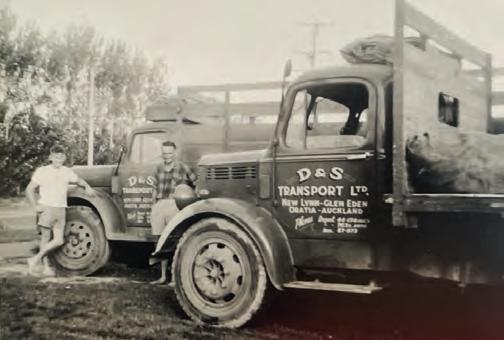

“I’m happy that with the management team we have, I can sit and plot the future,” he adds. “We’re not scared to just grab shit and do it. The market sets our prices, and if we want to make money, we must operate better than the market – it’s a case of working out what you can change and focusing on that. For us, energy is the only frontier.”
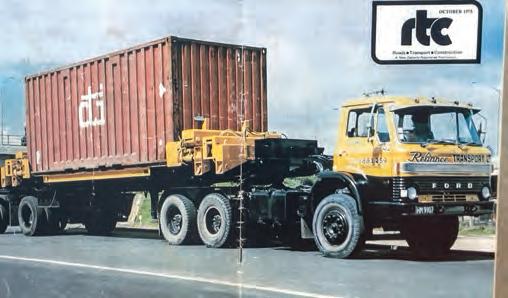
5 6 7 8 9 11 12 10 New Zealand Trucking Februar y 2023 31
8) 1972 Ford D2418 V8 with Mills-Tui two-axle self-steer swinglift, centre spread in RTC October 1978. 9 and 10) Fleet photos, 1967 and 1983. 11) 1961 TK Bedford furniture box. 12) Moving for Pilkington Glass, 1995.
BY DETERMINATION GUIDED
Ibelieve that the struggles you go through make you the person you are and make you appreciate even more the rewards you are blessed with. It is when we really struggle to gain something in life and finally achieve it that we appreciate it.” This sagacious perspective on life is straight from the mouth of 34-year-old Mac Moradi.
Mac’s guiding truth was the driving force that led him in 2005, as a barely 17-yearold young lad, from Iran to our fair shores. “For me, it was my quest for a better life, a chance to look for better opportunities. It’s the things you take for granted in New Zealand every day that are real luxuries in other countries – like Iran. We used to read about New Zealand in geography classes at school – its location on the planet, its weather and history and all that. It was a place you dreamed of.
Mac did it tough when
he arrived, for sure, but he persevered. “I am proud of every step of my journey. I was in the country I wanted to be in, and that’s what mattered most. You pursue what you want in life, and back then, I was doing anything I could to earn a dollar – painting, cutting lawns, anything that would pay a bit of money and put some food in my tummy. Life teaches you very fast. But I truly believe that if you are a good person, in time, good things will come to you –especially if you are after it and you are prepared to work hard for it.”
Mac’s interest in trucks was ignited as a young fella of about eight growing up in Qom, about an hour south of Tehran. “I first wanted to be a pilot, but I had two uncles who were both truck drivers and my dad also had his heavy-truck license (though never used it). Yeah, it was my uncles who introduced me to truck driving, and as I
grew older, I knew I wanted to drive trucks and machinery. This did not sit well with my parents; Mum wanted me to be a doctor and Dad wanted me to be an engineer… But, too late, I liked trucks.”
With a bit of support from home, Mac got his New Zealand driver’s licence and was off. “I got a job delivering courier packages – doing that for a few years and working my way into the industry. I moved on to getting my class 2, and as soon as I had that, I found work driving, doing air and sea freight. Eventually, I passed my class 4, which really opened the doors for me. I had to jump between companies a bit to get the experience, but this allowed me to get my hands dirty and learn the ropes. In 2012, I finally got my class 5 and started driving big gear. It’s just a passion of mine – anything with a steering wheel, I want to drive it, and the bigger, the better,” Mac says with a grin.
Through it all, Mac progressed at his own expense. He also did his wheels and tracks and recently got his BESS (Bridge Engineering Self Supervision) license. “It has been a real journey. We are always learning – like, a few years ago when I was at work, an older driver in the company came into the yard and performed a jackknife manoeuvre with his truck and trailer. I couldn’t believe what he did, and I thought, ‘I want to be able to do that.’ So I begged him for two days to teach me how to do it and – full credit to him – he took the time and showed me how. I am not scared of manning up and saying, ‘I don’t know how to do that, can you teach me?’ I just want to learn. I love it. It really is a passion – it is certainly not just a job for me to be able to pay my bills. It is a whole lot more than that.”
Mac joined Reliance Transport eight years ago when he came across the opportunity to work night shift, which he did for almost five years before asking to move to day shift. “It’s great work. There’s always something different. I don’t mind stepping into other roles when needed, like if someone’s off sick – even jumping into the office to help with dispatching. That works well, too, because as a driver, you know the challenges other drivers are likely to face, so you can help them with local knowledge if needed.
“I really appreciate the help and assistance that I have been given on my journey so far,” says Mac. “So, I enjoy passing on whatever knowledge I can by helping out with training within the business. It sure can be scary starting out. So, for me, it is all about sharing the knowledge because we have all had to start somewhere.”
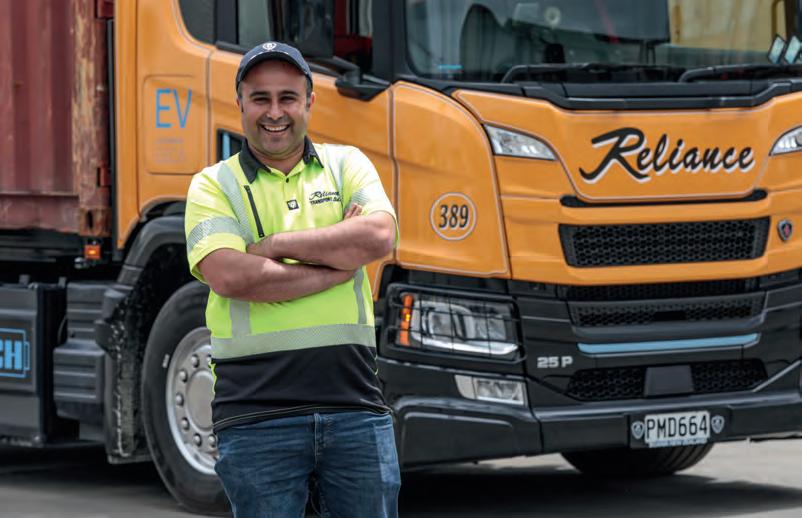
32 New Zealand Trucking February 2023
Mac Moradi, all smiles and keen for the EV onslaught.
THE PROOF IS IN THE PUDDING
You can do a thousand PowerPoint presentations, but ultimately, you have to have something that does the job reliably for the customer, is supported, and makes them money.”
If you want the crux of any truck-related product engineering issue summarised in 50 words or less, there wouldn’t be many people in New Zealand who wouldn’t point you in the direction of Alfons Reistma, senior product engineer pre-sales at Scania New Zealand.
“I have been vocal in this area and not always popular as a result, but if the government wants decarbonisation, all parties must come to the table and contribute.
“VDAM [vehicle dimensions and mass] was never designed and intended for decarbonisation and zero emissions. That means we need to make changes. Zero-emission trucks need more space on the chassis for battery packaging, not to mention a review of axle weights, axle configuration and overall length.

“I get laughed at when I say it, but maybe the easiest solution is simply adopting the European commercial vehicles standards for BEVs. Then half of the big problems disappear, and supply into what is an ideal market is seamless.
“Likewise, the infrastructure. If the current highway network is not resilient for climate change – with all of these broken surfaces and potholes – how is it ever
going to be resilient for electrification? We need to stop arguing and just sort it – and that means spending money.
“I’d like an industry representation made up of OEMs – that would give our issues more weight. The customer will buy what the customer wants to buy, but we have questions as suppliers that need addressing – and quickly. Trucks are not cars; they’re not a one-size-fits-all. They are a commercial asset intended to make money, and if ‘we’ can’t supply that, customers won’t buy them. I’m not knocking NZTA, but there’s a need for action.”
The overarching sentiment in Alfons’ tone is that the equipment is no longer on its way, it’s here – and ‘we’ should be more ready than we are. Given the appropriate application and energy analysis, customers can now buy Scania’s BEV as they would any other product, and the offerings in the company portfolio will only increase.
The relationship between Alfons and Mark and Grant goes back to Alfons’ time as a pre-sale engineer at Daimler agent, Trucks and Trailers.
“I’m always one for having some level of future-focused project running, and I’d begun investigating zero-emission options from Daimler. Reliance was buying Euro-6 Mercedes-Benz trucks and was keen to progress to zero-emissions trucks as the next part of Project Switch.”
At about this time, Daimler restructured its New Zealand representation, resulting in Scania New Zealand acquiring the Trucks and Trailers business shortly after. Although that meant a switch between two of the biggest camps in the global automotive playpen, for Alfons, it was a return to his roots, having worked for Scania for many years from 1984.
“Our Scania New Zealand CEO at the time, Mattias Lundholm, tasked me with advancing our zero-emissions offerings soon after he arrived on the scene. We canvassed some customers, but the Darrahs were the perfect early adopters and first customers. They were well along their zero-emissions journey. They understand the technology, the energy, and the potential,” Alfons explains.
Getting the new model of any seriesproduced truck to market is a significant project. When it’s the first of a new propulsion methodology, it takes on a whole new dimension. There’s no question that being an outpost of the Scania ‘mothership’ in Södertälje, Sweden, has benefits for New Zealand.
“It’s hugely challenging. We all come from a diesel background. Sure, there’s lots we know about chassis, axles and loadings, but there’s learning at every stage.
“We have an in-house team here that includes me, performance director Rob Covich, and key account manager Craig
“There’s more to be gained by decarbonising Auckland than Tikitiki.” – Alfons Reitsma.
Pepperell. We analyse every enquiry and see if there’s a fit. It’s an evolution, for sure. If you come in and want a BEV that’s a 770S equivalent to cart stock off the East Coast, the answer is no. We’re not there. That might change a few years down the track for sure, but not now. If you want a metro or regional distribution truck, however, that’s a different story. And at the end of the day, there’s more to be gained decarbonising Auckland than Tikitiki.”
As it will be elsewhere in the world, the purchase of tomorrow’s trucks will be a far more considered thing. The coat of many colours that diesel propulsion mistakenly afforded does not apply in the zero-emissions world.
“The Reliance trucks are on Scania Connected Vehicles like any other truck, and although the dataset is small by comparison with the diesel fleet, we can cost and evaluate a BEV truck to a specific task pretty accurately. The Reliance trucks are performing as we’d calculated, but they’re also doing exactly what the customer said they would, and that’s a big thing.
AC D’CODER
The delivery
AC Alter nating current – Flow of electrons switches back and forth at regular intervals or cycles
DC Direct current – Flow of electrons is consistent in one direction
Voltage Unit of electrical potential difference or the size of the force that sends the electrons through a circuit
Ampere Measure of current flow
Ohm Unit of electrical resistance (force that counteracts the of current)
The units
Joule Energy dissipated as heat when an electric current of 1 ampere passes through a resistance of 1 ohm for 1 second
Watt 1 watt = 1 joule per second (A 100-watt light bulb is bur ning at 100 joules per second)
Kilowatt 1000 watts kWh 1000 watts used over a one-hour period
Megawatt 1,000,000 watts
“The key to the whole thing is energy. How to get it, pay for it, and how best to utilise it. It’s a whole new world, with the ability to pay less depending on the time you buy it and even produce it yourself – likewise, the driver. Going forward, operator behaviour will be more critical than ever. With BEVs, driving well is not just about limiting cost as it is with an ICE. With the right anticipation and use of regeneration, you can put energy back into the system in the act of working.” As Mark put it: “That’s money back in the bank.”
“Obviously, on our part, there’s a lot to be done in the years ahead to ensure our techs and trainers are ready to support the product,” Alfons says.
With the two Reliance trucks being real-world working machines, Alfons says the interest and inquiry has ratcheted up several notches. “They’re now out there. They’re seen working, doing the job they were bought for. BEV trucks in the heavier weight categories are here.”

Terawatt One million million watts (Europe is predicted to need 37 terawatt hours by 2030)
The chargers
CCS Combined Charging System can use combo 1 and 2 connectors and provides electric vehicle charging up to 350kW (500 amps)
MCS Megawatt charging system – under development, with a connector rated for a maximum charging rate of 3.75MW (3000 amps DC)
The vehicles
ICE Inter nal combustion engine (Just so you know)
EV Electric vehicle
BEV Battery electric vehicle
HEV Hybrid electric vehicle
PHEV Plug-in hybrid electric vehicle
FCEV Fuel-cell electric vehicle
34 New Zealand Trucking February 2023
Reliance Transport was the prefect early adopter for Scania to partner with.
OUR THOUGHTS
Considering this was New Zealand Trucking’s first experience with an EV truck in full operation, the boys thought they’d share their thoughts and impressions.
It’s a funny thing, being the youngest member of the editorial team – and of the millennial generation to boot –you’d assume I’d have latched onto the idea of alternative propulsion and be the biggest flag-waver of them all. The problem is, I was raised on internal combustion and firmly believe there’s something magical in conducting engine, transmission and direction to get from point A to point B. For the enthusiasts, whether we’re talking bikes, cars or trucks, that’ll always be the case. The boffins will always find a way of feeding that need for interaction and enjoyment, and there will always be yesterday’s machines to continue to cherish.
But, the rest of the time, in mundane, everyday life, I also firmly believe there has to be a better way. I’ve always said that driving an electric
vehicle – any electric vehicle – changes the way you drive. Because they’re smoother, quieter and calmer, so are you. I’ve never fought my way through traffic in an EV and been aggravated about it.
The noise – or lack thereof – is a big thing for me. Remember lockdown? How peaceful it was? We don’t realise what a noisy world we live in until the noise is gone. Standing in the yard at Reliance, the difference between the diesel-powered trucks and Mac in the Scania rolling by was stark. And considering modern-day trucks with all their emissions restrictions don’t sound like anything special anyway, I know which I’d prefer in my urban environment of the future.
No, EVs aren’t the silver bullet, but they are an important link in the chain.
And there is a definite role they can play right now, with tangible benefits for company and driver. But we can’t leave it for the next generation to make that move.
– Gavin
When Peter Jackson released Fellowship of the Ring in 2001, I remember chatting with someone about it. They asked if I’d read Tolkien’s great work, and I confirmed I hadn’t subjected myself to that excruciation. My answer subsequently guided their half of the conversation. Apparently, there are two types of people in the world, those who have read Lord of the Rings and those who haven’t, and any ‘cross species’ conversations must be kept simple.
We’re at the same place with BEVs, trucks in particular. I encourage anyone who hasn’t got behind the tiller of one to do so at their earliest convenience, just so they’re speaking with some experience, such is

the difference in the way these machines deliver their numbers to the operator and owner. Trying to make some meaningful correlation between ICE and BEV output metrics without having driven both is impossible.
My list of BE truck drives is certainly growing, with eCanter Series 1, MercedesBenz Actros 6x2, MAN eTruck 4x2 and semi, Volvo FLE, and now Scania 25P. Each of them demonstrated the same EV traits of whisper silence and incredibly smooth relentless delivery of power. There’s no question you can sense the base unladen weight of the trucks when you drive them, they’re never fidgety.

I’m yet to meet a truck driver who doesn’t respond well to more power, retardation, and comfort. BEVs and FCEVs will likely reset the bar on all the existing performance and comfort metrics.
Yes, I am a child of internal combustion, manual gearboxes and differentials, and that is where I’ll always find my greatest driving joy.
New Zealand Trucking Februar y 2023 35
But ask the question, ‘Would I drive a high-output BEV or FCEV in the future to meet workday pressures and requirements, 13 hours every day?’ Absolutely, I would.
IC engines, clutch pedals, gear levers and differentials; as great a servant as each has been to us, change is afoot. Yes, we’re alive at the dawn of that change, and we’ll long be embroiled in the debate about whether our ‘horses’ should indeed go to the glue factory so soon.
But, rest assured, our grandchildren’s groceries won’t come courtesy of an X, DD or C15 unless we get the next half-century horribly wrong. In which case, they’ll likely come via a horse and cart.
– Dave
Converging on the Reliance Transport yard at Ash Road, Wiri, I must admit a feeling of fervent anticipation. Finally, after all the hype – positive and negative (excuse the pun) – here was the opportunity to experience a true BEV at the coalface earning a genuine crust.
Mac, at the wheel as he goes through his pre-flight checks, turns to me and says, “Ya ready?” He releases the park brake, and with a deft
application of pressure on the good rheostat, 28 tonnes of heavy vehicle and payload literally glide off down the driveway.
The ease with which this happened was profound. It left me with a wry smile of disbelief and amazement at this demonstration of Newton’s laws of motion.
The sense of wonderment increased exponentially as we turned out onto Ash Road and accelerated towards Wiri Station Road. You cannot help but be immensely impressed at the peaceful ease with which the 310hp electric Scania went about its task. Smooth, silent but eager would be the best way to describe its attitude.
I walked away from the experience amazed at just how effortless this rig was to operate, especially given the nature of its operational environs – cruising the back streets of industrial Auckland on box collecting and delivery duties.
Bottom line? I now cannot wait for the day we get the call-up to test an 800hp electric heavy-haul combo dragging a dolly, four rows of eight with a Cat D11 body sitting on its back. Bring it on, I say.
– Carl
SPECIFICATIONS
Scania 25P – Gen 1 9-battery 6x2*4 CP17 Cab
Tare: 10,060kg
GVM: 28,000kg
GCM: 29,000kg
Wheelbase: 5750mm
Electric motor: Permanent magnet electric motor with oil spray cooling
Max power: 295kW (398hp)
Continuous power: 230kW (310hp)
Torque: 2200Nm
Emissions: BEV
Transmission: Two-speed internal
Clutch: N/A
CFront axle: Scania
Front-axle rating: 9000kg
Front-suspension: Scania air, fast level adjustment speed
Rear axle: Scania
Rear-axle rating: 19,000kg

Rear suspension: Scania air, fast level adjustment speed
Brakes: Disk. ABS, EBS
Auxiliary braking: Five-stage regeneration

Additional safety: Scania ADAS package, ESP
Batteries: Lithium-ion – Scania
Battery capacity: 297kWh
Charging: CCS type 2 up to 130kW/200A DC charging
Estimated charge time: 100 min
Maximum quoted range: 250km
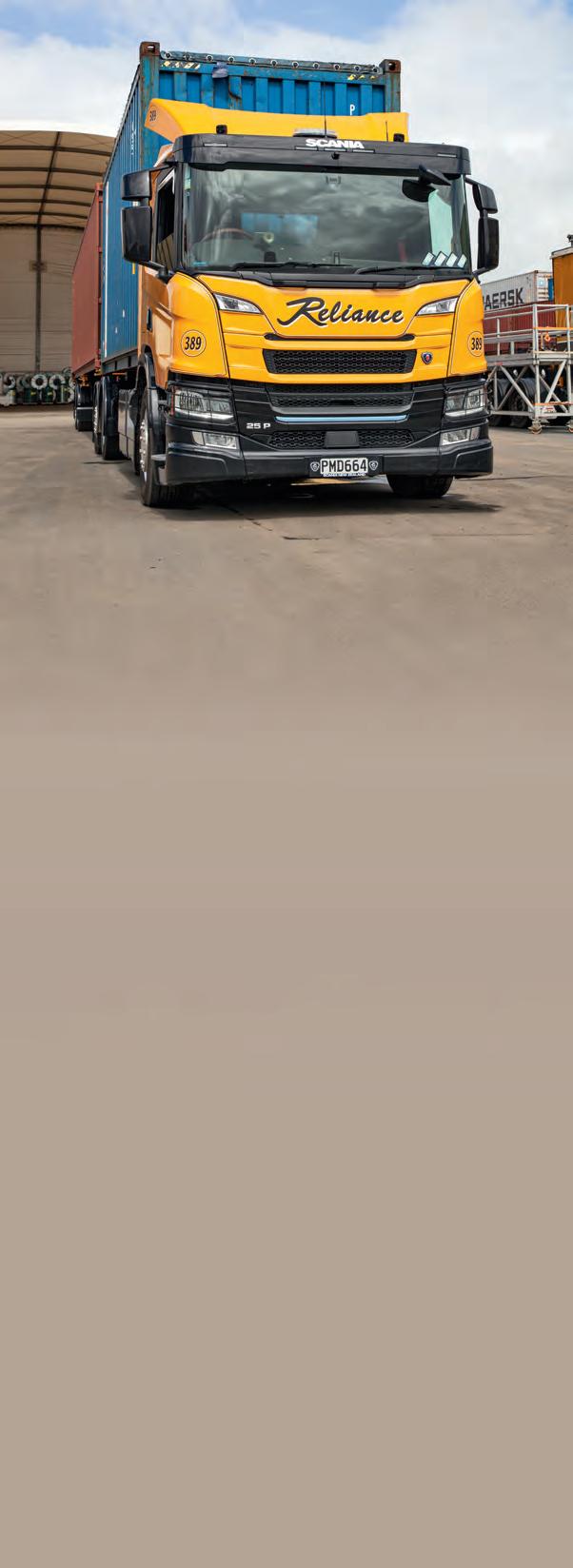
Wheels: Alcoa Alloy
Tyres: Michelin 385/55 R22.5 (f/tag), 275/70 R22.5 (r)
Electrical: 24V
Cab exterior: Camera options, surround view – blind spot
Cab interior: Full Scania options
Special thanks
It was a thrill for New Zealand Trucking to have the exclusive on Scania’s first EVs in a working environment. Thank you to Mark and Grant Darrah for having us around and so eagerly showing us where Reliance Transport is headed.
Thanks to Mac Moradi for demonstrating what the 25P can do with nothing but a smile and real enthusiasm – a great guy and an ambassador for the company.
Thanks, too, to the Scania New Zealand family, ever ready and willing, and Alfons Reistma, especially, for all your knowledge-sharing and insight into Scania, the regulatory environment and BEVs in general.
German-engineered quality for critical applications
Get in touch with YHI Energy to discuss the best solution for powering your heavy fleet
proudly distributed by

THE SIEMENS SICHARGE D yhienergy.co.nz ev@yhi.co.nz YHI Energy 0800 99 33 44
YESTERYEAR YARNS
After attending the funerals of four legendary Hawke’s Bay truckers in a year, Rex Holden realised most get-togethers were at times of bereavement. “These were guys I looked up to, who were passing away far too young.” Rex decided a trucker’s reunion was needed, and the Last of the Manual Labour Drivers Reunion was born. After more than a year of organisation, the event happened in Hastings last November.
An estimated 1,000,000,000km travelled by those in attendance and not a new truck in sight…
More than 140 drivers (and their wives) gathered, more than 20 bringing their vintage vehicles. Truckies came from as far as Thames in the north and Otago in the south, with Laurie Bousfield, Kevin Coffin, Perry Black and Darren and Margaret Powell travelling from Australia to attend.
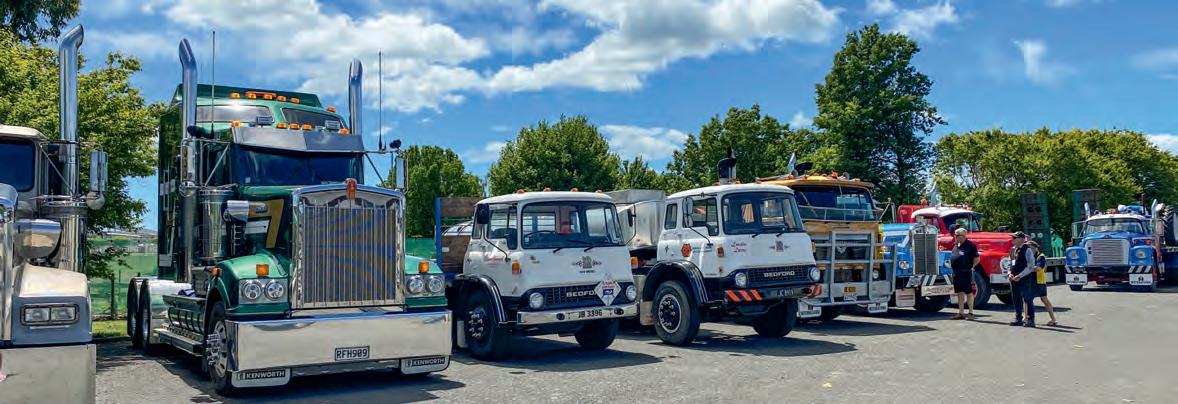
We were chuffed to receive an invitation and were constantly entertained with great stories of “those were the days”.
John Remus and Marty Greaves are great mates who recall working together in the early 1960s for Harrisons in Waiouru. John drove a 1949 Ford V8, and Marty, a Super Poise Commer, carting wool, fertiliser, stock or “anything that would fit on a truck”, says John. Their day would
start at 5am, arriving at the railway to stack cement bags onto pallets by hand. A forklift would load the pallets onto the truck to take to the store, where they would block-stack the bags in the shed – again, by hand. “The stacks were above our head height,” Marty says.
Breakfast would follow, at 8am, before their day continued. John remembers:
“At about the same time, we would load 15 ton of 112lb (50kg) bags of cement onto a truck and trailer. I had to load mine by hand, on my own, to deliver to the Moawhango Dam. We had to unload by hand, so I would take my time to take off my covers and ropes. By then, there would be 20 or so Ministry of Works guys to help me unload. We did this twice a day, often unloading 14 or 15 ton of bagged product on our own.”
John and Marty continue their story together. “While
at Harrisons, we had a sixwheeler flat-deck GMC truck named ‘Baldy’ because it had no cab. There was just a wooden seat, a wooden steering wheel and no brakes! After loading Baldy with 200lb (90kg) bags of barley by hand, we drove from Waiouru Station (farm) to Waiouru Rail Station, about 6km up the Desert Road. The journey included the Waitangi Hill, with a oneway bridge at the bottom. In fact, all the bridges were oneway on the Desert Road back in the day. We would wait near the top while a car went down and stopped the traffic coming over the bridge. After three or four minutes, we would get the go-ahead. We would pull out and go as slow as possible, but of course, Baldy picked up speed heading downhill. As we approached the bridge, you would flick it out of gear, because by then, the motor would be screaming. You would fly across the bridge, pull it back into gear and carry on up the road to the train station.”
Snippets of trucking days gone by came out with every conversation.
Tim Carrington recalls back in his father’s (Eddie Carrington of Wards Transport) day, drivers would all load and travel together. Driving old Leylands and Dodges,
the lower horsepower trucks would be sent off first, followed in horsepower order, with all the drivers stopping together on the journey to enjoy smoko.
Eric Murfitt drove trucks from 1960 until his retirement in 2012. His favourite job was logging in his Thames Trader back in the 1960s.
Peter Richmond has been driving for 50 years, with his favourite truck being his 1986 eight-wheeler K-series Kenworth Aerodyne. It was the first one in New Zealand. Peter’s best memories come from working at Produce Freighters in Hastings.
A group of ex-Graham Manson/TD Haulage drivers voted long-nose Kenworths their favourite trucks, including T900, T950 and T909.
The consensus among those there to reminisce about the old days of truck driving is the industry is not what it used to be. However, there was plenty of chat about current driving, with still an abundance of enthusiasm in the room.
The weekend was such a success that Rex and his team are planning the next event in a couple of years. Rex has a Facebook page – The Last of the Manual Labour Drivers Reunion – for anyone wanting to follow.
38 New Zealand Trucking February 2023
Story and photos by Alison Verran
‘Pig Pen’ has been proudly owned by John Douglas (JD) for 25 years. One of five the same, this ex-army truck initially pulled tanks at Waiouru and Linton army camps. JD has completed restorations twice on his 1967 International F230D. Still used as a working truck, Pig Pen now has a 380 Cummins electronic engine. It acquired its unique name because it was always grubby.
In 30 years of ownership, Dave Bockman has restored his 1960 International R200 twice. Sporting a Detroit 6V92 and Spicer gearbox, this truck is ex-US military, out of Germany. Dave’s red beauty was a working truck, carting machinery, until retirement 10 years ago.

While driving home in his 1939 Ford V8 pickup from Joe Skudder’s funeral, Rex Holden had the idea of a “bit of a get-together with some old truckies for a few beers”. It turned into a much-talked-about reunion, far more significant than Rex ever imagined. Parked next to Rex’s pickup is Joe Skudder’s 1939 Pontiac, owned by Joe for more than 60 years, now in the possession of his daughter, Deb.

For eight years, father and son truckers, Ian (left) and Gerry Storey, have together owned this blue 1967 International F1800. Gerry says: “It’s just our toy and a show truck.” Ian describes the truck’s specs, “It’s a Detroit 6V53 that leaks a lot of oil!” Gerry owns the red 1965 International R190 with a Detroit 6V71 engine. “I bought it when I was 18 and spent 10 years restoring it. It’s always been my show truck.”
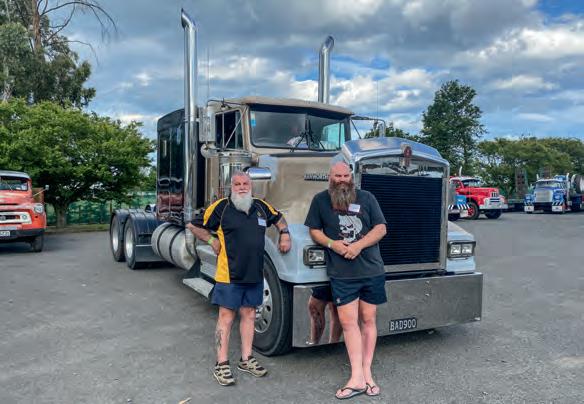

Father and son team, Ned (pictured) and Tony Kelly, restored this 1984 R-model Mack. “We’ve owned it for eight years,” says Ned. “We found it as a total wreck… no bumpers, no guards, no mufflers… in fact, not very much at all. We use it as a show truck. I like that it still has its original number plate and number on the bonnet from when it was new at Freightways.”
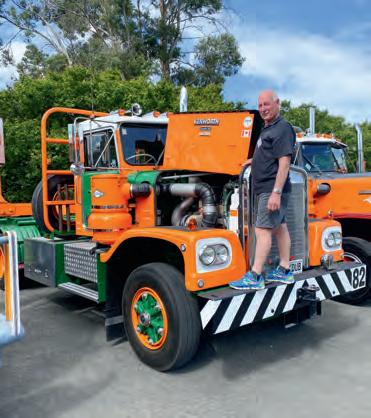
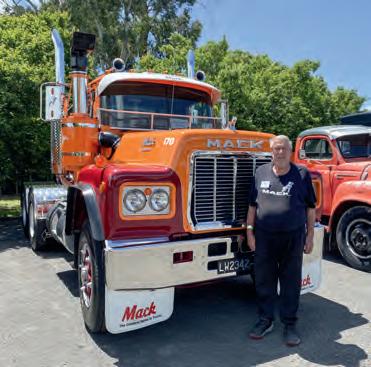
After a six-year restoration, Wayne Osgood reintroduced this 1976 Kenworth LW924 to the roads. It was initially owned by Panpac and Percy Campbell was the first company driver. He went on to purchase it as an owner-driver. Wayne calls this restoration his “labour of love. I did all the work myself, apart from the painting. It’s my show truck, and I like to take it on classic truck runs. This thing has travelled a few million kilometres in its life.”
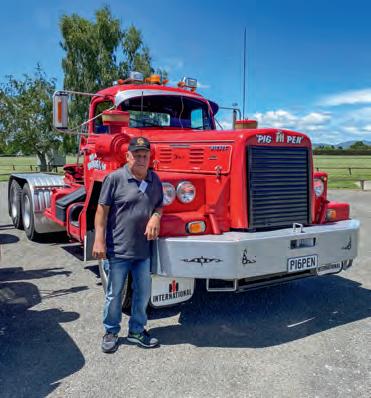 Dean Pearson (right) is proud to own this 550hp, 1991 Kenworth T900, still with its original registration plate. Dean purchased it as a restoration project and has converted it to a tractor unit and added a sleeper cab. Bill Brown (left) drove this truck from new for Paeroabased Clarrie Peterson, carting logs.
Dean Pearson (right) is proud to own this 550hp, 1991 Kenworth T900, still with its original registration plate. Dean purchased it as a restoration project and has converted it to a tractor unit and added a sleeper cab. Bill Brown (left) drove this truck from new for Paeroabased Clarrie Peterson, carting logs.
Rex would like to acknowledge the Reunion organisers: Rex and Tina Holden, Ian Emmerson, Tracy Murfitt, Deb Hay (Skudder), Ned Kelly, Jim and Marie Ramsay, and Bill Nimmon.
Around the start of the new millennium, a group of truckies with restored trucks decided to form a group and travel around New Zealand on weekend jaunts. Dave Bockman, John Douglas, Ian and Gerry Storey, Gary Woodwood, Robbie Caulfield, Tommy Kiernan and Bobby Ellis were among the original group. Bobby named the group ‘Thunderbirds’. John’s wife, Shona, says: “It was just a group of mates with stupid ideas of restoring trucks!” The group had great fun, and on one trip to the South Island, a group of the wives decided to climb up and have their photo taken on ‘Steptoe’ (Ian Storey’s Kenworth) while on the Seddon Road/rail bridge. As the men were taking the photos, the women spontaneously lifted their shirts to give the guys a laugh. That photo was not offered for publication. But this one shows the group at a get-together at Duck Creek Cedar Bar in Pauanui.
Bill Nimon has been in the industry all of his life. “My dad was in the industry, and I’ve been driving trucks since 1973.” Bill’s 1977 Kenworth C500 was purchased new by New Zealand Forest Products. “It was driveable when I bought it, but it was in pretty bad condition. I’ve had it about seven years and have added a sleeper cab. I just always wanted a truck with a Detroit engine in it!” Bill has owned the 1993 Volvo F16 for seven years. “I wanted to renovate an F16, and this one needed preserving. I have 22 old trucks in different stages of restoration, including Leylands, Bedfords, Reos, Volvos and Scammells. I have to live to 120 to get them all done! I am also a keeper of a 1912 Leyland X-type, owned by the Mills Family Trust, born out of J Mills Carriers, Hastings. Trucks have just been a lifelong interest for me. I get satisfaction seeing them preserved properly.”
Mike and Raewyn Richardson are passionate about the “work in progress” restoration of their 1976 Kenworth LW924C. They are only the third owners of this ex-Panpac beast. Three years into the project, it is a part-time working truck, carting machinery, as well as their show truck and toy. This Kenworth and Wayne Osgood’s LW924 are two serial numbers and two fleet numbers apart.
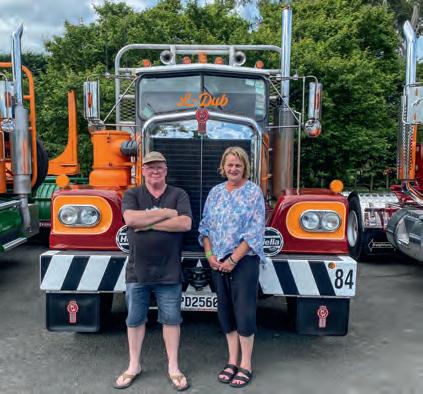


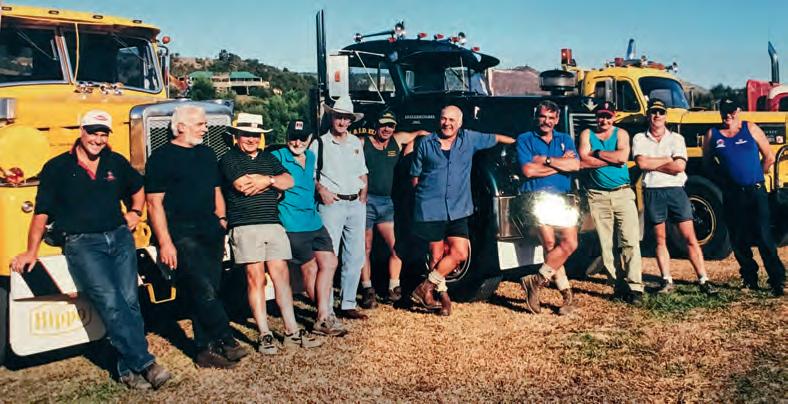
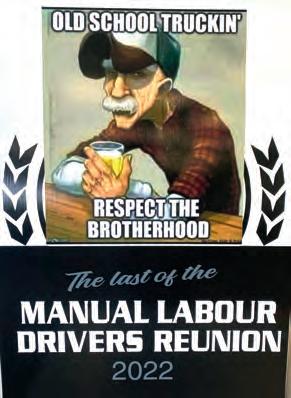

 A great turnout for the first
A great turnout for the first
Last
of the
Manual
Labour Drivers Reunion.


NEED ISUZU PARTS? Get your truck back on the road faster, with our knowledge to advise and locate your new part quickly. CALISUZU.CO.NZ | 0800 266 628 PARTS
LIKE YOU’VE NEVER DRIVEN BEFORE
When petrol gave way to diesel, it altered the way trucks were driven immeasurably, as it did when mechanical diesel was superseded by electronic. With diesel about to yield to electric drives, it’s hard to label it an evolution, rather a renaissance of driving as an art form.
Iget the question all the time regarding the electric car. ‘What’s it like to drive?’ If we’re not in a position where I can throw the interested party behind the wheel, my answer is always the same: ‘It’s the easiest vehicle in the world to drive, and one of the hardest to drive consistently smoothly.’
The truth is everyone currently taking part in the e-rebirth of vehicular landbased transport are novices on a steep learning curve. We are all in the adaptation phase. There is much to learn.
Take energy. As we understand it in the automotive sense, energy is no longer there to be merely preserved. There’s certainly an irony in saying energy is now a fluid thing, able to be repatriated as well as called up for service. In the ‘e’-world, we have this wonderful new thing called ‘regeneration’: the ability for the vehicle to repatriate energy into the system when off the throttle, simultaneously
Story and photos by Dave McCoid
providing a significant level of retardation. One-pedal driving, they call it. Get it just right, and the regenerator stops you plum at the giveway or stop sign.
However, that potential comes at a price in terms of physics, and in these formative times, fatigue. Firstly, regeneration also has an energy cost; secondly, regenerators mean there’s no ‘personal space’ in the behavioural and emotional act of driving. Once behind the wheel of ‘tomorrow’s’ vehicles, you realise how often in the ‘bad ole days’ you actually came off the throttle even momentarily, allowing the vehicle to glide as it were, and giving both driver and machine a moment of respite. That doesn’t exist in an EV with the regenerator activated – everything counts. When you’re on the throttle, it’s going. When you’re off, it’s ‘actively’ slowing – and if that’s not what you wanted it to do when you lifted your foot, it’s irritating. The closest
you’ll ever get to personal space in that environment is cruise control, and it’s never ideal to consider cruise control in those terms.
But you need that recouped power. After all, that’s the holy grail in this gig. Isn’t it? Well, that’s what I thought… then I met Franziska Keller.
I was booked in for a drive of the rigid metro/regional eActros 300 at IAA Hanover last year, and Franziska was my chaperone.

Based in Stuttgart, she works for the German giant as a software developer in the EV truck programme, specialising in driver assistance. In terms of people who know their stuff when it comes to punting an EV, she and her colleagues would be hard to head off. Suffice to say, I was quite nervous.
I’m getting used to sitting on the wrong side of the cab and driving down the wrong side of the road. Europe’s a much tighter driving experience than New Zealand, with pokey lanes, avenues,
and streets. The general driving quality is high when you look at where people put cars, much less trucks.
The 4x2 rigid Actros 300 was your typical pointand-shoot, deathly-silentwith-a-slight-whine, BEV. I have enough BEV trucks under my belt now to have the ‘wow’ factor subdued somewhat. BEVs are a genre for me now, with a ‘BEVness’ that’s common to their electromechaincal DNA.
I motored around the city streets, following her direction, as we chatted about our respective countries and careers. Not blowing smoke
42 New Zealand Trucking February 2023
or anything, but she was impressed at how comfortable she felt with a ‘righty’ driving her around a European city he didn’t know from a bar of soap. I was equally surprised at how comfortable I was, with the seat foam at no risk of being drawn into my large colon.
The route took us through Hannover’s city fringe, a couple of larger metropolitan link roads – think Wiri Station/ Moorhouse Ave sort of gig –plus a snippet of motorway action to see what happened when you fed it the electrons and how well the regenerator worked. From there, it was
a return to the convention centre.
In and around the city streets, the Actros responded instantly; steering and braking were sublime, as you’d expect. The abundance of safety systems, critical in this environment in this type of machine, kept everyone –inside and out – in a blissful state.
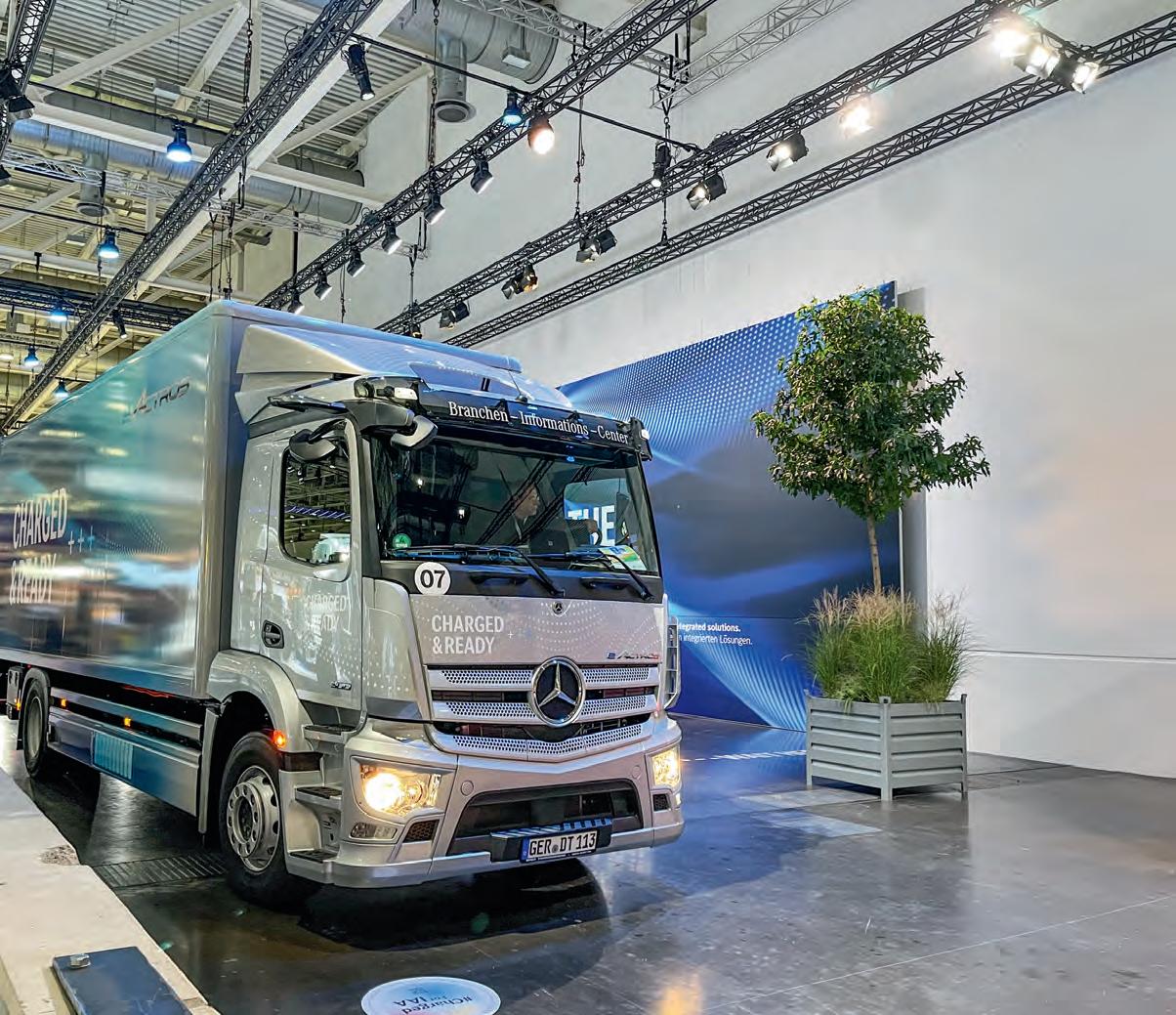
I was happily using the regeneration when Franziska said, “Why are you regenerating?”
I was a bit floored, and summoning my intellectual might, I responded… “Oh?”
“Turn it off,” she said.
“There’s nothing to be gained. You should only use it when coming to a complete or near halt from higher speeds or descending long grades.”
I was ready to pull over at this point, grab a coffee and pretzel at a local cafe, and have an in-depth with my new friend. Were some of my personal EV frustrations being addressed?
“Regeneration is not free,” she continued. “It costs energy to put energy back in, so you have to be sure you’re coming out ahead. The closest thing you actually have to free energy is the weight of the truck when it’s
coasting. They’re heavier, and that’s generally seen as a penalty. Coasting is the only place you can really use that to your advantage. Use the brakes to stop – that’s what they are there for.
The regenerator will work in the blending, anyway. The absolute aim must be maintaining speed with the least amount of throttle.
“In this environment, if you’re regenerating all the time, you have to get that mass moving and up to speed again. That will take more energy than you put in.”
For those yet to ‘BEV’, there’s something you
Mercedes-Benz eActros 300 lines up at Hanover 2022, ready to wow eagerly awaiting drivers.
need to know at this point. When BEVs glide… oh my goodness, do they glide! You have no idea how much friction exists in ICE drivetrains until you come off the throttle in a BEV with the regenerator off. They absolutely spear along with no discernible loss in rate for what seems like an eternity.
I did what Franziska said and flicked the regenerator off. I knew what zero ‘regen’ felt like in the car, so I was expecting a loose BEV HGV to be off the hook. Now, suddenly, that which I thought was forbidden wasteful fruit was, in fact, my greatest tool.
Immediately, the world felt a whole lot smoother. Gliding was the new god. “The least amount of throttle to do what you need to achieve. Tttthat’s better,” she beamed across the cab.
Within 2km of this lifechanging counsel, I realised how important tyre inflation and following distance will be in the BEV world. If you’re a tailgater, you’ll be a constant recharger, simple as that.
If I left a bigger gap –‘anticipation room’, you might
call it – I might get away with a glide rather than a brake, and a glide meant a mere finesse of the throttle would be all that was needed to regain the half kilometre per hour I’d lost.

A brake or pure regeneration event would have cost me a good old push on the ‘loud’ pedal. All of a sudden that was the last thing I wanted to do.
Since the Hanover drive, I’ve been applying the ‘Franziska’ rule in the car, and I can say I’m getting slightly more range, and it’s made the vehicle incredibly smooth. However, that impetus needs vigilance in a world currently dominated by grindy old drivetrains that feed on inertia.
And while we’re dabbling in irony, applying the Franziska rule to your ICE vehicle also makes you a far better driver. Regardless of the medium, the rules of energy apply. Go figure!
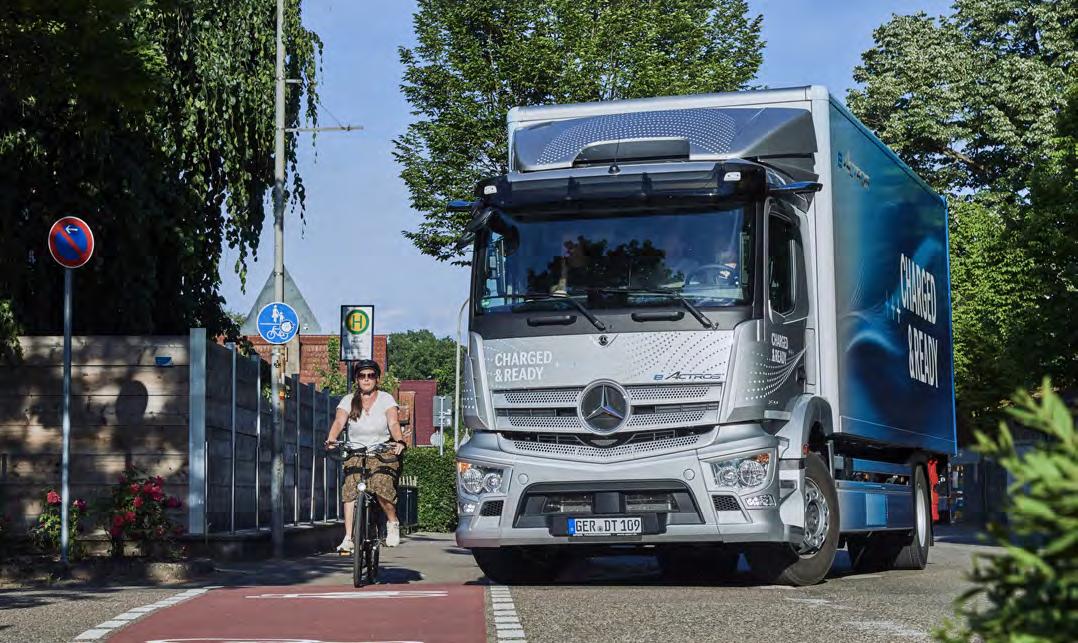
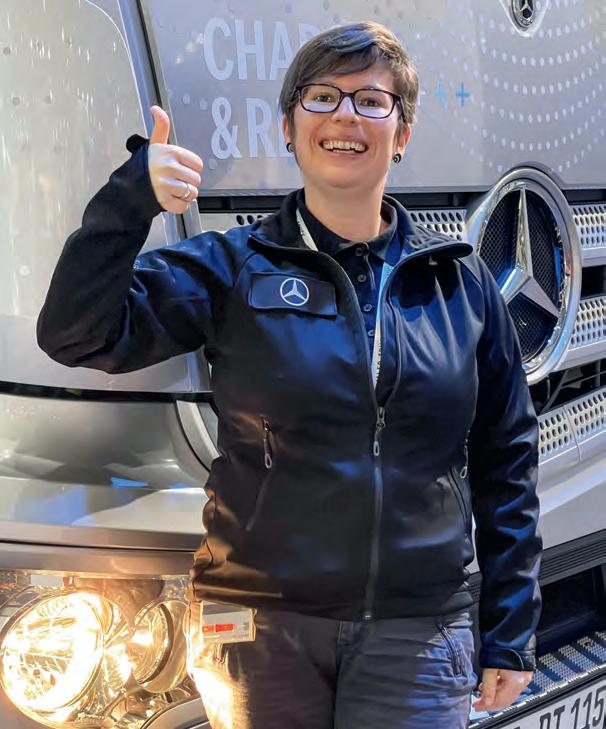
Back at the convention centre with a moment’s contemplation, discussion, and a sad farewell, Franziaka’s work was done. Driving is not evolving.
Franziska Keller – sage advice.
We’ve been given a blank canvas once more. In driving’s BEV renaissance, where you the practitioner truly command the energy, it’s as
much an art form as it’s ever been... believe me.
Franziska, thanks heaps. You’re an absolute whizz!
The eActros 300 is right at home delivering all that is required of modern metro distribution vehicles - the freight, silence, and safety. It was a joy to drive.
44 New Zealand Trucking February 2023
Photo: Daimler Trucks

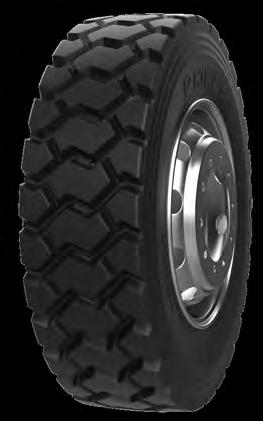
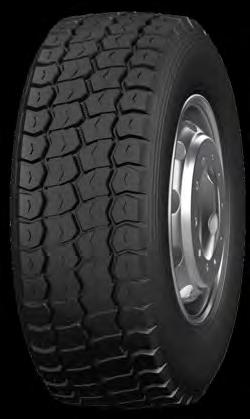

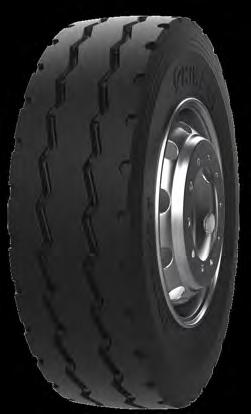
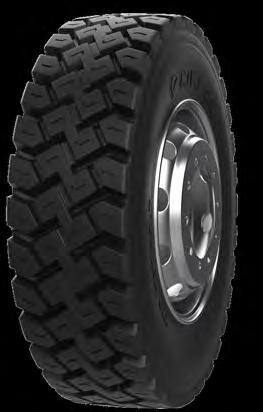

KIWI24 KIWI16/17 KIWI23 KIWI20 SUPER KIWI20 KIWI175 Contact Jim Doidge 021 190 1002 Danial Vincent 021 222 4144 or Hamish Campbell 0212225877 sales@kiwityres.co.nz | 0800 KIWI TYRES (0800 549 489) | kiwitrucktyres.nz NEW ZEALAND ROADS NEED KIWI TYRES. New tyres designed specifically for NZ’s harsh conditions UNIQUE COMPOUNDEXTRA DEEP TREADEXCEPTIONAL MILEAGE AVAILABLE NZWIDE ELBALIAVA EDIWZN • 275/70R22.5 • 11R22.5 • 215/75R17.5 • 235/75R17.5 • 265/70R19.5 • 275/70R22.5 • 11R22.5 • 265/70R19.5 • 275/70R22.5 • 11R22.5 • 295/80R22.5 • 385/55R22.5 • 385/65R22.5
UP CLOSE AND ALMOST PERSONAL
ECANTER NEXT
GENERATION
Story by Dave McCoid Photos Dave McCoid and as credited
Fuso’s New Generation eCanter will really take the fight out into the streets. We may not have buried the boot in one just yet, but increases and improvements in all the right places mean we’ll be keen to do so as soon as we’re allowed… and so should you.
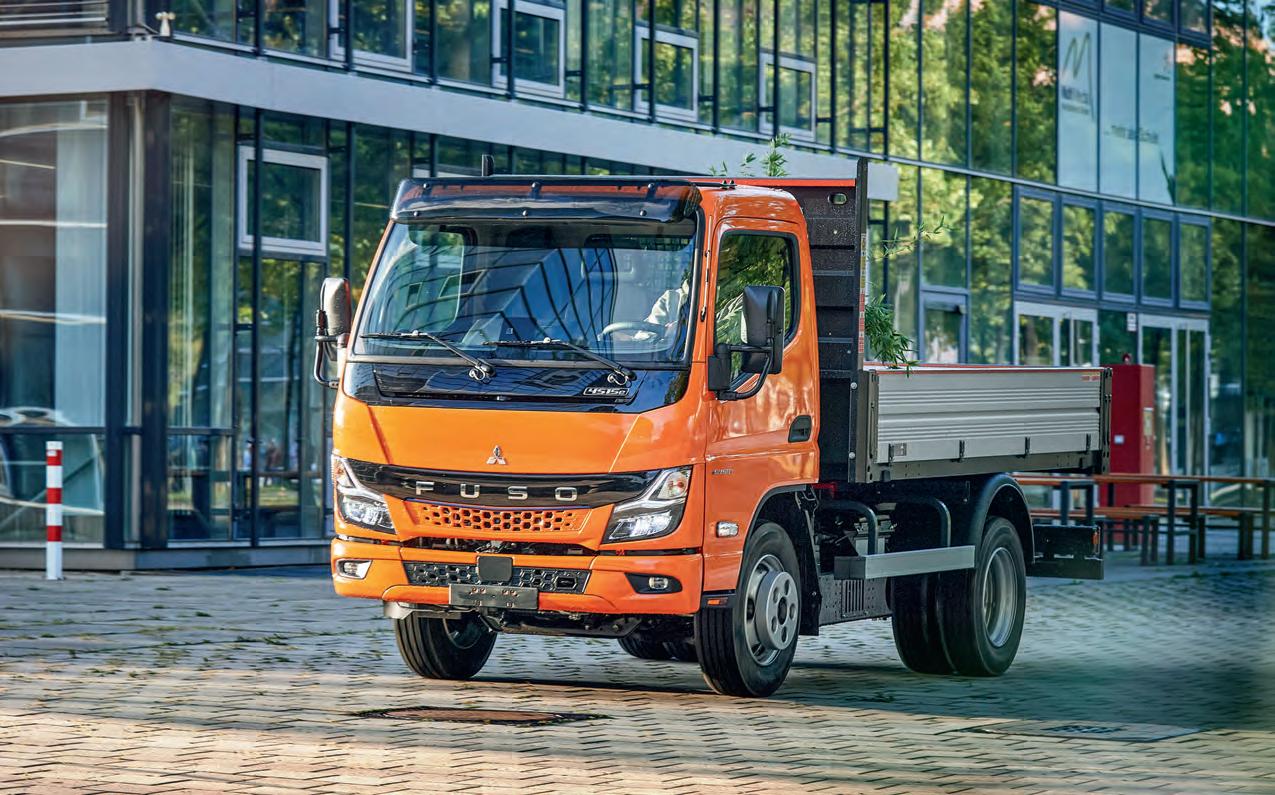
Sadly, we were at Fuso’s Tramagal plant in Portugal (New Zealand Trucking Dec 22/Jan23 Fuso’s Happy Place) a little too early to leap behind the wheel of the new eCanter. They were parked outside but not yet ready for media consumption. We were allowed to crawl all over them and have a good old look-see, as long as we didn’t go nuts on interior pics, due to a wee bit of design work left to do on the interior.
However, with chaperones alongside and the Polícia deployed at every
intersection to keep the antipodean crazies under control, the Tramagal crew let us loose for a burn up the road in three of the current model.
After five years on the scene, 450 Fuso eCanters roam the earth in Japan, Europe, the US, Australia and New Zealand, with total kilometres covered north of 6,000,000. As modest as all that sounds, eCanter ‘was’ limited in terms of options, and its release to the world has been tightly managed by region. A specific truck released to specific regions, pitched to a specific task. There’s no
46 New Zealand Trucking February 2023
Photo: Fuso
question eCanter has not just been an outstanding last-mile metro delivery proposition for its customers, but a data acquisition vehicle for Fuso and therefore Daimler.
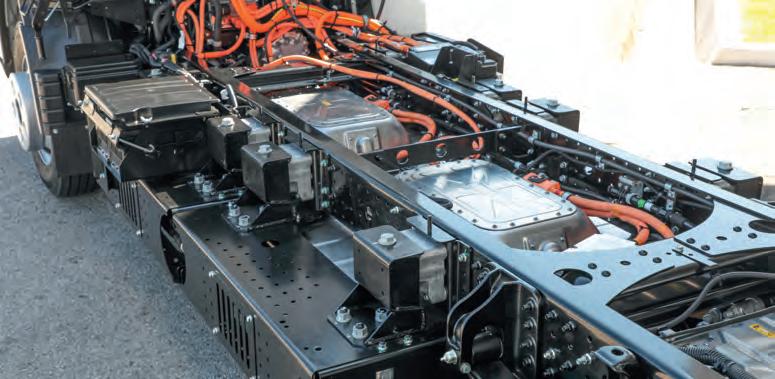
Reuniting with this little truck is always fun, and it always impresses – so ‘zippy’. But let’s look where it goes from here.
The biggest thing with the new eCanter is the increase in choice and specification options. It’s far less ‘this is it’, and more ‘what are you after?’ “We are now offering our customers tailor-made e-mobility solutions for a broad range of applications,” says Karl Deppen, CEO of Daimler Truck Asia.
Of course, with the increase in choice comes an increase in the need for consulting services. Although there must always be an element of versatility retained in a truck like this, to a degree, eCanter now falls into the ‘tell us what you want to do, and we’ll tell you what to tick’ category. The upside is a clearer understanding of TCO and when the lines of increased purchase price and lower running cost should cross, putting you
on course for a better class of Christmas holiday – if you get my drift. In Europe, at least, there’s even help with exploiting incentives and optimal charging strategies via the Daimler Incentive Tool. One would
hope that sort of thing will also manifest itself in our jurisdiction.
The increase in build options makes Next Generation a far more broadspectrum proposition, with target applications including last-mile freight delivery, food and beverage, gas bottle distribution, refuse collection, the construction industry and horticulture. In fact, at the Bauma 2022 show in October last year, two units were on display, one sporting a roll-off tipper body, and the other a factory-fitted power take-off.
Two cabs are available – a standard at 1.7m and a comfort cab at 2m. There are all the mod-cons, such as smart wheel, infotainment, digital LCD instrument cluster, and LED headlights, said to be 30% brighter than the Halogen units, with an auto-light function for controlling the headlights and Intelligent Highbeam Assist.

The trucks obviously meet all the necessary impact requirements, and in the event there’s an accident, a sensor automatically deactivates the highvoltage system.
All of the stuff you’d expect is there – Active Brake Assist 5 with Pedestrian Detection, Active Side-Guard Assist on the nearside lane. There’s also AVAS or Acoustic Vehicle Alerting System, i.e. it beeps to let people know there’s a whisper-quiet truck… just there.
eCanter Next Generation – the vital stats
GVM: 4.25 – 8.55 tonne (Previous – 7.49 tonne)
Max payload: 8.55 tonne GVM option – up to 5 tonne
Wheelbases: Six options between 2500mm to 4750mm (Previous – 3400mm only)
Power: 110kW (variants with GVM of 4.25 and 6.0 tonnes)
129kW (variants with GVM 7.49 and 8.55 tonnes) (Previous – 135kW)
Range: S – Nominal capacity 41kWh – range up to 70km
M – Nominal capacity 83kWh – range up to 140km
L – Nominal capacity 124kWh – range up to 200km (Previous – 81kWh up to 100km)
Speed: With optimised driveline and torque of 430Nm – 89kph
Batter y type: Lithium iron phosphate. Reason given – long service life and more useable energy
Charging: DC – Fast to 90% capacity
S – 36 minutes | M – 44 minutes | L – 75 minutes
AC: (11 and 22kW) 90% capacity between four and six hours, depending on battery pack
Charging system: CCS (combined charging system) up to 104kW
The interior of the new machine is slick and purposeful. Photo: Fuso.
New Zealand Trucking Februar y 2023 47
Batteries are well-protected, and as we know in the BEV world, they’re serious when they say, ‘Do not tamper with the orange bits.’
CELEBRATING IN

STYLE
Some names in trucking circles are synonymous with the machines they run. Head north to Kerikeri and mention JJ Klinac, and among the first words you are likely to hear could be ‘immaculate’ and ‘customised’. That’s just what we expected – and found – of JJ’s latest Hino 700.
Story and photos by Gavin Myers
In his five decades of trucking, JJ Klinac has always emphasised immaculate gear. Known most recently for his twoaxle Hino 700 and custom submersible hydraulic boat trailer running under the Exclusive Boat Haulage banner, JJ decided another truck was in order to celebrate this gold anniversary.
“It’s probably more of a toy – I’ve done my 50 years and wanted to do up a truck,” JJ explains of his new-generation Hino 700 and Domett quadaxle trailer combination.
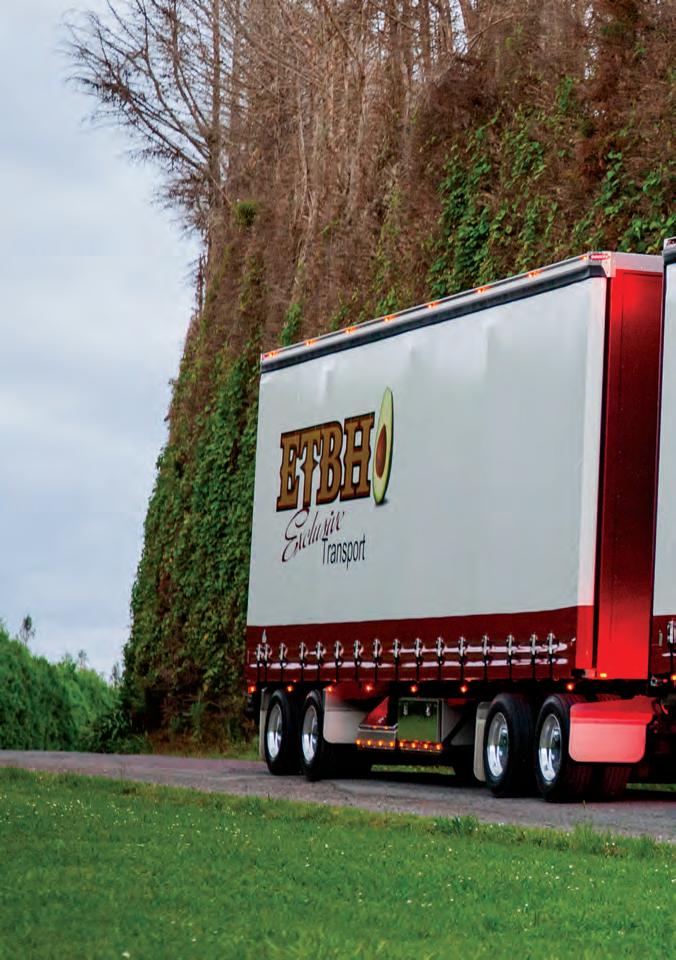
An opportunity with The Produce Connection came up, so JJ commissioned the Hino from Shane Kemp at Hino Whangarei to supplement the boat-haulage business carting avos and kiwifruit from the Far
North to Whangarei.
“Lyndon Andrews sold me my first Hino 12 or 13 years ago. Lyndon’s not a pressure salesman, and his backup is fantastic. Since then, he has moved up the corporate ladder to Hino in Auckland and Shane took over Lyndon’s role in Whangarei, and I have found him to be the same to deal with. Hino has given me 100% support, and I’ve stuck with them,” JJ says.
In typical fashion, JJ’s new 700 has been done up to just the right degree. It’s not overthe-top, but the more you look, the more you see… right down to the chrome caps for the chassis bolts.
Gorgeous gold pinstriping offsets the deep maroon-andwhite colour scheme, and the whole rig comes together
with just the right amount of stainless, such as the custom skirts and corner covers on the cab that JJ designed and had made. On the back wall of the truck is an excellent ‘50 Years in Trucking’ motif.
The signwriting is by Wrapped Auto Signs in Tauranga, and the paint is by Peak Panel & Paint in Te Puke. “I can absolutely swear by Wrapped Signs, and Peak Panel and Paint were once again faultless,” says JJ. The artwork on the back was by

“I left it up to him, and he did a bloody good job,” says JJ. The curtains on the truck and trailer are by Structurflex.
“We didn’t want to go overboard. It had to look nice but still be a workhorse.” JJ pauses, then adds: “Yes, in the interior I might have gone overboard… but that’s what I wanted.”
JJ commissioned RVE Vehicle Enhancement to create an entirely custom interior
Proud suppliers to JJ Klinac's - Exclusive Transport • New Truck & Trailer Preparation & Paint • Full Refurbishment of Trucks & Trailers • Fully Equipped Panel & Paint Workshops • Cab Straightening - Insurance Approved • Media Blasting & Plastic Welding 6 Jellicoe Street, Te Puke 3119, New Zealand. Call: +64 7 573 7551 Opening hours: Monday to Friday: 8am – 4:30pm T0223A
The best-looking truck on any orchard up north?
Brad Walters of Brad’s Custom Paint Shop, Whangarei.
TOP TRUCK
– one unlike any other new Hino 700 you’re likely to come across. Driver and passenger perch in custom seats covered in diamond-quilted leather, while the driver has the pleasure of directing the rig with a re-shaped and leathercovered steering wheel. The door cards, armrests, instrument hood, dash mat, sun visors, roof lining, cab wall and mattress have also all had the leather and orange stitching treatment.
“It’s the whole nine yards,”
says JJ with a grin. “RVE were great. They stood by their word all the way through. Personally, I think what I’ve done to the interior has put a totally different look on that truck. When you jump inside, it’s not just a workhorse, it’s your pride and joy.”
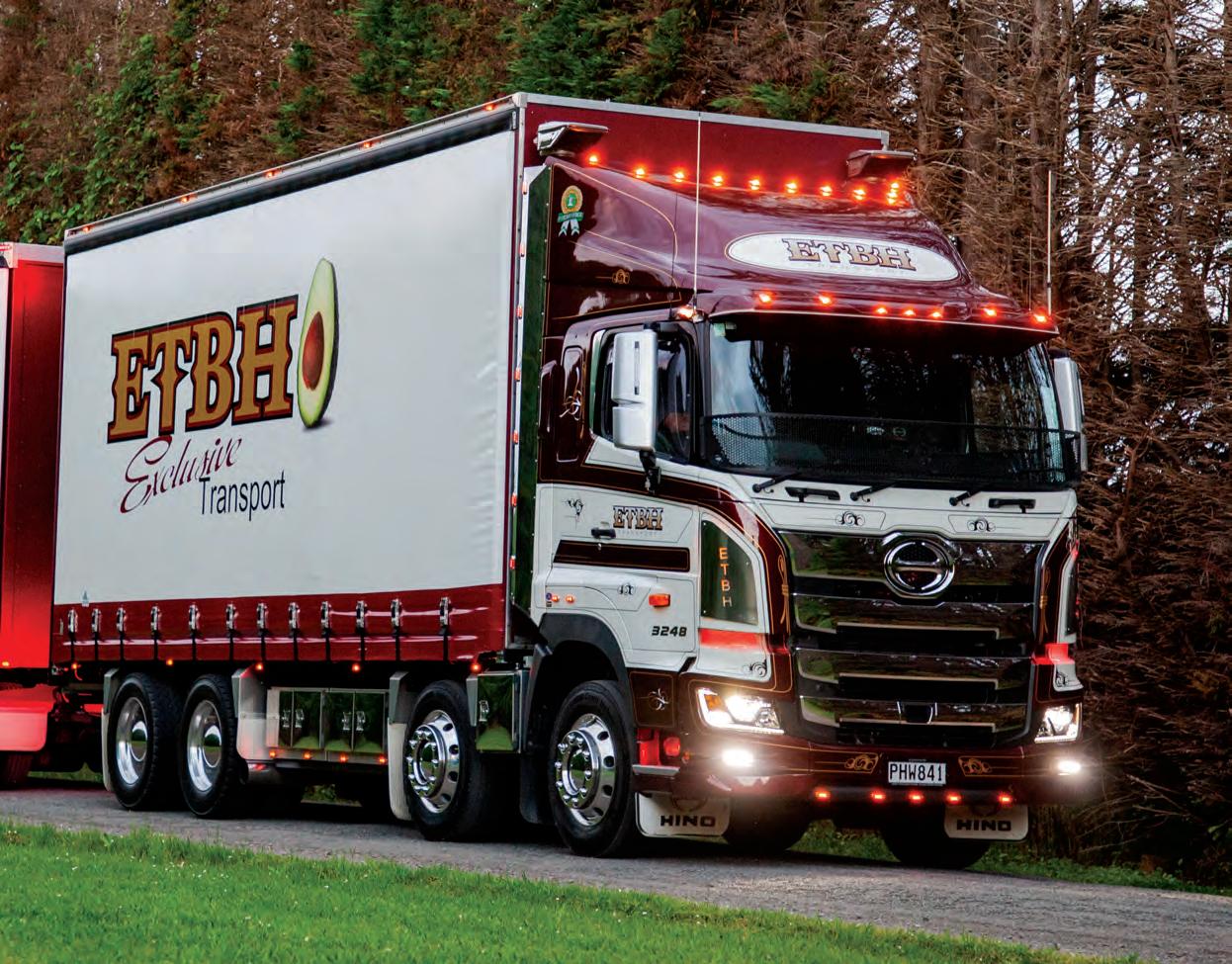
JJ says that one of the best things about the new 700 is its ride comfort. “I can’t get over it, for an eight-wheeler. With the load-share front axle and a fully air-suspended cab, it’s faultless.”
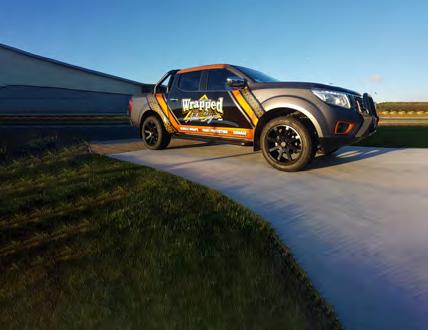
If you haven’t surmised yet, JJ’s a fussy operator when it comes to his gear. “We like the truck to go out clean every day – that’s a massive thing for me, presentation is my No.1,” he says.
The man in charge of keeping JJ’s Hinos spotless is Rata Nikora. He and JJ go back to the days when JJ operated Dune Rider buses. “He hasn’t lost his skills, and I have never seen such dedication to a job. If the truck is going out at 7am, he will
show up here at 3am or 4am. Then he goes to his day job! It’s hard to find someone like that these days.”

We couldn’t end this story without acknowledging JJ’s significant trucking anniversary. His working life started at the Ministry of Works when he was 18. “I bought an old Austin fourwheeler, petrol, with pushout windows, and carted the men around the roadworks.
“I used to clean a truck for Frankie Zivkovich, and after


• Truck and Fleet Signage • Paint Protection Film (PPF) • Vehicle Wraps • Signage Web. www.wrappedautosigns.co.nz | Email. wrappedautosigns@outlook.co.nz | Phone. Follow us
about a year, he offered me his business as a general carrier. I started that with a Perkins Commer. I would do everything and anything and built it up to six or seven trucks. We were one of two transport companies in Kerikeri of the day, up against United Carriers and Kerikeri
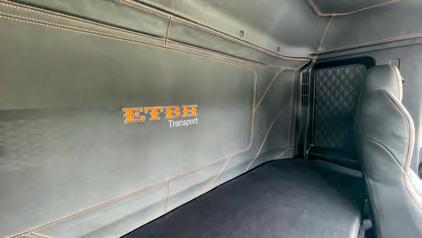
Transport, which was sold to United. I sold out of that after losing the old man at work one day; he was only 50 at the time,” JJ says.
While JJ still had trucks running produce to Auckland, he backed off a bit and went into the coaches for a few years. “I think we brought in
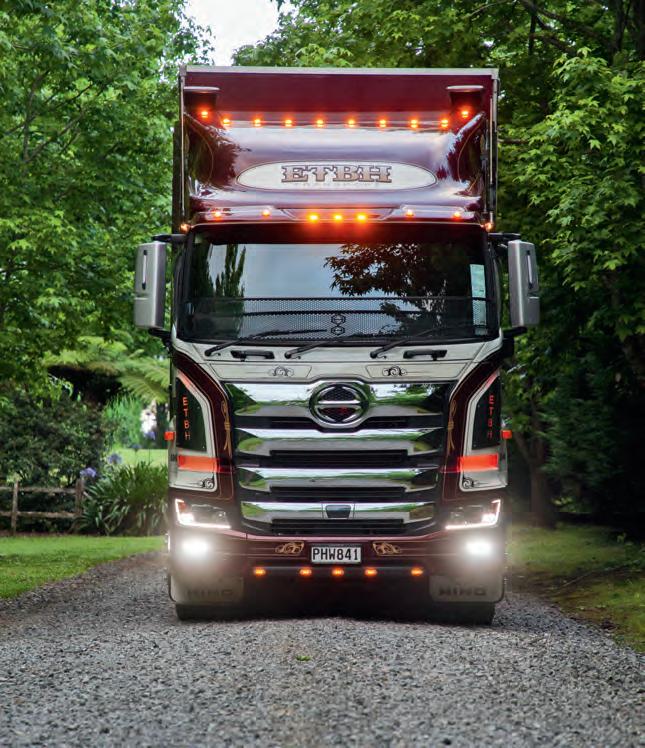
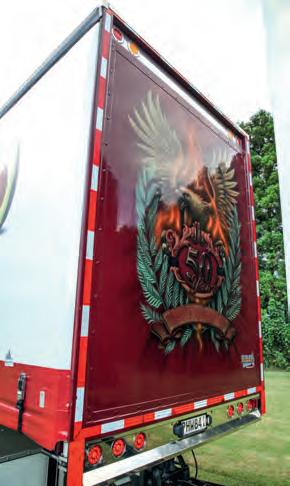
one of the first Ford Louisvilles out of Australia. We set that up with two curtainsiders and had that for four or five years before two young guys bought me out.”

JJ’s move into boat haulage came about over a few years.
“I helped out a gentleman in Kerikeri one day. His name

was Peter Jacob, from Levin. All I did was make him welcome, wash his truck for him, and he obviously never forgot that. A couple or three years down the track, I was coming out of Wellington one Friday night with a load of wine on, and Peter rang me up. He said, ‘J, I want to sell out, but I want you to have it.’ I said to him, ‘I don’t know anything about boats, mate,’ and he said, ‘It’s purely common sense and being careful. I want you to do it.’
“I thought about it for all of 15 minutes before I rang him back to take it. That was more than 12 years ago, and we still have a fantastic relationship.”
Although Exclusive Boat Haulage has no direct competition in Northland, JJ works with everyone in the industry when he can. “It’s been successful, and I always put it down to if you give the business 100% and look after your customers, there’s no such thing as failing.”
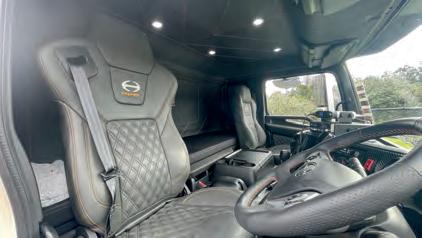
 Custom artwork to celebrate JJ’s 50 years in trucking.
Above: The custom interior is “slightly overkill”, JJ admits, but adds a classy finishing touch.
Custom artwork to celebrate JJ’s 50 years in trucking.
Above: The custom interior is “slightly overkill”, JJ admits, but adds a classy finishing touch.
RVE BESPOKE INTERIORS
As we alluded to in the story, JJ’s new Hino 700 has had the full interior makeover treatment by the craftsmen at RVE. The name RVE may be new to many within the transport industry, however managing director David Stanners explains the company is now 55 years old.
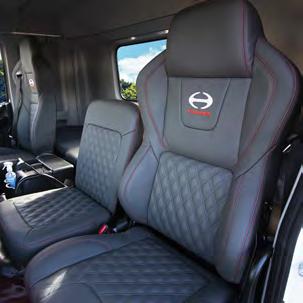
“The business was started by Dad, Victor in 1968. Dad had a real passion for the automotive industry and working with leather, he created some of the most bespoke car interiors in the world. You could say he brought couture to cars. Dad was born on the back seat
of a Model A Ford, maybe that’s where his passion for car interiors stemmed from,” David says with a laugh.
Victor’s skillsets were fortunately handed down to sons David, Mark and Jim, strengthening the family business into the next generation. “We have honed the trade that Dad taught us, staying true to the core business. However, as markets have opened, we have seized those opportunities to offer our clients the complete package.
“It’s this philosophy that has opened the doors to the heavy-transport sector. We were approached by OEM truck dealers looking to offer a ‘next level’ interior option, so not dissimilar to the interiors we were doing for OEM car dealers. That was all we needed in the way of an invitation, the next thing we had Ivecos and Scanias rolling into our workshops. Now word is getting around the streets, we have the likes of JJ’s new Hino project coming to us for
the leather treatment. Working with the owners and drivers of the trucks you truly feel the intense level of passion they have for their ride,” explains David.
“That level of pride goes hand in hand with what we have to offer at RVE. Bottom line, we allow our clients the opportunity to customise an interior for their rig. RVE prides itself on designing packages that go above and beyond the mainstream constraints of mass production.”
PREMIUM LEATHER TRUCK INTERIORS
For over 50 years, RVE has been recognized as New Zealand’s leading Leather Interior and OEM Accessory supplier

• We design, fabricate and outfit bespoke leather interiors for new truck builds to your specific requirements and colour pallet


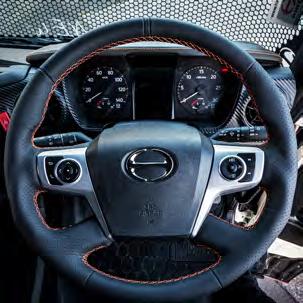
• Our sports seat upgrades and leather interior conversions are recognised internationally as being at the pinnacle of comfort and style
• RVE works with you to create a statement of personality and self-expression - call the team now and start creating your signature design
CONTACT US ON +64 9 582 0000 OR OFFICE@RVE.CO.NZ | RVE.CO.NZ
Rick Kosterman
Rick Kosterman, on his half-hour break, had just grabbed a coffee and pie in Sanson when Alison Verran drove past and noticed the unusual load he had in tow.
Rick enjoys driving for Hawke’s Baybased company Whitfield Transport. “They’re an awesome company to work for,” he says. He is Taupo-based, driving a Kenworth K200, powered by a 600hp Cummins engine. He travels throughout the North Island, carting general freight. “You name it, we carry it.”
The load that caught Alison’s eye was part of a crane destined to help create a wind farm at Raglan. Rick was heading to Taupo for the night, then on to Raglan the following morning.
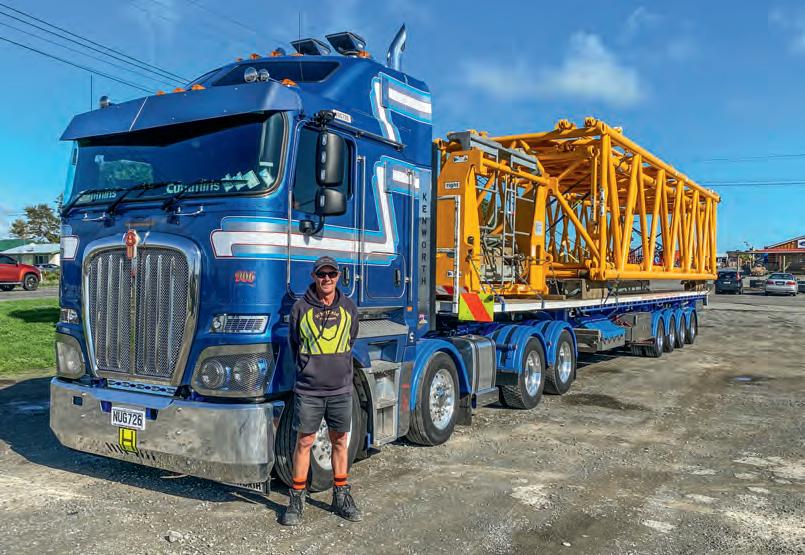
A 40-year driving veteran, Rick was originally a storeman, driving forklifts at the NZ Apple and Pear Board. “The guys let me drive the old TK Bedfords around the yard. I loved it and decided to do it as a career… and I’m still doing it!
“The two things I like most about driving are having the variety in the job and being able to take in the amazing
Andrew Geuze
New Zealand scenery every day.” Rick considers one of the main issues within the industry is the calibre of many of the truck drivers on the road, with such a major driver shortage.

Andrew Geuze was fuelling up at the Caltex Truck Stop at Sulphur Point, Tauranga, when Alison Verran stopped to have a chat. Based in Mt Maunganui, Andrew carts two loads of milk powder a day from Fonterra Reporoa to Sulphur Point in a Volvo FM540 for Booth’s Transport.
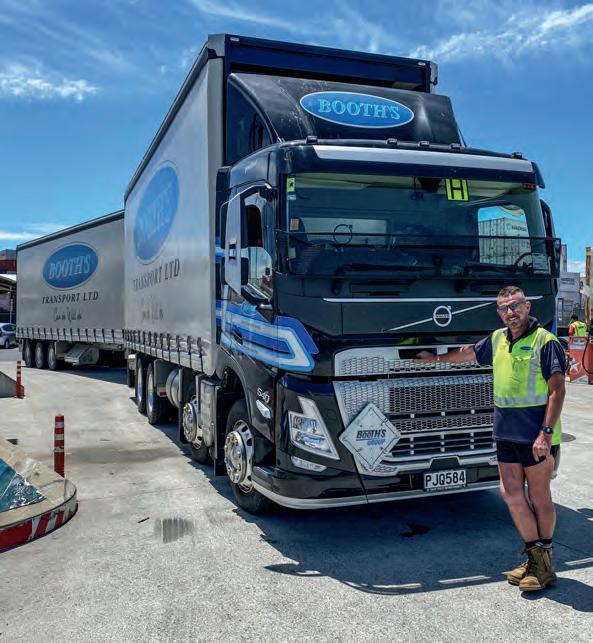
“I used to be a kiwifruit grower in Gisborne,” says Andrew. “I’ve wanted to drive trucks since I was five. I loved the sound of a V8 Scania. I used to cart kiwifruit for my dad in an old TK Bedford when I was 15. After the kiwifruit, I just wanted a job I would stick with. I’ve been driving for 11 years so far and prefer it when I can cart up to 58 tonne, making the loads more efficient. I like making that truck work!
“One of the issues with the industry these days is the lack of reimbursement to the drivers… I’m talking industry-wide. With some companies, you work your guts out and get no thanks for multiple years of service. My current employer is great. I have no issues there at all.”
When presented with the vexing question, ‘Rugby or soccer?’, Andrew’s response was, “Definitely rugby, it’s got more punch to it. It’s more testing on the players.”
When presented with vexing question No.62: ‘Pyjamas or the full monty?’, Rick laughed and said, “Not either –somewhere in between.”
JUST TRUCKING AROUND www.trt.co.nz
52 New Zealand Trucking February 2023
JUST TRUCKING AROUND www.trt.co.nz OVERSEAS

Mariusz Selke
The A15 is the main motorway running east from Rotterdam, serving as a transit route for trucks heading into Germany and further north. Scandinavian-registered trucks have largely been replaced by Eastern European trucks on international transport, so it is always nice to see a Norwegian, Swedish or Danish truck further south.
Paul O’Callaghan met Mariusz Selke, a Polish-born trucker driving for Sehested Transport, which has two bases in Denmark – Fredericia and Herning – offering a wide variety of transport services from local distribution with vans to specialist movements utilising low-bed trailers for oversize loads.

Mariusz, who has been a driver for most of his life, was born in the south of Poland but now lives further north in the country with his wife and two teenage sons. The former bodybuilder says he still loves his job and is grateful to have an understanding wife who allows him to follow his passion. He was full of praise for his new Volvo FH460 with its low-ride chassis, matched to a skeletal trailer that keeps the overall height at 4m, essential for low bridges in Holland. His destination was Denmark, with two 20ft containers he had collected in Europoort, Rotterdam. Apart from heavy traffic, the beaming Mariusz said there was nothing he disliked about his job.
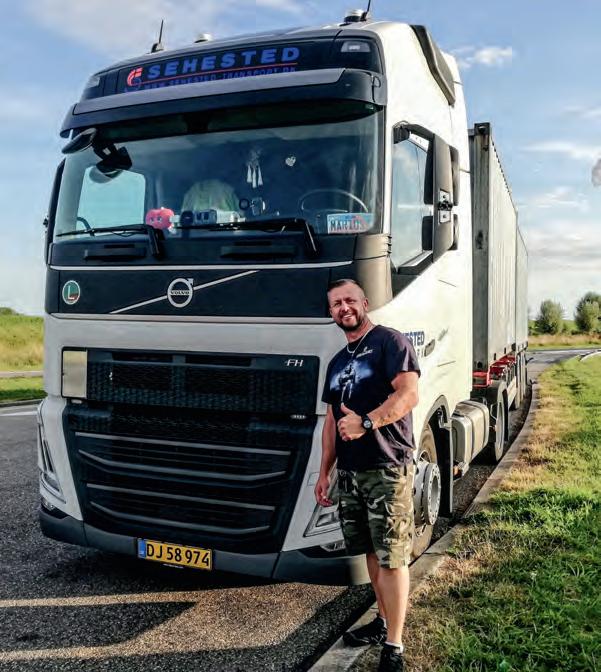
JUST TRUCKING AROUND www.trt.co.nz
FIND OUT MORE WWW.SPT.CO.NZ TD30737 NORTHLAND Mark Tucker021 276 6428 AUCKLAND Steve Willcocks027 525 0015 Mitchell Redington021 555 326 WAIKATO Adam McIntosh027 603 1023 Andrew Haberfield027 4798 588 BAY OF PLENTY - GISBORNE Andrew Haberfield027 4798 588 TARANAKI Adam McIntosh027 603 1023 HAWKE’S BAY – MANAWATU – WANGANUI – WELLINGTON Mark O’Hara027 2466 954 SOUTH ISLAND Mike Gillespie027 4322 491 Chris Gray027 2816 840 Steve Herring021 377 661 96-98 Wiri Station Road PO Box 76463 Manukau City, Auckland, NZ PHONE (09) 262 3181 FAX (09) 278 5643 *TRP assist 0508 22 55 77 EMAIL: info@spt.co.nz www.spt.co.nz FIND OUT MORE WWW.SPT.CO.NZ 96-98 Wiri Station Road PO Box 76463 Manukau City, Auckland, NZ PHONE (09) 262 3181 FAX (09) 278 5643 *TRP assist 0508 22 55 77 EMAIL: info@spt.co.nz FIND OUT MORE WWW.SPT.CO.NZ NORTHLAND Mark Tucker021 276 6428 AUCKLAND Steve Willcocks027 525 0015 Mitchell Redington021 555 326 WAIKATO Adam McIntosh027 603 1023 Andrew Haberfield027 4798 588 BAY OF PLENTY - GISBORNE Andrew Haberfield027 4798 588 TARANAKI Adam McIntosh027 603 1023 HAWKE’S BAY – MANAWATU – WANGANUI – WELLINGTON Mark O’Hara027 2466 954 SOUTH ISLAND Mike Gillespie027 4322 491 Chris Gray027 2816 840 Steve Herring021 377 661 96-98 Wiri Station Road PO Box 76463 Manukau City, Auckland, NZ PHONE (09) 262 3181 FAX (09) 278 5643 *TRP assist 0508 22 55 77 EMAIL: info@spt.co.nz www.spt.co.nz FIND OUT MORE WWW.SPT.CO.NZ 96-98 Wiri Station Road PO Box 76463 Manukau City, Auckland, NZ PHONE (09) 262 3181 FAX (09) 278 5643 *TRP assist 0508 22 55 77 EMAIL: info@spt.co.nz FIND OUT MORE WWW.SPT.CO.NZ TD30737 NORTHLAND Mark Tucker021 276 6428 AUCKLAND Steve Willcocks027 525 0015 Mitchell Redington021 555 326 WAIKATO Adam McIntosh027 603 1023 Andrew Haberfield027 4798 588 BAY OF PLENTY - GISBORNE Andrew Haberfield027 4798 588 TARANAKI Adam McIntosh027 603 1023 HAWKE’S BAY – MANAWATU – WANGANUI – WELLINGTON Mark O’Hara027 2466 954 SOUTH ISLAND Mike Gillespie027 4322 491 Chris Gray027 2816 840 Steve Herring021 377 661 96-98 Wiri Station Road PO Box 76463 Manukau City, Auckland, NZ PHONE (09) 262 3181 FAX (09) 278 5643 *TRP assist 0508 22 55 77 EMAIL: info@spt.co.nz www.spt.co.nz FIND OUT MORE WWW.SPT.CO.NZ 96-98 Wiri Station Road PO Box 76463 Manukau City, Auckland, NZ PHONE (09) 262 3181 FAX (09) 278 5643 *TRP assist 0508 22 55 77 EMAIL: info@spt.co.nz NORTHLAND Mitchell Redington 021 555 326 AUCKLAND Steve Willcocks 027 525 0015 Mitchell Redington 021 555 326 WAIKATO Adam McIntosh 027 603 1023 Tim Finlay 021 452 805 BAY OF PLENTY - GISBORNE Tim Finlay 021 452 805 TARANAKI Adam McIntosh 027 603 1023 HAWKE’S BAY - MANAWATU WANGANUI - WELLINGTON Mark O’Hara 027 2466 954 SOUTH ISLAND Mike Gillespie 027 4322 491 Chris Gray 027 2816 840 Richard Reid 021 451 970 0223T1 NORTHLAND Mitchell Redington 021 555 326 AUCKLAND Steve Willcocks 027 525 0015 Mitchell Redington 021 555 326 WAIKATO Adam McIntosh 027 603 1023 Andrew Haberfield 027 4798 588 BAY OF PLENTY - GISBORNE Tim Finlay 021 452 805 TARANAKI Adam McIntosh 027 603 1023 HAWKE’S BAY – MANAWATU WANGANUI – WELLINGTON Mark O’Hara 027 2466 954 SOUTH ISLAND Mike Gillespie 027 4322 491 Chris Gray 027 2816 840 Steve Herring 021 377 661 FIND OUT MORE WWW.SPT.CO.NZ 96-98 Wiri Station Road PO Box 76463 Manukau City, Auckland, NZ PHONE (09) 262 3181 FAX (09) 278 5643 *TRP assist 0508 22 55 77 EMAIL: info@spt.co.nz NORTHLAND Mitchell Redington 021 555 326 AUCKLAND Steve Willcocks 027 525 0015 Mitchell Redington 021 555 326 WAIKATO Adam McIntosh 027 603 1023 Andrew Haberfield 027 4798 588 BAY OF PLENTY - GISBORNE Tim Finlay 021 452 805 TARANAKI Adam McIntosh 027 603 1023 HAWKE’S BAY – MANAWATU WANGANUI – WELLINGTON Mark O’Hara 027 2466 954 SOUTH ISLAND Mike Gillespie 027 4322 491 Chris Gray 027 2816 840 Steve Herring 021 377 661 FIND OUT MORE WWW.SPT.CO.NZ 96-98 Wiri Station Road PO Box 76463 Manukau City, Auckland, NZ PHONE (09) 262 3181 FAX (09) 278 5643 *TRP assist 0508 22 55 77 EMAIL: info@spt.co.nz FULL SAFETY SYSTEMS STANDARD ACROSS THE RANGE NORTHLAND Mitchell Redington 021 555 326 AUCKLAND Steve Willcocks 027 525 0015 Mitchell Redington 021 555 326 WAIKATO Adam McIntosh 027 603 1023 Andrew Haberfield 027 4798 588 BAY OF PLENTY - GISBORNE Tim Finlay 021 452 805 TARANAKI Adam McIntosh 027 603 1023 HAWKE’S BAY – MANAWATU WANGANUI – WELLINGTON Mark O’Hara 027 2466 954 SOUTH ISLAND Mike Gillespie 027 4322 491 Chris Gray 027 2816 840 Steve Herring 021 377 661 FIND OUT MORE WWW.SPT.CO.NZ 96-98 Wiri Station Road PO Box 76463 Manukau City, Auckland, NZ PHONE (09) 262 3181 FAX (09) 278 5643 *TRP assist 0508 22 55 77 EMAIL: info@spt.co.nz FULL SAFETY SYSTEMS STANDARD ACROSS THE RANGE
SHIFTUP GIVES ASPIRING TRUCKIES AN EXTRA FOOT IN THE DOOR
their learning journey.
and understanding of the industry,” he says.

“It is a great first step and something we get all new students to complete.”
Jake Terrell completed MITO’s ShiftUp microcredential while still at school, with the aim of becoming a truck driver.
“I was working part-time at Steve Murphy Limited, while still at school. I always wanted to get work experience and was waiting till I was old enough to be able to do it,” he says.

“This programme definitely gave me a head start in the industry,” says Jake. “You can start with ShiftUp while at school to see if the industry is for you, and then you have some skills behind you to move onto the next thing,” he says. “It gives you an extra foot in the door.”
MITO – a division of Te Pūkenga –the New Zealand Institute of Skills and Technology, supports career pathways for the commercial road transport industry. MITO offers a range of micro-credentials and qualifications that align to Ia Ara Aotearoa Transporting New Zealand’s Road to Success programme. And to capture the attention of those still at secondary school and join the workforce, ShiftUp
ShiftUp offers secondary school students in Years 11, 12 and 13 the opportunity to try the commercial road transport industry. It involves a mix of eLearning theory and practical experience in the workplace, covering the topics of industry knowledge, health and safety, documentation, systems and components, driving hazards and risk reduction strategies. This micro-credential can lead to a number of career opportunities – including driving, warehousing, distribution, logistics and administration services; and subsequently further on-job qualifications.
ShiftUp is a great way for secondary students to try the industry, step into employment and continue
Transport companies involved with ShiftUp in the past include Williams and Wilshier. “We have said for a long time that it is a shame that we can’t have young people out in trucks,” says Warwick Wilshier, managing director.
“However, we now have means to expose young people to the industry, enhancing an enthusiasm for trucking.”
Chris Murphy, supervising managing director at Steve Murphy Limited, says they take all new students and potential employees on the ShiftUp journey because of the essential learning they receive from the programme.
“ShiftUp is super beneficial to students, it is a great way for students to navigate through these processes and give them a first look
As well as ShiftUp, MITO offers an Introduction to Commercial Road Transport micro-credential; The New Zealand Certificate in Commercial Road Transport (for Heavy Vehicle Operators); the New Zealand Certificate in Commercial Road Transport for Specialist Drivers for Heavy Haulage Transportation and Transportation of Logs, a Driver Safety in Commercial Road Transport micro-credential; Mass and Dimensions micro-credential, and a Heavy Combination Vehicle Loading Fundamentals micro-credential.
MITO works in consultation with key partners in the transport sector, including NZ Heavy Haulage Association, NZ Log Transport Safety Council, Road Transport Association New Zealand, Ia Ara Aotearoa Transporting New Zealand, National Road Carriers, and New Zealand Trucking Association.
For more information about ShiftUp and how MITO’s training programmes could benefit you, visit mito.nz.
 - Road Transport Microcredential is the connector to industry.
- Road Transport Microcredential is the connector to industry.
PROMOTIONAL 54 New Zealand Trucking February 2023
More than 32,000 people are employed as truck drivers in New Zealand – but with 93% of all freight in New Zealand carried by road, more are needed.
Boost your career. Get qualified.
Designed in consultation with industry, MITO’s New Zealand Certificate in Commercial Road Transport Skills (Level 3) will provide you with the entry-level skills and knowledge to undertake tasks such as vehicle loading, yard person duties and basic driving.
mito.nz/crtskills
 Story by Carl Kirkbeck
Photos by Carl Kirkbeck and as credited
Story by Carl Kirkbeck
Photos by Carl Kirkbeck and as credited
FARM FRESH
In 1967, when the Coxhead family bought their farm in Kaipaki on the outskirts of Hamilton, they needed a new farm truck. Over the years, an endless list of chores has led to a succession of trucks, including the current 1988 Nissan-Diesel CWA45 6x4 workhorse.

Sit around the dinner table with Graeme Coxhead and his son Peter and find yourself in the presence of two of the most jovial hard cases you are ever likely to meet. Their laugh-a-minute tales of farm life come so thick and fast that you’ll find your ribs hurting and the tears rolling as if you had watched a Friday night Benny Hill marathon.
But among the laughter and frivolity generated by the fables of rural antics and experiences, you find solid business nous.
“We have always owned our own
gear,” explains Graeme. “We needed a truck for the new farm. There was a lot of work ahead of us – races to construct, fertiliser to collect. You want these materials on site exactly when you need them, not two weeks later because of transport delays. On a week-long holiday at Mt Maunganui, I saw an old Thames Trader that a local builder had for sale. It was powered by a four-cylinder Fordson Major diesel. Unfortunately, it wasn’t a tipper, so we were manually loading and unloading it by shovel – not ideal, and something had to change.
“So my dad tracked us down a three-stage hydraulic ram to start with. Then he found an old body for sale in a wrecker’s yard in Huntly. We jumped into the old Trader and got straight over there to the wreckers and purchased it, as well as a stock crate they had sitting there. We loaded it all up and headed back to the farm and into the workshop to start fitting it all up to the new truck. We were bigrigging now, no more shovelling,” laughs Graeme. “Gee, we did some loads in that old girl.
“We used to get our metal from
AFTERLIFER
the old quarry at Karapiro, down by the dam. We would load it until the mudflaps dragged on the ground – that was how you scaled back in those days,” says Graeme. “You would have the foot to the floor, full bore in first gear and she would just make it back up and out of the pit. We definitely got a sweat up on the brow of the old girl, that’s for sure.
“But you always want to go bigger. So, eventually, we ended up getting a 300 petrol TK Bedford, and it did a good job. The mileage was starting to get up there, and with it also being petrol, we started to look for another replacement. “Dad was at a friend’s wedding in Hawera and got chatting with some good mates, who pointed him to a near-new, 19,000km 4x2 Commer Hi-Line. It was fitted out with a 21ft wooden deck and an underbody hoist. It was a damn scary thing to tip. You would be tipping off and watching it in the mirrors, and it’d be leaning way over. You’d think, ‘Geez, it’s going to go over,’ but it never did, thank goodness. That old Commer was a damn good truck to us as well. It only ever really let us down a couple of times.
“I was in it one day – would be 30 years ago now – heading back to the farm with another load from the quarry. It was raining flat out, and up ahead, I saw this cop waving me over.
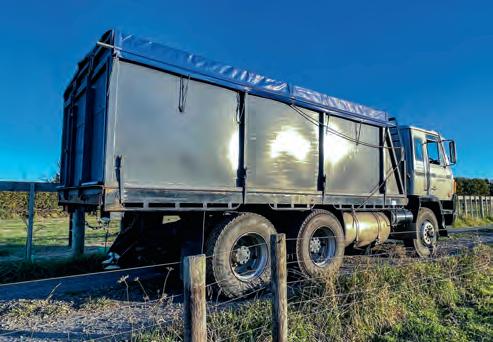
He put me on the scales, and I was a ton and a half over on the front axle. The cop absolutely read me the riot act and told me how bad and naughty I was. He gave me a $1200 fine and sent me on my way. So back in the cab, I got. I pulled out onto the road and off I went. Next thing he is back behind me again, lights flashing and sirens screaming. I pull over, jump out and ask him, ‘What the f@&k do you want now?’, to which he accused me of taking his ticket book. I told him, ‘I haven’t got your effin’ ticket book. All I have is one of the effin’ tickets out of it that you just gave me.’ So he calmed down a bit and had another look and it was in his back pocket.
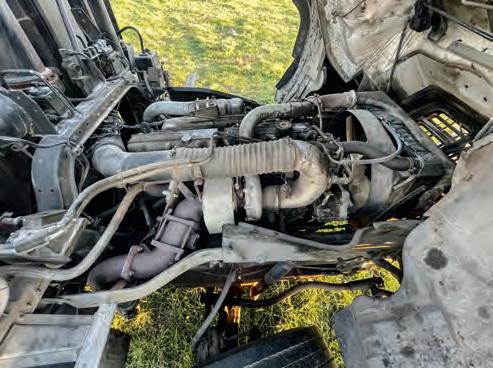


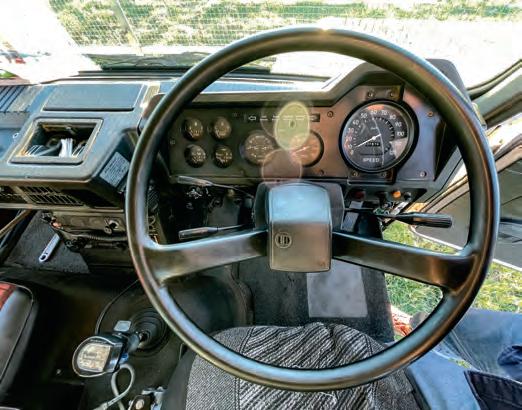
“The thing that was a bit on the nose was that he was actually a Wellington-based cop who had been to Auckland for a court case. He was now making his way back home to Wellington, stopping people along the way, issuing them tickets to help pay for his trip up north. What a guy. However, the one nugget of advice he mentioned was that had we been in a 6x4, he would not have even batted an eyelid and would have left us alone. So that was it, we needed to find ourselves a 6x4.”
Graeme says they started looking immediately. “First up, we came across a D-series Ford, but it had far too many Ks
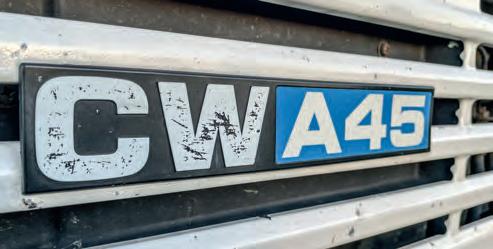 1) A steering wheel from an era before cruise control and cell phones.
1) A steering wheel from an era before cruise control and cell phones.
1 2 3 4 New Zealand Trucking Februar y 2023 57
2) The bulletproof 15-speed Roadranger. Note the exposed park brake plumbing positioned at the ready to rip open an unsuspecting driver’s kneecap as they head for the bunk. 3) Infotainment system and climate air conditioning – 1980s style. 4) The mighty PE6-T, home to 300 intercooled and turbocharged snorting Palominos.
on the clock. So we kept searching.
“Another chance conversation with a good mate – a manager for Waitomo Brenan – alerted us to the Nissan Diesel. It was sitting at the Pukekohe depot as it could not be legally used. The tank on it was Australian and could not be certified for New Zealand. So in the car and off to Pukekohe it was.

“One of the drivers took us for a blast up the road, and it was pretty easy to see that this was the truck for us. Waitomo Brenan already had a new Ford on the way to replace the Nissan Diesel, so a three-way deal was put together. We would buy the Nissan Diesel from Waitomo Brenan for $65,000. They would get their new Ford, with our old Commer being the trade-in for the new Ford. Deal done. The very next morning, we got a call from Nissan Diesel in Auckland saying, ‘We believe you have bought a secondhand CWA45?’ I said, ‘Yes, we have,’ to which they responded with, ‘We will give you $75,000 for it.’’’ I replied, ‘No thanks. We are quite happy with our purchase.’ So, yes, it was a good deal, and we have never looked back.”
About six weeks later, the new Ford turned up at Waitomo Brenan, and the Nissan Diesel was ready to collect. The first thing they did when Graeme and Peter got it home was remove the decommissioned tank.

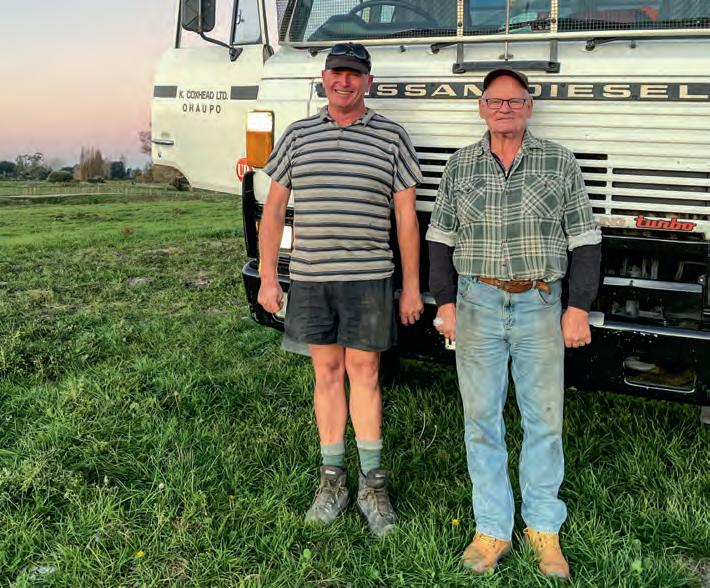

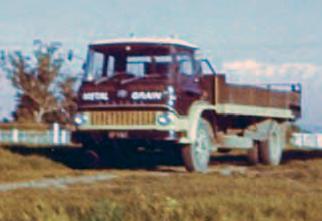

“The old alloy tank ended up in the ground beside the cowshed as an effluent tank – a welcome bonus. It was then off to the team at Cambridge Welding to have the tipping flat deck and hydraulics fitted. Cambridge Welding do all our work. They are a great bunch who has always been there to help us out when we have needed them,” says Graeme.
“It has been a fantastic truck and continues to be. You just can’t fault it. It is so versatile. One day, it’s silage bales, the next its fert, then palm kernel. There is never a dull moment for it; the wheels are always turning.
“The places that we have taken the old Nissan Diesel would make your hair curl. Seriously, with the Roadranger, you just grab deep reduction, and she’ll crawl out of just about anywhere.
“It has been a great investment. The first night after purchasing it, I was laying awake thinking, ‘What have I done
spending $65k on a farm truck?’ Now 30 years on, she has more than proven her worth, and if we keep looking after her, there might just be another 30 in her.”

Peter jumps in at this point and says, “Hey, Dad. Tell Carl about the time we split a plastic airline in the Commer heading to the works on Sunday morning with a load of bulls for the Monday kill and ended up stopped in the middle of the northbound lanes right outside the orchid house on the Bombay Hills and blocked the traffic.” With that, Graeme’s eyes light up.
Oh geez, here we go again…
1 2 3 4 5 6 58 New Zealand Trucking February 2023
1) The CWA45 was one of the first trucks to have the Donaldson air ram factory-fitted. 2) The petrolpowered 300 TK Bedford was owned at a time when petrol was affordable. 3) The 4x2 Hi-Line Commer that gave way to the 6x4 CWA45 after a $1200 overloading fine. 4) The CWA45 as it arrived, retired from the Waitomo Brenan fleet. 5) On the farm, now with its new Cambridge Welding tipping flatdeck fitted. Photos: Coxhead collection. 6) The laugh-a-minute duo: Graeme Coxhead (right) and his son Peter.

® = registered trademark of the Ver-band der Automobilindustrie e.V. (VDA) www.nzblue.co.nz | 0800 ADBLUE NZ Owned, NZ Operated, OEM Approved
IF THE CAP FITS
Story by Dave McCoid
In a world besieged with new, cleaner propulsion options and an increasingly myopic view that internal combustion no longer has a place, we give you the Chevrolet Silverado Z71 LTZ. Although few would disagree that beyond plain old desire, such carriages fulfil a niche transport requirement in markets like ours, we found the big fella wasn’t at all short of surprises.
The two pamphlets on the passenger seat pretty much tell the entire story without having to read a word. In this instance, the passenger seat belonged to the Chevvy Silverado Z71
LTZ we were sitting in at GM Specialty Vehicles in Saville Road, Mangere, Auckland. Rochelle Nelson is national sales manager for the division here in ‘Godszone’, and as she handed over the keys, you could tell she genuinely loved this ‘big ‘ole trerk’ as they would say in South Carolina. There was little doubt in our hearts, looking out over the expanse of bonnet, that we too would soon feel the same way. It has a presence that makes
you feel better about yourself.
The LTZ is the flash Silverado Z71, with leather upholstery and all the bells and whistles. The brochure depicted an LTZ with a swanky-as tri-axle horse float in tow, the kind you see at posh eventing gigs or polo matches. The message was clear. If you need to cart something of substance a considerable distance, regularly, in comfort, and purchase price isn’t the overriding issue, this might just be your wagon.
Our mission for the LTZ was far humbler. Load ‘him’ up with a heap of stuff at the Thames office and head to the TMC Trucking Industry show in Christchurch. Rochelle had extended the
offer of use to us a week earlier, and it was at that exact moment that she became our new BFF.
First things first, though. Off to the international terminal at Auckland Airport to pick up Mike and Rose Williams, fresh off the bird from the West Island. Mike and Andy Neil host the On the Road podcast out of Australia and Mike also writes for Big Rigs He was coming to check out the show and have a lash in a couple of Kiwi jiggers at the same time. Shows, trucks, big utes, and like minds…. does life get any better?
If you are not a truck person, at 2063m wide, 5931m long and 1933m high, the Silverado is a big gig to take on. We, on the other
 Photos and video by Dave McCoid, Matt Smith and Milly McCauley
Photos and video by Dave McCoid, Matt Smith and Milly McCauley
60 New Zealand Trucking February 2023 LIGHT COMMERCIAL TEST
hand, had uttered our first ‘I want one’ within 200m of waving bye-bye to Rochelle. We might be heading into a brave new compact and electric world, but we’re emotional beings, and leaving the thump thump of a big bent-eight behind in the pages of history will not be easy.
Australian cargo onboard, it was off to Thames to load up, rest up, and then head for the back of a Cook Strait ferry at sparrow’s fart the next morning.
Unbeknown to us, the inclement conditions greeting us as we pointed the big silver snout south would form the backdrop to the whole trip. Our journey to the Garden City would take us via Motueka, where we would pick up Little Trucker Down Under star Milly McCauley. While in the Tasman, we, also chucked Big Mike into Retro Test 4-Star, ‘Rocky’ the Kenworth W-model,
with owner Ed Solly. They would form part of the Sollys Contractors contingent heading to the show. It was all on.
The first thing you notice is just how effortlessly this big brute of a ute covers the kilometres and how much comfort you enjoy as it does its thing. The seats are armchair-like, with leg and head room a giraffe couldn’t complain about. Milly looked downright lost sitting in the left rear corner.
The 10-speed auto is silky, but then so is the way power arrives to it via the 313kW (419hp), 624Nm (460lb/ft) 6.2litre V8. Like a lot of American kit, the output numbers don’t push the capability of the displacement in any way –it’s all about a compromise between output and longevity. That’s not saying it’s any slug either. When you want it to rattle the dags and ditch the 90kph Prius just south of Taihape, it’ll happily
get its 2544kg kerb weight, occupants, and cargo, up and humming. And if you’re muttering, ‘Yeah, but I bet you can see the fuel gauge plummeting,’ just hold that thought.
Having run a sweep on how many ‘pingas’ would go west to fill its tummy, we all passed out with shock at the Picton NPD when it clicked off at $220 – the first fill since picking it up. Our new friend had clocked about 10.6l/100km. Although the air was awash with Cupid’s arrows at this point, there were a couple of factors we had to take on board. Firstly, we had about 500kg max on the back – all the heavy stuff had gone down as freight – and, second, anyone who knows me will attest to my nana-like driving style, although Mike certainly gave it the pina colada at times. Key to the impressive consumption was the fact that when you’re in cruise
mode, it’ll run on four of its eight pots, only re-engaging the other four when they’re called up for service.
Off the ferry, and with the Whangamoas shut for major works, we got to enjoy the long way round to Motueka via the Korere-Top House Road and Motueka Valley Highway on a dark and stormy night.

A good rest had and having dispatched Mike to play Kenworths with Ed, we aimed for Murchison and the Lewis Pass. The weather was still horrible, but inside the mobile living room, life was sweet.
I could honestly motor along day in, day out, in the Silverado without feeling jaded in any way. The ride is softish without being doughy, and the handling ‘big’. No, I can’t tell you what ‘big’ handling means exactly –stable and positive? If you’re a big-truck person, you’ll get it. Maybe it means great handling if you understand
 Left: Big, frugal, and just lovely. Right: A big old tub for your stuff, but a tie rail mounted in the well rather than lashing eyes would be a whole lot better. Note the step in the rear corners of the bumper. They were handy.
Left: Big, frugal, and just lovely. Right: A big old tub for your stuff, but a tie rail mounted in the well rather than lashing eyes would be a whole lot better. Note the step in the rear corners of the bumper. They were handy.
the importance of the throttle pedal to directional happiness.



We cut a path beyond Murchison through the valley of the Maruia and over the Lewis.
For a vehicle of its size with AWD to boot, the lock is ‘eyebrow-raisingly’ good. I loved the hill-descent control – that was really cool. And I have to say it had one of the loveliest adaptive-cruise systems ever, speaking to its ability to just come into line smoothly without the nervous impulsiveness you sometimes get, even on ultra-mod cars.
All that said, it’s a ute that suits me and those like me. The Silverado would quickly become cumbersome and uncomfortable in the hands of the No.1 haircut, wrapped sunnies, double-cabbed ute fraternity who bury themselves up the chuff of whoever’s in front, and hunt their charges through corners
in an act of testosteronefuelled driving psychosis.
The thing that always strikes me when first entering the cabins of vehicles like this is what a shame the OEMs don’t get big-truck designers to do the ute and light truck interiors (surely there’s an old GMC General or Astro95 designer still kicking somewhere?). The cockpit of the Silverado looks like a big car inside, not a small truck.
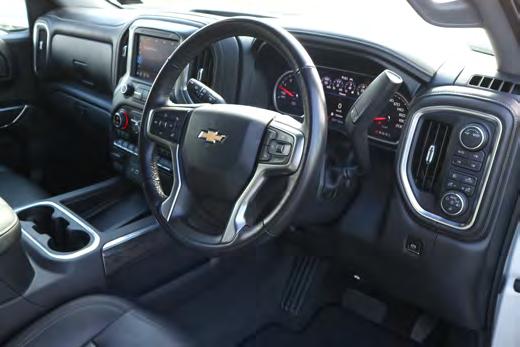
Two things sell a vehicle to a blokey bloke; outside looks and interior – read dashboard in regard to the latter. A US truck cab designer would likely have made the dash wrap around, and chucked a couple of extra gauges in the wrap. With that gorgeous big bonnet, the sense of dominion imbued from the driving experience would empty the showrooms faster than they could ever make them. The bonus, of course, would be all switchgear at a unform
reach… as it is in a big truck
All too soon, the glorious expanse of North Canterbury become the urban reality of the region’s capital. It’s here that the Silverado is least at home. Again, if you’re a bigtruck person, it’s immensely doable. I motored around no problem and even took it into the car park of the airport McDonald’s. Backing it into a parking possie, I could still get out comfortably with both my beer-baby and a parked car next to me. Of course, speaking to the truck thing again, the key is backing it into everywhere – made uber-easy via a network of cameras, including a 360° jobby. If you think you’re going to drive it nose first into the supermarket car park and still enjoy a stress-free
existence, then prepare for a breakdown of the nervous variety.
The big Chevvy Silverado Z71 LTZ sat outside the New Zealand Trucking Media tent right through show weekend and attracted plenty of interest. People asking what we thought. ‘How does it go?’ ‘What’s the economy like?’ ‘Can I have a look inside?’ And ‘how much does it cost?’ Then to the ultimate questions, ‘What do ya reckon? Would you have one?’
New world aside, if you’re looking for one last, glorious hurrah, the Z71 LTZ must surely be on your short list. Suffice to say, my answer was… ‘OMGoodness, would I ever!”

SPECIAL THANKS 1 2 3 4
Thank you to Rochelle Nelson and the team at GM Special Vehicles for the opportunity to see out ’22 in such glorious style.
62 New Zealand Trucking February 2023
1) A wonderful expanse. 2) The South Island rolls effortlessly beneath the tyres while the occupants stretch out and yarn away. If you’re a cruiser, this is bliss. 3) It may have a big snout but there’s still some motor tucked away out back. 4) Like truck owners who buy show pieces and then say they prefer flying under the radar…it’s never going to happen. The Z71 attracts no end of looks and many questions.
Drawbar finder
The intelligent solution for coupling your truck and trailer
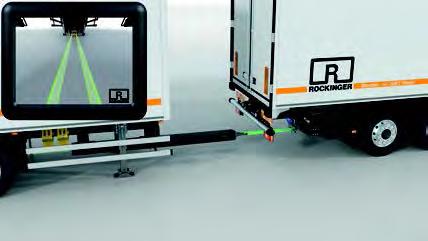

The Drawbar Finder provides users with easy-to-use support for coupling processes, which is a particular advantage when using fixed drawbar trailers.
• Available for commonly used remote controls
• Visual guidance in two directions allows precise coupling
• Damage to tractors and trailers is prevented
• Compatible with many OEM displays
• Customisable configurations
Available as a Retrofit Kit Member of JOST World JOST New Zealand Ltd | www.jostnz.co.nz | Ph 0800 567 869 | sales@jostnz.co.nz
LIGHTS BY NIGHT
Jaymin McGuire has pursued photography for more than 10 years, recently getting into night photography. He combined this with his love for trucks to show the Northern Rural Haulage fleet from a different perspective.
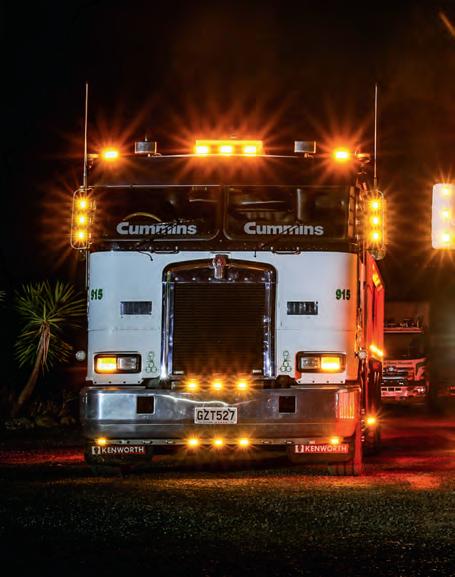

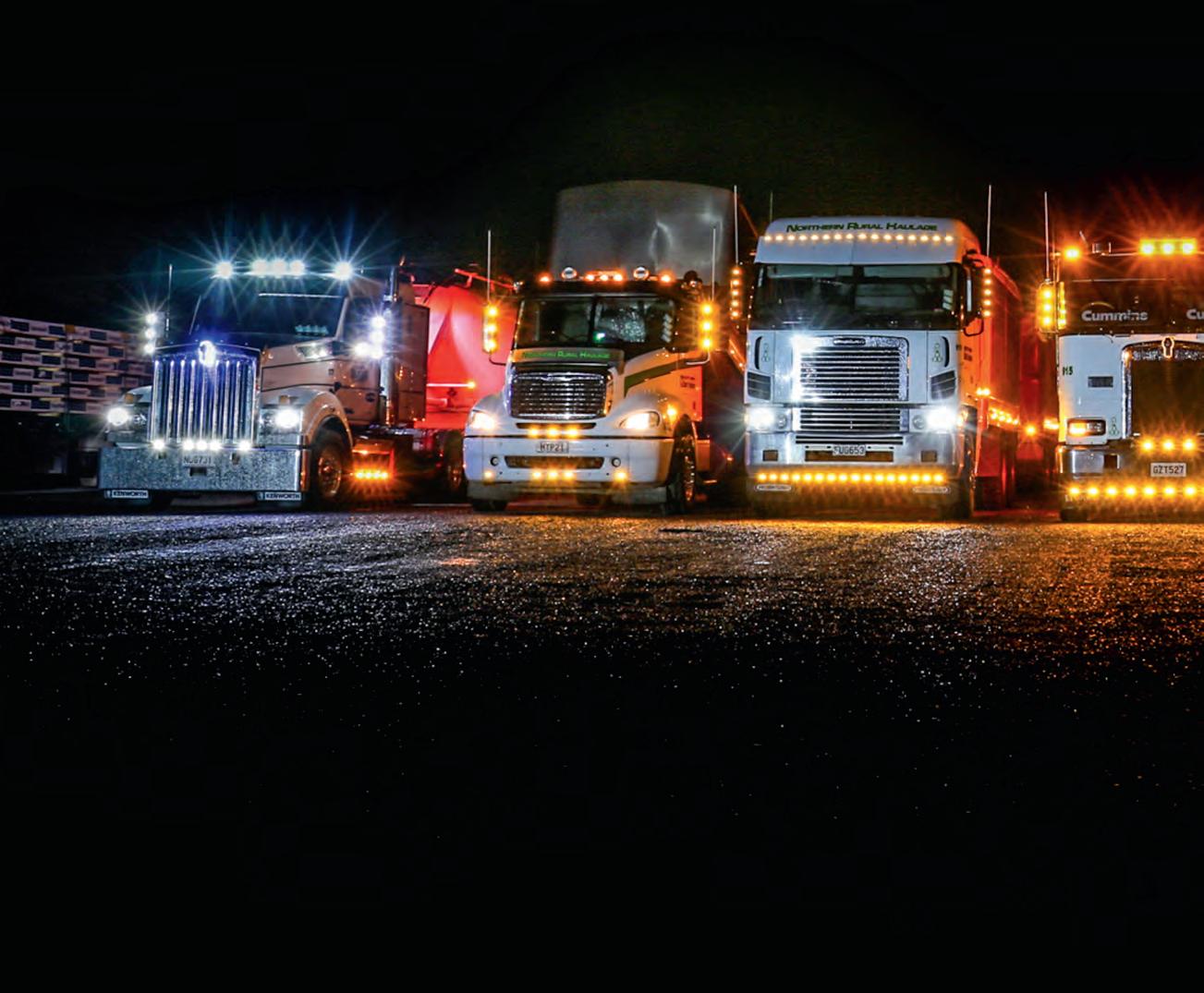
Most of Northern Rural Haulage’s customers are farmers. After more than a decade in catering to farmers’ specific needs, owner Doug Wilson reckons he knows what farmers want better than anyone.
“They want to deal with a reliable company with longevity. When they need feed, fert or metal, they need a quick response. It’s
important to us that our customers know when they order supplies or materials to be delivered on a certain day that we deliver,” he says.

Doug formed Northern Rural Haulage in 2009 when he saw a need for a Northland-wide ruralhaulage service to supply farms and construction with the materials they need when they need them. The company has since expanded to include rural-haulage runs
south to the Waikato and Tauranga.
Northern Rural Haulage is proudly family-owned and operated. Doug’s son Kyle started in the company as a driver and, more recently, has moved into the office full-time. Kyle focuses on the dispatching, while Doug is does the pricing and handles the customer side of things. The company has a 13-strong team. Doug says having a great, dedicated
Story and photos by Jaymin McGuire
64 New Zealand Trucking February 2023 TRUCKING ARTS
team is important as many of the company’s jobs are time-sensitive, and there’s a great deal of pride taken in responding to last-minute jobs if customers require them.
“Farmers like dealing with local companies,” says Doug, who was born and bred in Northland and has more than 40 years’ experience in the bulk-cartage industry. In Northland, where everything is about who you know, Doug
has built a comprehensive network within the industry and related industries.
Northern Rural Haulage likewise likes supporting other local businesses. For example, the fleet’s repairs and maintenance are handled
by Commercial Diesel in Whangarei. Northern Rural Haulage also has an onsite workshop where minor repairs and maintenance are carried out so that day-today running can continue smoothly.
“All vehicles are regularly inspected and maintained so customers can trust the trucks are always roadworthy. This keeps the fleet in tiptop condition and ensures that there are no unexpected delays for customers.”
Feeling creative? Want to try your hand at writing? Have a bent for poetry or want to share your artistic talent with drawings or paintings? That’s what the Trucking Arts section is for. Send your creativity to editor@nztrucking.co.nz, and we’ll be glad to publish it.
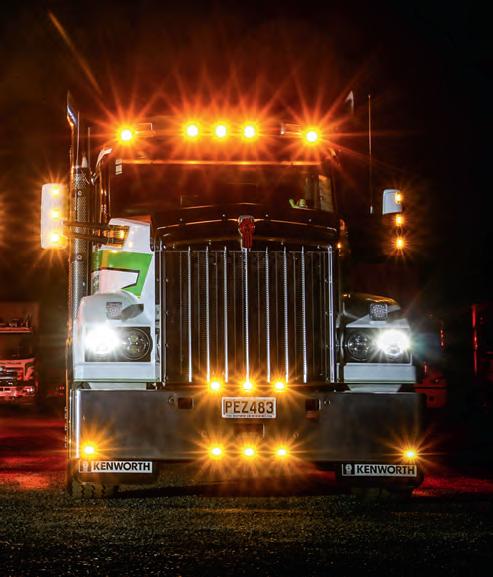
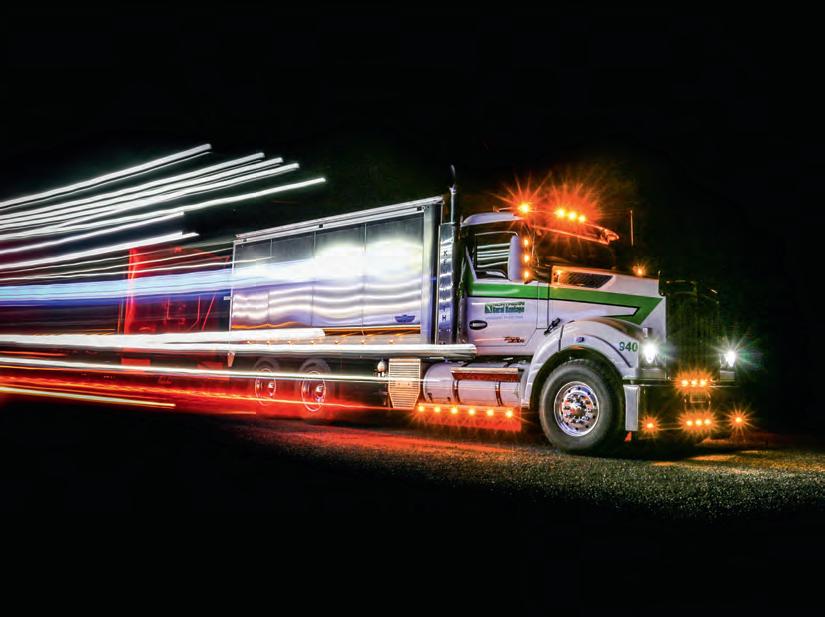

New Zealand Trucking February 2023 65
RUST IN PEACE

New Zealand is littered with trucks that have long since had their glory day. Some lay hidden in dusty back lots on the outskirts of town. Some stand in the middle of the nation’s paddocks, covered in moss, almost blending into the scenery. But each has a story to tell; each was once a valued partner on the road, someone’s first truck, someone’s million-miler. Rust in Peace gives these forgotten heroes one more moment in the limelight and, when possible, shares their stories.

INTERNATIONAL T-LINE

Achance detour to Whangarei on one of our recent trips north had us passing the Haines House Haulage Northland yard on Saleyards Road, Kauri. Glancing at the yard, we clocked the unmistakably recognisable shape of an international T-Line facing the road – its cab slightly tilted and bullbar lying forward on the ground. We were immediately on the
brakes and into the yard for a look.
The T2670 8x4 was bought about three years ago as a donor truck, says mechanic Hannes du Preez. The company has a mint 1986 TF2670 6x4, which is still in regular use – one truck giving itself up for another.
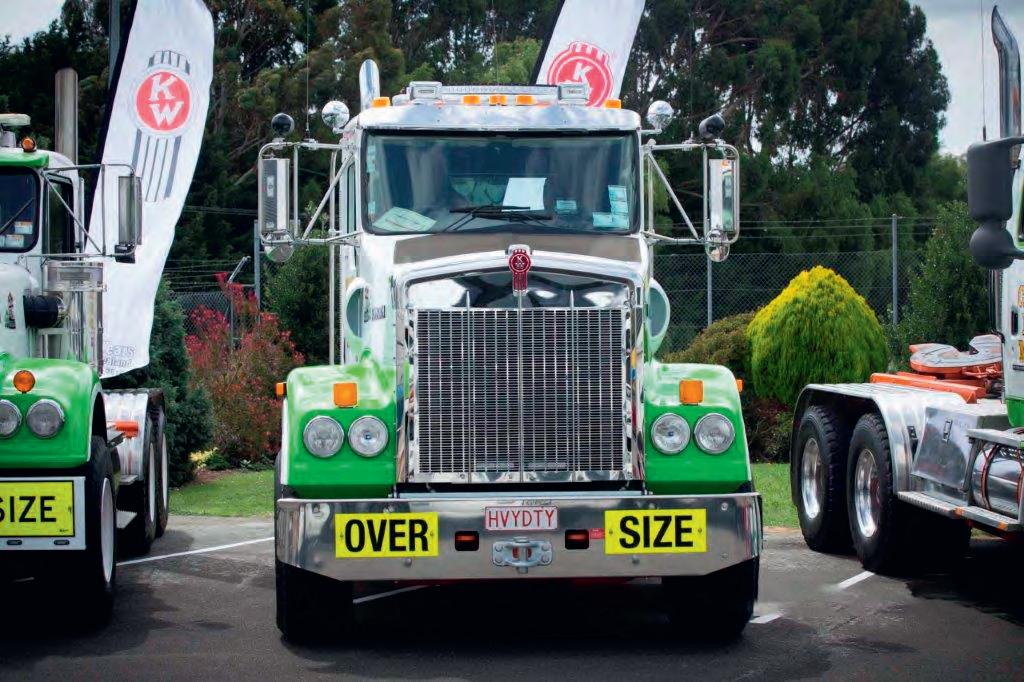
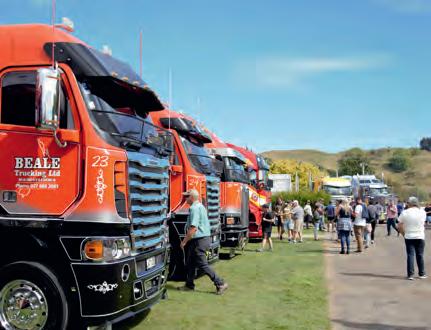
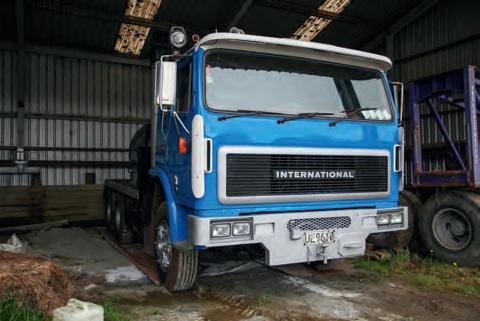
The dark green cab is missing bits and pieces, with a growing spread of lichen. But a previous owner’s name, Paradice
Haulage is still proudly on the doors. Surface rust colours the chassis rails and most of the truck’s metal components, including the engine. It’s the ubiquitousfor-the-era Cummins NT, a 350hp unit if the badging on the cab can be believed.
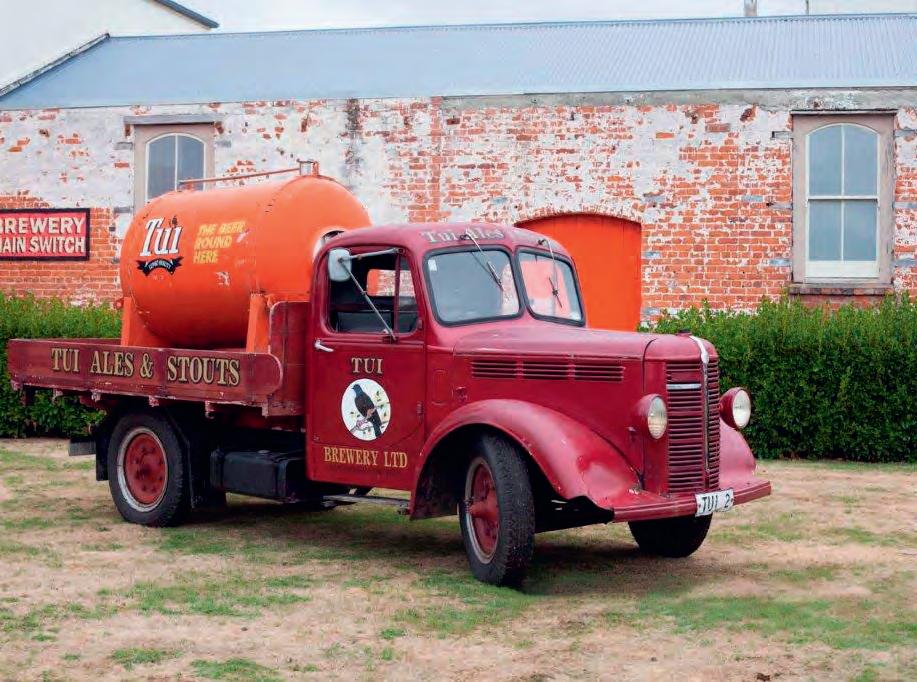
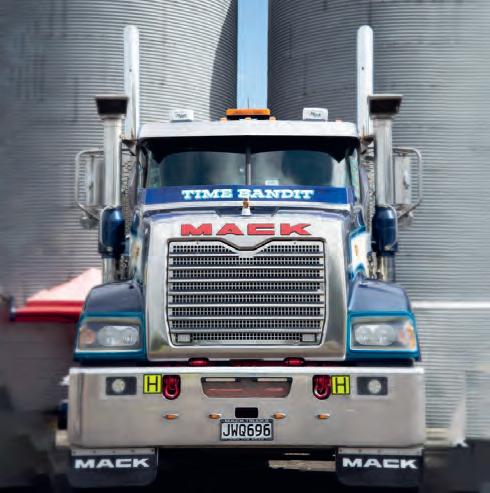
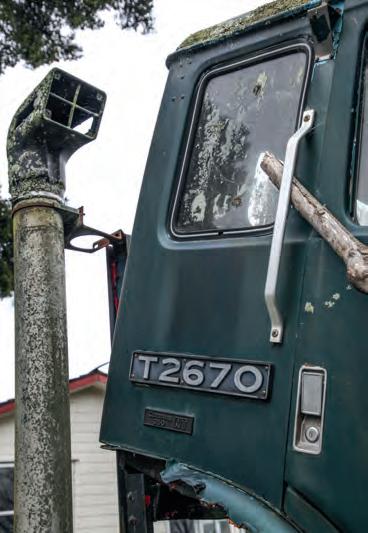
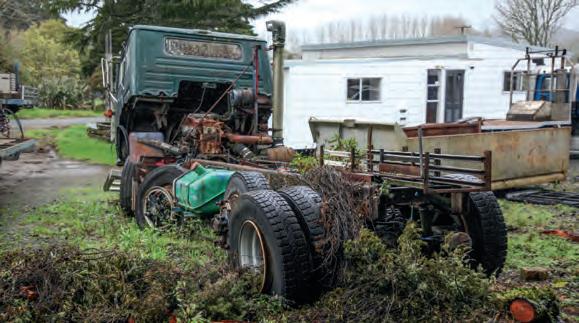
 Story and photos by Gavin Myers
Story and photos by Gavin Myers
66 New Zealand Trucking February 2023
Whangarei
GREAT
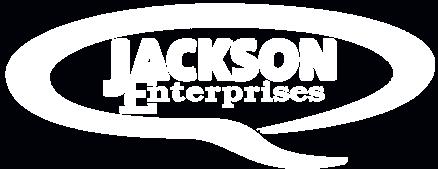


MUSTER







ONLINE AT WWW.TUIHQ.CO.NZ JOIN OUR FACEBOOK EVENTS @TUI TO SEE ALL EVENT DETAILS.
$10 PER REGISTERED VEHICLE. REGISTER
FOR EITHER CONVOY:
Station
10.00AM
Office Hotel
10.15AM
GO TO TOKI RESERVE RESTORATION. TUIBREWERY
OUR FACEBOOK EVENTS @TUI TO SEE ALL EVENT DETAILS.
Woodville Railway
DEPARTS
Pahiatua Post
DEPARTS
PROCEEDS
JOIN
SUNDAY 26TH MARCH 2023
•
10AM TO 4PM AT TUI BREWERY LIVE MUSIC
BREWERY TOUR
• INDEPENDENT
DELICIOUS FOOD
JUDGES
FREE
AWESOME PRIZES •
PUBLIC ENTRY
DAY OUT GUARANTEED
CLARENDON KENWORTH
KLASSIC 2022
Australian classic truck chapters often hold ‘musters’ to celebrate single brands. White, Mack and International all feature in various shows, but only one event proudly celebrates Kenworth. The Clarendon Kenworth Klassic is now one of the most significant events on the Australian truck-show calendar.
Australia-built, world’s best’ is the catchphrase of Kenworth Australia and reflects the pride and reputation the Australian icon holds with transport operators and enthusiasts alike. While American in origin, the Australian model line-up

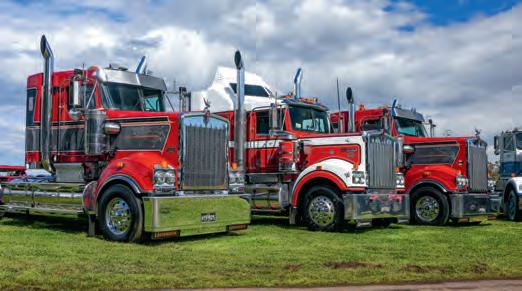
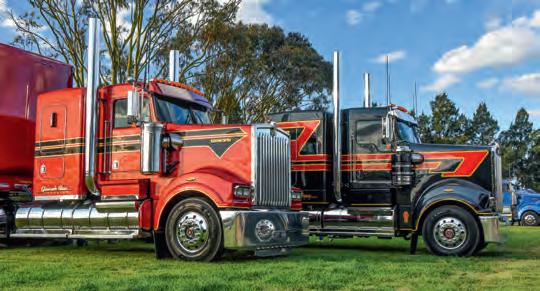
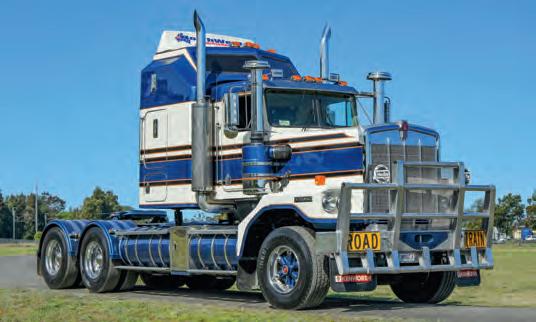
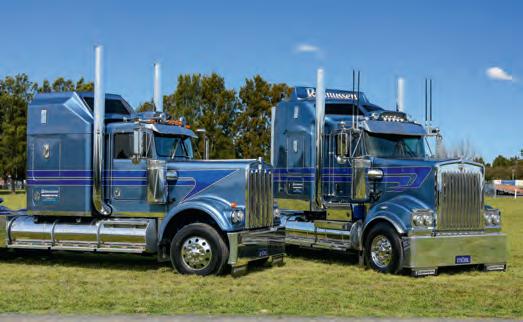
and build is uniquely local.
During a chance meeting in 2012 between Bruce Gunter, a motor trimmer, now specialising in Road Transport Compliance, and David ‘Chappo’ Chapman, a former apprentice at Kenworth’s Bayswater plant, now operating his own diesel
Story and photos by Andrew Geddes
This year’s theme was classic SARs.
Left: David ‘Chappo’ Chapman’s beautiful 1989 Cummins KTA 600 C500. Right: Rasmussen Bulk Haulage’s W925 and T909 – superb presentation and superclean lines.
Gierisch Bros Trucking T909s.
AUSSIE ANGLES
Part of the Hypro Pet Foods fleet.


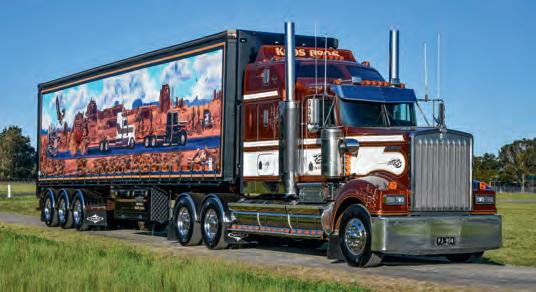



 ‘This one’s for you’ – Ballinger Transport’s tribute T909 to Dane Ballinger. Klos Bros T904, with stunning curtain graphics.
Top: Aerodyne Alley! Above left: Bruce Gunter’s faithfully restored 1978 Kenworth K125, new to Max Keough Transport. As a boy, Bruce fell in love with the truck, and its unveiling at the Klassic was made all the more special by Max, now 86, who especially flew out from the United States. Above right: It wouldn’t be the Kenworth Klassic without Rob Woolly’s period 1979 Kenworth.
‘This one’s for you’ – Ballinger Transport’s tribute T909 to Dane Ballinger. Klos Bros T904, with stunning curtain graphics.
Top: Aerodyne Alley! Above left: Bruce Gunter’s faithfully restored 1978 Kenworth K125, new to Max Keough Transport. As a boy, Bruce fell in love with the truck, and its unveiling at the Klassic was made all the more special by Max, now 86, who especially flew out from the United States. Above right: It wouldn’t be the Kenworth Klassic without Rob Woolly’s period 1979 Kenworth.
Februar y 2023 69
Wallace International T610 SARs. Pure class! Lawrence Transport is always in force at the Klassic. New Zealand Trucking
Hoods ‘n’ Stacks.
rebuilding business, Chappo had floated the idea of an event showcasing Kenworths. Both men are firm fans of the brand, and the wheels were put in motion for the first event in 2016.
The pair’s enthusiasm and vision make the Klassic the success it is today. After the enforced Covid-19 break, 17 and 18 September 2022 saw the return of this annual event. The 2022 event paid homage to the SAR, with 25 of this classic model lining up for a photoshoot on the Sunday morning.
This show was the biggest yet, with some 430 Kenworths represented, up from 386 in 2019. They spanned modest to highly restored, old to new, individual owners to fleet operators. While presentation and pride are second to none, the show’s uniqueness is that no one competes for prizes, and the absence of trophies gives the show a laidback atmosphere and a friendly and enthusiastic energy.


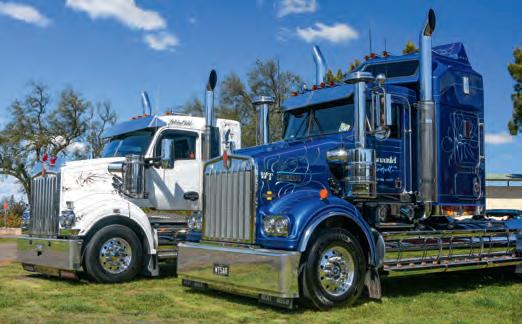
Most exhibitors camp at the grounds in trucks, trailers or tents, the smell of barbeques cooking up a storm and a few cold ones being enjoyed. It’s a very relaxed and wellbehaved vibe.

The Klassic is held in conjunction with The Clarendon Classic Rally, which offers the public more trucks of other brands to view, traction engines, stationary engines, tractor pull and a swap meet. The combined
events are now considered the largest machinery and equipment display in the southern hemisphere, 2019 showcasing more than 700 pieces of equipment.

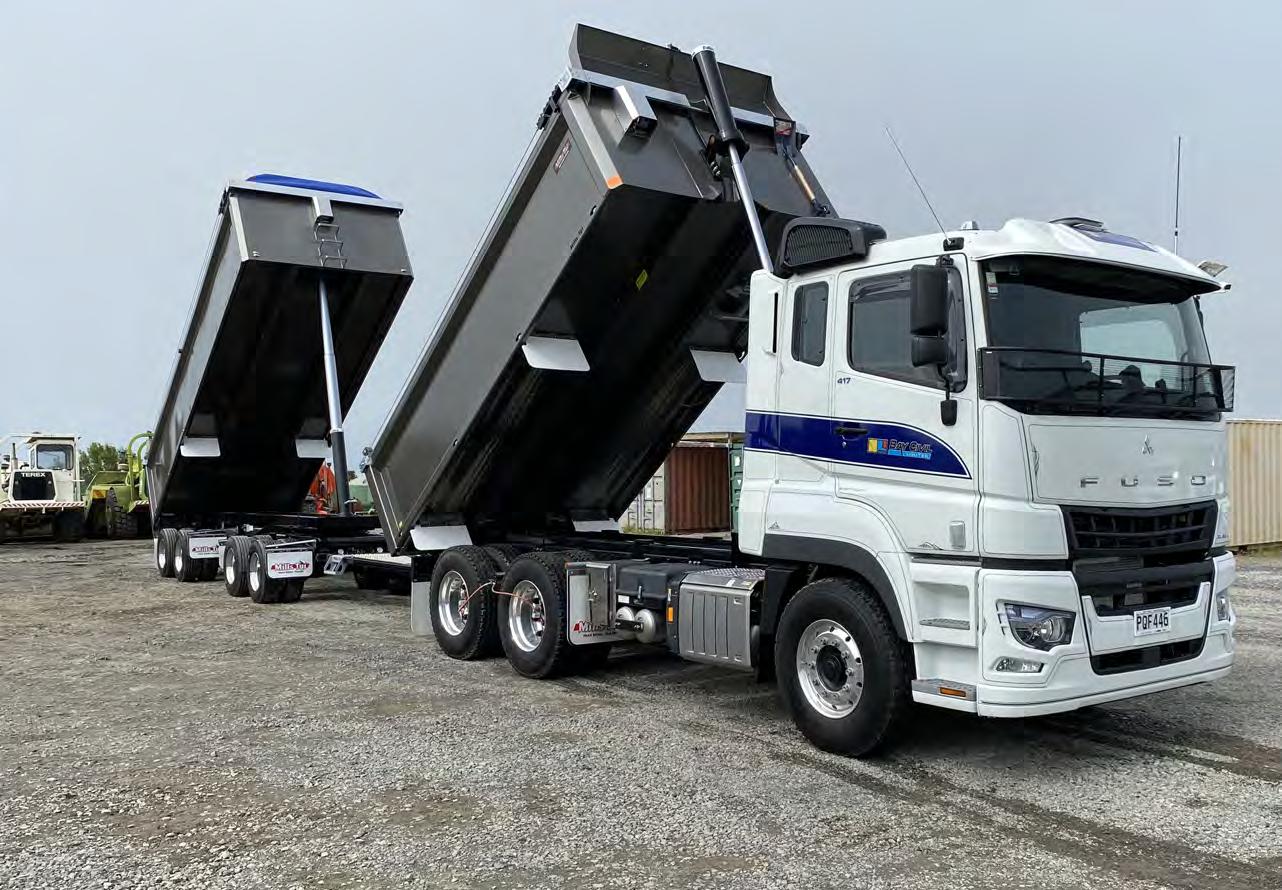

As a footnote, Bruce is the host of the Copy Southbound podcast, which enjoys a wide following in Australia and is growing in popularity in New Zealand. The podcast features interviews with retired and current transport operators and reflects
on the industry’s history, characters, and current state. Copy Southbound has also partnered up with the Black Dog Institute to raise awareness of mental illness, notably depression and anxiety. It’s a subject close to Bruce’s own heart, and he is open about his struggles. In New Zealand, organisations such as Lifeline and Youthline offer support for anyone needing to talk through issues.
 T610 SAR and Legend SAR.
Left: Tracy and Scott Martin’s ex-Nev Storey Transport Detroit-powered 1986 SAR, and Nev’s fully restored 1982 KTA-powered example, still sitting on spider rims. Right: The first showing of Mick Kennedy’s 1976 K145CR. One of the legendary ‘Grey Ghost’ units and show standout.
T610 SAR and Legend SAR.
Left: Tracy and Scott Martin’s ex-Nev Storey Transport Detroit-powered 1986 SAR, and Nev’s fully restored 1982 KTA-powered example, still sitting on spider rims. Right: The first showing of Mick Kennedy’s 1976 K145CR. One of the legendary ‘Grey Ghost’ units and show standout.
70 New Zealand Trucking February 2023
Some Kiwis driving the big gear in Australia. From left: Clarke Hema, Greg McDonald, Dan Hawkeswood, Aaron Reid, Shane Mitchell, Bradley Gallagher and son Lucas. (Dan’s truck to the left, Brad’s to the right.)






Rotorua and Christchurch Phone: 07 349 4700 www.silodec.co.nz Don’t let your payload weigh on your mind! Tipping Units, Bulk Haulage, Logging and Weighbridges Southern Transport Trailer manufacturer: TES Invercargill DPS Haulage Ltd Trailer manufacturer: Patchell Industries Steve Martin Contracting Trailer manufacturer: Convair Engineering Pty Ltd Bay Civil Trailer manufacturer: Mills-Tui Heagney Bro Ltd Trailer manufacturer: Mills-Tui
DEVELOPING A
DAF
For as long as I’ve been writing about trucks, there have been rumours circulating that the European Union (EU) was going to relax truck dimensions rules and regulations. The 16.5m overall length limit for an artic had resulted in the typically flatfronted cabover Europeanstyle truck being the norm. Of course, Scania did offer its T-series in Europe, but sales volumes were always low since they couldn’t legally run with a standard 13.6m semitrailer.
Twenty years ago, truck manufacturers were pushing for change, and Scania even built concept vehicles for trade shows. It actively lobbied the European Commission for
an additional 600mm at the front of the truck, which it said would make trucks safer and more aerodynamic. But its pleas seemed to fall on deaf ears.
Then, in 2014, there was a breakthrough, as the EU finally recognised that there was an opportunity to significantly improve the environmental footprint of trucks by making them more aerodynamic. It announced that by 2020, there would effectively be no overall length limit for new trucks. However, they would still be required to comply with strict turning circle regulations.
These changes came at the wrong time for most European truck-makers, who had recently introduced newgeneration cabs. And having
invested billions of Euros, they clearly didn’t relish the thought of starting all over again so soon. I certainly don’t recall Scania celebrating the EU’s decision.
But there was one company that was able to take advantage of the new regulations. DAF’s XF and CF cabs traced their origins back to 1987 and 1992 respectively, and despite numerous revamps and facelifts, were beginning to look their age. It was finally time to put a do-not-resuscitate order on them and look to the future.
Automotive designers often talk about “clean sheets of paper”, but in reality, such a thing rarely exists in the world of truck design. Most are forced to adapt an
existing body in white, while even those with entirely new cabs must work within the strict confines of maximum dimensions. But, due to the legislation changes, DAF’s designers were in a unique position and did indeed start with something resembling a clean sheet.
Ron Borsboom, director of product development at DAF Trucks, tells me: “We couldn’t take our existing cab and make it longer, so we started from scratch. This was a unique opportunity for us to design and build a completely new class of truck.”

This was the start of a sixyear development programme, culminating with the launch of the all-new DAF XF, XG and XG+ in the summer of 2021, and the XD in September 2022. On a trip to DAF’s Eindhoven headquarters in the Netherlands, I got an insight into the evolution of the newgeneration trucks.
1First steps
At first glance, this looks like a regular XF, but in fact, this 2015 test truck was the first step in developing DAF’s New Generation trucks. Knowing that the EU’s masses and dimensions rules were
Story by Will Shiers
Photos: DAF Trucks/Will Shiers
72 New Zealand Trucking February 2023 INTERNATIONAL TRUCK STOP
changing, DAF decided in 2015 that its next trucks would take advantage of the longer permitted length laws. While the 160mm protrusion on the front is immediately noticeable, less obvious is a slightly stretched chassis. It has also been fitted with a new cab suspension, an early version of the system that made it into the 2021 trucks.

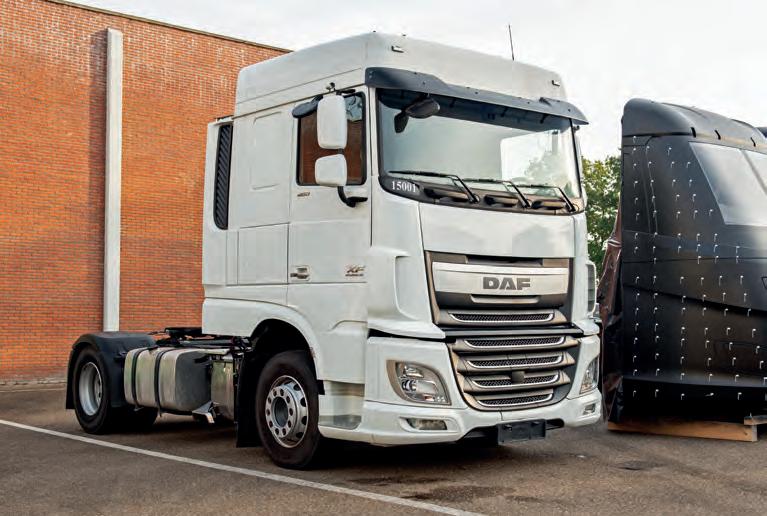

“We wanted to know what would happen to the dynamics of the chassis if we stretched the truck,” explains Borsboom. “It was important to us that we actually improved the levels of steering comfort, ride and handling. So, this was an important milestone truck for us.”
2 Ruling nothing out
Coinciding with the longer cab and chassis development work, DAF also embarked on some major aerodynamic studies. Borsboom explains that back in 2015, nothing was ruled out, resulting in the development of this high-speed train-like nose. But this was dismissed when it was discovered that the aerodynamic gains were barely any better than when using a more subtle bulge.
Other drawbacks included worse manoeuvrability, a higher production cost and a significant weight penalty.
3 Starting to take shape
The New Generation cab started to take shape in late 2015, this outer-skin model being one of multiple examples machined in-house at the time. It includes panel gaps, allowing engineers to study windflow.

“We needed to know what would happen as the air goes into the gaps,” says Borsboom, explaining that some of these models had tiny holes drilled into them to measure dynamic and static pressure changes.
“But with a cab like this, you cannot make doors. And the entry to this cab is not from the side, but from the rear. This was not because we took that as a serious potential alternative; it was just the simplest way of having the volunteer drivers going in and out.”
4Field trials
“By 2016, we had started to think about the reliability of new architectures and new
1 2 3 4
powertrain solutions,” says Borsboom, pointing to what looks like another bogstandard XF. “We couldn’t wait until the new truck generations were available, so we took a couple of XFs and modified them. We included the new 2021 type of engine and powertrain and the new system architecture, just to learn about what happens to them out in the field.”
The trucks were trialled on the road by real-world customers, one clocking up 500,000km alone.

5Majormilestones
Between 2017 and 2020, DAF started to build its first New Generation trucks. “What you see here are three milestone trucks,” Borsboom tells us. “Trucks are complex networks of systems and ECUs, and you cannot simply exchange parts in and out. So, through the development of the truck, we defined integration milestones.”
DAF needed to trial these trucks on public roads but clearly didn’t want to reveal any design secrets in the process.

The original XF cab is well over 30 years old, and as it underwent various updates over the years, so DAF dressed up new models to look like their predecessors, avoiding unwanted attention from spy photographers. However, this was no longer possible with the all-new cab, which explains the heavy camouflage seen here.
“Because this was an entirely new cab with entirely new dimensions, it was always going to be difficult to prevent people from seeing that it was a new cab. So, we decided we won’t hide the fact that the new cab is coming. But we will hide what it will look like,” he says.
The first two trucks here are fitted with aftermarket headlamps, but the third one, a pre-series truck from 2020,
features the real lights, albeit partly concealed. Most of the vehicles from this era had 3D-printed dashboards which, as you can imagine, didn’t last particularly well. “We wanted to learn about ergonomics, where we wanted the vents, the switches and the buttons to be,” says Borsboom.
6Cutting the camouflage
Eventually, it was time to remove the fake body panels completely, and in early 2021, migraine-inducing liveried trucks like this started
appearing on Europe’s roads and in numerous social media feeds.
“For quality evaluation, we exposed the concept of the truck,” Borsboom explains proudly. “But we covered it with razzle-dazzle camouflage to hide the styling principles.” But it couldn’t hide the 160mm tapered front-end protrusion.
7The finished product
Finally, we have the finished product, launched in the summer of 2021.
The final design, used
on the front of all its New Generation trucks (XD, XF, XG and XG+), is a 160mm tapered protrusion. It gives a curved effect, allowing air to move more freely around the front of the truck, thus improving fuel economy. It boosts aerodynamics by 19%, equating to a 6.3% improvement in fuel economy compared with the prior XF.
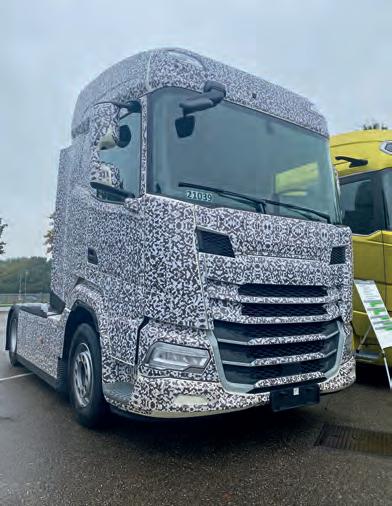
Meanwhile, the XG and XG+ each get an additional 330mm of length at the back of the cab, while the flagship XG+ also has 200mm of extra roof height.
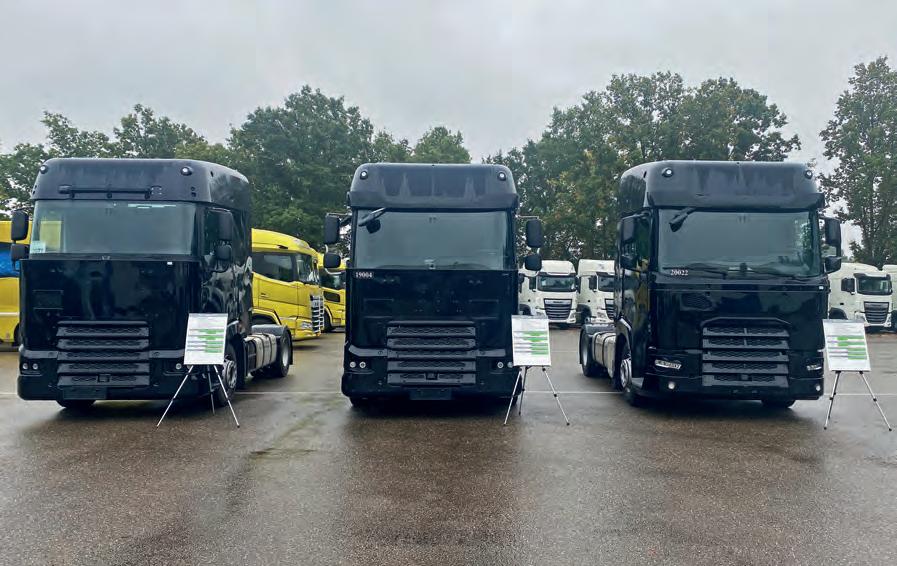
5 6 7 74 New Zealand Trucking February 2023


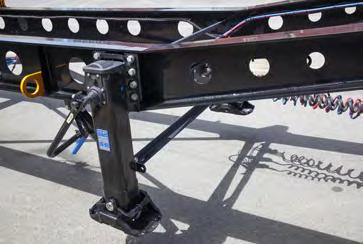
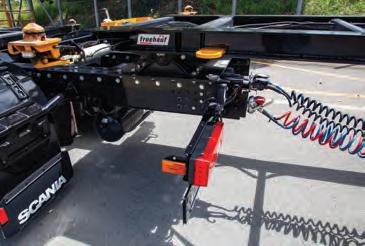

Paul Cranston Sales account Manager (Upper North Island) E: paul.cranston@fruehauf.co.nz M: 021 442 831 Chad Thomas Sales account Manager (Lower North Island) E: chad.thomas@fruehauf.co.nz M: 027 442 8741 Tony Symons Sales account Manager (South Island) E: tony.symons@fruehauf.co.nz M: 027 373 4448 Specialist Road Transport Equipment, Repairs and Maintenance LEADING TRAILER MANUFACTURING TODAY WITH THE INNOVATIONS OF TOMORROW www.fruehauf.co.nz T0223C
‘THE BOSS’ Kenworth K200 2.8m Aerodyne – sleeper cab

OPERATOR: Taupo Landscape Supplies, Taupo
ENGINE: Cummins X-15 15-litre Euro-5
459kW (615hp) 2779Nm (2050lb/ft)
TRANSMISSION: Eaton Roadranger
RTLO20918B 18-speed manual
REAR AXLES: Meritor 46-160GP full cross locks
VAN-TASTIC
REAR SUSPENSION: Kenworth Airglide 460
BODY/TRAILER: Jackson Enterprises
FEATURES/EXTRAS: King single bunk, leather seats. Painted tanks and air intakes. Drop visor. Full stainless steel front wheel arches. Ten grille bars. Twin 6” exhaust side pipes. Alcoa Dura-Bright
DAF CF410 Euro-6 4x2 tractor – sleeper cab – x2
OPERATOR: New Zealand Moving and Storage, Lower Hutt
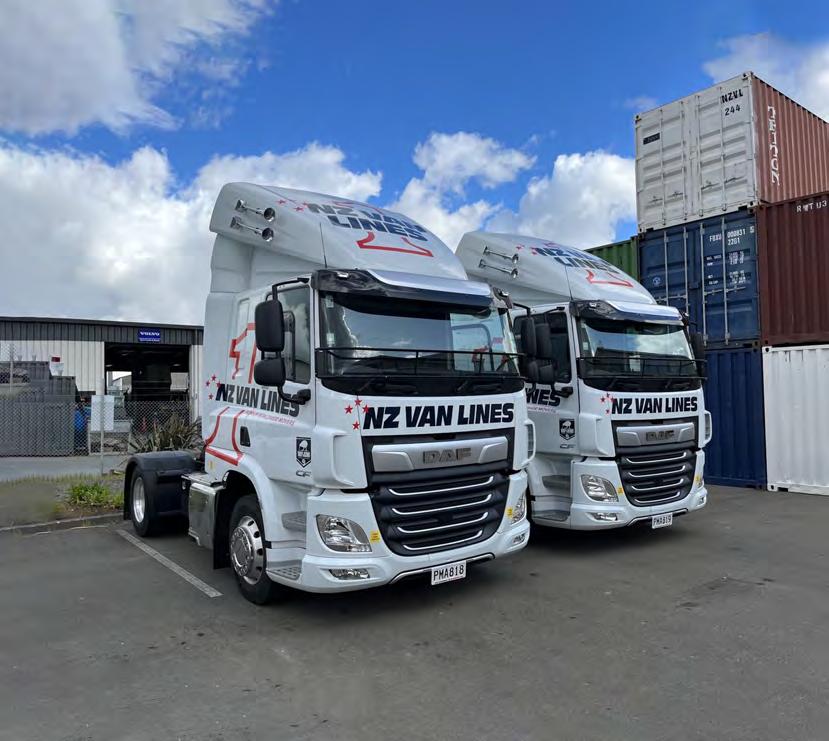
ENGINE: PACCAR MX11 11-litre Euro-6 300kW (410hp)
2100Nm (1550lb/ft)
TRANSMISSION: ZF TraXon 12TX2620 12-speed AMT
REAR AXLES: DAF SR1347
REAR SUSPENSION: DAF ECAS 8-bag air suspension
BRAKES: Disc. ABS, EBS
SAFETY: EBS, ABS, ESC, DTC, ACB
BODY/TRAILER: Factory fitted fifth-wheel and guards

FEATURES/EXTRAS: Air management kit, alloy wheels, additional grille lights
PAINT: Ex-factory
OPERATION: Furniture removals New Zealand wide
DRIVERS: Graeme Clapp and Joseph Hirini
SALES: Mark O’Hara
offset front rims
PAINT: Ex-factory
SIGNAGE: Wrapped Auto Signs, Tauranga
OPERATION: Drop-side/tipper work New
Zealand wide
DRIVER: Steve Hoko “the Boss”
SALES: Adam McIntosh
www.
76 New Zealand Trucking February 2023
DOUBLE H - RH International R8-RH-BT 8x4 Rigid
OPERATOR: Double H
Haulage, Taupo
ENGINE: Cummins X-15
15-litre Euro-5 459kW (615hp)
2779Nm (2050lb/ft)
TRANSMISSION: Eaton
Ultra-Shift Plus 20E318B-MXP
POSTY PLUS
18-speed AMT
REAR AXLES: Meritor 46160GP
REAR SUSPENSION: IROS (International Ride Optimised Suspension)
BODY/TRAILER: Transport
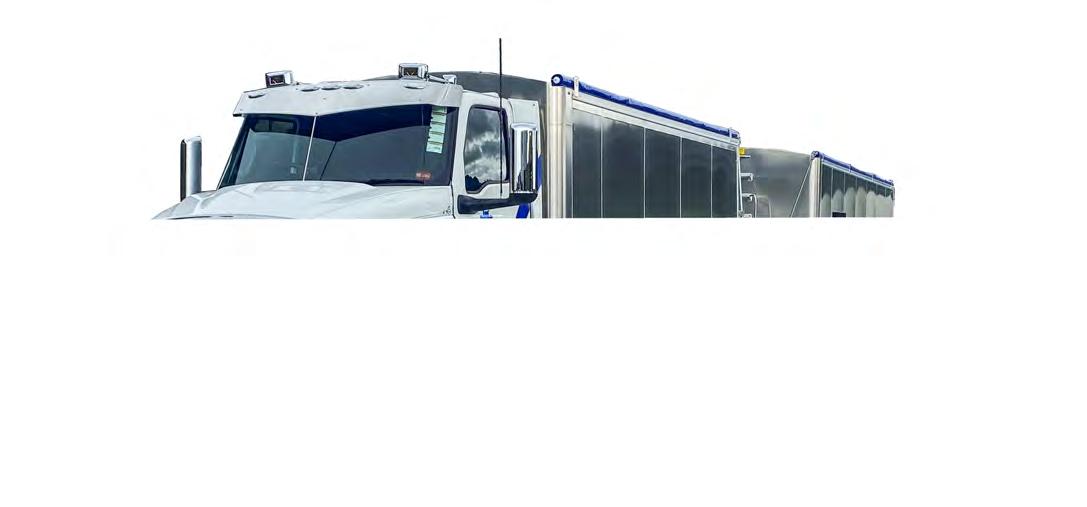
MAN TGS 35.540 8x4 rigid day cab
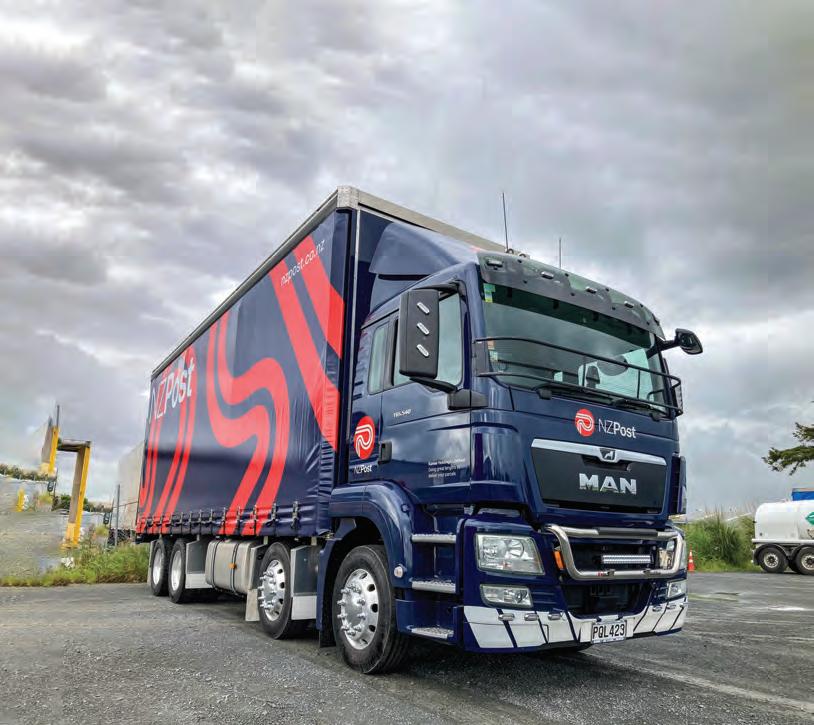
OPERATOR: Kumar Holdings & Associates, Hamilton
ENGINE: MAN D26 Euro-5 402kW (540hp) 2500Nm (1850 ft/lb)
TRANSMISSION: MAN 12 28 OD with Retarder 35
REAR AXLES: MAN HYD 1370 Hypoid
REAR SUSPENSION: ECAS air suspension
BRAKES: MAN Brakematic. Discs front and rear
SAFETY: ABS, EBS, FCA, HCA
BODY/TRAILER: Penske-built 16-pallet curtainsider body with Zepro tail lift
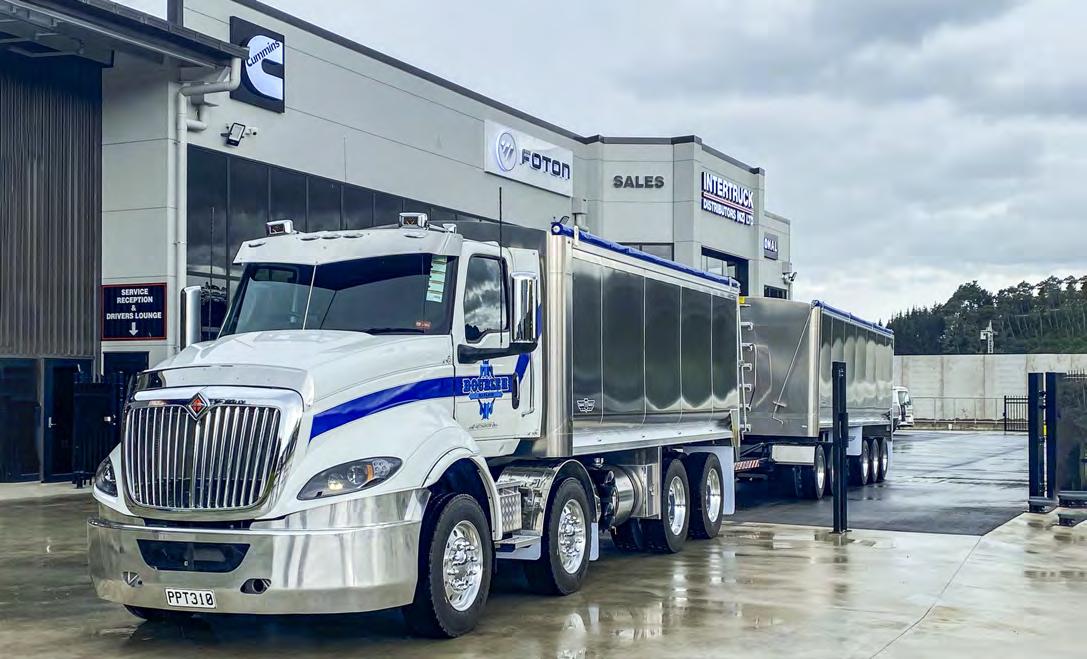
FEATURES/EXTRAS: Kelsa stainless steel front bar and Narva LED light bar
PAINT: Haddock Spray Painters, Whakatane
OPERATION: Contracted to NZ Post on North Island delivery duties
DRIVER: Nitesh Kumar
SALES: Mitch James
and General Transport Trailers
FEATURES/EXTRAS: AliArc bumper, stainless steel drop visor, 9” offset front rims
PAINT: Ex-factory
OPERATION: Fert and aggregate throughout the
greater Waikato and BOP
DRIVER: Ken Broomhall
SALES: Jarod Maclennan
Free phone: 0800 50 40 50
New Zealand Trucking February 2023 77
HOGGING THE LIMELIGHT
OPERATOR: Hog Haulage, Taupo
ENGINE: Scania DC16 16-litre Euro-5 462kW (620hp) 3000Nm (2213lb/ft)
TRANSMISSION: Scania
Opticruise GRS0905R 12-speed
AMT with 4100D retarder
REAR AXLES: Scania RB662 Hypoid
SUSPENSION: Scania spring front suspension and air rear
BRAKES: Disc. EBS, ABS
SAFETY: EBS, ABS, AEB, ACC
HEADING TO HOBSONVILLE
Iveco 570 X-way 8x4 tractor
OPERATOR: Mainfreight – Libra Transport, Hobsonville
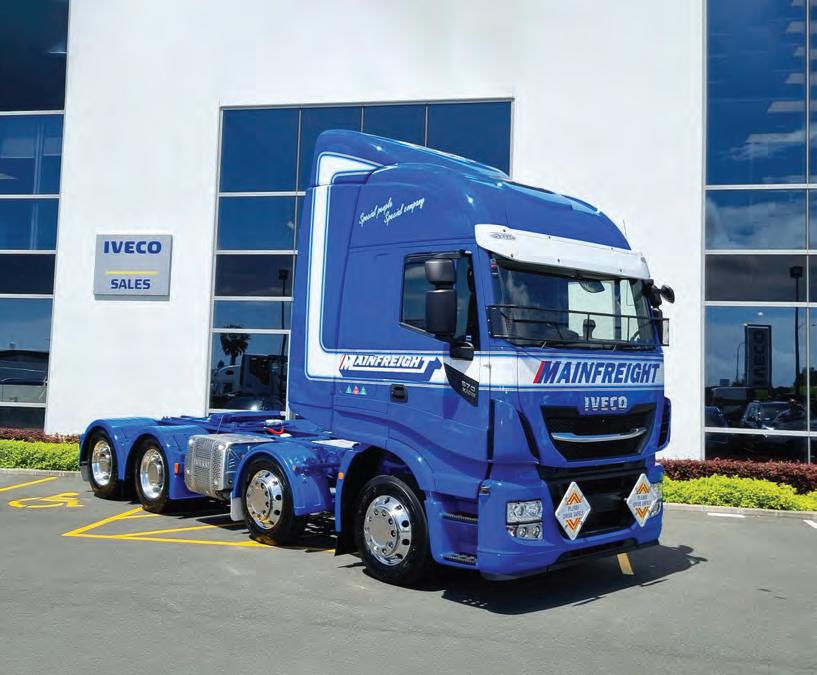
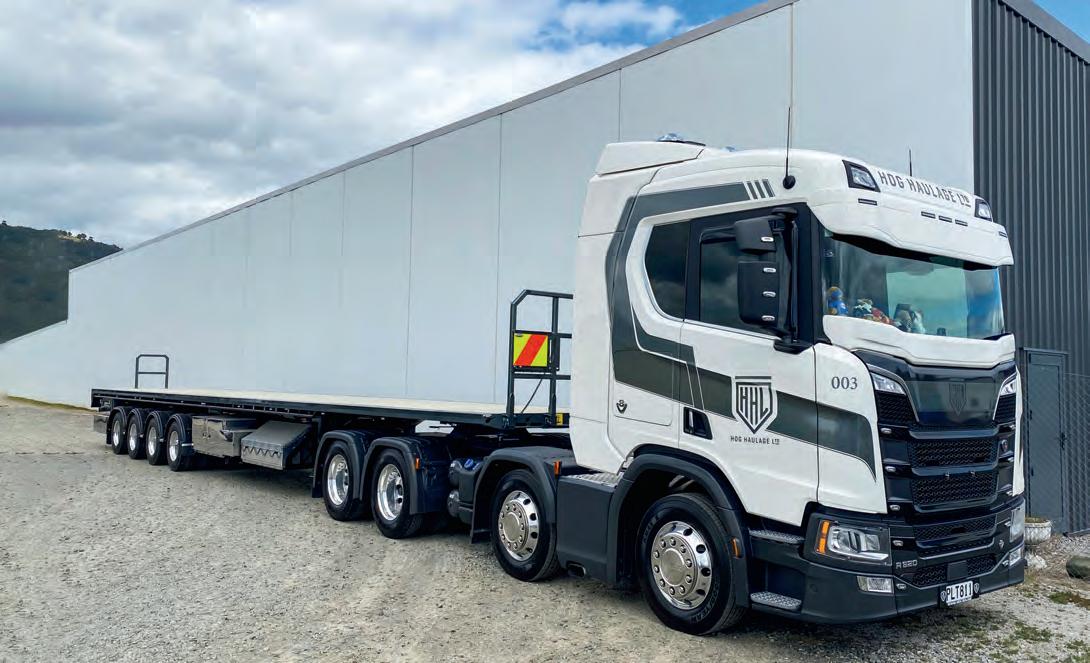
ENGINE: Cursor 13 Euro-6 – 425kW (570hp) 2500Nm (1850lb/ft)
TRANSMISSION: ZF 12-speed Hi-Tronic AMT
REAR AXLES: Meritor RT23-150/D hypoid with diff locks
REAR SUSPENSION: IVECO 8-bag ECAS
BRAKES: Disc. ABS, EBS
SAFETY: AEBS, ACC, LDW, HH, RM, DAS
FEATURES/EXTRAS: Full leather air-suspended
ISRI seats with heating and cooling. Double sleeper bunks. Fridge and coolbox
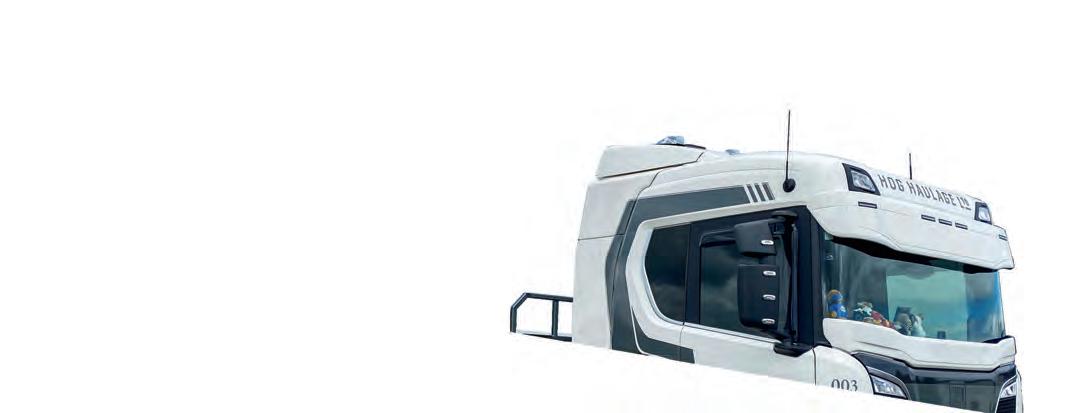
PAINT: Ex-factory
SIGNAGE: Royans Truck and Accident Repairs, Auckland
OPERATION: General freight, North Island
SALES: Pieter Theron
Scania R620 A8x4NA rigid
BODY/TRAILER: Factory setup, Roadmaster flat-deck super quad
FEATURES/EXTRAS: Fridge, bunk sleeper cab. Drop visor, Euro-style stoneguard, LED marker lights, custom stainless
work. Alcoa Dura-Bright wheels throughout
PAINT: Ex-factory
SIGNAGE: TCC Signwriters
OPERATION: General freight, countrywide
SALES: Callan Short
www. tr group.co.nz
78 New Zealand Trucking February 2023
‘KNOCK ON WOOD’
OPERATOR: Lockhart Contracting, Milton

ENGINE: Cummins X-15 15-litre Euro-5
459kW (615hp) 2779Nm (2050lb/ft)
TRANSMISSION: Eaton Roadranger
RTLO22918B 18-speed manual
FRONT AXLE: Meritor MFS73 with pre-
RIGGED FOR RURAL
Scania R540 B6x4HZ rigid
OPERATOR: AT Cook Contracting, Atiamuri
drilled stub axles for CTI
Kenworth T610SAR 6x4 rigid
REAR AXLES: Meritor MT21-165GP full cross locks
REAR SUSPENSION: Kenworth Airglide
460
BODY/TRAILER: Kraft logging gear and new 4-axle trailer

FEATURES/EXTRAS: Factory Kenworth bullbar, CTI throughout, offset front rims, stainless steel bug deflector

PAINT: Ex-factory
OPERATION: Log cartage duties, Otago
SALES: Chris Gray
ENGINE: Scania DC13 13-litre Euro-6 402kW (540hp) 2700Nm (1990lb/ft)
TRANSMISSION: Scania Opticruise GRS0905R 12-speed
AMT with 3500 retarder
REAR AXLES: Scania RB735 hub reduction
REAR SUSPENSION: Scania spring front suspension and air rear
BRAKES: Disc. ABS, EBS
SAFETY: ABS, EBS
BODY/TRAILER: Domett drop-side tipper and matching 5-axle trailer

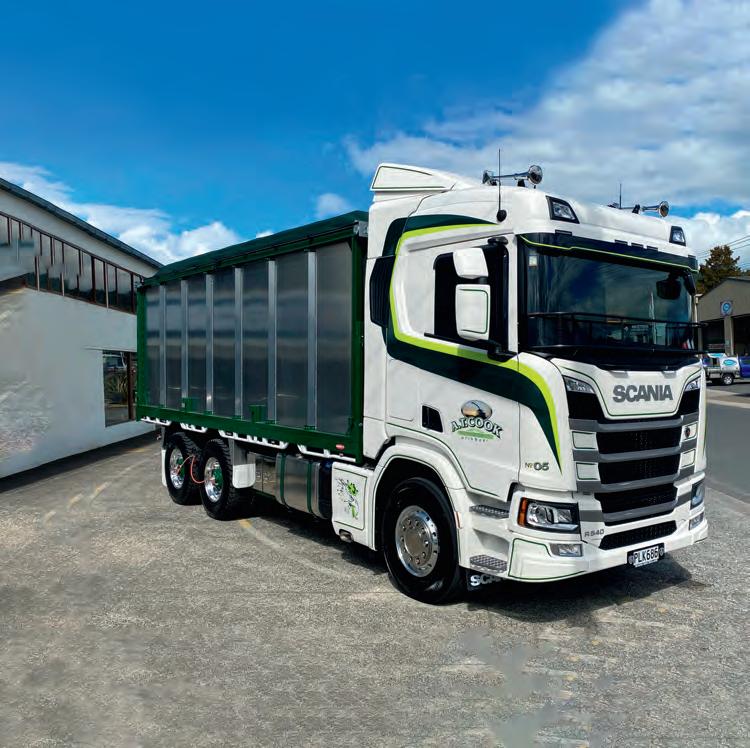
FEATURES/EXTRAS: Fridge, toolboxes, CTI, Alcoa
Dura-Bright wheels
SIGNAGE: Caulfield Signs and Graphics, Rotorua
OPERATION: Agricultural work, Atiamuri and BOP
SALES: Callan Short
New Zealand Trucking February 2023 79




www. tr group.co.nz AB – Air Bag ABS – Antilock Braking System ACC – Adaptive Cruise Control ABA – Active Brake Assist AEB – Autonomous/Active Emergency Braking AEBS – Advanced Emergency Braking System ALA – Active Lane Assist ASR – Anti Slip Regulation / Auto Slip Regulation ATC – Automatic Traction Control BAS – Brake Assistant System BB – Brake Blending CAB – Curtain Air Bag DA – Driver Alert DAS – Driver Assistant Support DM – Driver Monitoring DS – Driver Support DTC – Drag Torque Control EBA - Emergency Brake Assist EBS – Electronic Braking System EBSS – Electronic Braking Safety System ESC – Electronic Stability Control ESP – Electronically Stability Programme FCA – Forward Collision Avoidance FCW – Forward Collision Warning FUPS – Front Under-run Protection System HH – Hill hold HSA – Hill Start Assist LCS – Lane Change Support LDW – Lane Departure Warning LG – Lane Guard LKA – Lane Keep Assist PCS – Pre Collision System PD – Pedestrian Detection RB – Reversing Buzzer RM – Rocking Mode RW – Reverse Warning SAB – Side Air Bag SC – Speed Control SD – Side Detection SGA – Side Guard Assist TEBS – Traffic Eye Braking System TECC – Traffic Eye Cruise Control TPM – Tyre Pressure Monitoring VSC – Vehicle Stability Control SAFETY KEY – ACRONYM BY ALPHA ON THE ROAD NEW RIGS Our 100 year history proves that when you do everything with heart, nothing is too heavy. Mitsubishi Forklift trucks from Centra, moving New Zealand forward. No wonder it’s the world’s favourite forklift. Auckland - 32 Hastie Avenue, Māngere Bridge, Ph: 09 634 8500 Hamilton - 38 Maui Street, Ph: 07 849 5128 Palmerston North - 25 Bisley Street, Ph: 06 355 9033 Christchurch - 38a Parkhouse Road, Ph: 03 343 6814
REPLACE YOUR TIPPER

Eliminate health and safety concerns and Increase your spreading capabilities. Sinotruk Ejectors allow you to spread with overhead obstructions or on side angles without the risk of a tipping rollover.

You can even spread while driving downhill - gravity is no issue for our specialised ejector technology.

027 566 3025 CALL ROBBIE TODAY! AVAILABLE NOW Power 540HP Torque 2500Nm Transmission HW Manual Transmission Suspension Spring Locks Diff + Cross Locks Capacity 11m3 Capacity Spreader 8 Gate Roller Spreader +64 27 566 3025 robbie@modtrans.co.nz www.sinotruknz.co.nz 92 The Blvd, Hamilton SINOTRUK C7H 6X4 EJECTOR PAVER
NEW KIWI BODIES & TRAILERS
New Zealand Trucking brings you New Kiwi Bodies & Trailers. Bodies and trailers are expected to last twice as long as trucks, and new technology and advanced design features are showing up almost every month.
First for the Bay
Bay Civil of Papamoa recently received its first crisp new tipper build from the engineering maestros at Mills-Tui in Rotorua. The combination will be seen throughout the Bay of Plenty on all manner of aggregate supply duties for Bay Civil’s work sites and clients. The Hardox steel bins are immaculately constructed, with two-way tail doors and Edbro front-of-body hoists providing the lift. Under the chassis rails are Hendrickson air-suspended axles with disc brakes keeping the trailer grounded.
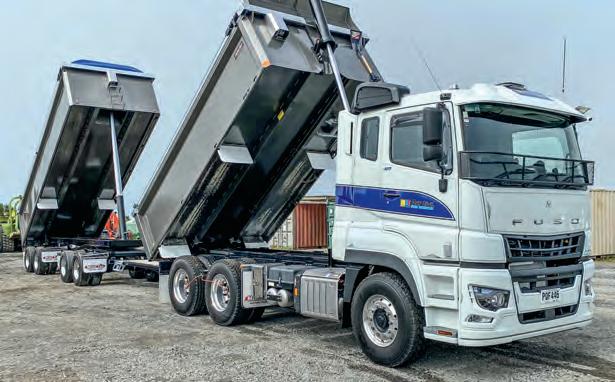
New Zealand has a rich heritage of body and trailer building, and we’re proud to showcase some recent examples of Kiwi craftsmanship every month. If you want a body or trailer included on these pages, send a photo, features, and the manufacturer’s name to trailers@nztrucking.co.nz
Features: Electrically operated PowerTarps and SI Lodec scales.

Mills-Tui

4D thinking
Features: Alux polished alloy wheels, over-width panels. TMC Trailers


When Bascik Transport contractor 4D Freight Ltd was piecing together its new linehaul combination, it was Hornby-based TMC Trailers who provided the business end of the package. The brief for this build was general freight – and lots of it. The new sixaxle curtainside B-train is kitted out with mezzanine floors, a full complement of toolboxes and a dunnage box. Capping off the build sheet, the B-train set was spec’d with TMC air-suspended, discbrake axle sets.

KIWI 16/17KIWI 175 Contact Jim Doidge 021 190 1002, Hayden Jones 0800 549 489, Danial Vincent 021 222 4144 | sales@kiwityres.co.nz | 0800 KIWI TYRES (0800 549 489) | kiwitrucktyres.nz
82 New Zealand Trucking February 2023
New Nomad for Normans
Morrinsville-based Normans prides itself in supplying transport and storage solutions to the greater Central North Island and beyond. Teaming up with them to provide this new highefficiency build was TMC Trailers of Hornby. The versatile new fiveaxle curtainside trailer and matching TMC curtainside truck-body combo could find itself

Features: Polished alloy wheels and fitted with the ROR PSI tyre-inflation system.
TMC Trailers Ltd
working all over the country. Running on 19.5in ROR disc-brake axles and air
suspension will certainly make that task that much smoother.
A Roc-hard log tig
Fresh on the road for PSMS
Features: Knorr-Bremse EBS, SI Lodec scales, Bigfoot CTI, Rockinger tow coupling, alloy chassis covers and Mills-Tui alloy wheels. Mills-Tui
Transport of Napier is this immaculately presented MillsTui log-truck set-up. The build is based on the well-proven straight-frame Mills-Tui fiveaxle multi-trailer and comes with sliding bolsters. Safety tensioners, auto-locking bolsters and cab guard help ensure the H&S box is well and truly ticked. Hendrickson disc-brake axles on air suspension with Tiremaxx Pro all work collectively towards providing the perfect ride.
Spec your trailer on KIWIs – the new tyre of choice for KIWIs

KIWI 16
Wide grooves will not hold stones
Heavy-duty case
Excellent mileage performance 17mm extra-deep tread 265/70R19.5
KIWI 17
The KIWI 16’s tougher twin Super heavy-duty case Puncture resistant 17mm extra-deep tread 215/75R17.5 235/75R17.5 265/70R19.5
KIWI 175
Multi-use tread pattern

Urban/highway/off road
Puncture-resistant 17.5mm extra-deep tread 265/70R19.5
New Zealand Trucking February 2023 83
DALTONS DONE THE TON, AND SOME
The Daltons family have been keeping New Zealand growing now for just over 75 years. Based out of the company’s state-of-the-art manufacturing plant on the southern boundary of Matamata, you will find a 2006 International 9900i Eagle – our first Million Mile Club inductee for this month. Recognised in-house as fleet No. 4, the big 9900i is now closing in on 2,000,000km, so it is most definitely a worthy nominee for the club.
DALTN4 was purchased new by the family from a young Intertruck Distributors, which was importing the 9900i model completely built-up from
the Fort Wayne assembly plant in Indiana, USA. DALTN4 is a little different in that it was factory-fitted with a Caterpillar C15 at 550hp, this at a time when the Cummins Signature Gen II was hot property. From there the spec is reasonably standard with an Eaton Fuller Roadranger 20918B (the factory original as well) connected to a set of 46,000lb Meritor rear axles riding on IROS suspension.
DALTN4 has enjoyed a one-owner life, which has obviously helped preserve her appearance and overall condition. Approximately seven years ago, she did receive a birthday spruce-up back at Intertruck Distributors. The Intertruck

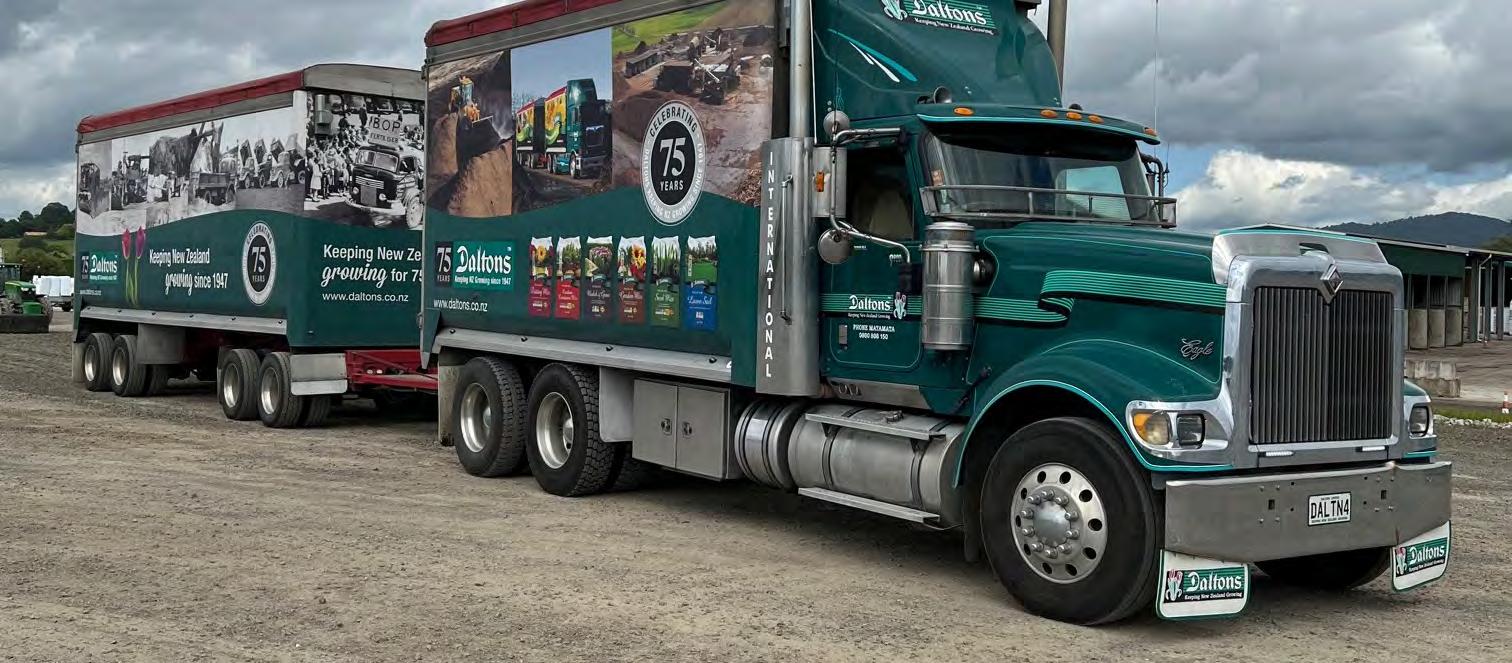
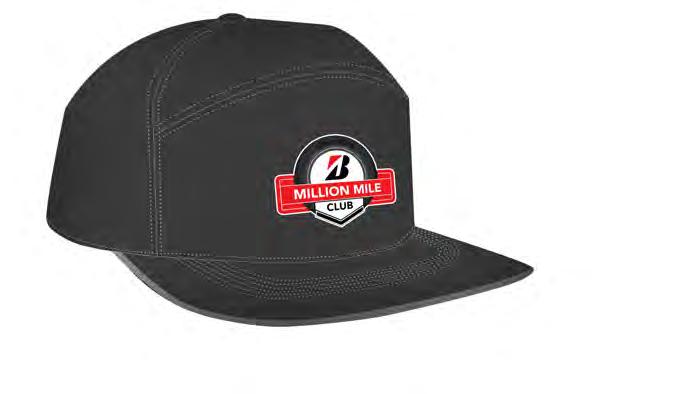
team went through from front to back, addressing any obvious wear and tear along the way. A new coat of paint was applied as well as Daltons’modernised sign writing and stripes, this in keeping with the rest of the fleet. An in-frame rebuild of the C15 was also completed at this time.
Daltons transport manager Peter Crawford mentions how DALTN4 does not currently have a regular driver, and is now called into service as and when required. But with its extra-long American-style hood it makes it one of those cool trucks to get behind the wheel of and simply go for a drive, he says.
CALLING
ALL TRUCKS ON OR OVER
1 MILLION MILES (1.6M KILOMETRES)
84 New Zealand Trucking February 2023
OLD BLUE – SHINING BRIGHTER THAN EVER
There is a famous adage out there: ‘two new heads, four new handles, but it is still the same old axe’. Well, the same could nearly be said for this T950 Kenworth operated by Hautapu based, C&R Developments.

First assembled in 1997, the T950 was spec’d with a N14 525 Cummins, 18918B Eaton Fuller Roadranger transmission, and 52,000lb Meritor axles riding on Kenworth six-rod suspension.
The 950 initially went to work in South Auckland as a heavy haul unit, and from there moved to Canterbury where it worked in the quarrying scene.
Following a near
write-off event, the truck was purchased and fully rebuilt by Craig Satherley in the Hawke’s Bay, and on-sold to Criag’s brother Barry, who sent it to work in his heavy haulage business.
‘Old Blue’ as the 950 is affectionately known within the C&R organisation, arrived in their keep 11 years ago, when they were looking to purchase a transporter for some in-house movements of their own machinery.
There was certainly no rest for the old girl when she arrived at C&R’s yard; there was frontline work to be done – and plenty of it. Regular runs to the iron sands at Taharoa with a Caterpillar D10 body on the float grossing
95 tonnes were common practice. Not a bad effort for an already 15-year-old truck that had been nearly written off once before.Unfortunately (or fortunately depending on how you look at it), the road to Taharoa would instigate a second rebuild. Acting as a pusher, at the rear of a D11 move out to the iron sands, a sharp left-hand corner gave way under the weight, with the entire combination nearly ending up in the valley below. ‘Old Blue’ received a substantial back injury, so a strip down to rails was required. The work was mostly carried out in-house by C&R’s own skilled team, with the assistance of White Brothers of Hamilton.
The opportunity to rebuild the N14 at this time was seized, as well as the fitment of a newly refurbed transmission. A few extras were also added, the likes of parabolic front springs to improve handling and ride, as well as 2.4m of inner chassis rails added to the front end. This was to help strengthen the front of the chassis for pushing duties. Now with the best part of 2,200,000km on the clock, the end result you see here is awesome. It truly resembles a fresh build straight out of Bayswater. Full credit to the entire team, as well as Cameron Shayler who is charged with the tiller.

Bridgestone and New Zealand Trucking Media want to recognise trucks that have achieved this milestone in the act of carrying the nation on their backs. Each month, up to eight trucks will be selected, and will feature in the magazine, as well as on our social media.
Those selected will get a Million Mile Club cap and badge for the truck.
TO JOIN, EMAIL:
editor@nztrucking.co.nz
• Quality image of the truck
• Name of owner and driver
• Basic spec (model, engine, trans, rear end)
• Contact details
Terms
Only
Supply
•
owners can submit • NZ trucks only •
chain may affect the timing of cap and badge arrival
New Zealand Trucking February 2023 85
WHEELS AT WANAKA MEMORIES
Only one more month to go with the fantastic Wheels at Wanaka 2021 memories, and then at last... Wheels at Wanaka 2023! It’s going to go off!

Neville Little bought this Foden S106T new in 1987 and ran it for five years with Transpac and Freightways Express out of Christchurch. In 2012, he repurchased his old charge and lovingly restored her to the condition you see here, proudly on display at Wanaka in 2021. Now, there’s a special relationship between man and machine...
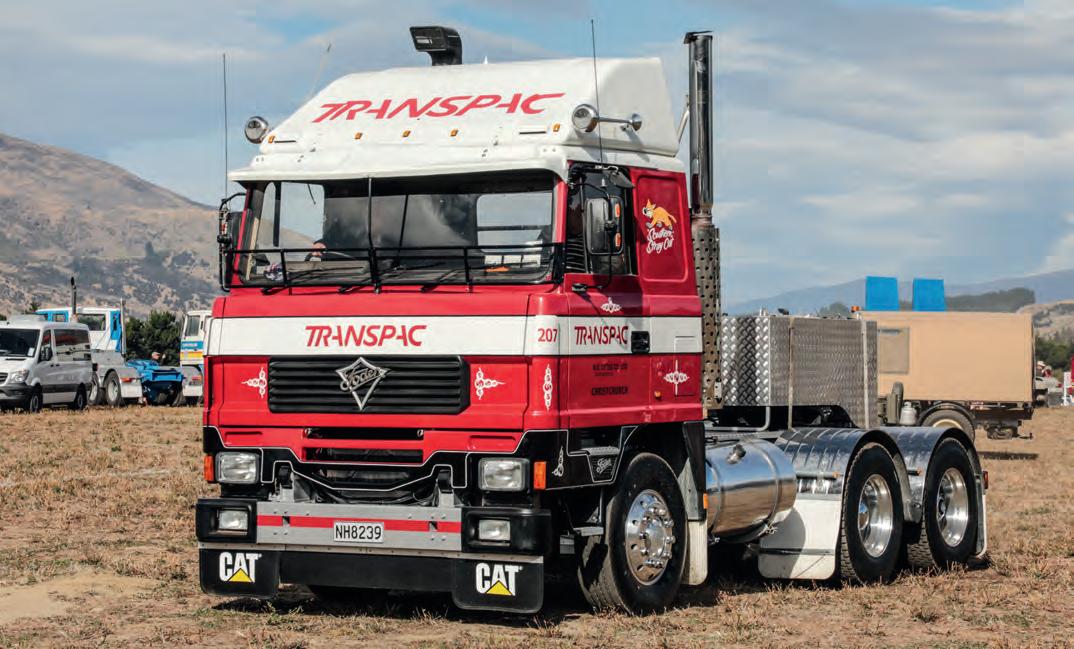
TRUCK & TRAILER WHEEL ALIGNMENTS SPECIALISTS

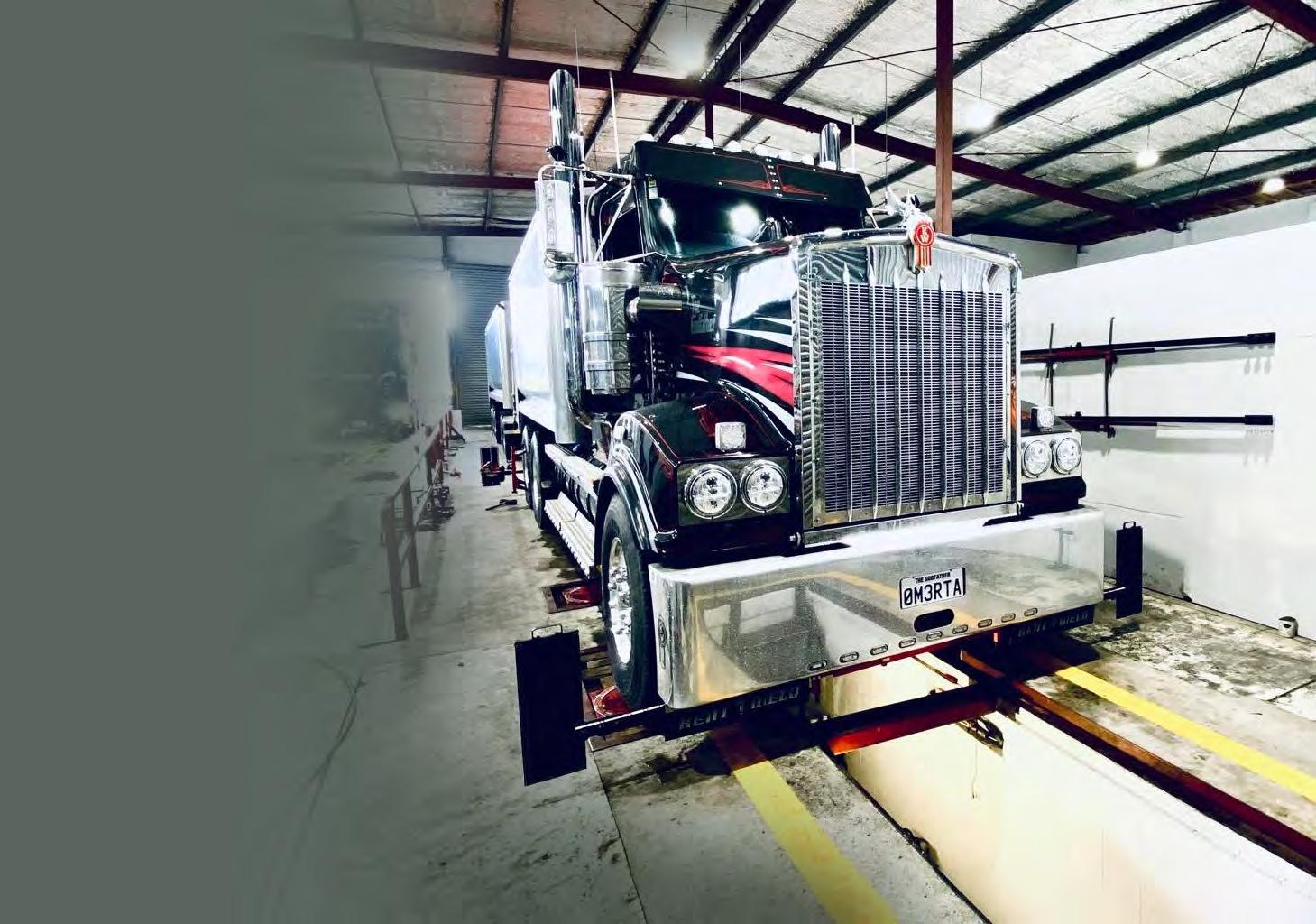
• Truck & Trailer Wheel Alignments
• Long wheel base vans / heavy vans and motorhome wheel alignments
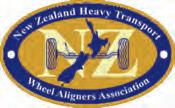
• Tyre sales and fitting
• Induction heating and straightening of bent trailer axles and diff housings
• On & off truck wheel balancing
• Axle Camber Corrections
Ph: 09 250 4286 | 8 Mepal place Papatoetoe Auckland www.akltruckalign.co.nz






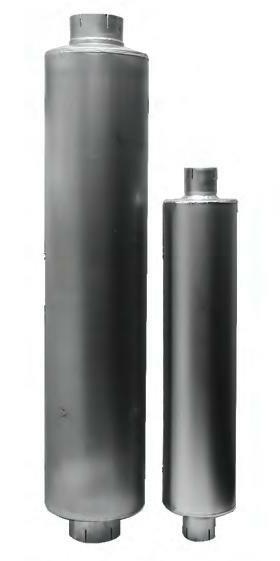

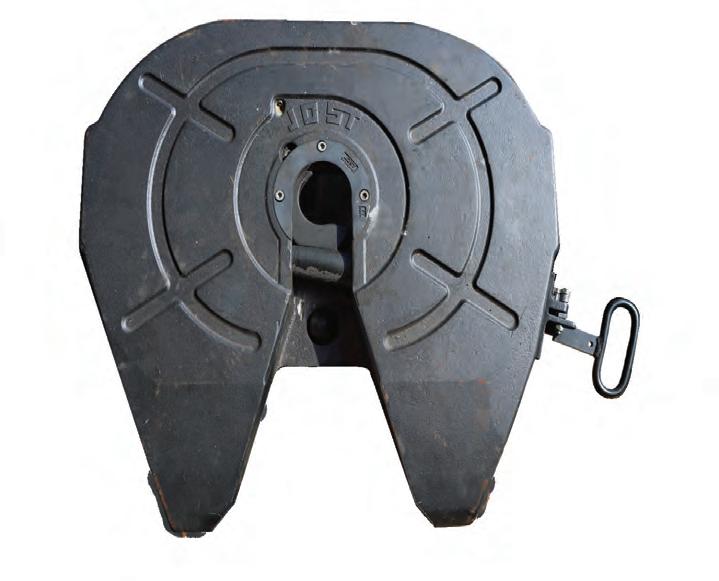
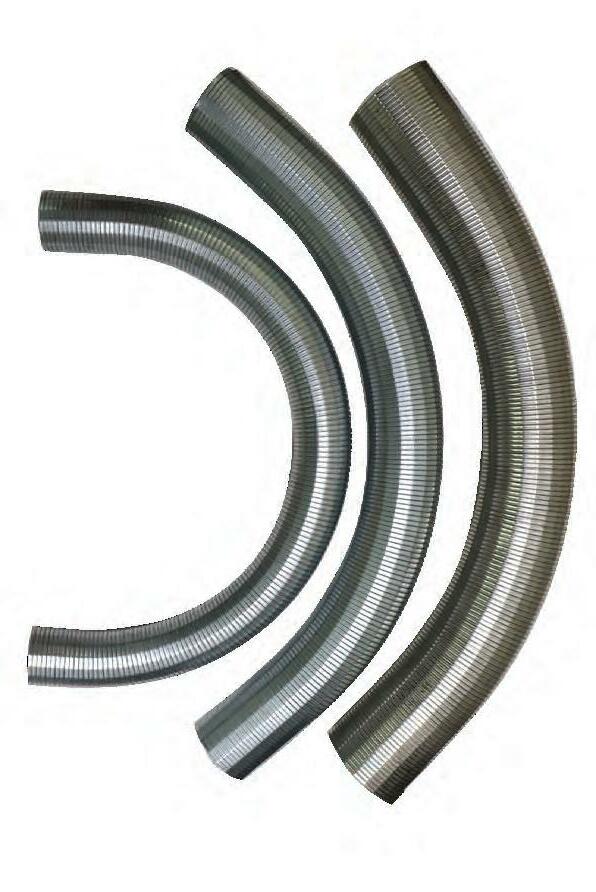

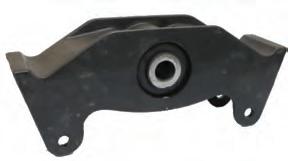

to talk with our parts team! CALL US TODAY Ham: 07 849 4839 Akl: 09 262 0683 www.trt.co.nz Chch: 03 741 2261 Prices shown exclude GST and freight and are valid from 1st Feb to 31st March 2023. *Terms and conditions apply. over 30% Nelson Fleetguard Mufflers HUGE RANGE AVAILABLE TALK TO YOUR TERRITORY MANAGER OR LOCAL BRANCH Sampa Flexible Exhaust Tubing AVAILABLE IN 1M LENGTHS COMES IN SIZES 3”,3.5”,4”,4.5”,5” TUBE GET TRADE DEALS with a TRT TRADE ACCOUNT! Apply Online @ trt.co.nz or scan the QR code for easy application Roadranger 18 Speed Gear Knob FUA7318 JOST 37C GREASABLE TOP PLATE JTJSK37CZNP $1890.00 $225.00 Suspension Equilisers HUGE RANGE AVAILABLE FOR VARIOUS APPLICATIONS SIZZLING SUMMER DEALS Save 15% All 30% OFF Save 30% EA EA PROUDLY NZ OWNED & OPERATED
HAPPY BIRTHDAY
CONROY

The genesis of Conroy Removals as we see it today dates back to 1972 when 21-year-old David Conroy was looking for an opportunity to make his own way in the transport industry. David approached a Napier-based furniture removal contractor, Bill Griffin. With a little negotiation and some financial support from his mother, David purchased Bill’s business complete with one petrolpowered D-series Ford. Some 18 months later, a second truck, a TK Bedford, was
purchased from Ivan Palleson. At this time, David’s brother Gary joined the business as a partner and grabbed the keys to the TK.
These early days for the business had the brothers navigating countrywide, moving families and businesses while Mum was back at home base, answering the phone and looking after the admin.
Fifty years on, Conroy Removals employs nearly 350 team members across 12 branches throughout New Zealand and Australia.

When milestones roll around you tend to do something special to commemorate the occasion. A gift to Conroy Removals in celebration of its 50th certainly was testament to that.
It is a true business success story that has been built on strong family values by both David and Gary. The industry honoured David last year with his induction into the Hall of Fame.
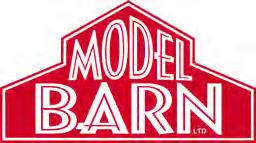
One of those team members is our friend Doug Elliott. Some readers will remember Doug from the story we featured in the February 2022 issue of New Zealand Trucking magazine, Plastic Fantastic.

In that story, we detailed the Alf Walling Mack replicas that Doug built. We are in for a treat again this month, as we


look at three of Doug’s latest builds.
Doug has been with Conroys for the best part of 34 years, and has loved every minute of it. “They are an awesome company to work for. You definitely feel that you are a part of the family and not just a cog in the gearbox,” he says.
So, for Doug, when the 50th celebrations were mooted, there was only one thing for it – head to the workshop and replicate some of those great Conroy memories as a lasting gift to the family.
Story by Carl Kirkbeck
Photos by Doug Elliott
NewZealand’slargest stockistofqualitymodels andvintagetoys
1/50 Kenworth W900 RHD - 8 different colour schemes coming, taking orders now - due in 2023 $TBA
1/50 KW C509 & Drake 2x8 & 5x8 Low Loader “Centurion” at $649.50 Special Combo Deal!
MINI BIG RIGS
Conroy’s timeless fleet colours are instantly recognisable.
Anything can be scratchbuilt from styrene plastic, including an entire cab for a 1:25th scale D-series Ford.
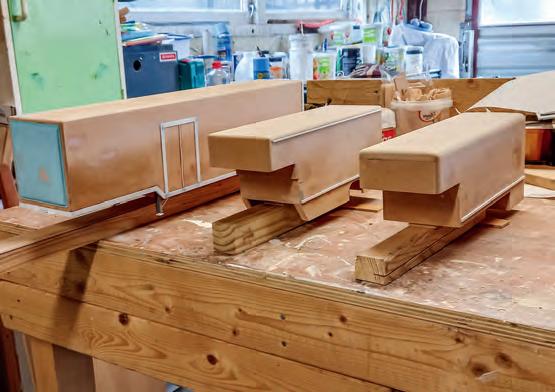
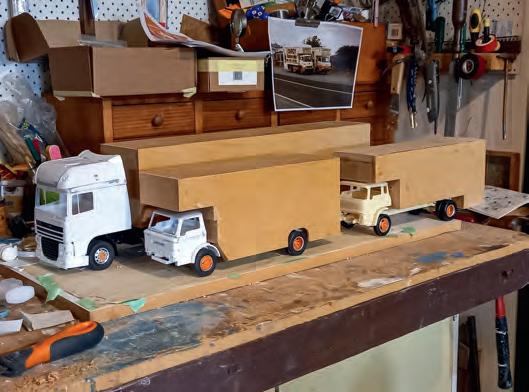
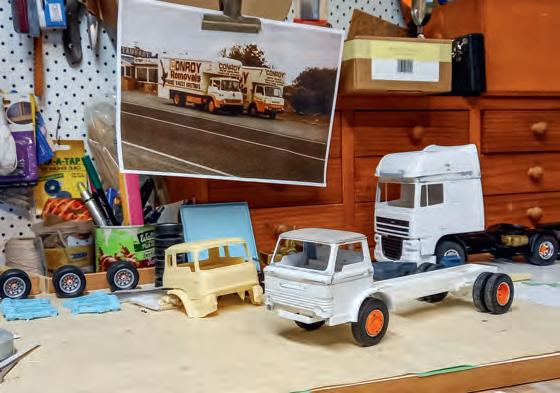

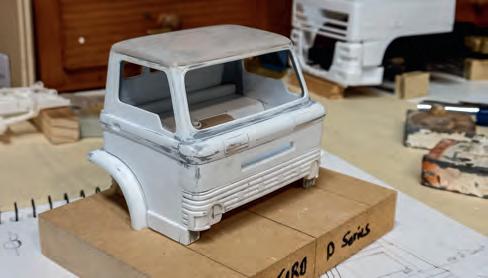
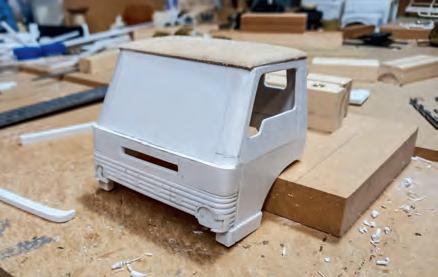
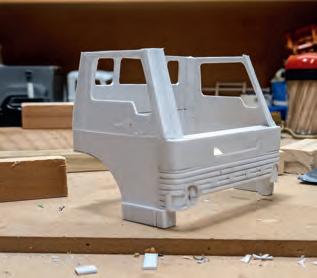

 Doug was able to source a resin-cast TK Bedford cab from Kit Form Services (KFS) in Britain, greatly reducing the build time.
The production line in full flight, with all three models starting to take shape.
Furniture removal bodies being test fitted to their chassis and readied for shaping and detail.
Doug was able to source a resin-cast TK Bedford cab from Kit Form Services (KFS) in Britain, greatly reducing the build time.
The production line in full flight, with all three models starting to take shape.
Furniture removal bodies being test fitted to their chassis and readied for shaping and detail.
New Zealand Trucking Februar y 2023 89
The bodies were formed by laminating various thicknesses of MDF, sanding them into shape and adding plastic details.
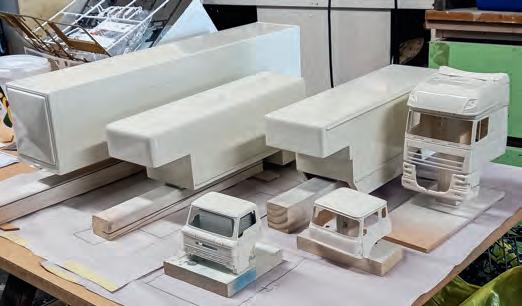
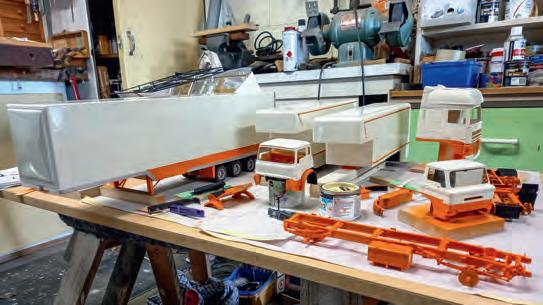



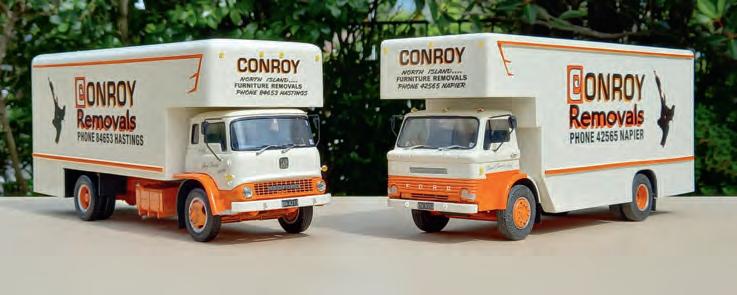
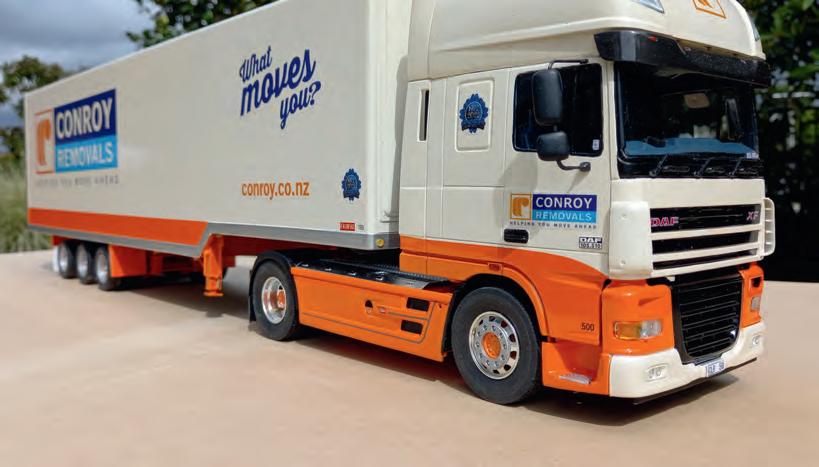

1 2 3 4 5 6 7 90 New Zealand Trucking February 2023
1) The paint shop in action, here we see the ‘Conroy Cream’ applied. 2) A coat of ‘Conroy Orange’ and things are starting to look familiar. 3) Add the sign writing and the realism goes to a whole other level. 4) David’s original D-series Ford on the right, with Gary’s TK Bedford on the left. 5) This DAF XF105 was built by Doug as a representation of the Conroy Removals we know today. 6) The big and the little together at the 50th anniversary celebrations. 7) The trio now take pride of place in a display cabinet at Conroy’s head office.
DAVE
WEST
#26
Dave West Motorsport Pukekohe, NZ
TRUCK
Freightliner Argosy
ENGINE
Detroit Series 60
AWARDS
2nd Overall Supertruck
2019 & 2021
3rd Overall Supertruck
2018 & 2022
1st Overall A Class Truck
2018
Eagle Spares Best Presented Team
2019
ABOUT
Dave is involved in the transport industry operating a fleet of 22 trucks from his family base in Pukekohe. Having watched the very first supertruck race as a teenager it has been on his bucket list ever since. Dave raced dirt track for 7 seasons winning the national and track championship multiple times, then the timing was right to take the step and build his Freightliner Argosy supertruck in 2015.
The first season was very trying with a spectacular crash at Teretonga which he walked away from unscathed. Dave was determined and rebuilt the truck in 9 weeks and made a good comeback taking out several awards that season. The upcoming season will be his 7th.
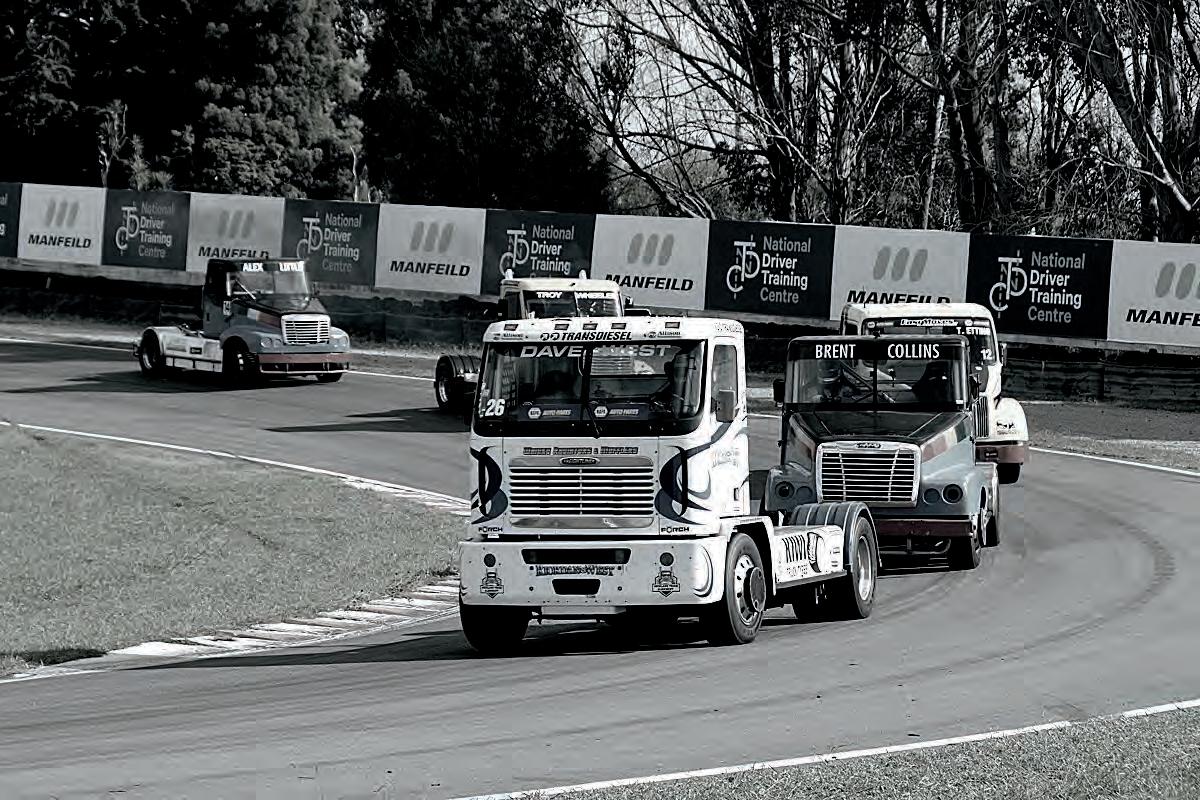





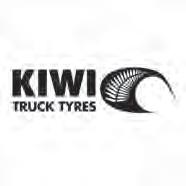
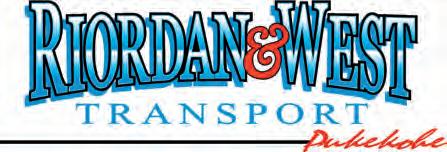

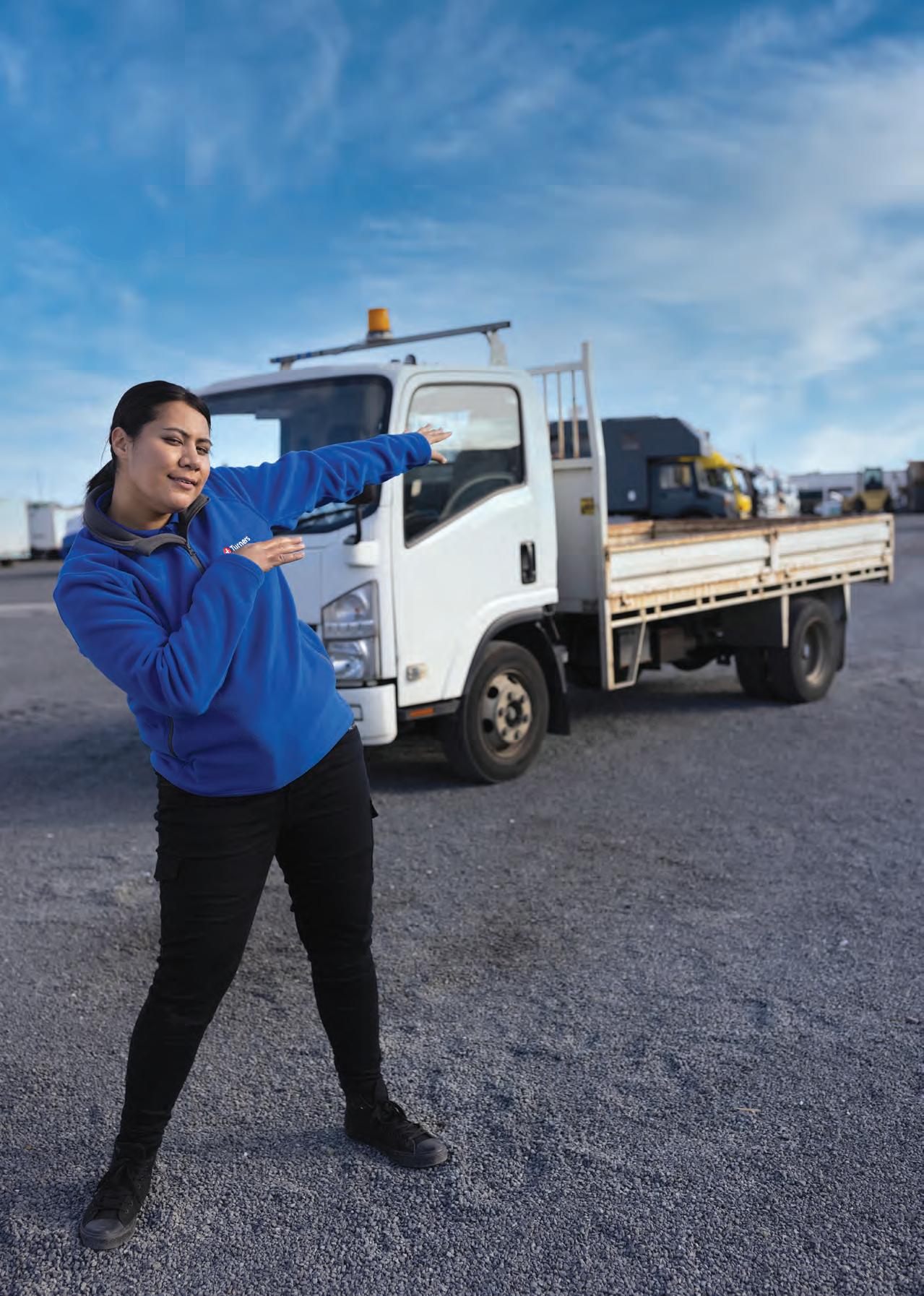

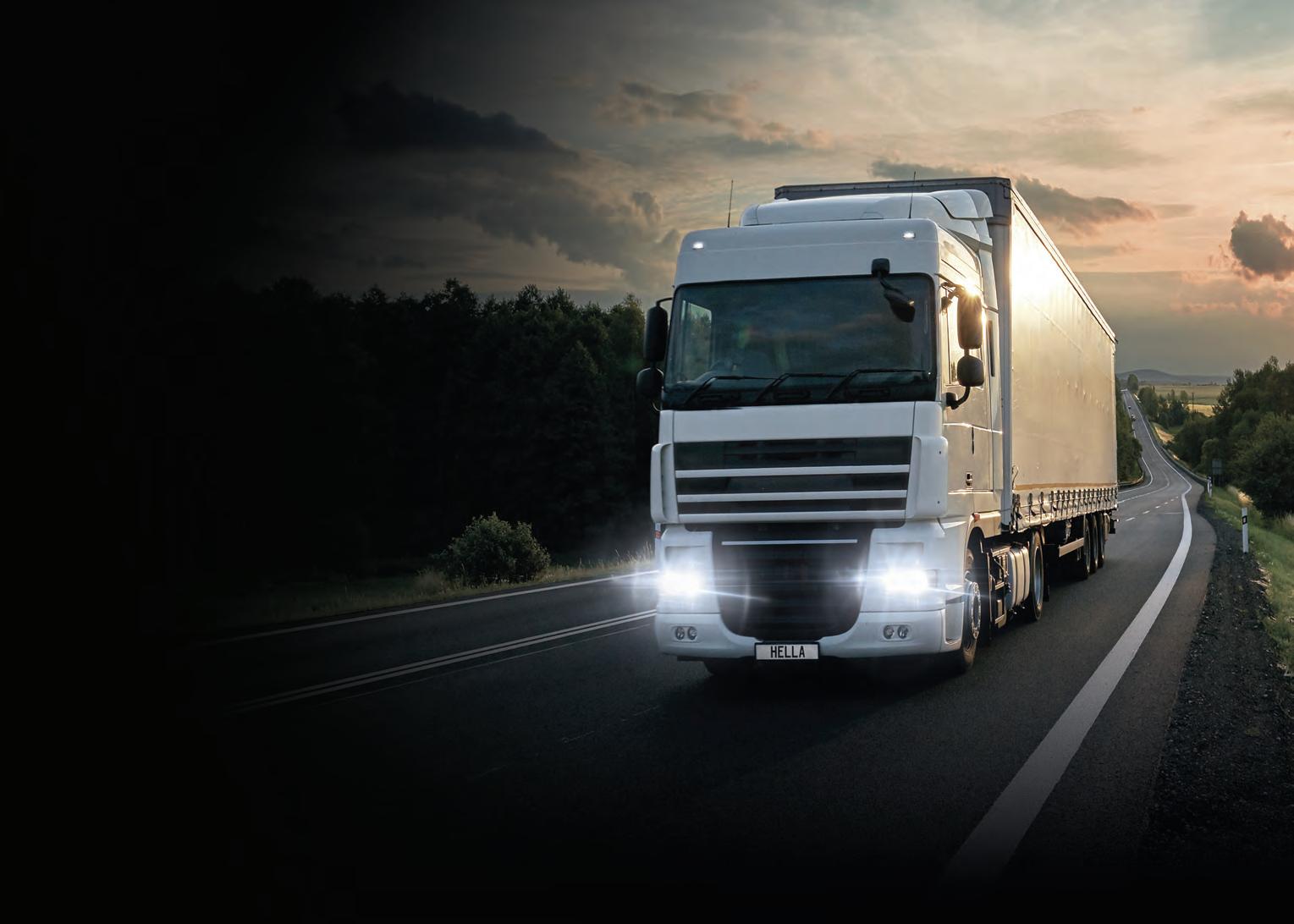

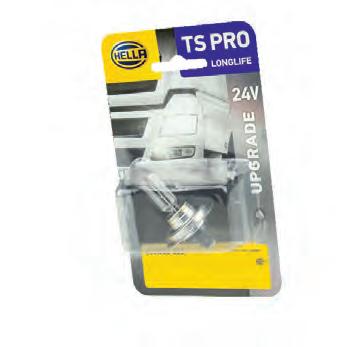






CRAIG’S TRUCKIN’ SNAPSHOT www.hella50year.co.nz of Weekly & Monthly Giveaways* Celebrate 50 Years of HELLA NZ with HELLA TS Pro eclipses conventional 24V bulbs with 100% more light. The robust construction, extra vibration resistance and twice the lifespan is ideal for professional drivers while reducing downtime and fleet costs. Enter Online High Performance Illumination HELLA UPGRADE BULBS 0800 4 HELLA (0800 443 552) for your nearest HELLA stockist Technology with Vision
Craig McCauley showcases a mixture of classic and contemporary images of Kiwi trucking.
“Are you done with little tippy?”



LITTLE TRUCKERS’ CLUB
Happy New Year, Little Truckers. I hope you enjoyed your Christmas holidays and are now loving being back at school with all your friends. If you have any stories or photos to share about your adventures, we would love to see them.
HI, LITTLE TRUCKERS!
You may all remember my wee lamb Blue, who joined my family last year. Well, he’s not so little anymore, and he keeps me on my toes. Over Christmas, he managed to break into the section and came inside to investigate the Christmas tree! When I tried to get photos of a painting I completed last month, he decided he wanted to be in it too. He’s a lot of fun but also a lot of mischief.
Congratulations to James Paddison (5), who found the Little Truckers’ Club logo on

page 57 of the Dec 2022/Jan 2023 issue. Keep an eye on your mailbox, James. A prize is on its way to you.
Thank you, Jacob Colhorn (12), from Otago, for sending in a photo of the wooden truck you are currently making at school. We are looking forward to seeing the finished project. It’s going to be awesome!
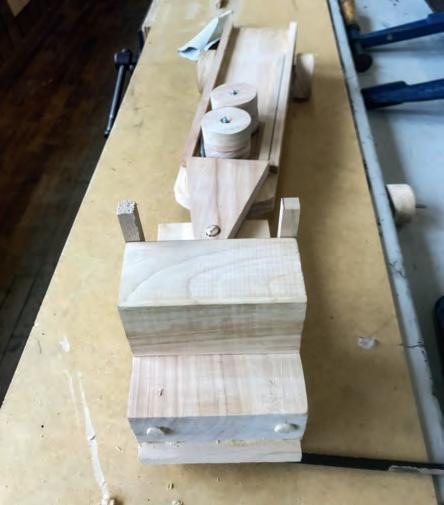
If you would like to see yourself here in Little Truckers’ Club, all you need to do is email your stories, jokes, photos, and/or drawings to me at rochelle@nztrucking.co.nz, including a wee paragraph telling us about them along with your name and age. We love seeing them all!


My lamb, Blue, photo-bombing me.
Joke of the month
Where do dogs park their trucks?
In the barking lot!
Word Puzzle Competition

It was great to have my granddaughter Elise Thomas around over the Christmas holidays. Here she is very busy loading her truck.
Jacob Colhoun is currently building a wooden truck at school. Awesome job!
The Little Truckers’ Club logo is hidden somewhere in this issue − find it and let me know where it is, and you may win a prize. Email me with your NAME and AGE at rochelle@nztrucking.co.nz
Place the listed truck brand names in the correct rows. The letters in the grey squares, once unscrambled, will spell another truck brand name. Once you know the answer, email it to me at rochelle@nztrucking.co.nz with your name and age, and go in the draw to win a cool prize!
Kenworth International
Mack
Scammell
Iveco
Freightliner
94 New Zealand Trucking February 2023
revealed very soon - watch this space.






SCHOOLS ARE BACK - LETS GET THE KIDS TRUCK WISE
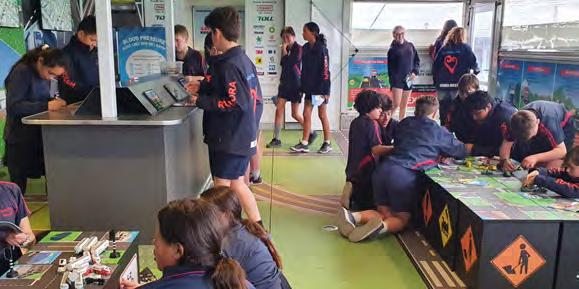
The 2023 Road Safety funding round has kicked off. The Road Safety Truck refurbishment is finished and we are inviting you to become involved. You can show your communtiy that you support Road Safety by becoming a partner of the program. Partnerships start from $2,000.00 + gst per annum. The partnership inlcudes your company brand intergrated into the whole program. You will be able to priority request the truck to visit your region and include the Road Safety Badge on your website and communications.

If you would like to become a sponsor or supporter, please contact us
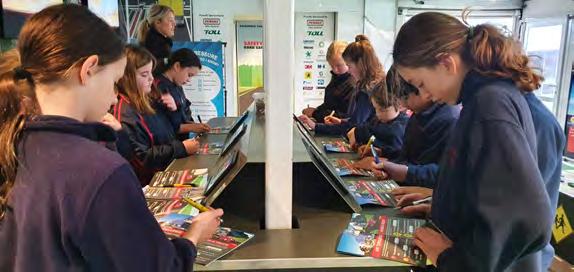






Carol McGeady 021 252 7252




Email carol.mcgeady@trucking.nz









Thanks to all our Partners & Sponsors


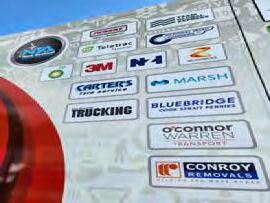



Source: Ministry of Transport

please send your event details at least eight weeks in advance to: editor@nztrucking.co.nz for a free listing on this page.

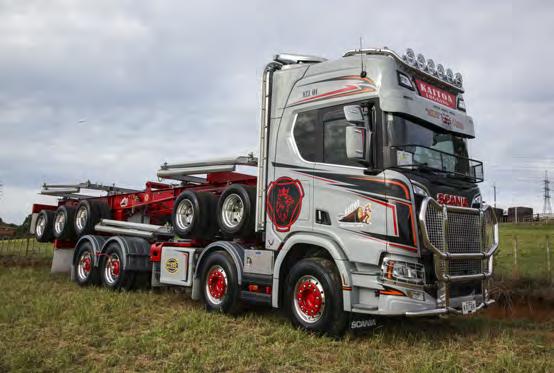
NZ Super Truck Racing
18/19 March 2023 – Invercargill
25/26 March – Pukekohe
Contact: Facebook – NZ Super Truck Racing
Tui Truck Stop Show & Shine
26 March 2023 – Tui Brewery, Mangatainoka

Contact: Facebook – Tui Brewery, hospo@tuihq.co.nz
WHAT’S ON WHAT’S BEEN
All scheduled events may be subject to change depending on weather conditions etc. Please check the websites above before setting out.
Wheels at Wanaka
8 and 9 April 2023 – Three Parks, Wanaka
Contact: wheelsatwanaka.co.nz
Gisborne East Coast Truck Show
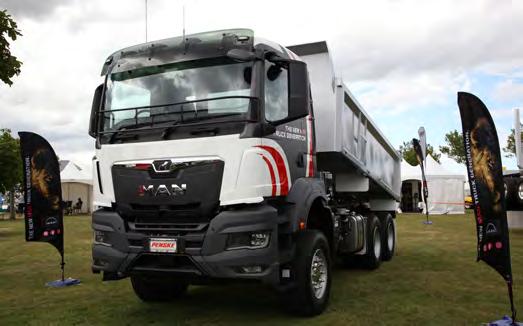
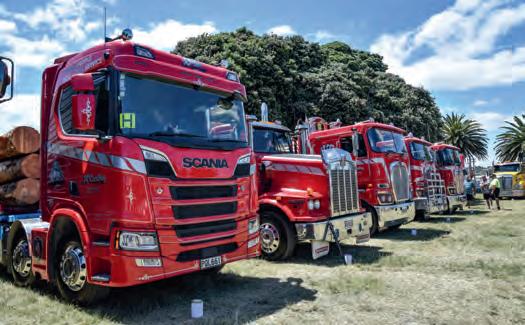

15 April 2023 – Gisborne A&P Showgrounds
Contact: gizzy.truckshow@gmail.com, Pete de Denne – 027 434 4727
Events Gallery
Visit the New Zealand Trucking website to view galleries of the latest truck shows from New Zealand and abroad. Go to nztrucking.co.nz/events or scan the QR code to view on your mobile.
Show organisers
Bombay Truck Show, 21 January 2023.
TMC Trucking Industry Show, 25/26 November 2023.
MTD’s 50-year Celebration, 22 October 2022.
Wheels in Wanganui, 22 January 2023.
96 New Zealand Trucking February 2023








HEALY’S HUMOUR Drugs and alcohol affect trucking everywhere. Accredited to AS/NZS 4308:2008 and compliant to AS/NZS 4760:2019 Industry Standard. That’s why we go anywhere! Whether you need workplace drug testing, pre-employment testing, drug education and training classes, or substance policy design services, TDDA goes where you need us, when you need us. Visit tdda.com or call 0508 3784 8378 to learn more.
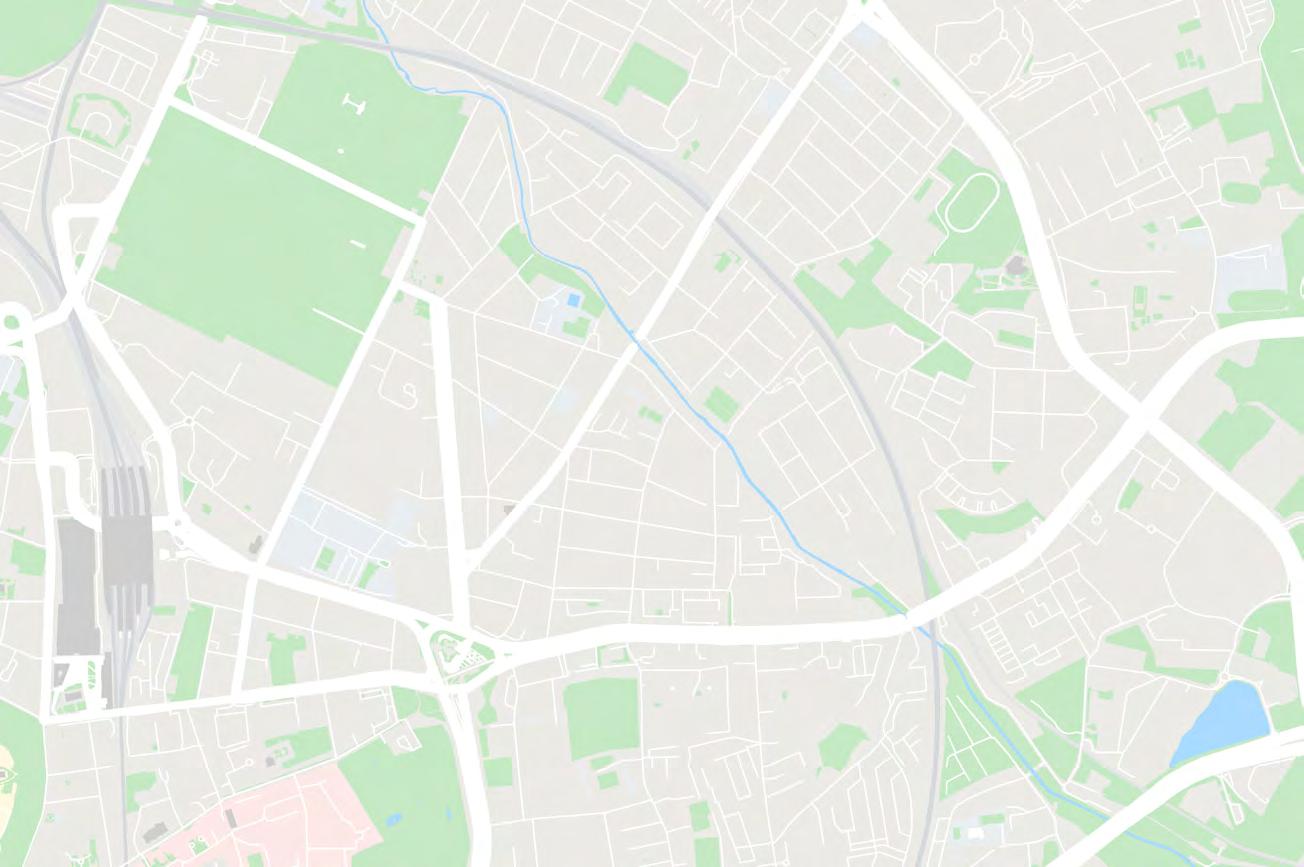

0800 447 735 TeletracNavman.co.nz TN360 Your trucks can provide a goldmine of information that can reduce costs & boost productivity. With the power of AI, TN360 delivers real-time visibility to all your vehicles, assets & equipment across your business. Experience fleet visibility that delivers intelligence instantly. From driver safety through to productivity, monitor your operation in real-time to make smarter decisions. Get all the tools you need to get connected. Digital Documents, Checklists & Forms Route Compliance & Job Execution Two-way Integration Services RUC & Compliance Management Driver Behaviour & Electronic Driver Logbook Smart AI-Enabled Cameras Engine & Performance Metrics Dashboards, Insights, Analytics & Reports
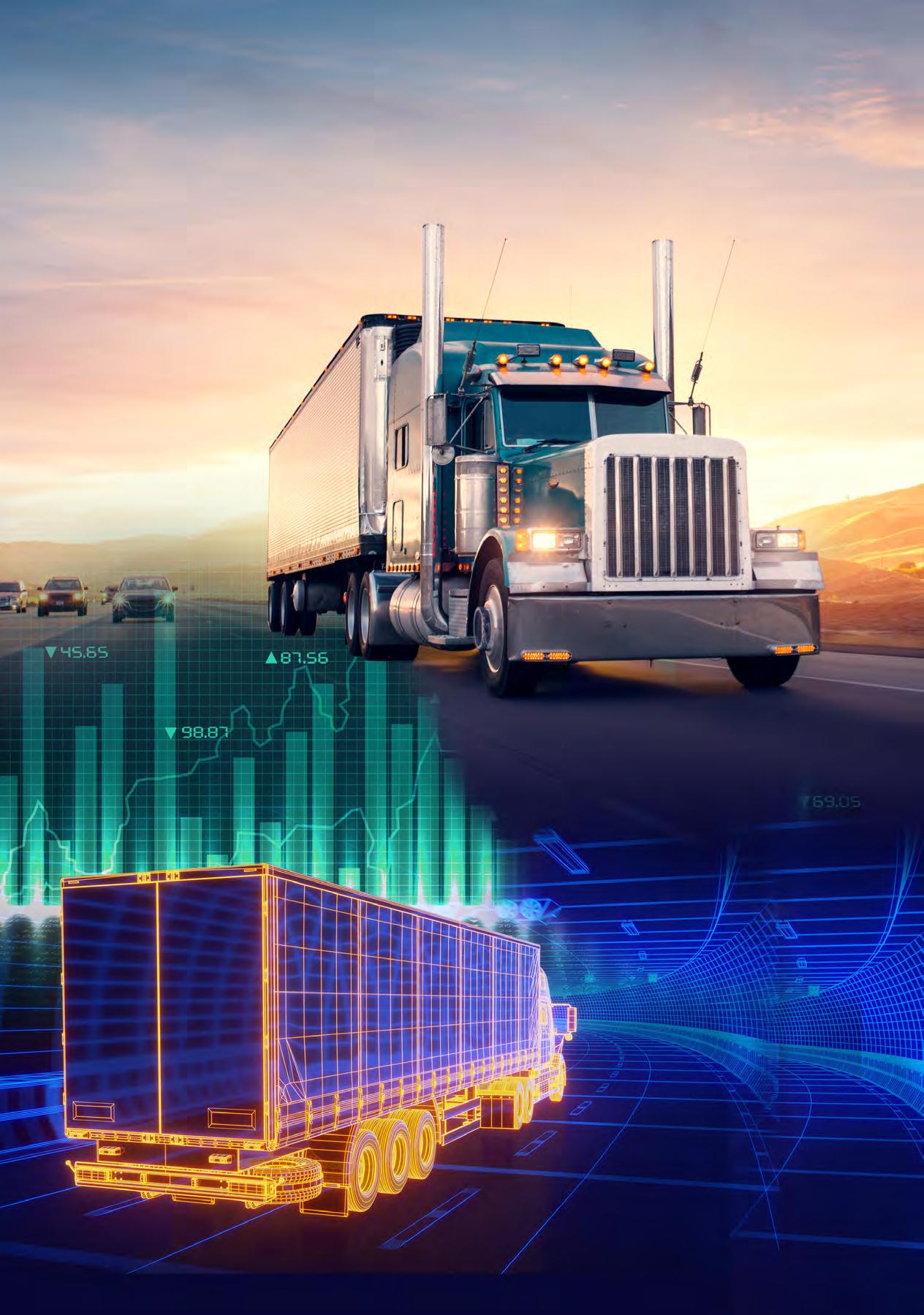




100 Moving Metrics 104 Incoming Cargo –Balancing batteries 106 Better Business –Eyes Up NZ launch 108 Product Profile –NAPA 110 Road Ahead Conference 112 IRTENZ Conference 116 Carriers’ Corner 118 Truckers’ Health –Stroke and truckies 120 Health & Safety 122 Legal Lines 124 Business, Together 126 NZ Trucking Association 128 Transporting New Zealand 130 The Last Mile BROUGHT TO YOU BY
MOVING METRICS
THE SALES NUMBERS
New
Zealand Trucking reveals
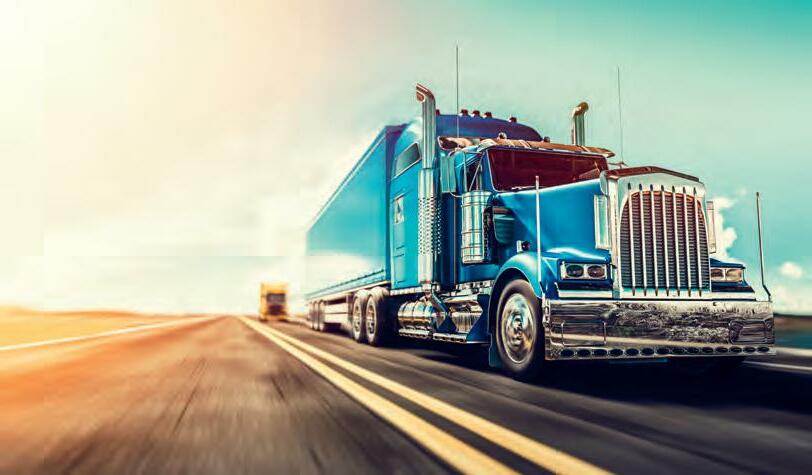
how
the economy is travelling via key metrics from the road transport industry. From time to time, we’ll be asking experts their opinion on what the numbers mean.
Summary of heavy trucks and trailers first registered in 2022

This information is compiled from information provided by the NZ Transport Agency statistical analysis team and through the Open Data Portal.

The data used in this information reflects any amendments to the data previously reported.
Vehicle type
This summary includes data from two heavytruck classes and one heavy-trailer class.
A goods vehicle is a motor vehicle that:
(a) is constructed primarily for the carriage of goods; and
(b) either:
(i) has at least four wheels; or
(ii) has three wheels and a gross vehicle mass exceeding one tonne.
Vehicle class Description
NB (mediumgoods vehicle)
NC (heavy-goods vehicle)
TD (heavy trailer)
A goods vehicle that has a gross vehicle mass exceeding 3.5 tonnes but not exceeding 12 tonnes.
A goods vehicle that has a gross vehicle mass exceeding 12 tonnes.
A trailer that has a gross vehicle mass exceeding 10 tonnes.
A table of all vehicle classes is in Table A of the Land Transport Rule Vehicle Dimensions and Mass
2016 Rule 41001/2016 https://www.nzta.govt.nz/ assets/resources/rules/docs/vehicle-dimensionsand-mass-2016-as-at-1-October-2019.pdf
Note: Vehicle classes are not the same as RUC vehicle types or driver licence classes.
First registration of NB and NC class vehicles for 2022 by major manufacturer
100 New Zealand Trucking February 2023
First registration of TD class heavy trailers for 2022 by major manufacturer
First registration of NB, NC and TD class vehicles for calendar year
First registration of NC class vehicles for years 2018 – 2022 by major manufacturer

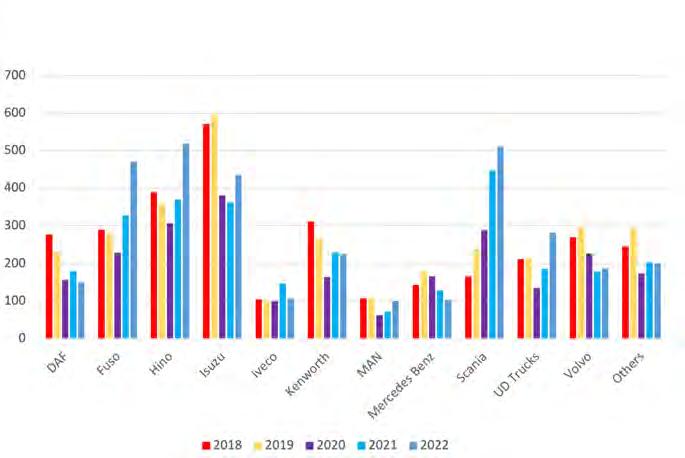
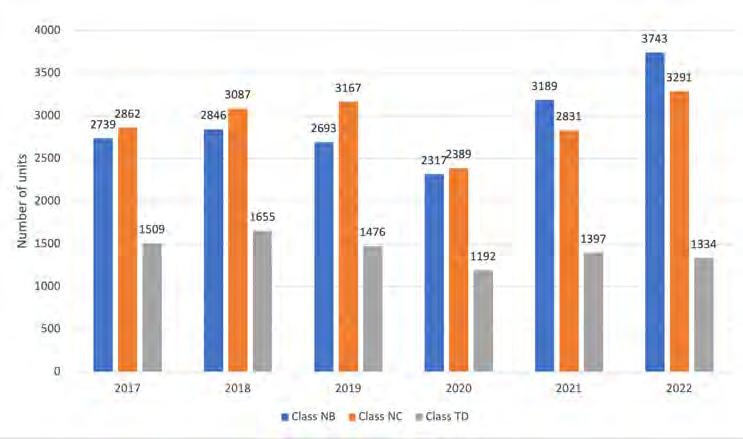
First registration of TD class heavy trailers for years 2018 – 2022 by major manufacturer

New Zealand Trucking February 2023 101
This information is put together from metrics provided by the NZ Transport Agency.
New Zealand Trucking acknowledges the assistance of the media team at NZTA in providing the data.
ROAD USER CHARGES
RUC purchases for 2022, all RUC types
In 2022 there were 53 different types of RUC purchased for a total distance of 18,241,798,066km at a value of $1,797,425,014.


A description of RUC vehicle types is available at https://www.nzta.govt. nz/vehicles/licensing-rego/road-usercharges/ruc-rates-and-transactionfees/
Please note data may differ slightly from that reported for the same period previously due to adjustments being made to the base data.
RUC type 1 vehicles are powered vehicles with two axles (except type 2 or type 299 vehicles. Type 299 are mobile cranes). Cars, vans and light trucks that use fuel not taxed at source (i.e. diesel fuel) are generally in this RUC type.
RUC purchases all RUC types
Total value and distance of road user charges purchased between 1 January 2018 and 31 December 2022 by purchase year
Purchase period Distance purchased (km) Average monthly distance (km) 1 Jan 2019 – 31 Dec 201911,502,905,782 958,575,482 1 Jan 2020 – 31 Dec 2020 10,952,303,565912,691,964 1 Jan 2021 – 31 Dec 2021 11,427,917,860952,326,488 1 Jan 2022 – 31 Dec 2022 13,375,038,9371,114,586,578 Purchase period Distance purchased (km) Value of purchases 1 Jan 2018 – 31 Dec 201815,736,558,458 $1,875,364,397 1 Jan 2019 – 31 Dec 201916,166,434,103$2,041,939,272 1 Jan 2020 – 31 Dec 202015,421,400,378$2,069,615,049 1 Jan 2021 – 31 Dec 202116,204,803,262$2,249,341,814 1 Jan 2022 – 31 Dec 202218,241,798,066$1,797,425,014 RUC distance purchased for RUC type 1 vehicles
102 New Zealand Trucking February 2023
The top eight RUC type purchases, other than type 1 in descending order:
RUC TypeDescription
2Powered vehicles with one single-tyred spaced axle and one twin-tyred spaced axle
6Powered vehicles with three axles, (except type 308, 309, 311, 399 or 413 vehicles)
43Unpowered vehicles with four axles
14Powered vehicles with four axles (except type 408, 414 or type 499 vehicles)
951Unpowered vehicles with five or more axles
H94Towing vehicle that is part of an overweight combination vehicle consisting of a type 14 RUC vehicle towing a type 951 RUC vehicle with a permit weight of not more than 50,000kg
33Unpowered vehicles with three twin-tyred, or single large-tyred, close axles (except vehicle type 939)
408Towing vehicles with four axles that are part of a combination vehicle with a total of at least eight axles
Average monthly RUC purchases for 2022 (all RUC types)
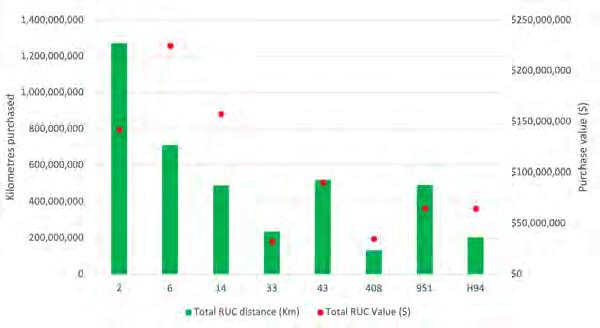

RUC distance purchased during 2022 for selected RUC types
RUC purchases during 2022 for selected types

New Zealand Trucking February 2023 103
By comparing distance purchased year to date with the same period for previous years, trends in changes to activity by RUC type vehicles will become clear.
SEAT OF POWER
front, which reassured me its origins were rooted among these fine folk of earthly origins surrounding me.
It seemed to generate far more than the current required to thrust an eTruck down the road. I found its mere form factor intriguing. It looked like an alien interstellar vehicle, and I felt like one of the more primitive characters from Arthur C Clark’s 2001: A Space Odyssey, obsessed with the monolith before me. Thankfully, though, it had MAN proudly stamped on the black plastic shroud at the
Nuremberg in Germany’s Bavaria region is the longstanding home to MAN’s engine operations. The city’s ongoing role as the Lion’s ‘powerhouse’ looks assured with the announcement mid-last year that MAN will invest €100 million over the next half-decade in batterymanufacturing operations.
As you’d expect in 2023, the approach to the project looks a lot different to what we would have seen even half a century ago, with environment, health and safety, use of technology, and collaboration key pillars right from the initiation of the R&D and discovery process.
Beyond MAN’s own sense of social licence, there’s good reason to ensure all the
new-era commercial boxes are ticked, with the Bavarian state government stumping up €30 million for energy research and technology funding between 2023 and 2027, providing funding and budgetary requirements are met. The funds will be used for research into battery assembly, cell chemistry research, battery safety and recycling.
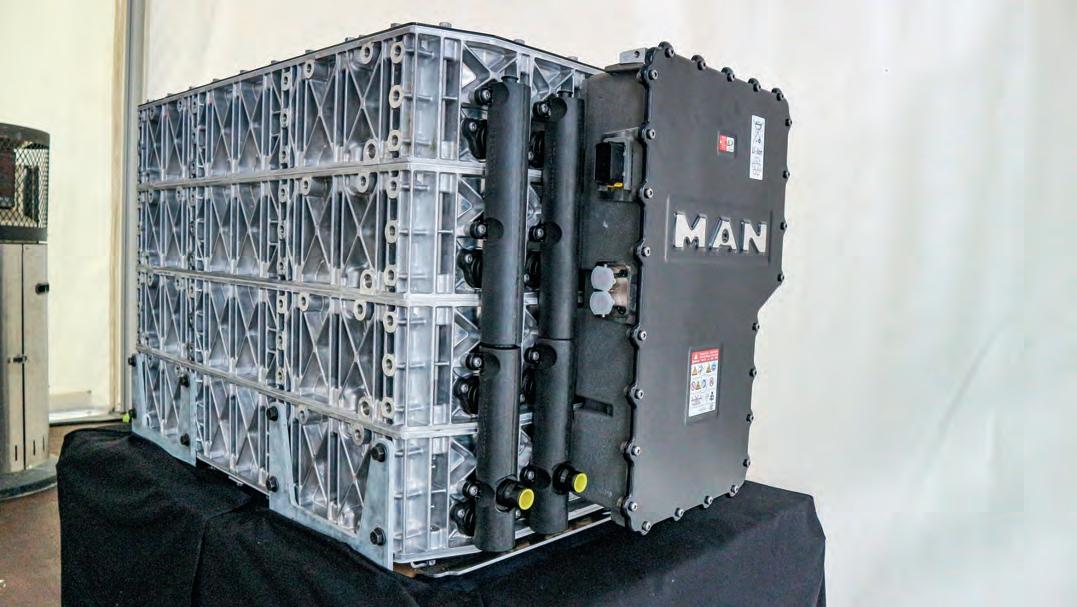
Once up and running at full capacity, the new plant will produce 100,000 battery packs a year – enough for 18,000 to 20,000 trucks and buses – and it will employ 350 people.
Not all batteries are created equal
The increased focus on horses for courses heralded by the electric propulsion era goes all the way to the energy source itself. While
there’s immense resident IP in electric propulsion within MAN’s parent Traton Group, trucks are not cars. As such, there has been significant R&D into the continued evolution of the truck solutions within MAN itself.
“Commercial batteries are driven many more kilometres under very different circumstances,” says Dr Markus Pröpster, the man in charge of the Nuremberg battery project. “A private car might recharge twice a week, whereas a truck may need recharging twice a day, with the truck recharges likely to be fast, high-capacity events, not traditionally great for battery life. This is why we’ve developed specific chemistry for the trucks and buses, allowing retention of service life. We have tapped into expertise from within the wider group’s other brands,
Story by Dave McCoid Photos by Dave McCoid
THE
As electric drives rise in capability, one key to their ultimate success will be matching an increasing demand for batteries with supply. MAN appears to have that well in hand.
104 New Zealand Trucking February 2023 INCOMING CARGO
Thank goodness for the friendly badge on the front! Instantly you can see the modular construction with the conduits connecting the layers, and the controller on the front.
including our colleagues at Scania, as well as externally, from universities.”
While archrival Daimler heads down the lithium iron phosphate road for its HV battery technology, MAN’s thrust will come from lithiumion units with an NMC (nickel, magnesium, cobalt oxide) cathode due to a higher energy density that makes this technology possible. The benefits for this cathode construction are excellent specific energy, low selfheating rate, and robustness where frequent cycling occurs, e.g. automotive and energy storage.
“As we see with things like our phone, the market is very dynamic with huge step changes coming every three to five years,” says Pröpster. “Think of the phone you had five years ago to the one you have today. Likewise, electric propulsion. Our batteries already have a high level of maturity. These will be generation three for us; the first went into the eTGM in 2018, the second into the Lion’s City E buses and now generation three in our buses and eTruck. We have invested heavily in developing IP in-house rather than a totally outsourced model. It allows us to retain a core competency at a time when change comes quickly.”
The individual cells will be sourced from a Europeanbased supplier also used by the Volkswagen Group.
Blocks with a brain
“It has been so important to have R&D and production work together on this project, so we have close cooperation and communication, ensuring the best outcomes for quality, production efficiency, and cost.”
The result of all that intracompany collaboration and key to the goals set at the start is modulation.
The batteries Nuremberg will produce take the modular theme to the nth degree with
a modular, within modular, within modular approach – almost electric Lego.
It is what gives them the symmetrical alien-craft-type form factor.
Although they come in both oblong (buses) and classic cube (truck) forms, the architecture is the same. A metal frame supports modular cells stacked in layers, with each layer having its own temperature control plate at the bottom. The layers are then connected to low- and high-voltage wiring, and then the controller resident behind that black MAN monogrammed box at the front.
“It’s a key difference between the pas-cars [passenger] and commercial,” says Pröpster. “The pas-cars are single-layer batteries; ours are multi.”
The controller oversees the output and, in conjunction with the truck’s onboard systems, manages temperature. “The rule of thumb is if you’re feeling good, then so is the battery. About 10° to 30° is what they like.”
Because batteries come with a weight penalty, there’s zero point in having more than you need. A linehaul eTruck will house between four and six of the units. (Refer New Zealand Trucking magazine, Dec 22/Jan 23, One Giant Leap for MANkind.)
As we all know, time is money when it comes to trucking, and the commercial batteries are designed with both slow and fast megawatt charging in mind – able to take a fair old dose at 700kW.
Safety is a key parameter, as it is with any automotive component. The battery modules are subjected to all manner of impact and wateringress testing. Every lineproduced battery module will have to pass a 25-parameter test before release.
Likewise, there’s been a huge emphasis placed on the battery modules’ end-of-life
journey. The intention is for a second and third use in less demanding transport tasks as well as stationary placements. Their modular nature means mid-life replacement of components as needed is also feasible. Like everything, though, there is a finality, and in that MAN has aimed for a 97% recovery and reuse rate for all components.
Deck the halls
“In the R&D phase, staff are dressed in safety clothes that would not be practical in a high-volume line-production environment,” says Pröpster. “Hence, the R&D team and production teams have worked closely throughout. Production staff are also being trained to assemble the batteries safely.”
Until the last quarter of 2022, the battery modules produced were deemed prototypes and assembled by the R&D team. That’s now progressed to a small serial production line producing about 2000 to 2500 units per annum, which will accommodate demand as it ramps up toward 2024 and the arrival of the eTruck to market. The end production environment will look very different from R&D assembly and current low-volume series production with refined production processes and
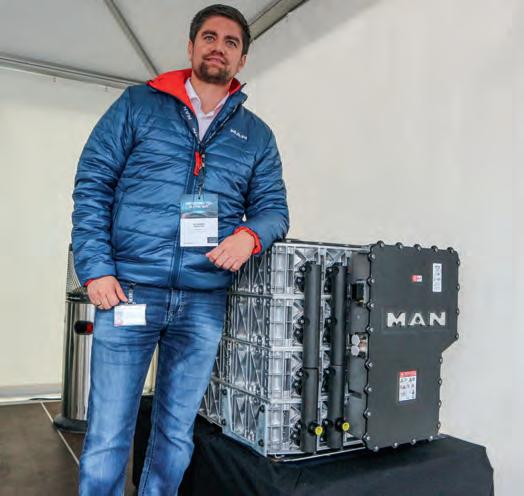
automation, all resulting from that close collaborative effort.
“We are undertaking extensive levels of training to bring our people in the factory, and those in aftersales and service on the journey, transitioning from diesel trucks and engines to electric. The plant will create 350 jobs.”
Building of the final production hall commences in Q3 this year and will be ready for occupancy in Q3 next year. Full-blown assembly won’t come online until 2025, with target numbers of about 100,000 units each year. “That will grow quickly between 2025 and 2030,” says Pröpster.
Not surprisingly, looking a little farther down the road, that production increase also implicates Traton Group’s other European heavy-truck marque, Scania.
“The factory is planned to be flexible and able to integrate production of Scania batteries also, even though now the batteries are not 100% the same due to the different frames on the respective 2024 and 25 models. In the future, when looking at common products, common battery production is planned,” explained Pröpster. Next month: The charge ahead!
New Zealand Trucking Februar y 2023 105
Dr Pröpster addresses the attendees. Positioned beside his ‘baby’, you get a sense of scale.
#EYESUPNZ ROADSHOW LAUNCHES
AutoSense has launched a national roadshow to educate drivers about fatigue and distraction. Hosted by motorsport champion Greg Murphy, neuroscience educator Nathan Wallis and road safety expert Kelly McLuckie, it promises to put a new spin on improving driver safety.

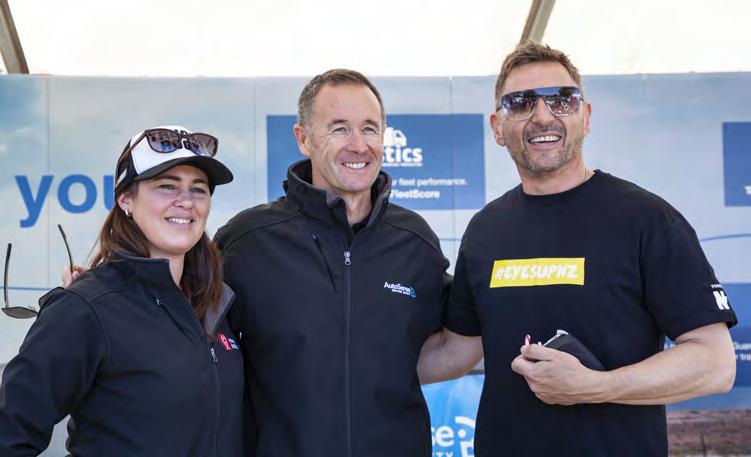
The frequency of sleep events while driving is increasing, with a verified 125 fatigue sleepingwhile-driving incidences a day, according to the data provided by 4600 AutoSense Guardian Seeing Machine cameras installed in heavy and light vehicles.
AutoSense CEO Charles Dawson says these are events where the driver’s eyes are closed for 1.5 seconds or more. “The data is worrying. These fatigue events were recorded from September to November 2022. Alarmingly, they are up 32% on the previous year.” Dawson says the Guardian cameras are recording two peak daily fatigue times: 5am and 11am.
Likewise, incidents of distraction are increasing, with the data showing at least 134 verified mobile phone events per day. “These mobile distraction events increased by almost 20% from September to November 2022,” says Dawson.
“We want to educate drivers on what is causing fatigue and distraction and how they can do something about it. We thought about how to get to drivers and came up with the concept of speaking to the people who interact with those drivers and look after their world – the line managers, dispatchers, etc – and enabling them to get those resources back out to the drivers.”
Eight 3.5-hour #EyesUpNZ workshops will be conducted around the country, beginning on 14 March in Auckland and ending on 17 May in Christchurch. Kelly McLuckie from Success Formula will facilitate the sessions.
“The sessions target anyone running toolboxes or managing drivers daily who needs to be armed with information and the skills to share it with the drivers in an engaging way.
“One of the issues in transport and logistics is people are rarely taught how to communicate. We’re going to run through tips on how to communicate well, run good meetings and get messages across. We’re going to get really practical, and attendees will walk away with a plan on how to share the information they received confidently.”
Nathan Wallis and Greg Murphy will discuss the impacts of fatigue, sleep, distraction and how the brain works and provide tips on helping with drivingrelated safety problems in workplaces.
“Fatigue and distraction affect everybody. Understanding the brain is key to helping to change that,” Wallis says.
“The scary thing about fatigue is that by the time you’re aware you’re starting to nod off, you’ve already had several microsleeps you’re not aware of.
“You can’t really turn off distraction because the brain is primed to look for
things for survival. But when it’s not critical to survival, you need to train yourself to ignore it. You consciously have to decide to pull away from the distraction. You can’t look in two places at once,” Wallis explains.
“‘Drive safe’ is a phrase thrown out there, but you need to be taught and trained properly to go out and drive safely. There are improvements we can make constantly, areas that can be completely rebuilt and designed to ensure generations to follow are safe on our roads,” Murphy adds.
“It’s about providing the info in layman’s terms and in a way that’s incredibly interesting, makes sense and is relatable.”
There will also be a young driver component – driving and the teenage brain. “We want to support young drivers and their parents who are supporting them through the driving process to have a different way of looking at it and understanding how the brain works,” says Murphy.
“We hope the roadshow will have a lasting impression, reduce the number of these events we’re seeing per day, and most importantly, reduce the number of crashes on the roads,” Dawson says.
For more details and tickets to attend the #EyesUpNZ driver safety workshops ($199+GST) visit eyesupnz.co.nz
BETTER BUSINESS
106 New Zealand Trucking February 2023
From left: Kelly McLuckie, Greg Murphy and Nathan Wallis.
Driving and the brain.
Hosted by Nathan Wallis (Neuroscience Educator), Kelly McLuckie (Success Formula people coach) and Greg Murphy (Motor Racing Legend), you'll learn about the brain and how it works when driving, the impacts of fatigue, sleep and distraction and tips to help drivers with these issues.

This is followed by an interactive train-thetrainer toolbox session which will equip you to go back to work and educate your team.
Tickets are limited. Get in quick!
Auckland - 14 March
EVENT DATES
Hamilton - 16 March
TRAIN-THE-TRAINER TOOLBOX SESSION
Development programme for managers in transport
includes:
Driving and the brain education session
Train-the-trainer toolbox session Toolbox to take away – ready to train your team!
#EYESUPNZ training certificate
Book now at eyesupnz.co.nz
Palmerston North - 22 March
New Plymouth - 23 March
Tauranga - 3 May
Invercargill - 9 May
Dunedin - 11 May
Christchurch - 17 May
$199
+GST
FILTER OUT
UNSCHEDULED DOWNTIME
Transport business owners and drivers need effective filtration to operate their fleets. The Donaldson filtration range, available through NAPA, delivers a comprehensive line of filtration solutions for trucks and transport fleets.

New Zealand job sites – including mining, construction, roading and farming – can be hard on vehicles and equipment. Donaldson has designed its filters for the challenging conditions in which New Zealand transport companies operate.
Products must be robust to tackle the challenges faced in the transportation industry, needing to stand up to starts, stops and idling. Adding a filtration system to your bulk fuel and lube storage can protect your equipment and maximise uptime.
The Donaldson range of fuel and lube truck filter kits provide the performance and reliability needed for modern diesel engines. The products are built to meet or exceed OE requirements. Manufactured to the highest standard, with robust, heavyduty housings and liners, they come with heat and chemical-resistant gaskets and seals, backed by a full aftermarket warranty.
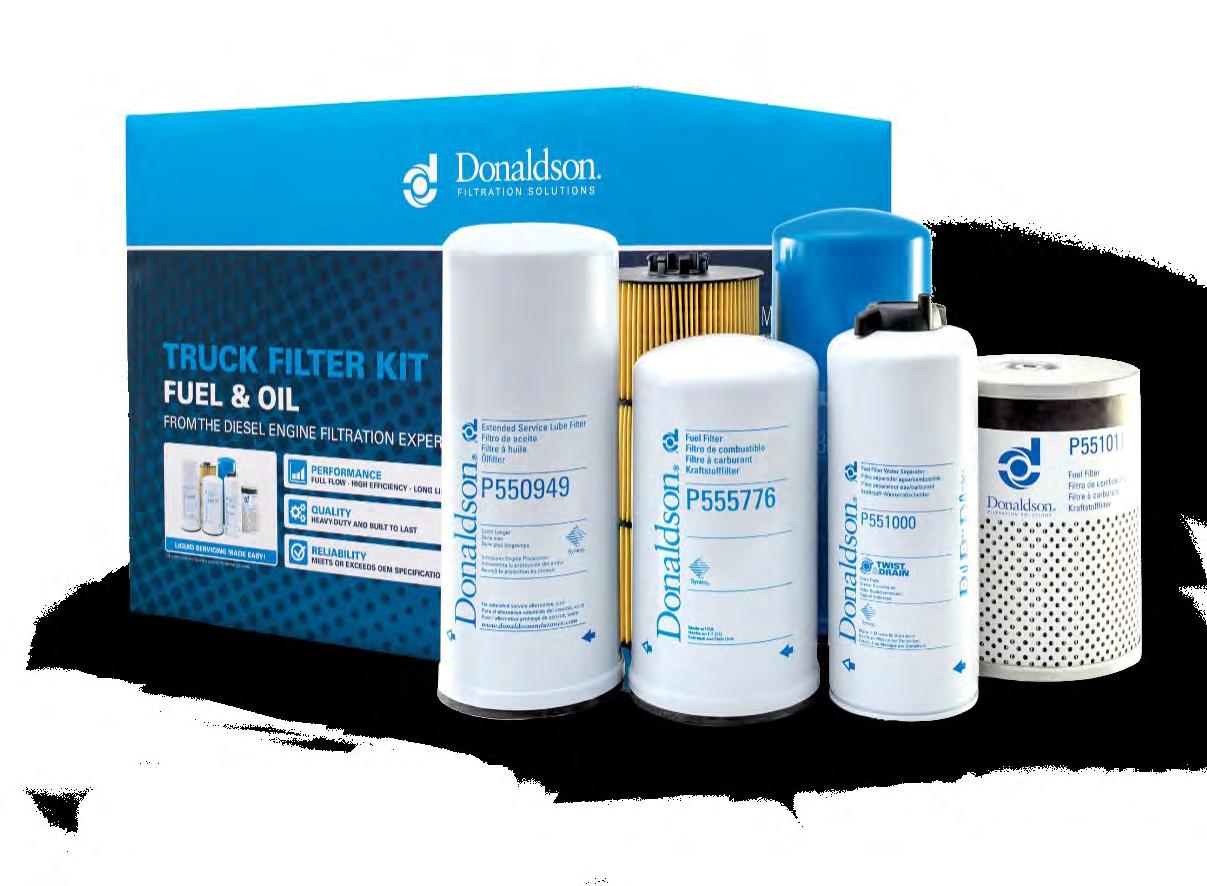
Donaldson fuel filters provide clean filtered fuel to prevent pump wear, injector clogging and premature engine wear and maintain
fuel efficiency. The fuel filter technology includes:

• Filter media that meet or exceed OEM specifications designed to allow full flow under high operating pressures.
• Heavy-duty housing for vibration-proof durability.
• Heat and chemical-resistant seals and O-rings to prevent leaks or unfiltered fuel bypass.
NAPA Auto Parts, which specialises in aftermarket automotive parts for industrial and commercial businesses, has been
supplying Donaldson filters for the past 12 months. During this time, NAPA has become a known destination for Donaldson filters, and its range of Donaldson filtration has grown by 40%, with more to come.
For more information, contact NAPA Auto Parts on 0800 800 073 or visit: napa.co.nz
108 New Zealand Trucking February 2023 PRODUCT
PROFILE

YOU KNOW HOW TO KEEP NEW ZEALAND MOVING. NAPA TO HELP YOU DO IT. NAPA Know How unscheduled downtime means lost revenue. NAPA Know How fitting superior filters can help. That’s why we’ve sourced quality ranges and partnered with industry leaders to ensure that you’ve got access to the right filters for the right vehicle. Contact the team with the Know How to keep you moving. 0800 800 073 www.napa.co.nz
The Road Ahead Conference 2022
Transporting New Zealand’s The Road Ahead Conference discussed essential issues impacting the future of New Zealand’s road transport industry. Expert speakers provided valuable industry insights for transport operators and how the sector can prepare for the challenges and opportunities ahead. This issue, we look at the key points from Andy Foy, director at Predictive Performance, Jonathan Caseley, executive director at PERFORMX Aotearoa, and Amanda Douglas, partner at Wynn Williams. They discuss New Zealand’s employment issues, finding the next generation of drivers and the cost of the missing workforce.
Andy Foy Director at Predictive Performance
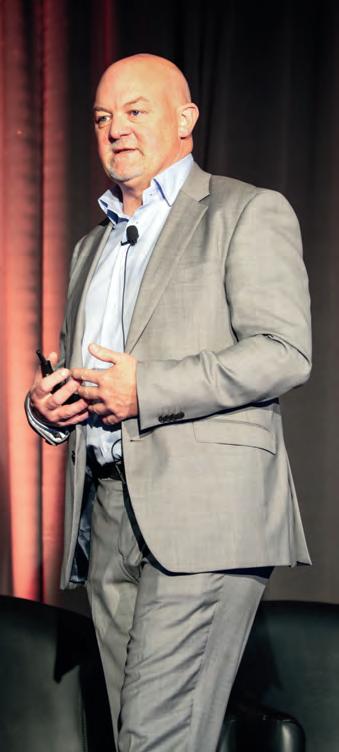
“The war for talent is over. The simple reason is that the employee won,” Foy said.
He says we are about to enter a “very interesting” phase regarding talent shortages – that while there is awareness of the issue, it’s unfortunately going to get worse.
“When looking at truck drivers, for example, it doesn’t matter which country you go to in the OECD – Britain, United States, Canada… Everyone is experiencing a shortage of truck drivers and logistics. So, unfortunately, the shortages we face aren’t going to go away.
“One of the things we have going on is that the population is rapidly changing. Our population is shrinking. So, where our truck drivers of the future or many of our other future professions are going to come from is a bit of a struggle. We’re going to have to look at other ways of doing things.”
One of these issues facing the transport sector is New Zealand’s ageing population, Foy said.

“At the moment, you will have about 16% of the population aged over 65 by 2028. The percentage share of those over 65 in the workplace steadily increases as the years progress,” he said.
“We can import labour. We can hire
people from overseas. But one of the other things we have to start doing is looking within sectors we may not have considered in the past.”
Another issue is the four-day working week and the increase in part-time work. “This is driven primarily by two main groups in society. One is the ageing population, and since Covid-19, employee expectations are changing. Women, in particular, are starting to exercise their expectations more. And that may be reduced hours.
“So, unfortunately, finding truck drivers now is hard. It’s unfortunately going to get harder,” Foy said. “Growing your own is a necessity. There has been a lot of training going on in the past, but you’re going to find that becomes really, really critical going forward,” he said.
“Things like Road to success are actually key to getting that workforce that you need.”
Foy said the bulk of new candidates might not come from the youth – they may come from people changing midcareer. “The logistics and trucking industry is one of the few industries I can think of where you can come in green at almost any age,” he said.
“If you have the right aptitude and ability, you can progress relatively quickly compared with many other industries and earn a decent wage doing it.”
Jonathan Caseley Executive director at PERFORMX Aotearoa
Caseley said there are significant inefficiencies with graduates coming out of New Zealand’s education system not meeting businesses’ needs.
“We all know there’s a skilled-worker crisis. For everyone I’ve talked to – and the employers and industry associations we’ve talked to over the past eight months – it is a huge issue,” he said.
“The skilled-worker crisis is permanent. It’s not going to go away in one or two years. It will take five, 10-plus years to really fix and solve. It needs employers and industries to step up and do their part because the system is broken, and
Andy Foy.
110 New Zealand Trucking February 2023
everyone knows it’s not working.
“In 2020, the industry was about 680 jobs short of where it needed to be, given the number of heavy vehicles on the road. However, in 2021, it was 2400 jobs short of where it needed to be as a sector.
“You all know that you have trucks laid up. Some Fonterra plants have five trucks just sitting there and they can’t get to farms simply because they don’t have the people. This is the reality facing the sector.”
PERFORMX Aotearoa is a non-profit company monitoring the performance of New Zealand’s skills system and workforce. “Our commitment to all of you is that we want to work with you and support you to reduce your training and mentoring costs in a very significant way,” Caseley said.
“We want to help employers across all industries access the school workers they need to grow. We also want to help our young people to succeed in the workplace and accelerate the achievements of Maori and Pasifika.”
Caseley said there is an urgent need to get independent data that can be used to fix the problem and to help advocate for new employer- and industry-led solutions to the government.

“This is our road ahead solution – to address these major data gaps. We will work with you to establish a transport, automotive and freight workforce performance dashboard. This will be an innovative, first-of-its-kind management tool for you, for your regions, for your industries to monitor and grow your workforce. It will have real-time data that can be used to demand the skilled workers that you need to grow,” he said.
“It’s all about new approaches and tools. It’s about the road ahead, about building and learning and following the footsteps from the past and moving that forward in a new direction.”
Amanda Douglas Partner at Wynn Williams
Douglas said while Covid-19 had a huge impact on employment law, the country is slowly making its way out of it.
“We have vaccination requirements removed. We’ve said goodbye to the traffic light system. Most mask-wearing requirements have dropped away,” she said.
“What a lot of employers are doing is making sure that [these requirements] are covered in their business-as-usual health and safety policies. So just keep your mind on it – reviewing your health and safety policies and making sure that it covers off any side issues you might have to deal with in terms of Covid issues.”
Douglas said a lot of focus now is on infringement notices, fines and licensing. “These issues impact a heap of other obligations as well. And we are seeing quite a few transport companies struggling with this,” she said.
“It’s not big buckets of money, but these other things do turn into big buckets of money in time.”
Douglas said operators should get ahead of the curve and start looking at processes now. “Drivers can be stupid and do stupid things. We’ve seen a lot of businesses that have put in place measures, and the drivers still don’t do
what they’re told to do,” she said.
“WorkSafe is expecting businesses to perform miracles and somehow stop the driver from driving longer than they should have, for example.”
Douglas said one of the recent changes affecting the transport sector is the accredited employer work visa. “It replaces a whole bunch of other visas and is a new system, which is employerled around getting migrants into the workplace,” she said.
The new visa is a three-stage process. “The first one, unsurprisingly, as the name suggests, is to become accredited. Employers need to meet a minimum set of requirements – things like being a liable and genuine operating business, being compliant with immigration, an employer of business standards,” Douglas said.
“Then there’s a job-check stage as the second stage. This is basically advertising a role to demonstrate that there are no New Zealanders who could do the job,” she said.
“Then the third stage is to have the migrant apply for the visa, and then at that stage, they’re checking that they have the qualifications and that the specific employment agreement, etc, meets all of the requirements.”
Amanda Douglas.
New Zealand Trucking Februar y 2023 111
Conference 2022
Under the banner of Evolution to Revolution, the 17th IRTENZ conference focussed on the current and future movements around zero-emission vehicles; infrastructure and energy plans and solutions; legislation, compliance and dealing with productivity loss; and operator learnings from the decarbonisation journey so far. Here’s the second of two reports on the conference held in November 2022.
Creating and managing energy
Simon Monteith, engineering manager of Kahu EV, spoke about how smaller local companies also can have an impact. Since 2008, originally operating as Zero Emission Vehicles, Kahu EV built New Zealand’s first BEV waste truck. The company is also on the verge of launching the first New Zealand-designed and assembled medium-duty BEV.
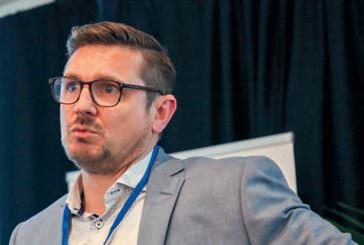
Monteith said the fourth industrial revolution – the convergence of physical, digital and virtual worlds enabled by increased software sophistication, machine learning and interconnectivity – would open up vast opportunities in the future of transport. These included remote control, autonomy and platooning, advanced telemetry, driver and load monitoring, active route planning, eCommerce integration, wireless charging and anticipatory and reactive maintenance.
“In the not-too-distant future, we will see a fundamental change in the nature of our vehicles with the move to electrification. The true revolution will be Industry 4.0, in which these vehicles will operate. Vehicles will need to be fully functional assets in the smart environment of the future,” Monteith said.
Monteith explained that a significant portion of Kahu EV’s R&D has gone to producing a sophisticated EV control
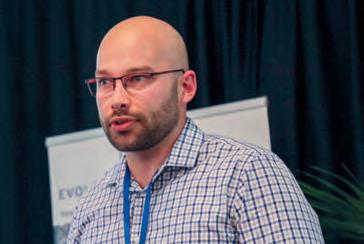
system called EV-Net, a peer-to-peer controller network.

“The network consists of multiple connected hardware modules running multiple software applications. Most vehicle types can run 80% of the same software. It’s an enabler for manufacturers to fast-track their own EV strategies. This is connected to the cloud space by our telematics unit. Any information from vehicles can be captured and uploaded to our servers – that’s where the real smart revolution begins.”
In the logistics industry, this meant a high opportunity for integration of vehicles with infrastructure, said Monteith, especially regarding the management of energy.
Ryan McDonald, head of new business, Hiringa Energy, said the next decade would be all about energy. With Hiringa a player in the green-hydrogen space, McDonald commented: “We don’t pretend hydrogen is going to be a silver bullet for everything, but it has its uses. Diesel is a very effective carrier of energy, an incredibly useful fuel. We have a huge challenge to overcome – that’s why we have to use all the tools in the toolbox. We don’t need to hit a nail with a sledgehammer.”
He said New Zealand was the leading player in the hydrogen field. “We have
vehicles operating, and more are coming. You can go to Auckland and see five different fuel-cell technologies in one day – that’s unique globally at the moment.”
McDonald updated the delegates on Hiringa’s refuelling network, which it is rolling out in conjunction with Waitomo. He said New Zealand was ahead of the curve, but Europe and Britain were investing billions in their infrastructures.
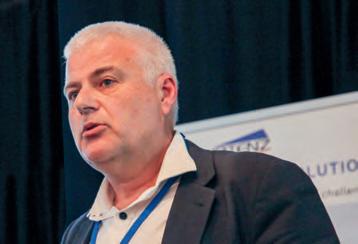
“We have some very smart engineers on our team, and we do a lot of analytics around where to put the network. We’re really aggressive with our development. We’ve mapped all of New Zealand, and we’re five years ahead of where we need to be.”
He said Hiringa did not expect to be the only player and was trying to move fast to accelerate decarbonisation.
Regarding cost, McDonald said building fleet scale would drive down costs. However, government support was needed now. “The technology is expensive and needs to get to scale. It’s a chicken and egg…
“We have to pull all levers, but the calculations are compelling. Policy is there to steer into the right direction. The government wants to hear from the transport sector – bend their ear about what you want, collectively push them.”
Andrew Renton, senior principal engineer at Transpower, said Transpower was like NZTA for the power grid. “Power is nothing different to transport – it runs constantly. It’s a big operation, and we take it seriously. New Zealand’s power system is the biggest machine in the country.”
He said the company was committed to understanding the country’s future energy needs – the biggest driver of
Simon Monteith.
Ryan McDonald.
112 New Zealand Trucking February 2023
Andrew Renton.
which would be transport, cumulatively accounting for 16.6 million tonnes of carbon dioxide-equivalent total emissions (including light vehicles and aviation, rail and marine).
He said as the uptake of low-emission heavy vehicles increases, operators would have to come up to speed with how the power system worked. He also assured delegates that there would be enough power to serve all the vehicles on the road.
“Don’t stress… There are 27GW of potential energy generation in the pipeline. Transport will be the same as when electric consumer goods came in [about the mid-20th century]; it’s the power of exponentials. We responded with all the power production we have today. Relative to the New Zealand economy, we built more capacity in the 1950s, 1960s and 1970s than we need over the next 30 years.”
Renton added that the next phase of capacity building would be tiny as a proportion of GDP compared with previous big build phases. “We have a bigger economy and more resources –we just need to get on with it.”
Ross Linton, director of Etrucks, spoke about battery-swap technology. “Etrucks has been importing XCMG products since 2018. We have 15 light trucks operating in New Zealand, an energy-neutral truck in a Dunedin quarry, and we have started rolling out the heavier E700 highway trucks. We made a few changes to these to get them right for New Zealand,” he said.
“Battery-swap technology is a point of difference for us. We’re aiming for a robotic battery-swap station that will perform the process in four minutes. There’s currently no other system that’ll get a fully charged battery in four minutes. It’s an infrastructure buffer. It doesn’t matter when you charge a battery that’s not on a truck. Battery swap is a good solution for metro operators. And
battery swap as a service changes the capex model significantly.”
Linton commented that XCMG also offered hydrogen fuel-cell vehicles and was also looking at hydrogen combustion as an interim technology.
“There’s no need for any technology to become dominant, each will focus on different applications.”
Legislation and compliance
Richard Lee, of Independent Training Audit Services, an inspection company that uses operators, distributors, suppliers and agents for regulated vehicle inspections, discussed what would need to change in the regulatory space.
“All inspection providers need to meet the requirements and rules for inspections set out by Waka Kotahi. Legislation and rules are behind the game, and that sounds ominous, but it doesn’t need to be,” he said.
Lee said that knowledge and understanding of the coming changes were among the big challenges for regulators. “Powertrains, technology – it’s all going to be heavily OE – and we’re going to have to take what comes from overseas.
“That’s different from the way we’ve done things in the past. Mitigating this requires training, contact and conversations with the regulator, engagements on rules and development, keeping up to date with what’s coming, and being ahead of the game.”
Lee said legislation wasn’t keeping up with technology. “In most cases, it’s reactive, not proactive. That’s why we have exemptions.
“What can be done? Operators, suppliers, distributors and regulators all need to talk, ask questions and push for improvements. We all have knowledge and skills, and we need to share it.”
Glen McGarry, senior manager, repair and environmental, Motor Trade
Association, said that as the transition to ‘non-ICE’ vehicles gained momentum, the development of regulations needed to occur in parallel.
He said that with the uptake of Euro6, EVs, FCEVs and hydrogen retrofits, the MTA has concentrated on initiatives such as the upskilling of the heavytransport workspace; youth engagement to encourage young people to join the automotive sector; and development of guidelines and pathways for certification, safety and compliance for new technologies that will be fit for purpose.
“Once the vehicles are in service, how do we make sure the industry is sustainable and environmentally friendly going forward?
“MTA is looking to reduce the overall carbon emissions for the sector rather than just looking at tailpipe emissions. It requires a team effort from all participants in the industry,” he said.
Doug Latto, director, Transport and Mechanical Consulting, discussed the certification impacts for future heavyvehicle fleets.
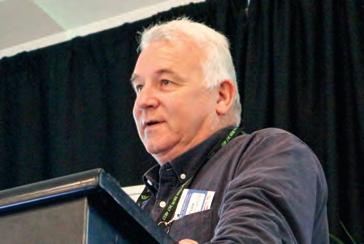
“OE manufacturers are going to focus on the needs of the biggest markets, so there will be an ongoing need to convert and adapt vehicles for our market and regulations.
“But conversions create issues that affect compliance, and the people who wrote the land transport rules in the late 1990s and early 2000s never really envisaged modifications like swapping out an engine for electric drive,” he said.
Latto commented that New Zealand rules and definitions needed to be updated to allow for emerging technology, citing powered trailer axles as an example.

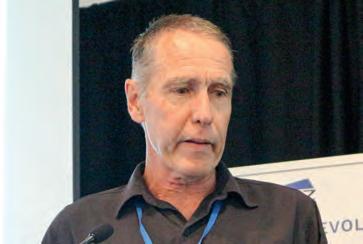
“Even in the EU – one of the most bureaucratic parts of the world – they’re updating their definitions of a trailer. In New Zealand, we’re not doing anything significant when it comes to rule reviews.
“From my perspective, the promise of
Richard Lee.
Glen McGarry.
New Zealand Trucking Februar y 2023 113
Doug Latto.
the land-transport rule review has not delivered or been updated as required. That makes it harder for heavy-vehicle certifiers to sign off something and makes it harder for the people that review us because they don’t know what to measure us against. And the rules are not being aligned to international regulations. We really have to get on the front foot of that whole process.”
Operator experience
Chris Carr, director of Carr & Haslam, and Alex Thompson, general manager, vehicle logistics, discussed the company’s introduction of an eCanter to its fleet last year.
“We’re the first privately owned company to own an eCanter; the others have been large corporates that put other people’s money into those projects. We spent our own. A diesel Canter is about $80,000; the eCanter ends up at about $280,000. It’s not possible to break into these new technologies without the support of the likes of EECA, as they have done for a lot of the early adopters,” Carr said.
“The cost in these early stages is really high. We’re truckies [Carr & Haslam team], but we know this is the right thing to do. We have a lot of passionate people keen to make this EV work. EVs are not the same.”
From an operational perspective, Thompson said that at first, the company’s drivers didn’t show interest in operating the eCanter. But within six months or so, more were asking for a go.
“The eCanter’s range is quoted at 120km, which is spot on for our application in metro Auckland,” Thompson said. “Our ops guys had to understand it wasn’t the traditional way we normally run a truck. It was imperative to get everyone’s head around it.
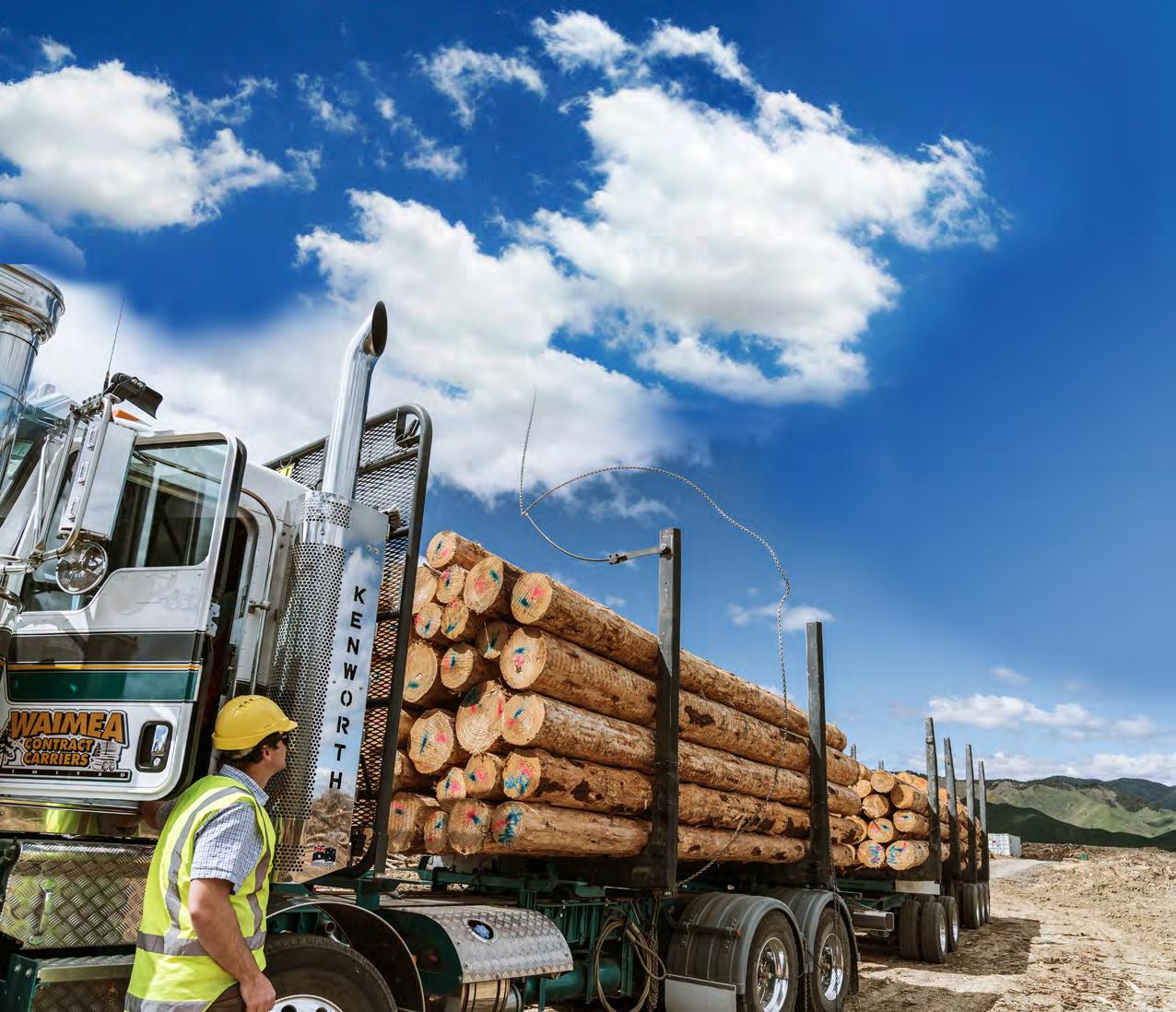
“The truck’s two drivers have two different preferences for charging – one tops up every time he offloads and
reloads and the other charges during his half-hour break. Both approaches work.
“Ideally, we want EV trucks that have bigger range and heavier capacity. We’re looking forward to the next step. But the best thing other operators can do now is start reaching out to their suppliers.”
Fabian Lloyd, decarbonisation manager for national transport at Fonterra, explained that light vehicles, medium and heavy trucks, and farm vehicles and others such as forklifts made up the three focus areas for fleet decarbonisation at the co-op. “We have a 2030 target of 30% reduction in our scope 1 and 2 emissions, and long-term to have netzero emissions by 2050.”
He said Fonterra’s milk-tanker fleet of 504 truck-and-trailer units travelled 95,000,000km a year, and at the peak, a tanker would collect from a farm every nine seconds and deliver to a manufacturing plant every 24 seconds.
“Emissions from the 47 million litres of diesel we burn a year equates to 126,000 tonnes of CO2 per annum,” he added.
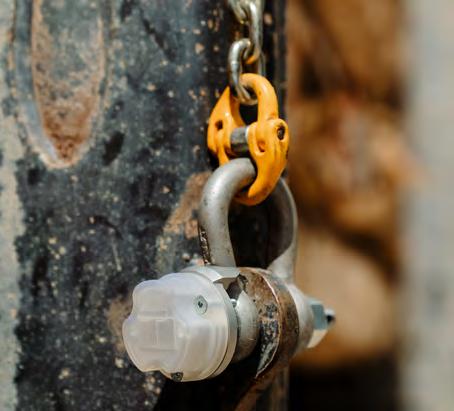
Lloyd said Fonterra had three focus areas to reduce emissions. The first was reducing fuel burn by driving the truck as well as possible and investing in driver training and telematics. “We’ve seen a 3.5% fuel reduction since 2018 and aim for 2% year on year going forward. It’s audacious, but we’re confident.”

The second was reducing vehicle kilometres travelled per litre of milk collected. “This includes increasing operational efficiency and making use of low-carbon modes where possible and best use of our route planning systems.”
Finally, by displacing diesel, “either using a low- or zero-carbon fuel or switching to an EV or hydrogen. We’re technology agnostic and are aware we need to move swiftly in the medium term.”
He said the co-op’s first electric truck, ‘Milk-E’ had performed well but had had
hold-ups from the communication with the milk collection system.
“The idea is to get as many of these types of vehicles and technologies as we can when we can get hold of them.”
Gareth Wishart, group general manager innovation (H2 Hybrid), HWR Group, updated the delegates on HWR’s hydrogen project.
“We feel we have a unique situation in our group to do something with hydrogen,” he began. “The concept is to develop hydrogen fuelling infrastructure – you can’t just buy hydrogen in New Zealand at the moment – and take it upon ourselves to generate the consumption. We’ve committed $15 million to exploring New Zealand-owned and produced hydrogen and trialling diesel/hydrogen dual-fuel technology.”
Wishart said the first station, in Gore, would be active in April 2023, with 10 dual-fuel trucks based there. “The site can create 400kg of hydrogen a day, which appears to be enough to run 27 dual-fuel trucks. Our systems can communicate with the station to prepare hydrogen for a truck at the most costeffective time of day, and refuelling will become a scheduled task.”
Wishart said the hydrogen would be accessible to other companies wanting to access hydrogen to reach their own sustainability goals.
The dual-fuel truck simply retrofits hydrogen injection to the intake, leaving the diesel and DEF system to operate as normal. The trucks run 40% hydrogen, 60% diesel.
“One dual-fuel truck averaging 348km a day can eliminate 200kg of carbon emissions a day. Complete fleet transition would eliminate millions of kilogrammes of emissions. It’s a means to an end, a transitionary piece to ramp up to zeroemissions practically and relatively cheaply with trucks we already have.”
From left: Fabian Lloyd, Chris Carr, Alex Thompson and Gareth Wishart.
114 New Zealand Trucking February 2023

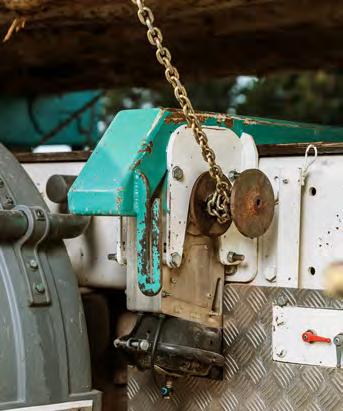

Products: • Log truck and trailer builds • Chain throwing technology • Automatic chain tensioners • Load monitoring system Phil Kirk Transport Development & Certification phil@waimeaeng.nz +64 27 479 3972 Jared Silvester Mechanical Design Engineer jared@waimeaeng.nz +64 27 507 5655 03 544 9266 | www.waimeaeng.nz YOUR TRUSTED PARTER IN HEAVY TRANSPORT DESIGN AND MANUFACTURE Waimea Engineering are your leading manufacturer of log haulage vehicles and safety equipment in the South Island. We have developed world leading technologies to ensure your drivers experience a safer and less stressful workplace. Securing your cargo and providing peace of mind throughout your journey
GAZING INTO THE CRYSTAL BALL FOR 2023
Whether you have a political leaning or not, it’s hard to deny the year ahead will be immensely significant politically. Towards the end of the year, we’ll see an election I suspect has the potential to be the most ideologically driven election we’ve seen in recent times – such are the spectrum of issues and challenges on a local and global stage and the public sentiment attached to the various portfolios.
You can start with the ongoing inflation and cost-of-living dialogue flowing across the country and generating media hype. Again, putting political persuasions aside, it’s hard for anyone to argue that we’re seeing an increasing portion of the population facing poverty, housing and general wellbeing issues – something none of us feels happy about nor is prepared to accept.
Sadly, however, the past couple of political terms have further highlighted that for all the best policies and intentions in the world, if the execution isn’t there, the dial simply won’t move on such issues, no matter how critical and pressing they may be.

Sustainability and environmental focus are also sure to feature from all parties since, like it or not, we must collectively set a course for where we’re heading with this carbon-reduced future. A significant question remains for the country to ask itself and be honest about the answer: Can we afford to lead the world in some of these elements, and if so, are we truly prepared to accept the potential short- and medium-term economic consequences thereof? The foundations of our global trade have been formed on the shoulders of our primary industries (meat, dairy, forestry); one surmises the impact of the decisions we make come election day may likely have the greatest
impact on those sectors than any election has ever had.
Throwing on my road transport industry hat, I see a critical need for us to take a clear stand on our expectations in several key areas, highlighting (but not limited to) the following:
•Long-term infrastructure (not just roading) planning and execution – where are we going?
• Clarity of spending – where is ‘our’ money going, and how does it align with the above?
• Greater integration of transport modes done in a collaborative (local and central government, and mode type) manner with tangible and, more importantly, measurable long-term benefits, not just ideological box-ticking projects.
I remain of the view that we’re still to develop a true bottom line as to the expectation our industry holds the government accountable for, and I would ask each of you to seriously consider what we need to see from a potential government to win us over – and are prepared to hold them to.
It’s easy pickings here, and the state of our roads is an easy target. I particularly enjoyed the recent blog post by Nick
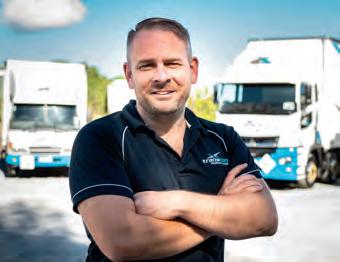
Leggett on the broader topic of roading and Waka Kotahi’s potential abdication of responsibility in the Road to Zero campaign that brilliantly sums up the current lie of the land. I’m personally looking forward to seeing what our respective industry bodies piece together in the way of election forums for us to have our potential representatives ‘show us their wares’. It should make for an enlightening showcase and is something we need to ensure we vocally (and respectfully) support.
Parking the political bus, we head for another joyous topic that every media outlet seems determined to predetermine the arrival of – a potential recession. For my sanity, I’ve barred myself from taking too much notice of local media on this front and maintain that the outcome of any significant economic event will be whatever we believe the outcome is going to be – positive or negative. Fresh from a ‘Covid-19 bootcamp’ for our businesses across the past three years, one gets the sense the pandemic might’ve been just the warm-up needed to hone our agility, efficiency and resolve to fend off whatever might get through in our direction.
As with every year since the wheels began turning and Archimedes and his pals kicked off their mule-powered road transport operations, I have a strong sense that it’ll be another ‘R’ word that our industry once more brings to the fore, though: resilience. Best of luck making 2023 yours!
CARRIERS’ CORNER
‘Significant’ is a word I think will feature regularly as we look across the coming year and review the shorter- and longer-term decisions made for the country’s health, wealth and prosperity.
Do you agree with Blake or want to engage with his comment? He’d love to hear from you. Contact Blake at: blake@transcon.co.nz.
TRANSPORT, 116 New Zealand Trucking February 2023
Blake Noble is managing director of Transcon, a 16-truck general-freight operation based in Warkworth, north of Auckland. He is also the founder of specialist transport growth and advisory provider Delivery. Head to getdelivery.nz to connect with Blake.



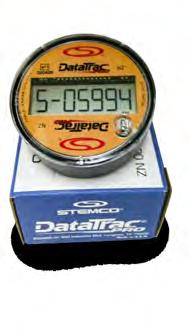

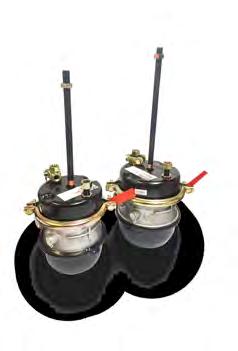

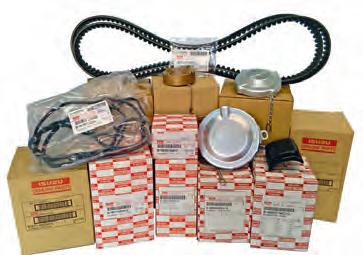
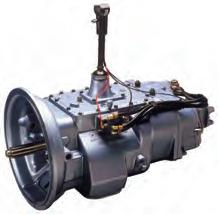
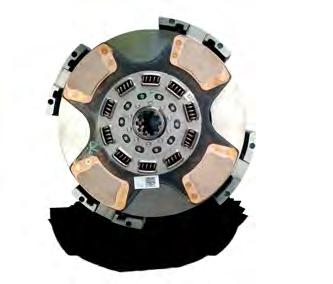



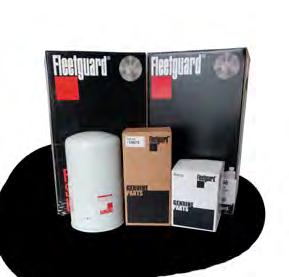











Ph: 0800 501 133 Specials valid while stocks last. TRANSPORT, DIESEL & MARINE TRANSPORT, DIESEL & MARINE TRANSPORT, DIESEL & MARINE THE RIGHT PARTS…THE RIGHT PRICES…RIGHT HERE! CHECK OUT OUR WEBSITE WWW.TDM.CO.NZ 8 Prescott Street, Penrose, Auckland Email: ray@tdm.co.nz | john@tdm.co.nz 166-0922 CAN’T FIND THE PARTS YOU NEED? LET US FIND THEM FOR YOU EATON 9 SPEED RECONDITIONED EXCHANGE TRANSMISSIONS + GENUINE PARTS HUBO’S FIVE YEAR/ 500,000KM WARRANTY SPRING BRAKE CHAMBERS 2424 / 2430 /3030 POA CONTACT US TODAY FOR ALL ENQUIRIES GENUINE PARTS GENUINE PARTS TRANSPORT, DIESEL & MARINE RECONDITIONED EXCHANGE TRANSMISSIONS + GENUINE PARTS TRANSPORT, DIESEL & MARINE POA CLUTCHES HI & LOW BASE NATIONAL SEATS POA FLEETGUARD FILTERS
STROKE AND DRIVING: WHAT
THE RISKS LOOK LIKE, AND HOW TO PREVENT THEM
Each year, about 9000 people in New Zealand have a stroke. We speak to Dr Karim Mahawish, a stroke specialist at Auckland’s Middlemore Hospital, about what a stroke looks like, what you can do to prevent them, and the risks facing the transport sector.

What is a stroke, and do we know what causes it?
Dr Mahawish: Stroke refers to a sudden interruption of the blood supply to your brain, which can cause permanent damage.
The most common causes are high blood pressure and diabetes. The problem with these conditions is that they may not cause much in the way of symptoms until it’s too late, and then the person suffers a stroke or heart attack. Other causes include an irregular heartbeat, called atrial fibrillation, which tends to cause
more severe strokes. Finally, alcohol consumption, smoking and a sedentary lifestyle are also associated with stroke.
Purely genetic causes of stroke are rare. Many of the strokes we see in long-haul drivers can be prevented.
What is a ‘warning stroke’?
Dr Mahawish: Some people can experience a mini-stroke, more accurately called a transient ischaemic attack. These are symptoms that last less than an hour. They are also
How stroke may affect your ability to drive
In 60 minutes of driving, you make 70,000 decisions. According to the Stroke Foundation of New Zealand, your ability to make these decisions and drive safely after a stroke can be affected in various ways. You may have physical or visual problems or difficulty concentrating for long periods or making quick decisions.
Each person is affected by a stroke differently. Some can return to driving a class 1 or 6 vehicle after a month, while others will take much longer. For vocational driving, such as licences for heavy vehicles or to carry passengers, the stand-down period after a mini-stroke is six months. However, people who have had a stroke are generally not granted licences for vocational driving. In some cases, a return to driving may be considered if there has been a complete recovery and the person has remained free of transient ischaemic attacks or strokes for three years.
considered emergencies as they are a warning that a full stroke can happen within days.
Is any age group more at risk of stroke than any other?
Dr Mahawish: While strokes become more common as people get older, people of all ages can be affected –even children.
What are some of the misconceptions about stroke?
Dr Mahawish: Stroke symptoms are sudden but are not generally as dramatic as other emergency conditions, such as the chest pain people experience with heart attacks. The most common symptoms are sudden onset weakness, numbness or partially losing vision. Often people with, say, a weak arm, for example, will think they ‘slept funny’, or people experiencing visual loss will arrange to see an optician. This is a major problem, as urgent hospital treatment gives people the best chance of recovering fully. About 2,000,000 brain cells are lost every minute during a stroke – there is no time to waste!
TRUCKERS’ HEALTH
118 New Zealand Trucking February 2023
Dr. Karim Mahawish.
How can someone tell if they have had a stroke, and what can people do to help?
Dr Mahawish: People can experience a wide range of symptoms from a stroke – anything your brain does can be affected. The face-arm-speech test (FAST) is a reliable way of detecting a stroke. If someone is FAST-positive, emergency treatment is crucial. If you, or you suspect someone else, is having a stroke, it is important to seek help urgently.
We are lucky to live in a country that has contributed to world-class research into strokes. We have good access to effective treatments via close working between paramedic crews, hospital staff and aeromedical services. Depending on the type of
stroke, treatment options include clotbusting medication given by drip or specialised procedures to unblock blood vessels in the brain. The services are there – we need people to get to the hospital early enough to give the treatments a chance to work.
Are long-haul drivers any more likely to suffer a stroke than other people?
Dr Mahawish: Long-haul drivers shouldn’t be at any additional risk, provided they keep a regular check on what’s referred to as vascular risk factors, i.e. making sure they keep on top of their blood pressure and diabetes (for instance, by taking their medication regularly and having checks), maintain a healthy diet and exercise regularly.
Most of the strokes we see in long-haul drivers are preventable – it is devastating for long-haul drivers to be told they can no longer hold a commercial licence because of a stroke. This decision can be reviewed after a minimum of three years.

What can truckers and transport operators do to reduce their risk?
Dr Mahawish: Maintain a healthy lifestyle with regular exercise and a good diet, keep a healthy weight, don’t smoke, limit alcohol consumption, and get blood pressure checked regularly. If they have high blood pressure or diabetes, they must be very strict about taking their medication regularly and having check-ups.

NZ of NEW ZEALAND TRANSPORT JOBS the specialist in the trucking, logistics and transport industry. Due to the success of NZTJ, we are now extending our service to help you find the right candidate for all management positions in the transport industry. You concentrate on your business. We will concentrate on finding you the right person to fit well into your team. WE CAN HELP WITH ALL TRANSPORT RECRUITMENT In
with NO UPFRONT COSTS, HASSLE FREE Email Chris now chris@nztransportjobs.co.nz or call Chris on 027 573 2005 to resolve your staffing needs Are you a contractor with a small fleet who doesn’t have time to recruit drivers? Speak to us. We market roles to 1000s of drivers and filter through the drivers who meet your requirements. It’s hassle free and saves you time and money. Join some of New Zealand’s leading transport companies who hire through us time and again. CALL ME SO WE CAN DISCUSS MORE! Chris Yates 027 573 2005 • Manager | NZ Transport Jobs www.nztransportjobs.co.nz • FACEBOOK @NZTransportjobs.co.nz In
NZ largest resource of truck drivers
association
association with
SUMMER WORK
Summer is the favourite season for many of us. We love the long days, the hot weather and the chance to be outside. Whether we are socialising or working in the garden, summer is fun. Hopefully, after a wet winter and the omnipresent Covid-19 threat, we will have a summer to enjoy.
Although we hope for hotter weather, this may contribute towards workers becoming tired and distracted by the middle of the day, potentially leading to health and safety issues.
As an employer, I ensure my workers have a reasonable break over Christmas. We take three weeks off. And there are a lot of long weekends at the beginning of the year. I expect my workers to come back refreshed, enthusiastic and ready to work. They do, but they also come back thinking about the time spent at the beach, the parties or family gatherings and wishing it had lasted a bit longer. Sometimes they are focused on the next long weekend and getting back to the beach.
As PCBUs, we must take reasonably practicable steps to protect our workers from harm. That includes their mental and physical state. We often ignore workers’ mental states, but a distracted worker is a dangerous worker. Spend a bit of time with your staff to make sure their minds are on the job. Go over your instructions with them and ask them to describe the

processes they will be taking. If this is a new task, or one they have not had much experience with, consider refresher training.
The physical state of a worker is much easier to manage. Make sure they are protected from the weather. This includes sunscreen and sun hats, but also that they are hydrated. Make cold water available to them. Consider planning work so that they are not outside or making complex decisions in the hottest part of the day.
Distraction and fatigue are two leading causes of accidents. A little consideration of a worker’s needs goes a long way towards preventing accidents. It will also ensure a worker who is happy to be back.
How can Safewise help?

We work with organisations that need more health and safety knowledge or more time to address these issues than they have in-house. We also have free Covid-19 resources available. For more information, check the website, safewise.co.nz
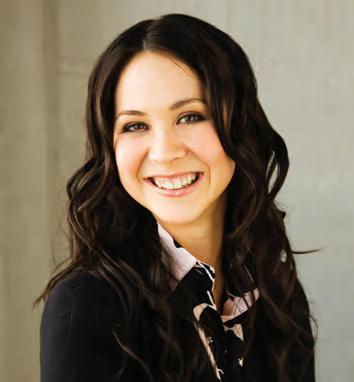
Tracey Murphy is the owner and director of Safewise Ltd, a health and safety consultancy. She has more than 12 years’ experience working with organisations from many different industries. Tracey holds a diploma in health and safety management and a graduate diploma in occupational safety and health. She is a professional member of the New Zealand Institute of Safety Management and is on the HASANZ register.
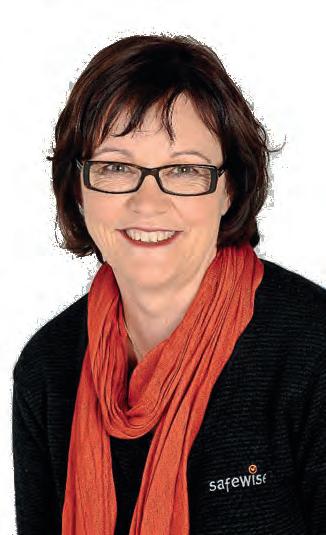
Danielle L. Beston Barrister At Law Road User Charges Work Licences Transport Specialist Nationwide Log Book & Driving Hours Contributor to New Zealand Trucking ‘LegalLines’ Column Referral Through Solicitor Required and Arranged 23031 DANI1 TRUCKING AD.pdf 27/5/10 3:12:58 PM Telephone: (09) 985 5609 mobile: 021 326 642
danielle.beston@trafficlawyerauckland.co.nz
HEALTH AND SAFETY
120 New Zealand Trucking February 2023
This new kid has been around the block
MTD Trucks, Hino Distributors and UD Truck Distributors have joined forces to create Used Trucks NZcombining years of experience to bring you a complete, nationwide used truck and trailer offering.
The reach and expertise of our sales team delivers high quality, mechanically sound, second tier units across New Zealand, and we’ve got the scale and scope to quickly connect buyers and sellers.
Whether you’re looking to buy or sell - or you want us to look for something you can’t find - our experienced, nationwide team is here to help.

Check out our new web site usedtrucks.nz


0800 683 683
POLICE POWERS TO TARGET FLEEING DRIVERS
The proposed changes are as follows:
1. Increasing the maximum disqualification period for a second offence of failing to stop or remaining stopped from 12 months to between 12 and 24 months.
The current police-fleeing driver policy prioritises safety over the immediate apprehension of a fleeing driver. Therefore, the police need to ensure that their response to drivers who choose to flee is appropriate and proportionate to the level of risk they pose and is as safe as possible.
However, the current police pursuit policy, released in December 2020, is now under review due to the dramatic increase in fleeing drivers. There is concern that the policy has wrongly given the impression that police cannot pursue fleeing drivers in any circumstances, which appears to have led to a change in offenders’ behaviour. The revised framework will aim to provide clarity for officers as to when a pursuit may be justified and result in more instances where police would be able to pursue offenders.
The statistics
Between 2010 and 2020, 75 people died in police chases and two in incidents when the police did not pursue them. In December 2020, after a major review, staff were told a pursuit was only justified when the threat posed by the vehicle before failing to stop, and the necessity to apprehend the driver and/or passengers immediately, outweighed the risk of harm created by the pursuit.
In the nearly two years since then, there have been no deaths during pursuits, while four people died in incidents after fleeing from police.
Meanwhile, over the same period, incidents of drivers fleeing increased to 9499 in the 12 months ending November 2022, from 4846 in the 12 months prior. The number of incidents where the
offender was not immediately identified nearly tripled, from 2419 to 6412, while those being held accountable remained relatively steady, moving from 3374 to 3484.
These statistics suggest that there needs to be a balance between preserving public safety and ensuring the police can apprehend people who are breaking the law.
2. Amending the Sentencing Act 2002 so that a vehicle can be forfeited on conviction for failing to stop and permanently removed from an offender without them receiving any proceeds from the vehicle’s sale.
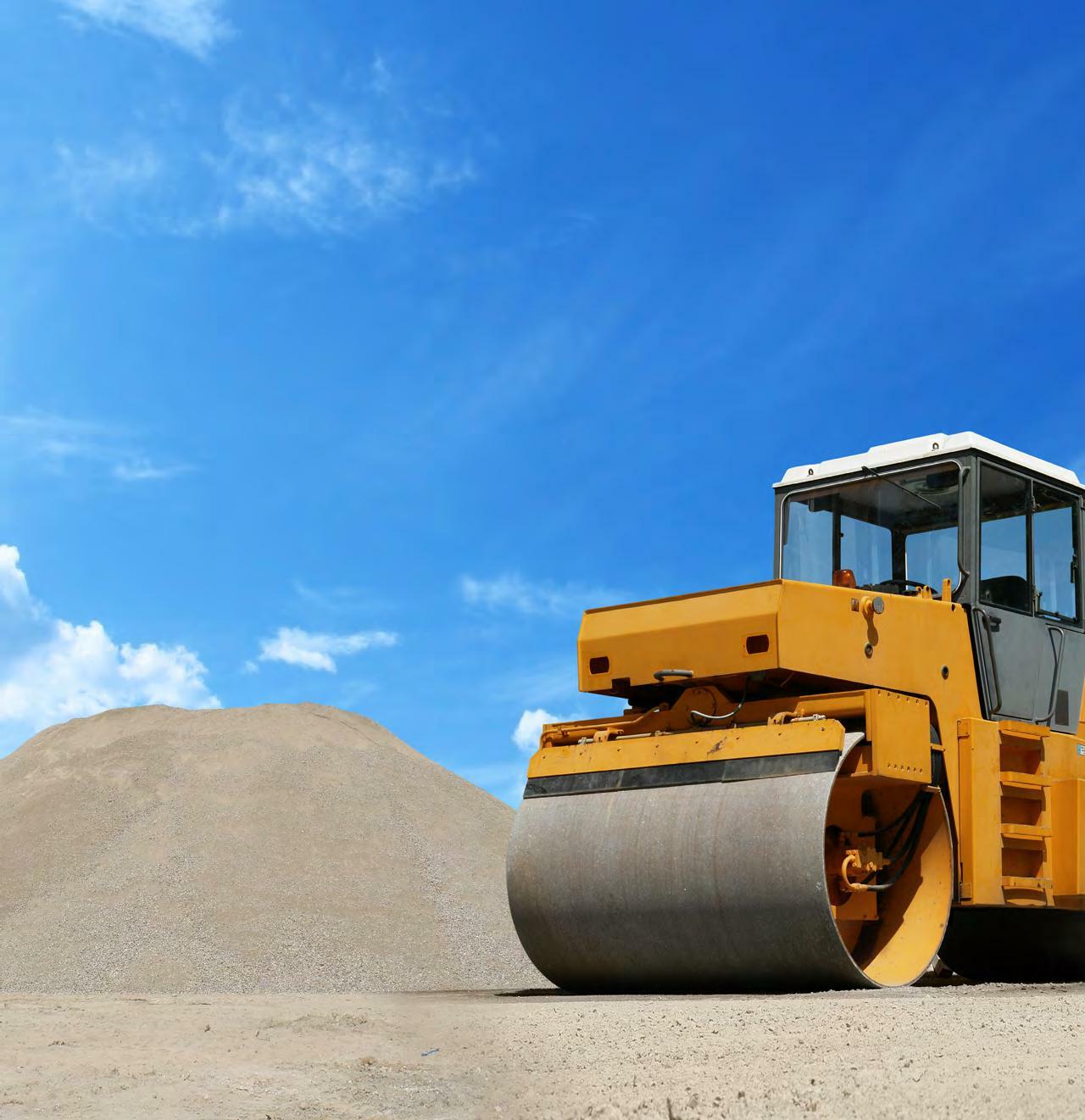
3. Allowing the police to impound a vehicle for 28 days if the owner fails, refuses, or provides false or misleading information about the driver’s identity from a fleeing-driver event. There is a safeguard to return a vehicle if the owner proves it had been stolen at the time it was impounded.
Will these changes stop fleeing drivers?
Legislative changes
In addition to reviewing the police pursuit policy, the government has announced that the police will be given greater enforcement power when dealing with fleeing drivers. These changes build on the Criminal Activity Intervention Legislation Bill, which is before the Select Committee. It is hoped that the harsher punishments proposed will deter drivers from fleeing as this sort of behaviour can put others’ lives at risk and lead to death and injury on our roads.
It is hoped that these harsher penalties will influence an offender not to commit the crime because they’re more likely to get caught and lose their vehicle. While the balance may not be quite right now, it is hard to ignore the fact that has been no deaths since the December 2020 policy was implemented. Going back to a situation where people are dying because of fleeing-driver incidents is clearly undesirable, so it cannot be said that the current policy is a failure.
Children’s commissioner Judge Frances Eivers believes that the benefit of pursuits “are far outweighed by the risk to innocent bystanders, other road users, police personnel involved as well as the drivers themselves”, and I tend to agree.
Please note that this article is not a substitute for legal advice, and if you have a particular matter to be addressed, you should consult with a lawyer. Danielle Beston is a barrister who specialises in transport law, and she can be contacted on (09) 985 5609 or 021 326 642.

When a driver decides to flee a scene, it can have significant consequences for them, their family and friends, the public and the police. More enforcement power against fleeing drivers is on the cards for the police.
LEGAL LINES
122 New Zealand Trucking February 2023
It is hoped that these harsher penalties will influence an offender not to commit the crime because they’re more likely to get caught and lose their vehicle.



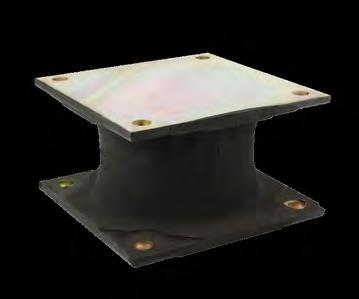
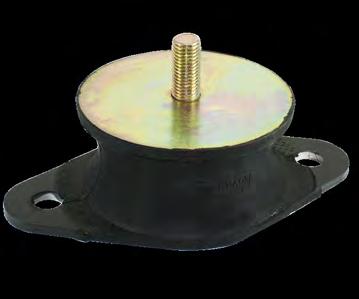
• BITELLI • BOMAG • DYNAPAC • HAMM • SAKAI • IR • KOMATSU • PNUEVIBE • VIBROMAX
CASHFLOW FORECASTING

Creating a cashflow forecast at the beginning of the year is the best way to remain on track with your targets for the year.
Anew year is a clean slate to start making those business changes that we may have thought about for a long time but have yet to get to. The key here is to not commit to too much – and what you do commit to, communicate it to others to make yourself accountable.
In business, February to March is the time to get your forecasting done (with a March balance date). So what is forecasting, and why should you do it? Forecasting, or a projection, is the processing of budgeting income and expenses, capital expenditure – and therefore cashflow – for a period. The forecast will aid in planning and decisionmaking for the coming year.
The key benefits of an annual cashflow forecast are:
• It gives you an understanding of your cashflow for better decision-making
• Enables you to predict and plan for large cash outflows
• Identifies key drivers of cashflow in your business

• Allows you to monitor your actual cashflow against forecast in your accounting software

• Provides peace of mind that your cashflow needs are known and properly funded
• Improves communication and relationships with your financiers and suppliers
If you haven’t done a forecast before, I highly recommend speaking with your
accountant. If you know how much money will be coming out of your business, and when, you can confidently plan and execute desired growth and improvement strategies to achieve positive changes.
Working with your accountant is the best way to prepare a forecast accurately. They will likely draft up a forecast based on previous years’ data and then meet with you to discuss forward-thinking changes to input into the forecast. You then have a budgeted P&L, balance sheet and cashflow.

Reporting your forecast against actual performance throughout the year is a great motivator and ensures that you remain on track. If you find you aren’t on track, you can act a lot quicker than if you wait until the end of the financial year to make changes needed as a result of unplanned performance.
Good luck for the coming year and exceeding your forecast expectations.
Email: roylancew@vazeychild.co.nz
Phone: (07) 838 5988
Website: vazeychild.co.nz
BUSINESS, TOGETHER
Roylance Watson is a chartered accountant and associate at Vazey Child Chartered Accountants in Hamilton.
124 New Zealand Trucking February 2023
Reporting your forecast against actual performance throughout the year is a great motivator and ensures that you remain on track.
VARTA ProMotive AGM is designed to optimally support drivers and their trucks during their time on the road. Since the demand for nonstop transportation services requires trucks to be on the road every day, drivers spend more time in the cabin than ever before. The Varta A1 AGM truck battery leads with high vibration resistance, excellent charge acceptance, extended cycle life and increased depth of charge, allowing fleets to equip drivers’ cabins with hoteling functions without draining the battery, avoid downtime and maximise productivity.
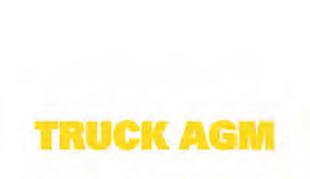


It all starts with Visit



our portal to find your local supplier. www.varta-automotive.com/en-nz
Proudly Distributed
HCB TECHNOLOGIES New Zealand's
Specialists
By
Battery
NZ Trucking Association can be contacted on 0800 338 338 or info@nztruckingassn.co.nz

HARMFREE TRANSPORT LAUNCHING THIS YEAR!
The transport sector needs help to mitigate the risks of psychosocial harm in the workplace. Transport workers are subject to long periods of isolation, high-pressure working conditions, circadian disruption and sleep deprivation, causing stress, anxiety, depression and fatigue.
Furthermore, leaders within transport companies find it difficult to obtain the right tools, resources and systems required to address these issues to improve their staff’s wellbeing in the workplace.
Late last year, the ACC Injury Prevention Grant became available. After forming a collaborative group with other grant applicants, we successfully secured funding to develop the HARMfree Transport programme.
Involved in the collaborative group are:
• NTA and NRC, who together have the largest representation of transport company members, contacts and clients throughout the New Zealand transport industry.
• Kelly McLuckie from Success Formula, has more than 20 years’ experience within transport, logistics and construction. Kelly brings extensive experience in strategy and solution architecture, project management, culture change, leadership and organisational growth, business and information management, and team development. She is backed by qualifications in HR and change management.
• Rachel Lehen, managing director of Fit For Duty, has more than 13 years specialising in occupational sleep and fatigue management. Rachel has regularly led fatigue management masterclasses and has presented at several industry conferences speaking about fatigue management. She is skilled in helping businesses identify, understand and manage workplace fatigue.
• Charles Dawson, CEO of AutoSense, has vast experience working with large and small commercial businesses,
including driver training. Charles is passionate about assisting organisations and individuals in developing strategies that promote strong governance, planning, and personal development.

A wider project steering group has been formed, consisting of industry experts, health and safety managers and transport company representatives, ensuring we have the right people to help with the design and development of the programme.
This project collaboration is an incredible combination of experienced industry experts, health and safety professionals and key transport company representatives. They will help qualify content before integration, so you can trust the materials to use in your company.
We identified early on that this project must be cognisant of the needs of Maori, Pacifika and other ethnic groups to ensure their voices are heard in the design and implementation of the HARMfree Transport interventions. These workers make up a disproportionately high number of injuries. Our combined networks will provide an extensive reach into transportsector diversity. A multilingual approach will maximise reach and effectiveness.
Our collective goals are to provide transport companies with an opportunity to bring about behavioural change in the workplace and reduce and hopefully eliminate psychosocial harm. Expected outcomes for members will include increased use of best-practice guidelines, greater engagement across all staff on the development of GWD (good work design) and an enhanced understanding of dynamic risk with a significant reduction of harm and injuries in the workplace. Helping New Zealand’s transport companies create safer workplaces and share best practices will have many positive flow-on effects, including safer drivers and vehicles on our roads.
The focus will be on reaching and engaging with an organisation’s health
 John Sansom HARMfree Transport programme manager
John Sansom HARMfree Transport programme manager
and safety champion. We realise that not every company has the resources to employ a dedicated health and safety person. That person might be an ownerdriver or someone in the company wearing many different hats. Too often, companies communicate their own interpretations regarding health and safety in the workplace. That’s why it’s important to have a place to go for up-to-date transport-sector training tools and links to professional expert advice.
The HARMfree Transport online portal will consist of existing industry resources, tools, information, relevant industry news, training materials and qualifications, which will be tailored to the needs of the transport industry in a language that is understood. Most importantly, the programme will be designed to connect transport-company health and safety champions through an online forum to share knowledge and learn from each other. The forum will provide an environment that encourages health and safety and HR experts to reach out for support from their counterparts across the transport industry.
NTA’s Road Safety Truck and the AutoSense Eyes Up NZ programme will also integrate with HARMfree Transport.
For more information on becoming a member or expressions of interest in becoming a HARMfree Transport supplier, please contact info@harmfree.nz or call 0800 338 338.


126 New Zealand Trucking February 2023
From left: John Sansom, NTA/HARMfree Transport; Cheryl Newcombe, ACC; Dave Boyce, NTA; Carol McGeady, NTA; Arthur Shaw, ACC; Kelly McLuckie, Success Formula.
Got your ears on?
DOWNLOAD NOW!!


NZ’s first transport-dedicated radio with music, roading information transport news, interviews and more.

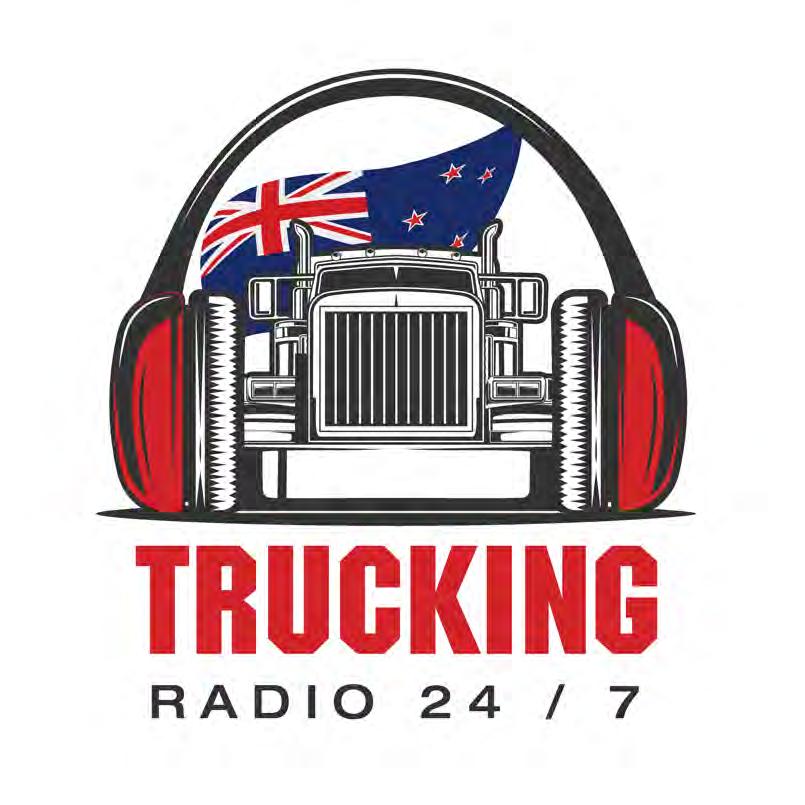

With you on the road 24/7

LIVE NOW!!
Transporting New Zealand can be contacted on (04) 472 3877 or info@transporting.nz
 Nick Leggett chief executive officer
Nick Leggett chief executive officer

END OF RUC DISCOUNT TO HIT NEW ZEALANDERS HARD
The Minister of Finance’s decision to end the transport support package early next year, and with it the roaduser charge (RUC) discount, will result in more pain being felt across the economy.
Before Christmas, it was announced that RUC discounts would end as planned on 31 January. The petrol excise cut will continue until the end of March but will be halved from the end of February. Half-price public transport will also end on 31 March, although it will still apply to people with community service cards.
Ia Ara Aotearoa Transporting New Zealand strongly advocated for a continuation of the transport support package to help families and businesses through what threatens to be a very challenging year. We recognise the hole the discounts have left in transport funding and acknowledge that they could not go on forever. However, we thought it pragmatic to extend the entire package until inflation dropped below 6%.

The two-headed hydra of high inflation and rising interest rates are putting a significant strain on businesses and families. With unemployment expected to begin rising during the second half of 2023, things could get tough for a lot of people.
While removing the discount on public transport fares and fuel excise will have an impact, removing the RUC discount is likely to have a considerable effect on households. Almost every item that finds its way into the pantries, cupboards and fridges of New Zealand has, at some stage in its journey, travelled on the back of a vehicle subject to RUC. With road transport businesses operating on extremely tight margins, particularly post-Covid, every additional input cost must be passed
on. Removing the discount will therefore impose increased costs on almost everything New Zealanders consume. Now, I don’t want to be unfair to the government because it did initiate the discounts in the first place and, convinced of the part it was playing in curbing inflation, extended them a couple of times in 2022. However, with the worst effects of the cost-of-living crisis still ahead of us, I’d argue that early 2023 is not the time to remove the discount.
Industry welcomes policy change to help bring in migrant drivers
Transporting New Zealand and other transport sector representatives will be sitting down with MBIE officials in the coming months to thrash out an agreement to provide a residency pathway for migrant truck and bus drivers. Long called for, this policy change by the government should help relieve some of the workforce problems currently experienced by transport companies.
Many transport companies currently have trucks parked up because they can’t find drivers. This situation puts significant stress on a business, is hard on the drivers asked to pick up the slack, and in a macro sense, is a drag on economic productivity and a key contributor to inflation. It has also been well-publicised how much the bus and coach industry has struggled to find drivers, with commuter routes in our major centres cancelled due to the ongoing shortage.
We are glad the government listened to our advocacy on this issue – we have made a real effort to keep Transport and Immigration Minister Michael Wood updated on the extent of the driver-shortage problems in the industry throughout the Covid-19

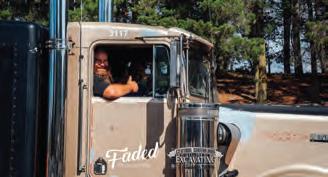
and post-Covid-19 periods. But while the temporary residency pathway will help, there is still a lot of work the industry needs to do to grow our own sustainable workforce, which is why Transporting New Zealand continues to push the Road to success traineeship to attract new people into our industry.
Ports of Auckland debate going nowhere
Everyone is utterly sick of the ongoing debate about whether to move the Ports of Auckland from its location in Auckland’s CBD. The matter has come up again due to the new mayor of Auckland, Wayne Brown, campaigning to relocate the port. Mainfreight managing director Don Braid stated in the media before Christmas that the issue was “becoming boring” and was “full of posturing and never-ending debate”. I completely agree with him. Despite several worthy studies into the issue, we are no closer to a resolution now than we were a decade ago, and I’d be surprised if even another decade moves the needle much. The reason is that shifting the port is an incredibly complex proposition that will have numerous consequences across the supply chain. None of this, or even the current location’s advantages and disadvantages, are fully understood, and that’s to say nothing about the suitability of any new site either in Northland or the Firth of Thames.
The freight industry is simply focused on getting on with the job during challenging times. Moving the port may or may not happen one day but for the foreseeable future, the focus remains on servicing the current location as efficiently and safely as possible.
128 New Zealand Trucking February 2023








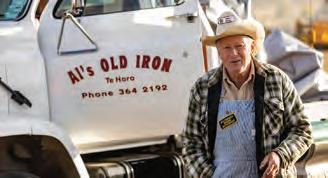


Proud Platinum Media Partners of the Southpac Truck ShowWheels at Wanaka 2023 DISTRIBUTORS OF
weekend
the
Truck
EARTHMOVING PRACTICE DAY: Friday 7 April MAIN SHOW: Saturday 8 & Sunday 9 April Buy tickets, register your rigs in the Southpac Truck Show and learn more at www.wheelsatwanaka.co.nz
you like something old and you like something new, and if you’ve got diesel in your blood, then it’s so much fun.” Maarten Durent, CEO, Southpac Trucks
The best trucking
of
year...
yeaH!
If
IS IT STILL OK TO DREAM?
For my first story of 2022, I chose the title, The Year that Never Was. If this was so for 2021, then 2022 must surely be its twin. It’s hard to remember a year that had the potential to deliver so much but ended up going the wrong way. We can only hope that, despite the warning signs, 2023 ends better than 2022.
It’s common to look back on predictions made at the beginning of a year to see how one did. This is a waste of time for me – what happened happened, end of story. Without doubt, many things that drew our attention in 2022 will keep on rolling through 2023 and beyond – such as the deplorable state of our roads – while money is still thrown at building cycleways in the forlorn hope they will make a major impact on climate change, and the state of our health and education systems. With an election later in the year, the spin doctors, whom I found out recently should be called linguistical interpreters, will be dominating government communications as we have never seen before. Make sure you have plenty of paracetamol on hand – I am sure it won’t go amiss.
In 2022, we watched events unfolding in Ukraine and were again reminded how impotent the United Nations is in doing what they were originally set up to do – prevent open conflict
between countries. We looked on as more and more of our small businesses went to the wall. We watched as interest rates reached new levels, and we saw our health system collapse before our eyes. We saw the number of people killed on the roads increase to its highest level in four years, despite the high focus and million-dollar-plus spend on the Road to Zero policy. Ironically, it is five years since Julie Anne Genter, as Associate Minister of Transport, introduced the policy. We saw China’s impact on world commodities and trade, which must surely raise the question of where the world’s economic power really lies.
On the positive side, commuters in Wellington were given a ‘Christmas bonus’ – at least, this is what the headline in the Dominion Post said on 21 December. This ‘bonus’ was the opening of the Peka Peka-to-Otaki section of SH1, albeit two years behind schedule and $230 million over budget. One hopes that we will not read soon of lane closures for repairs as happened on Transmission Gully.

In the weeks to come, no doubt there will be many groups and individuals, genuine or with self-interest, coming out and saying, ‘The government must do this.’ Usually, this is accompanied by a request (demand) for money. Are these people so naive that they still don’t understand the government has no money? It is our money obtained through government charges. Look out for an increase in many of these this year, and tax on the money borrowed, in which case, it becomes our debt that has to be repaid with interest.
During his inauguration address in January 1961, President John F Kennedy said, “Ask not what your country can do for you – ask what you can do for your country.” Although this was spoken in the context of a different world to the one in which we live now, the intent remains valid. New Zealanders were once looked at as people who just got on and achieved things and succeeded often by using their own initiative, while developing skills and knowledge along the way. Our industry was at the forefront of this – one only has to look at the early innovation in trailer and truck design to suit New Zealand conditions to see this.
Sadly, this trait of just getting on and doing appears to be gone now. Mores the pity, with more people just wanting to whinge and moan and expecting the government to help. Perhaps we should all stop for a moment and think about the phrase Dr Martin Luther King used in his speech at the Lincoln Memorial in Washington on 28 August 1963 – ‘I have a dream’ – and dream of a New Zealand society where we just got on and did things. That is, of course, if we can still dream without government help.
ARE YOUR STAFF SAFE AT WORK? DOES YOUR BUSINESS MEET LEGAL REQUIREMENTS? WOULD YOU LIKE TO SAVE MONEY? Safewise has many services to help with your health and safety needs. Let us help you protect your people, process, property and your profit: 4 Meet your legal compliance requirements. 4 Save money by reducing downtime and damage. 4 Earn discounts on levies from ACC. Visit www.safewise.co.nz to find out more, or call: 0800 SAFEWISE 0800 723 394 THE LAST MILE
The Accidental Trucker
130 New Zealand Trucking February 2023


Tippers Trucks Trailers Water Carts Dump Trucks Tractors Rollers Compactors Graders Excavators Loaders Bulldozers 07 849 3007 etladmin@modtrans.co.nz etlhire.co.nz 6624 Te Rapa Rd, Hamilton EQUIPMENT & TRANSPORT LEASING WE HAVE YOUR SEASON SORTED!
MADE FOR NEW ZEALAND


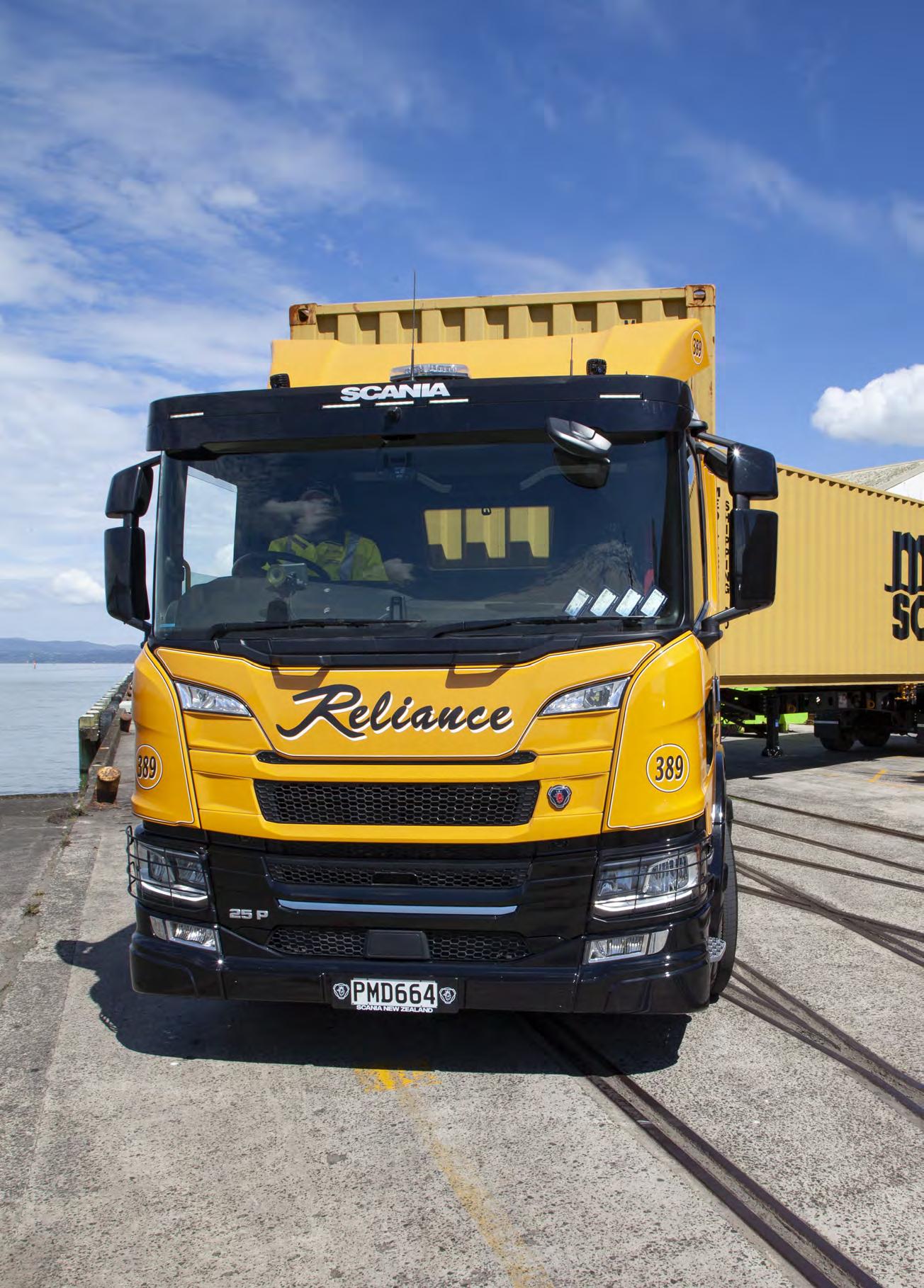
scania.co.nz



 One of Porter Heavy Haulage’s Peterbilts, a 357, on the Taupo bypass.
Photo: Craig McCauley.
One of Porter Heavy Haulage’s Peterbilts, a 357, on the Taupo bypass.
Photo: Craig McCauley.





































































 photos and videos by Gavin Myers, Dave McCoid and Carl Kirkbeck
photos and videos by Gavin Myers, Dave McCoid and Carl Kirkbeck







 Left: CCS type 2 charger currently the standard fare for EVs. Right: 120kW charger adds about 40% battery charge in half an hour.
Electric vans, forkhoists and trucks make up the first three stages of Project Switch.
Left: CCS type 2 charger currently the standard fare for EVs. Right: 120kW charger adds about 40% battery charge in half an hour.
Electric vans, forkhoists and trucks make up the first three stages of Project Switch.











































 Dean Pearson (right) is proud to own this 550hp, 1991 Kenworth T900, still with its original registration plate. Dean purchased it as a restoration project and has converted it to a tractor unit and added a sleeper cab. Bill Brown (left) drove this truck from new for Paeroabased Clarrie Peterson, carting logs.
Dean Pearson (right) is proud to own this 550hp, 1991 Kenworth T900, still with its original registration plate. Dean purchased it as a restoration project and has converted it to a tractor unit and added a sleeper cab. Bill Brown (left) drove this truck from new for Paeroabased Clarrie Peterson, carting logs.






 A great turnout for the first
A great turnout for the first
























 Custom artwork to celebrate JJ’s 50 years in trucking.
Above: The custom interior is “slightly overkill”, JJ admits, but adds a classy finishing touch.
Custom artwork to celebrate JJ’s 50 years in trucking.
Above: The custom interior is “slightly overkill”, JJ admits, but adds a classy finishing touch.











 - Road Transport Microcredential is the connector to industry.
- Road Transport Microcredential is the connector to industry.






 1) A steering wheel from an era before cruise control and cell phones.
1) A steering wheel from an era before cruise control and cell phones.







 Photos and video by Dave McCoid, Matt Smith and Milly McCauley
Photos and video by Dave McCoid, Matt Smith and Milly McCauley

 Left: Big, frugal, and just lovely. Right: A big old tub for your stuff, but a tie rail mounted in the well rather than lashing eyes would be a whole lot better. Note the step in the rear corners of the bumper. They were handy.
Left: Big, frugal, and just lovely. Right: A big old tub for your stuff, but a tie rail mounted in the well rather than lashing eyes would be a whole lot better. Note the step in the rear corners of the bumper. They were handy.























 Story and photos by Gavin Myers
Story and photos by Gavin Myers













 ‘This one’s for you’ – Ballinger Transport’s tribute T909 to Dane Ballinger. Klos Bros T904, with stunning curtain graphics.
Top: Aerodyne Alley! Above left: Bruce Gunter’s faithfully restored 1978 Kenworth K125, new to Max Keough Transport. As a boy, Bruce fell in love with the truck, and its unveiling at the Klassic was made all the more special by Max, now 86, who especially flew out from the United States. Above right: It wouldn’t be the Kenworth Klassic without Rob Woolly’s period 1979 Kenworth.
‘This one’s for you’ – Ballinger Transport’s tribute T909 to Dane Ballinger. Klos Bros T904, with stunning curtain graphics.
Top: Aerodyne Alley! Above left: Bruce Gunter’s faithfully restored 1978 Kenworth K125, new to Max Keough Transport. As a boy, Bruce fell in love with the truck, and its unveiling at the Klassic was made all the more special by Max, now 86, who especially flew out from the United States. Above right: It wouldn’t be the Kenworth Klassic without Rob Woolly’s period 1979 Kenworth.







 T610 SAR and Legend SAR.
Left: Tracy and Scott Martin’s ex-Nev Storey Transport Detroit-powered 1986 SAR, and Nev’s fully restored 1982 KTA-powered example, still sitting on spider rims. Right: The first showing of Mick Kennedy’s 1976 K145CR. One of the legendary ‘Grey Ghost’ units and show standout.
T610 SAR and Legend SAR.
Left: Tracy and Scott Martin’s ex-Nev Storey Transport Detroit-powered 1986 SAR, and Nev’s fully restored 1982 KTA-powered example, still sitting on spider rims. Right: The first showing of Mick Kennedy’s 1976 K145CR. One of the legendary ‘Grey Ghost’ units and show standout.















































































 Doug was able to source a resin-cast TK Bedford cab from Kit Form Services (KFS) in Britain, greatly reducing the build time.
The production line in full flight, with all three models starting to take shape.
Furniture removal bodies being test fitted to their chassis and readied for shaping and detail.
Doug was able to source a resin-cast TK Bedford cab from Kit Form Services (KFS) in Britain, greatly reducing the build time.
The production line in full flight, with all three models starting to take shape.
Furniture removal bodies being test fitted to their chassis and readied for shaping and detail.




















































































































































 John Sansom HARMfree Transport programme manager
John Sansom HARMfree Transport programme manager




 Nick Leggett chief executive officer
Nick Leggett chief executive officer































































